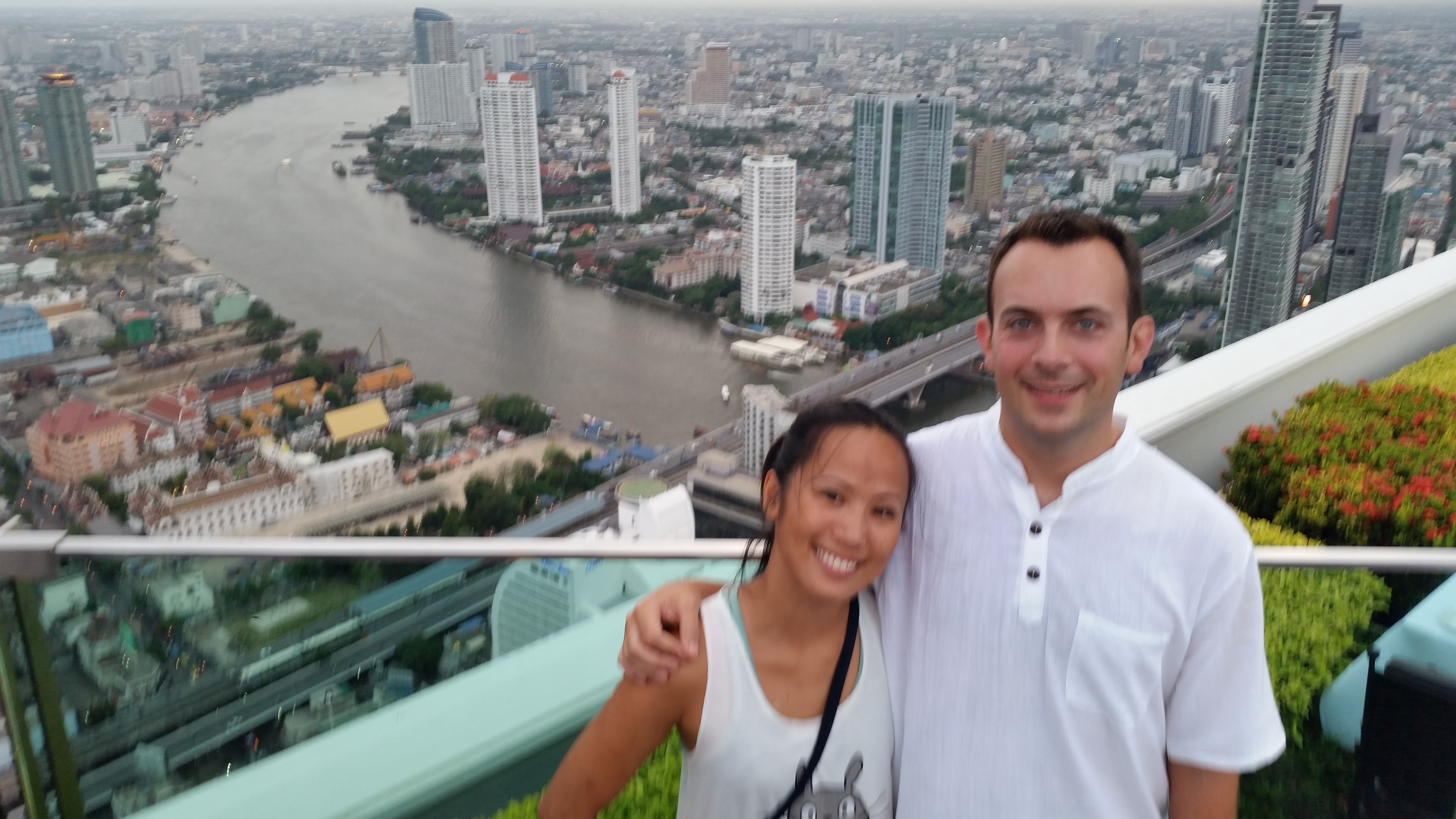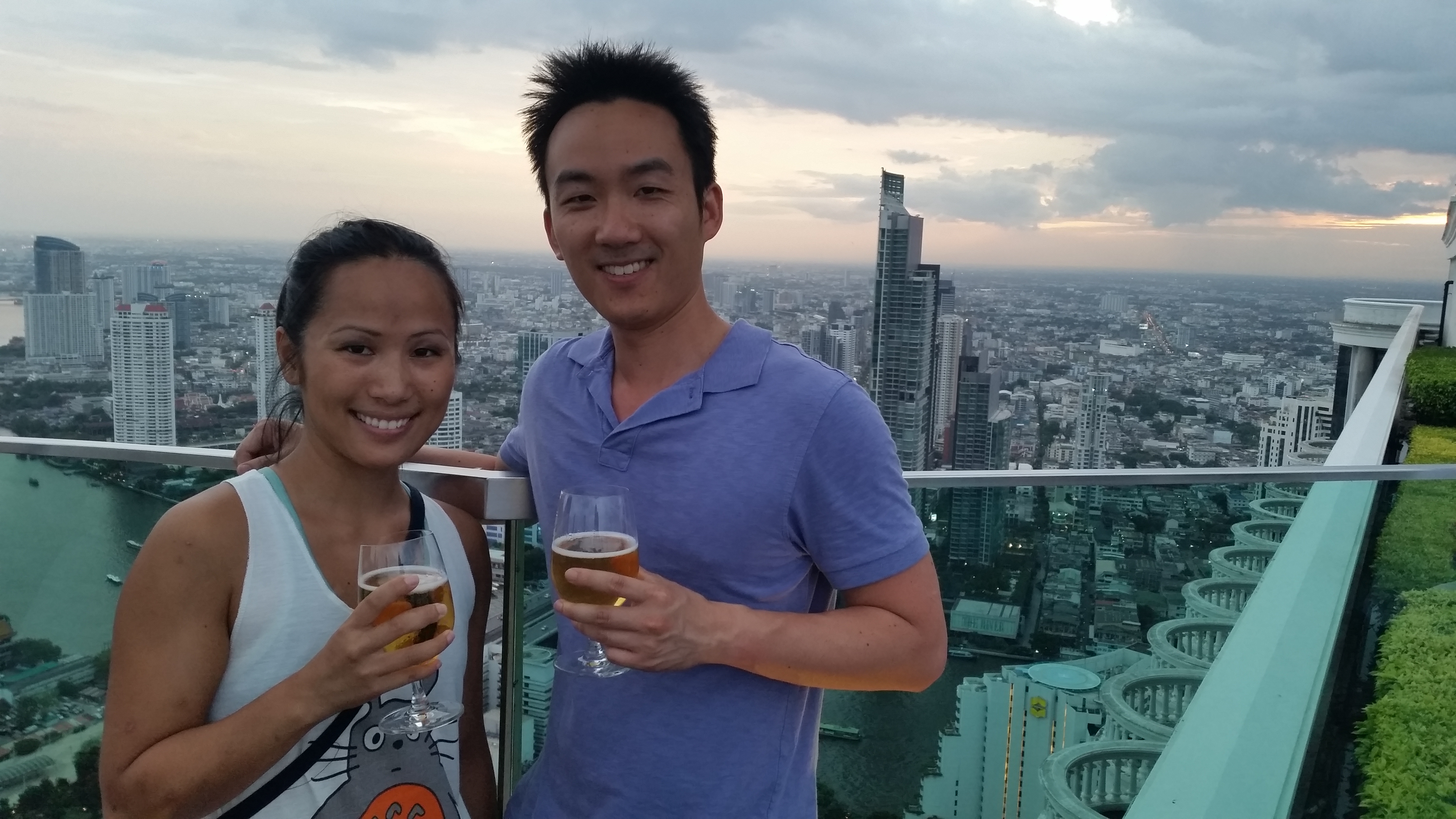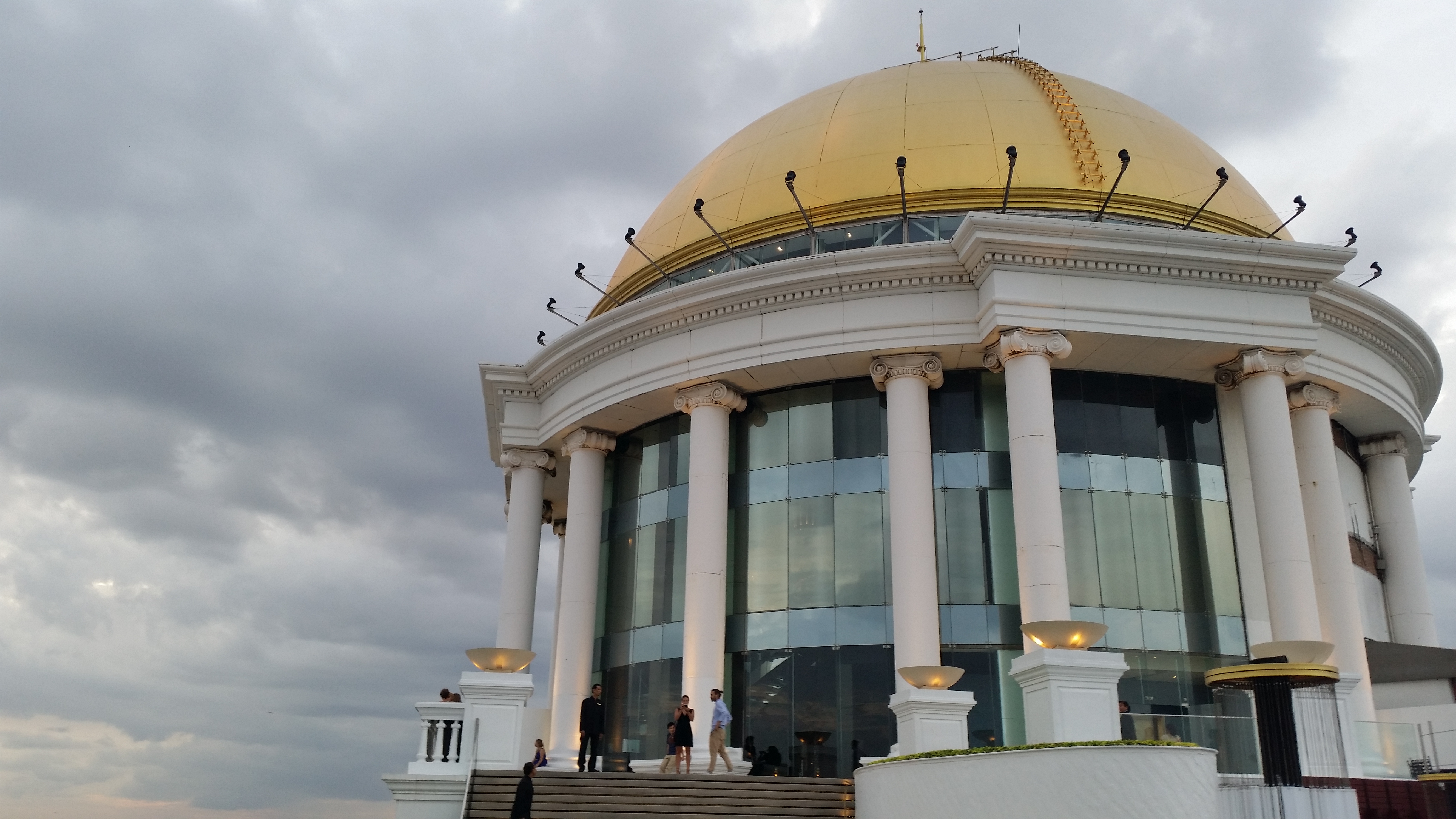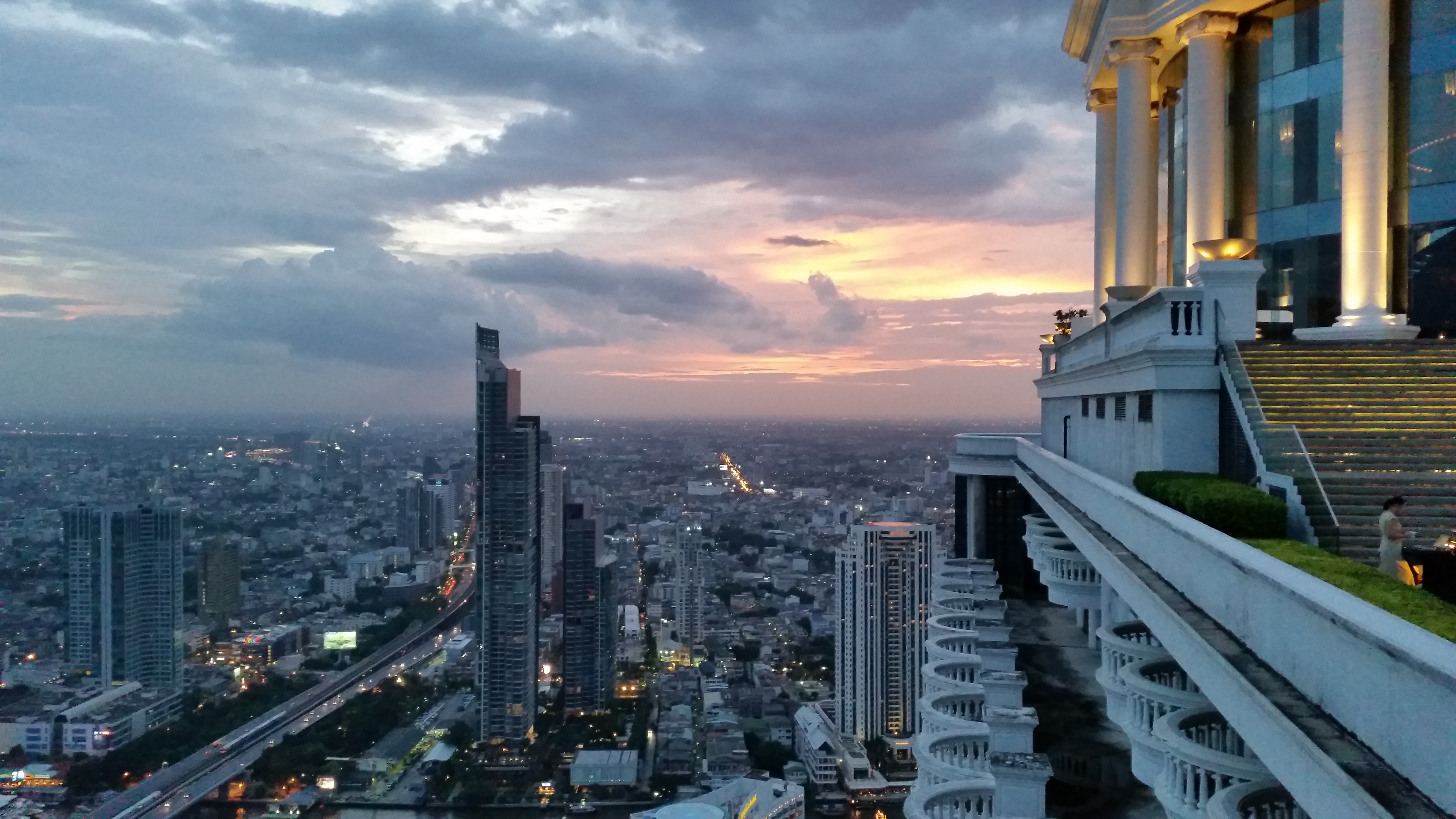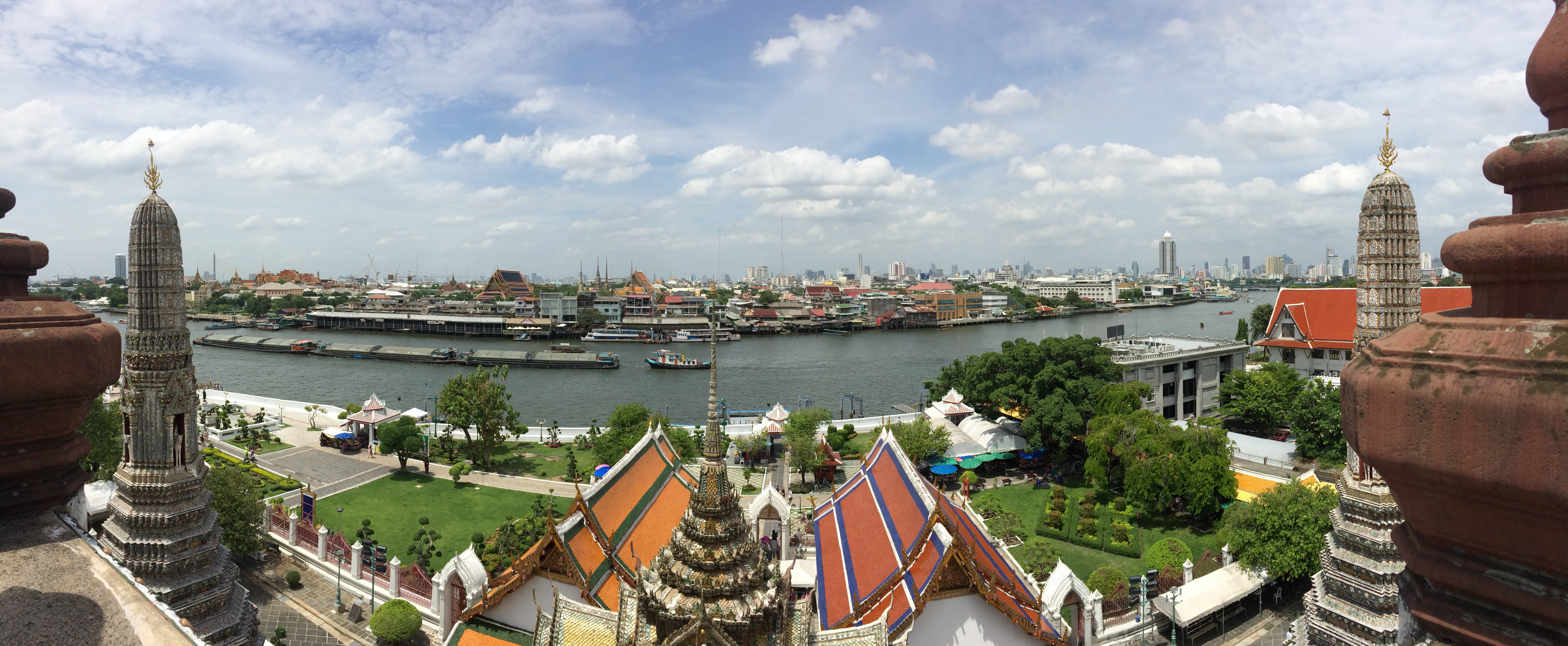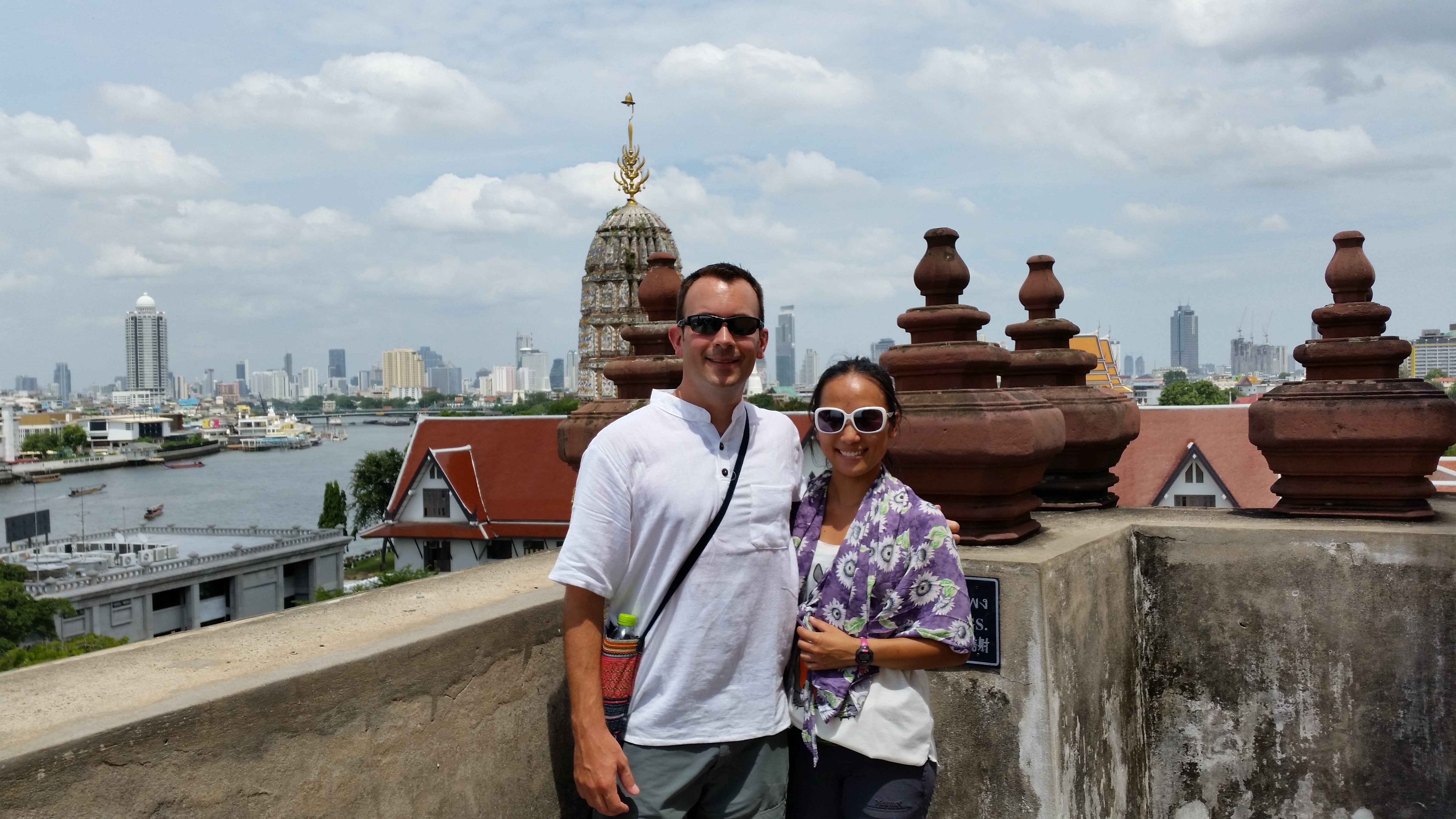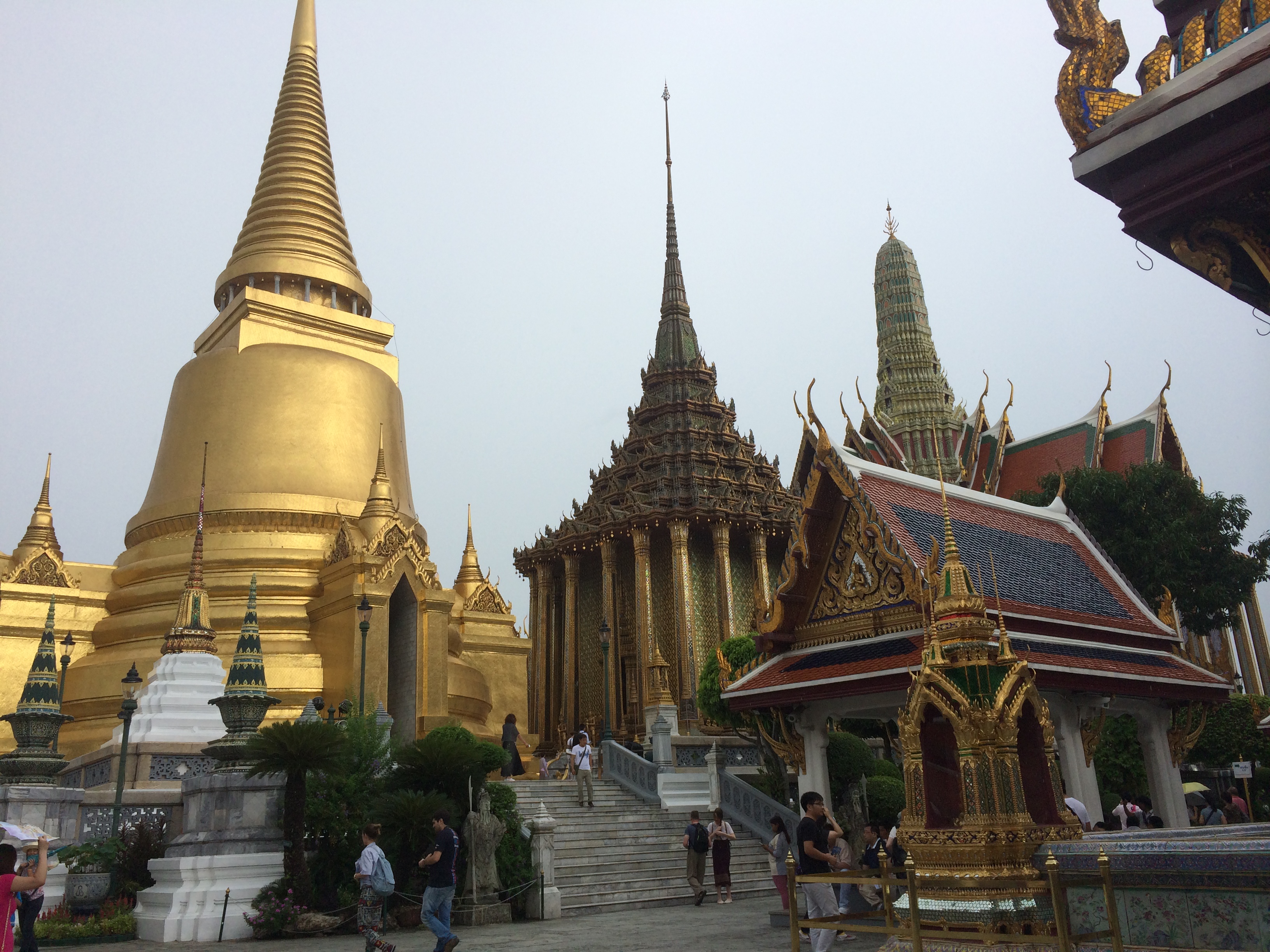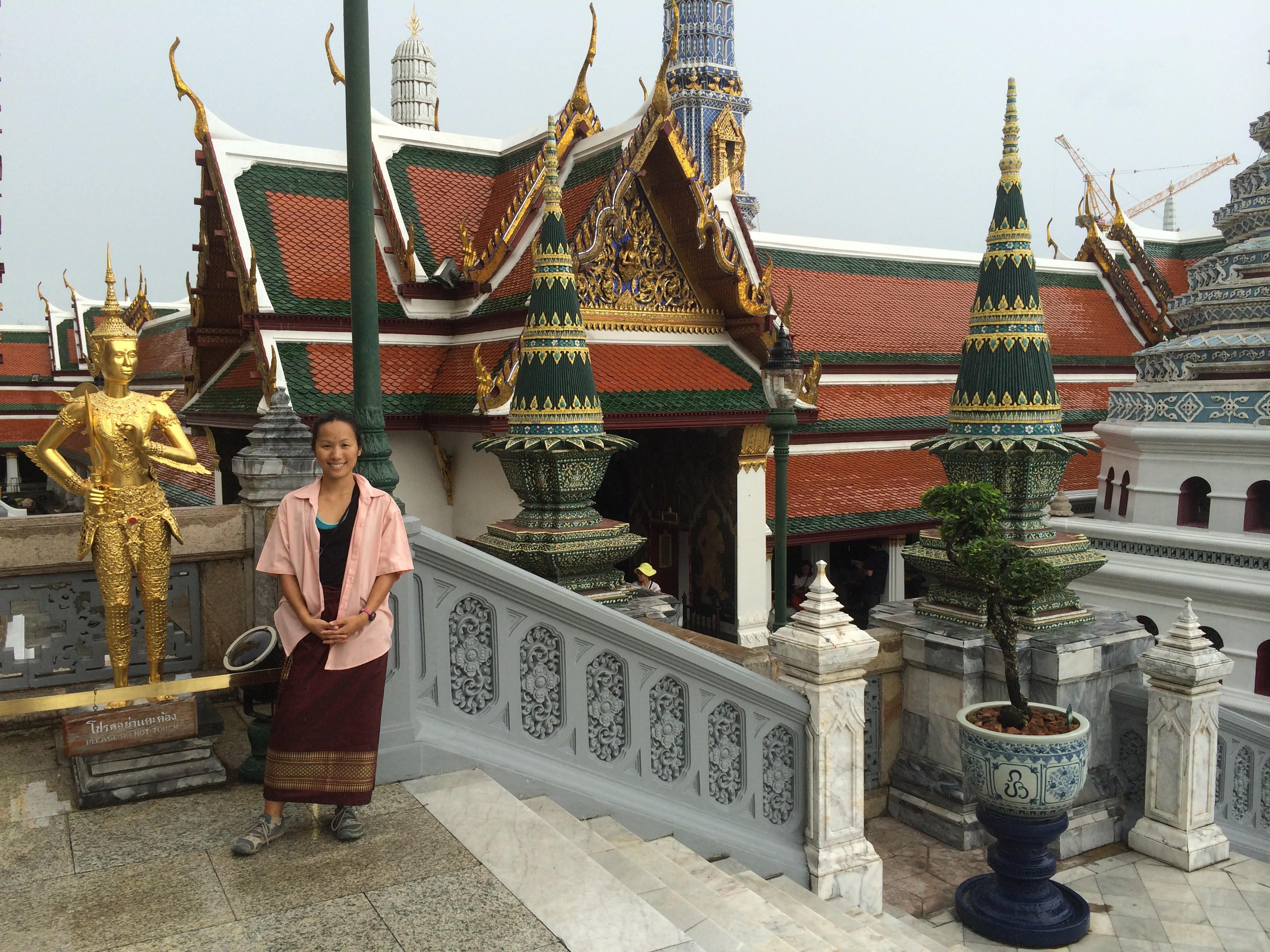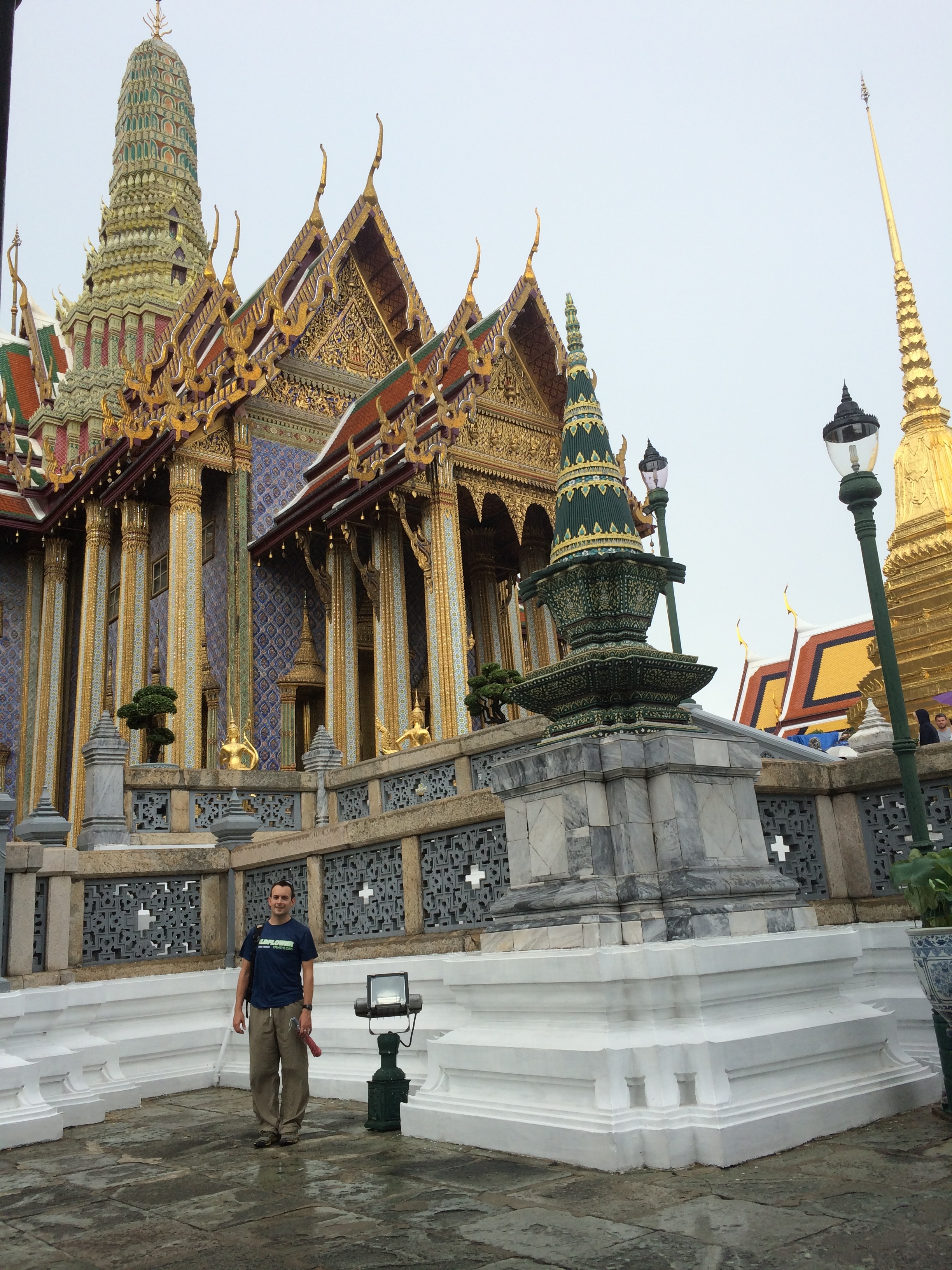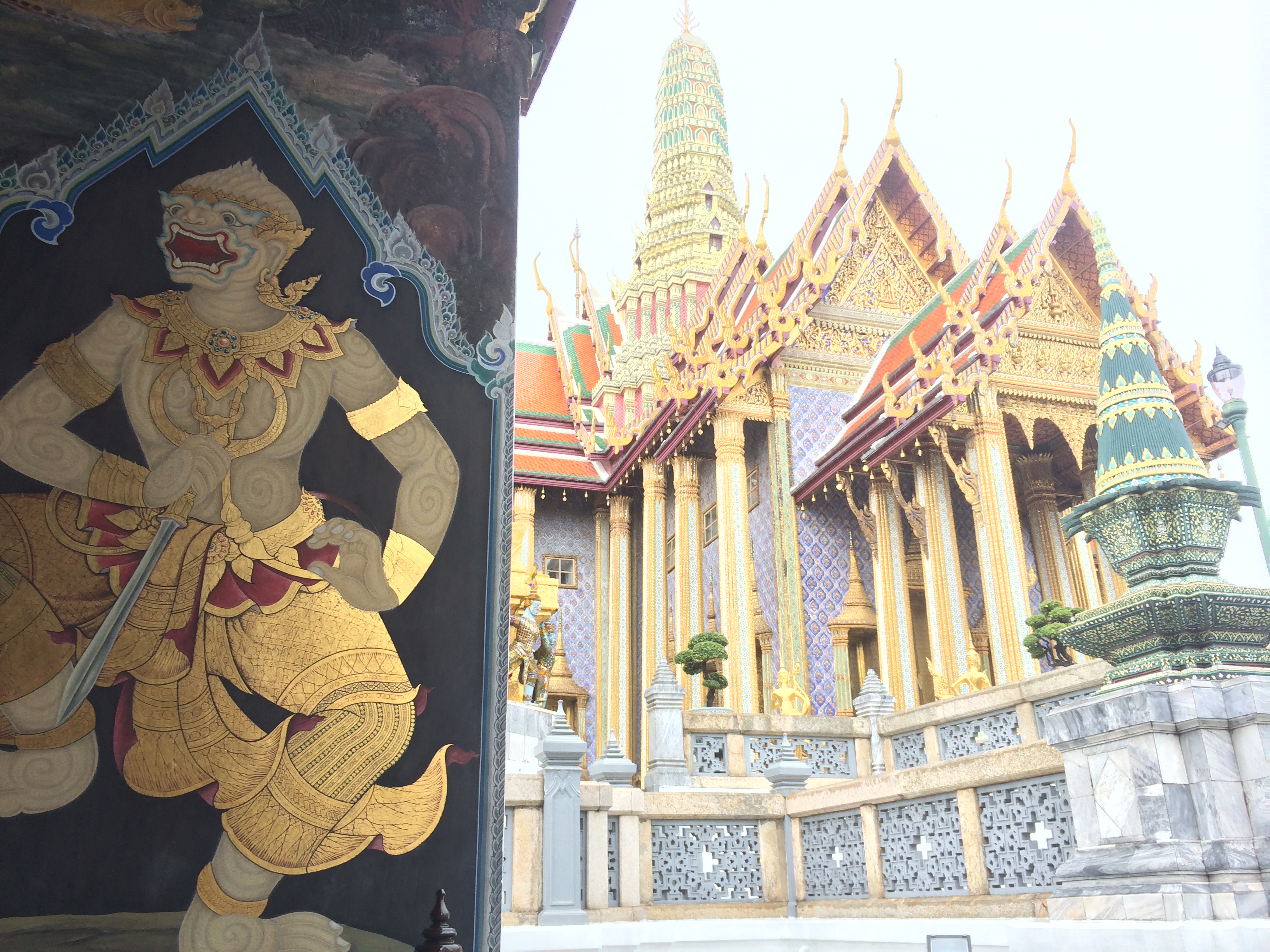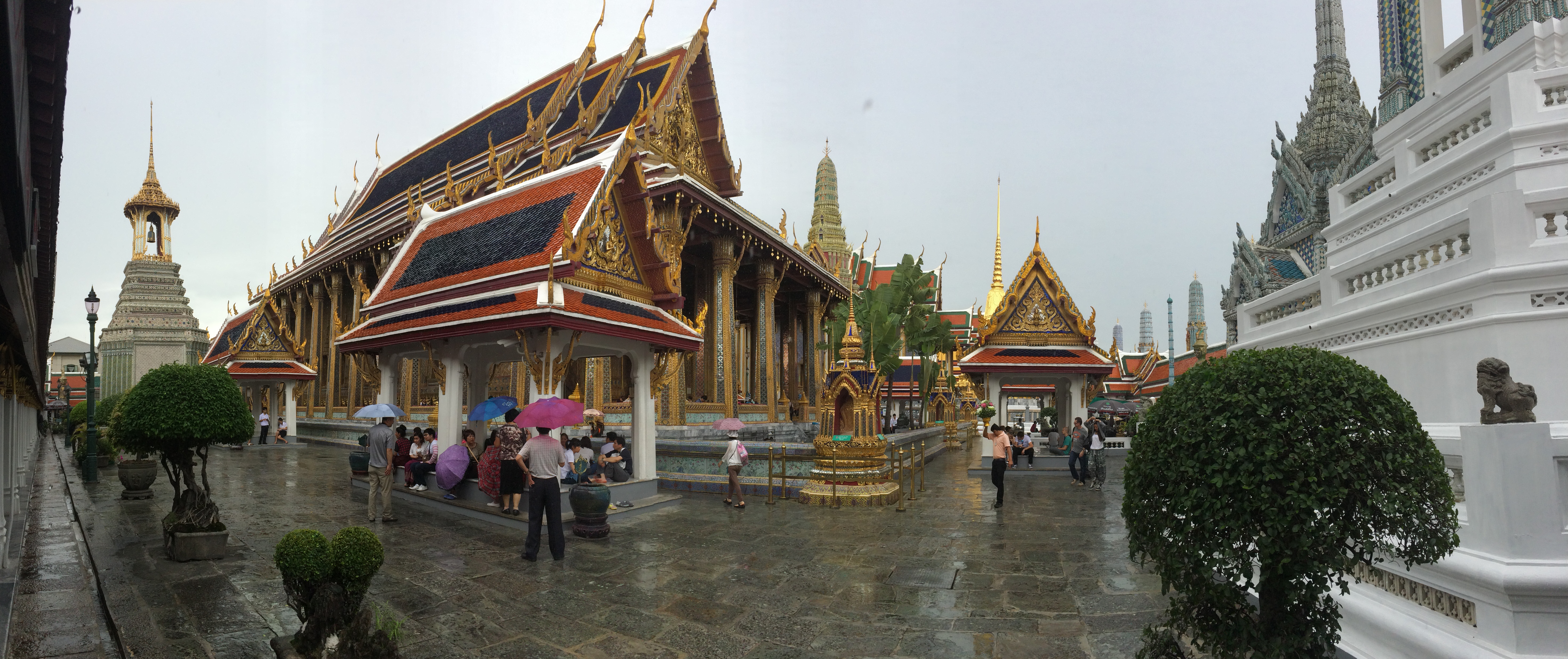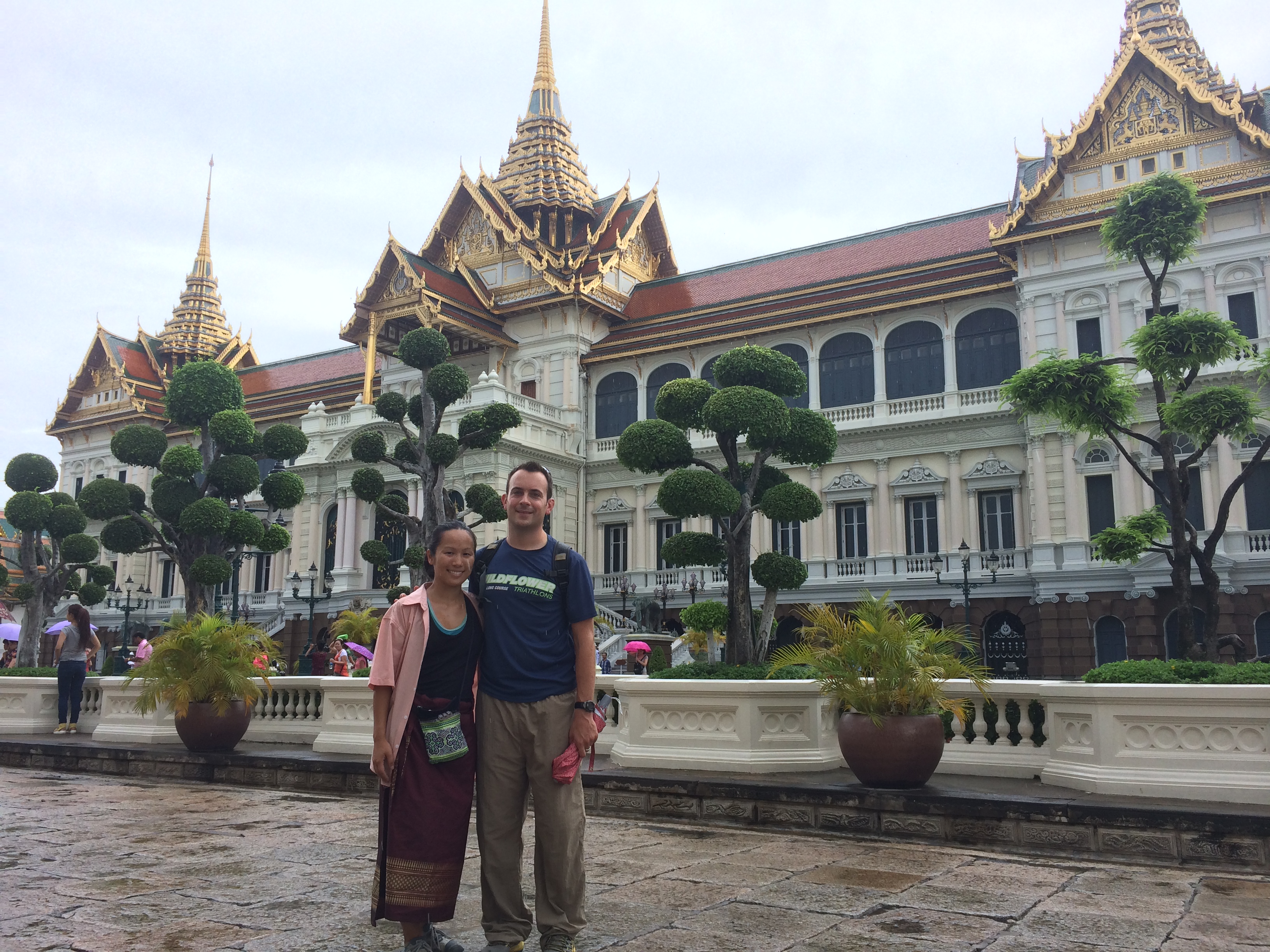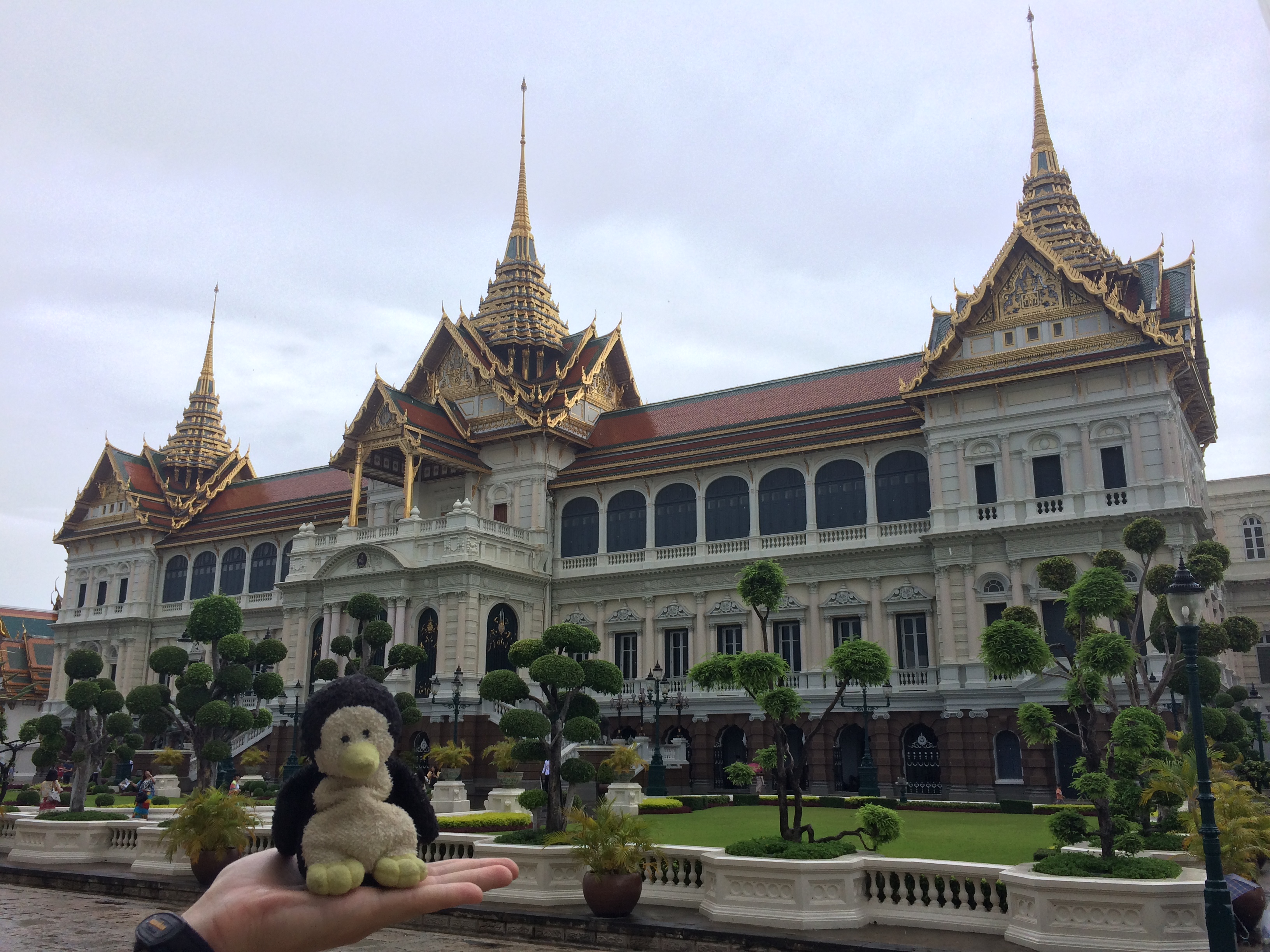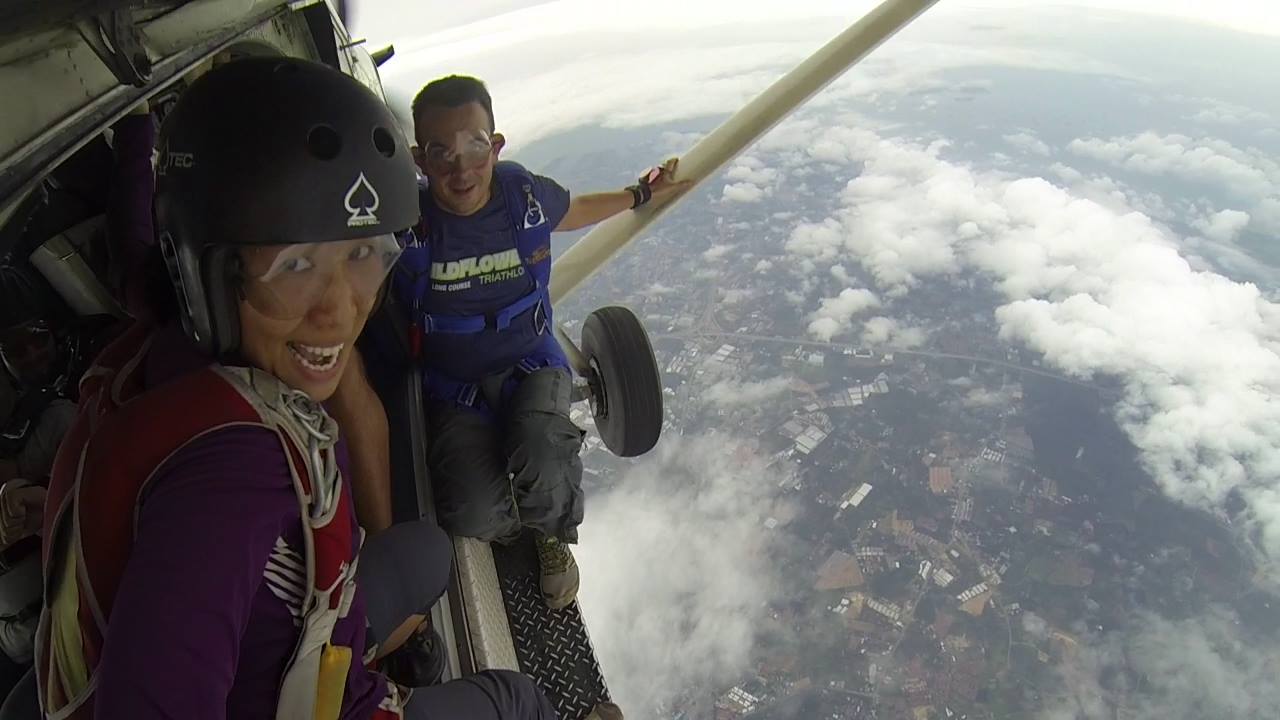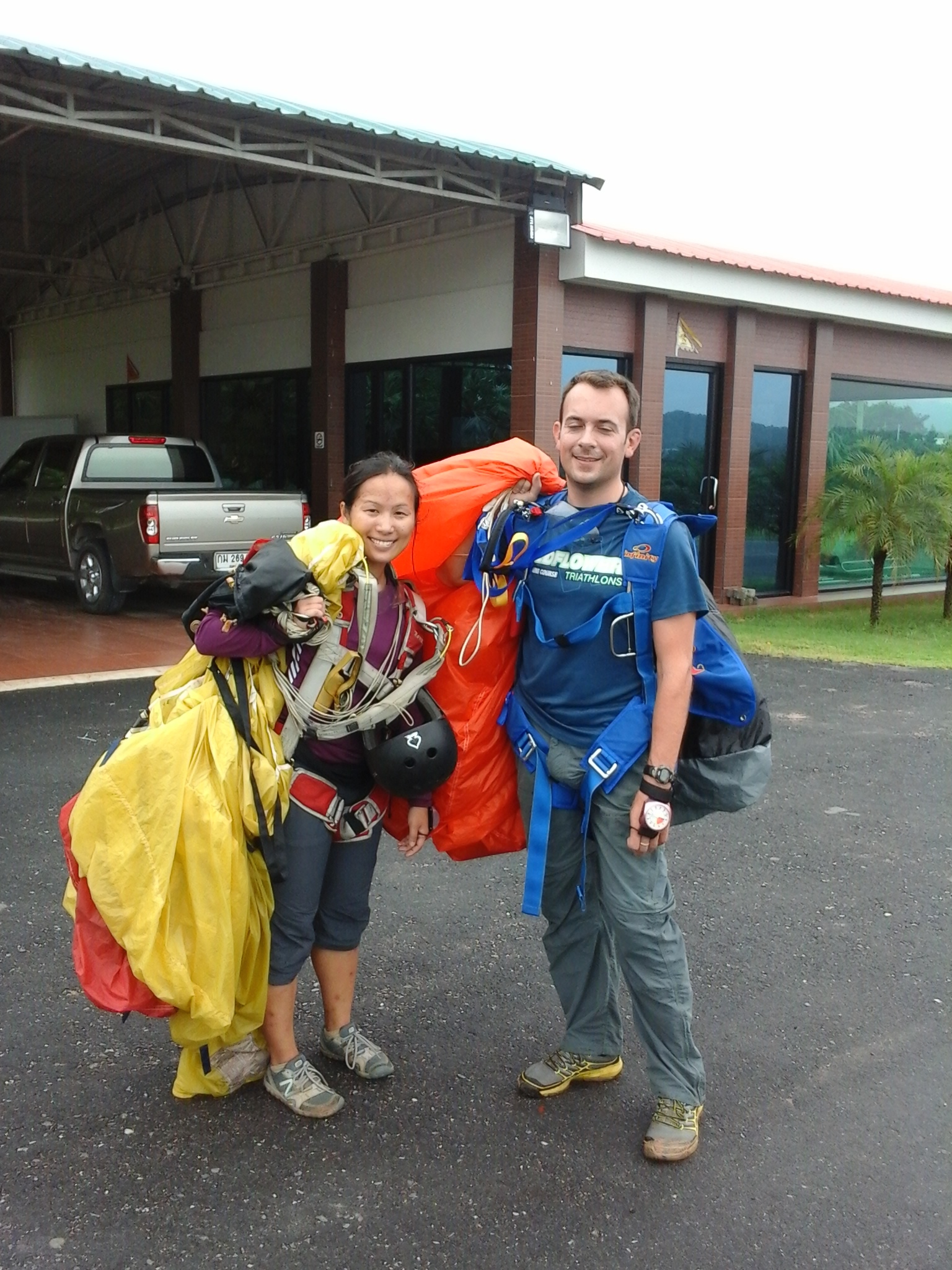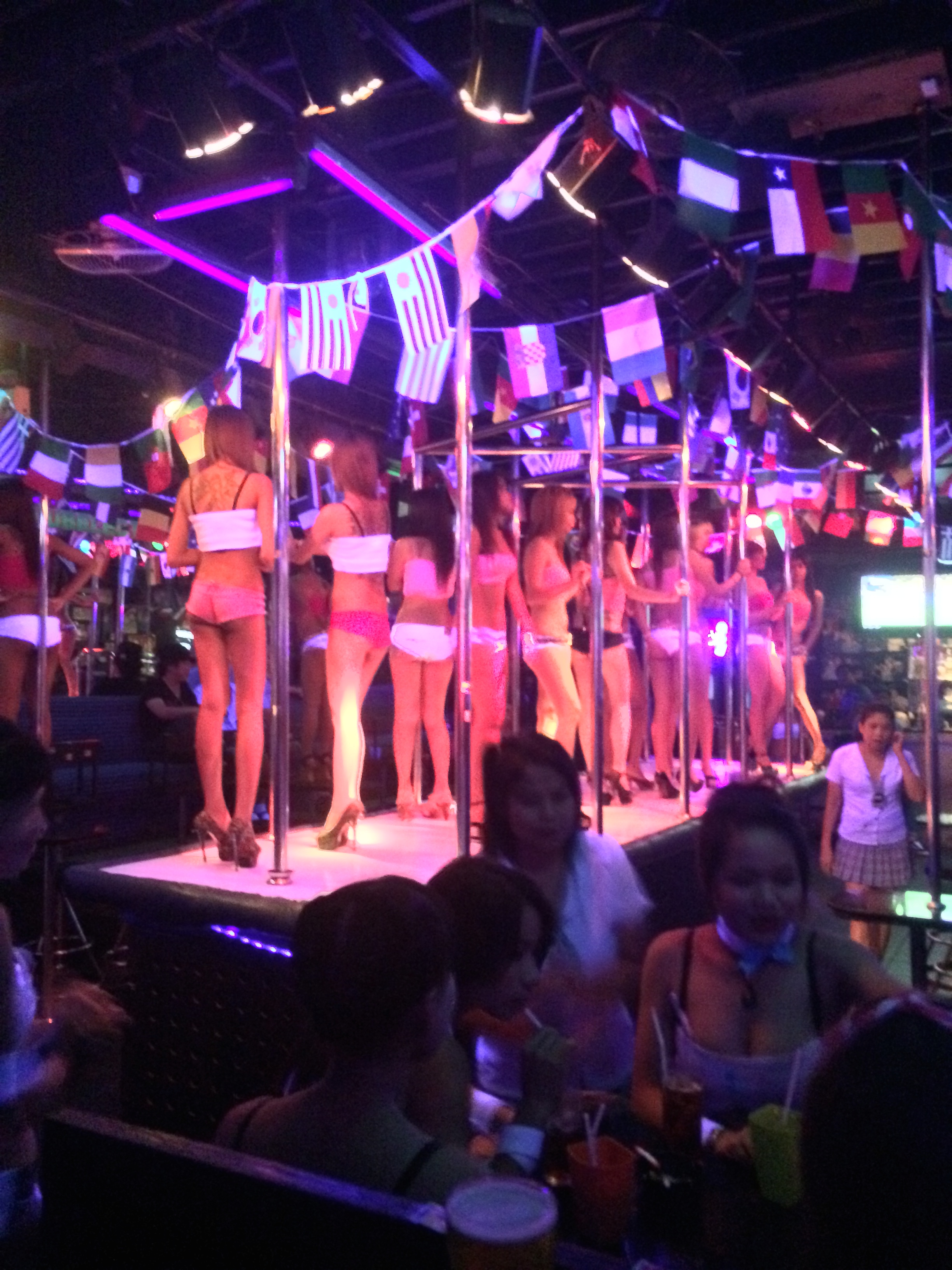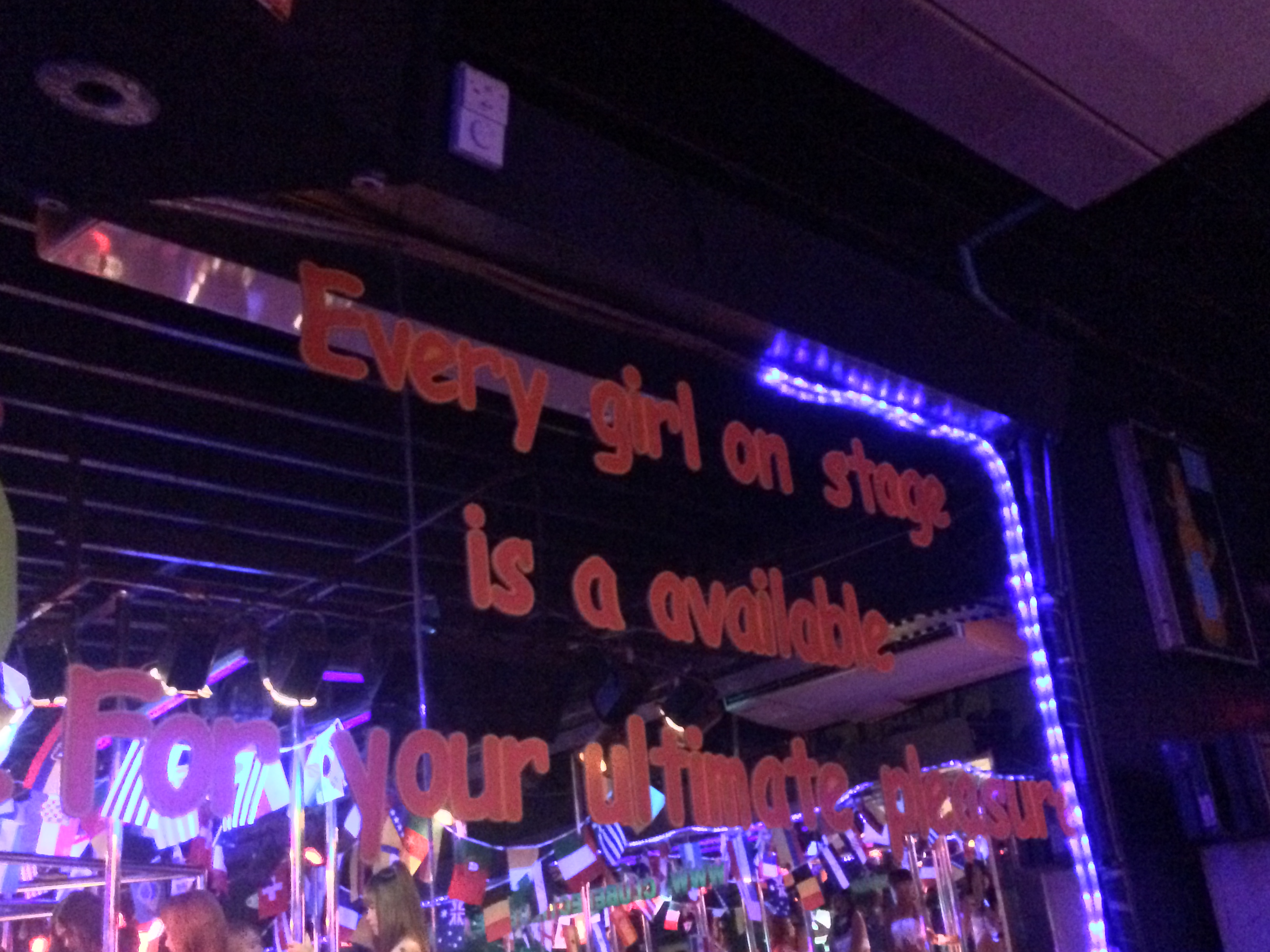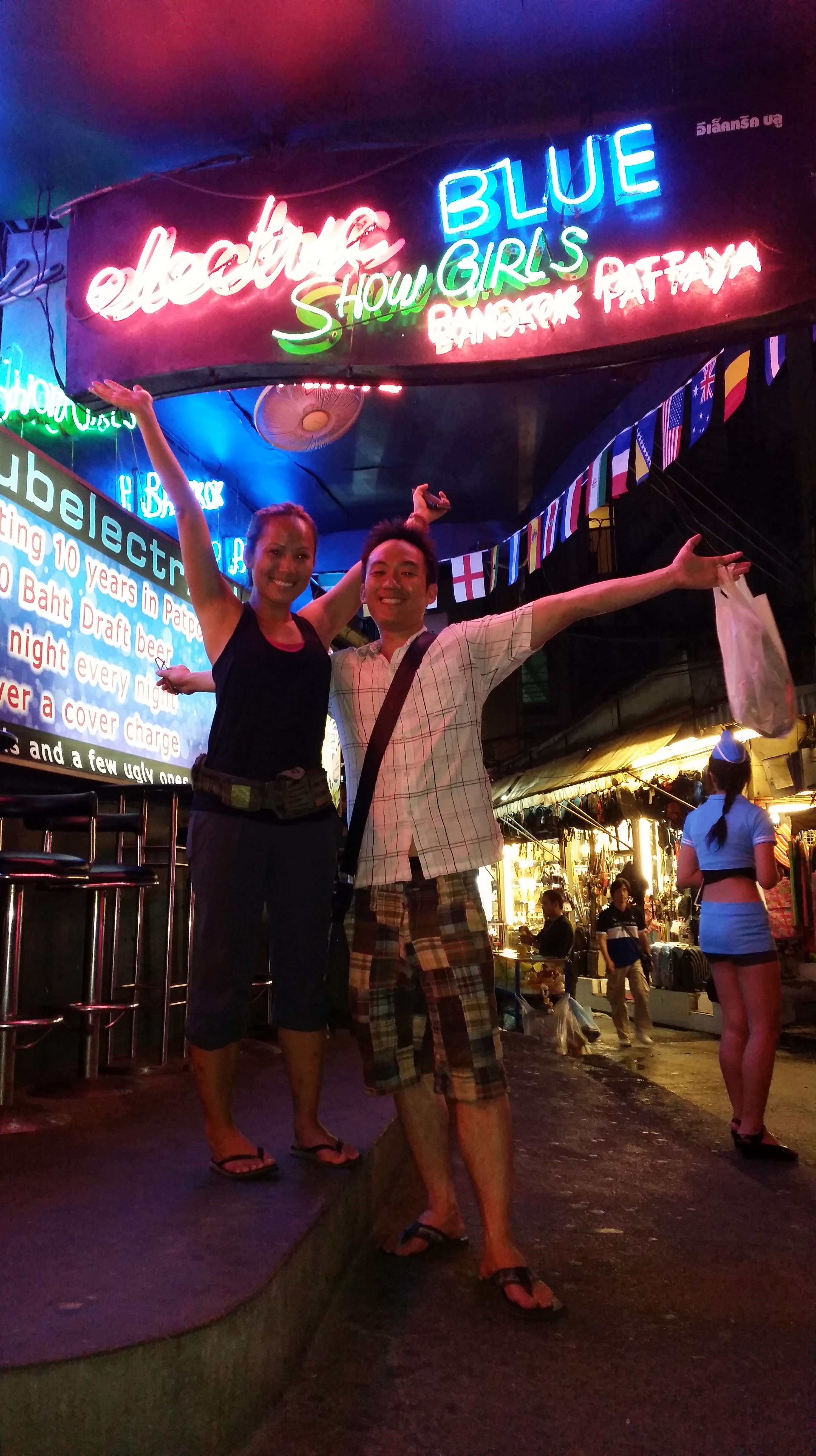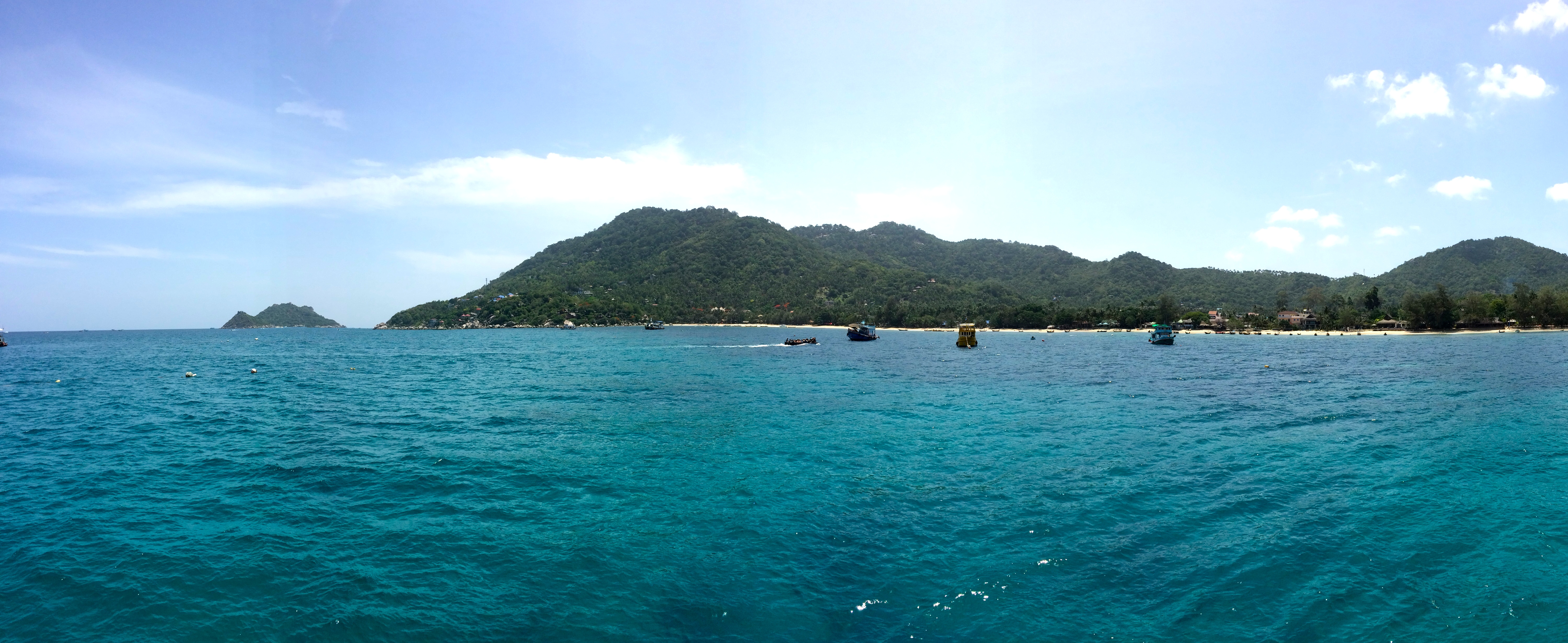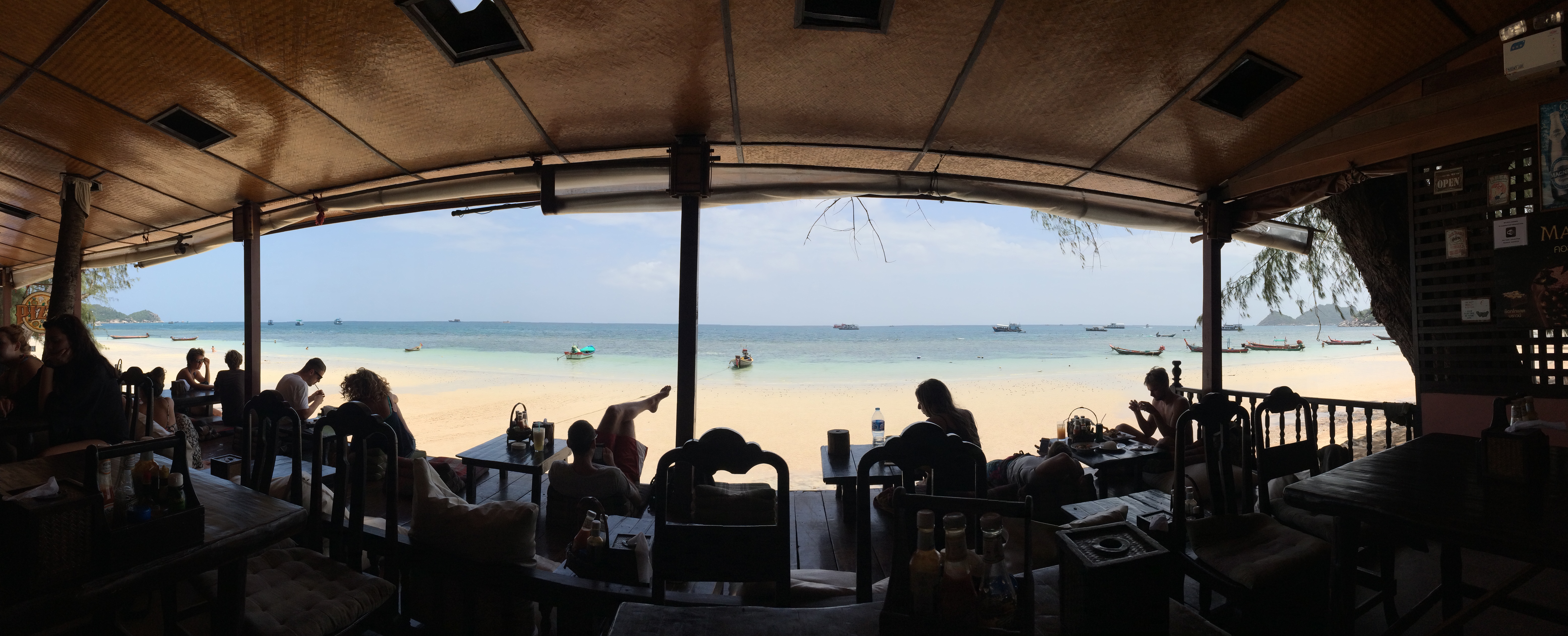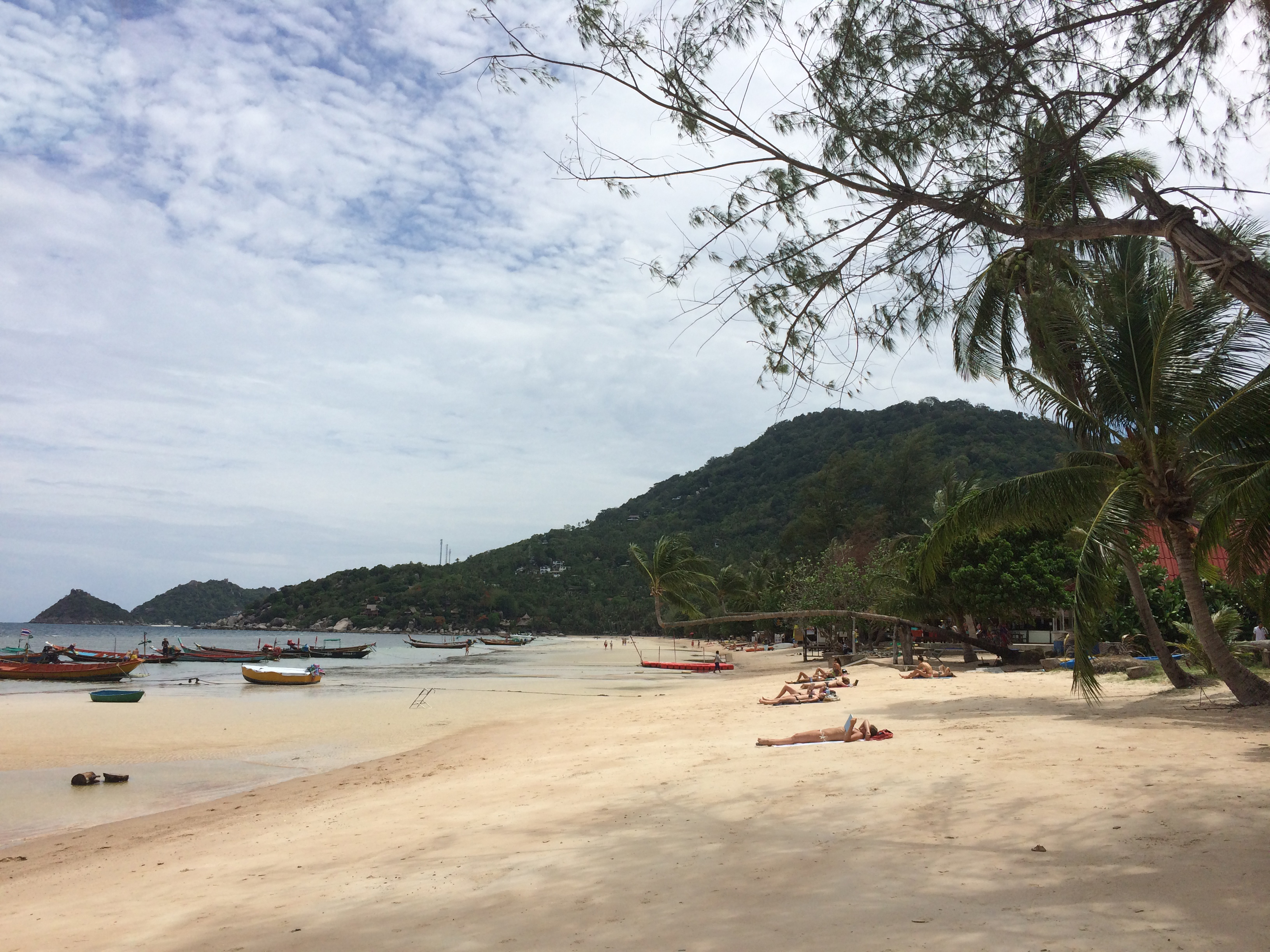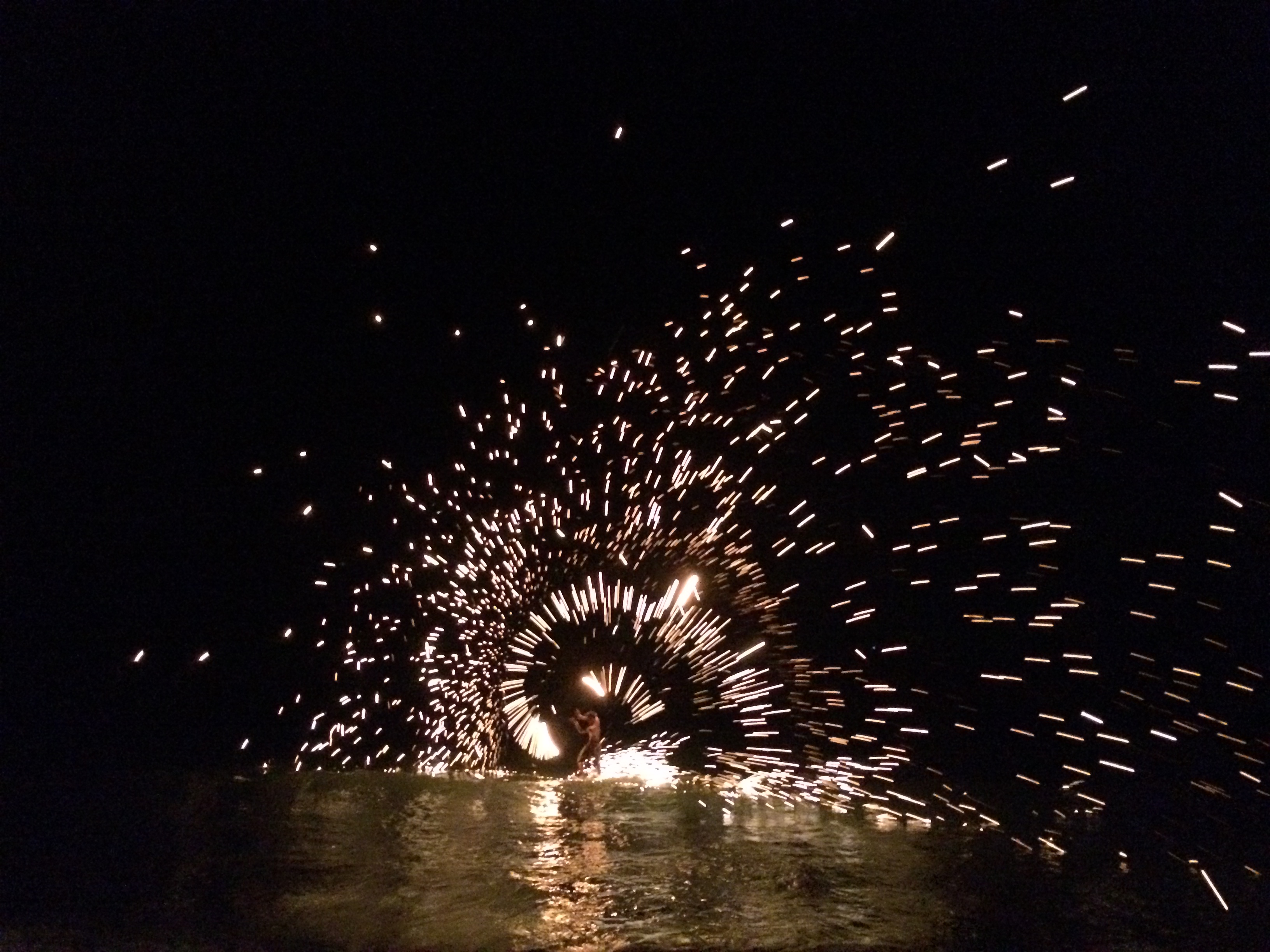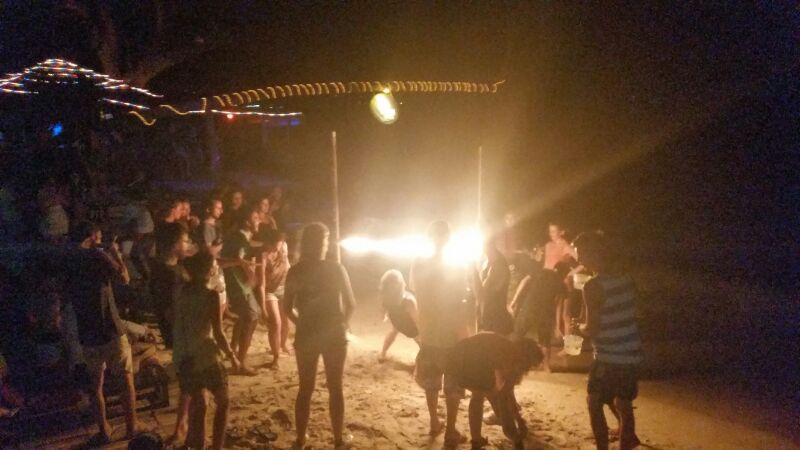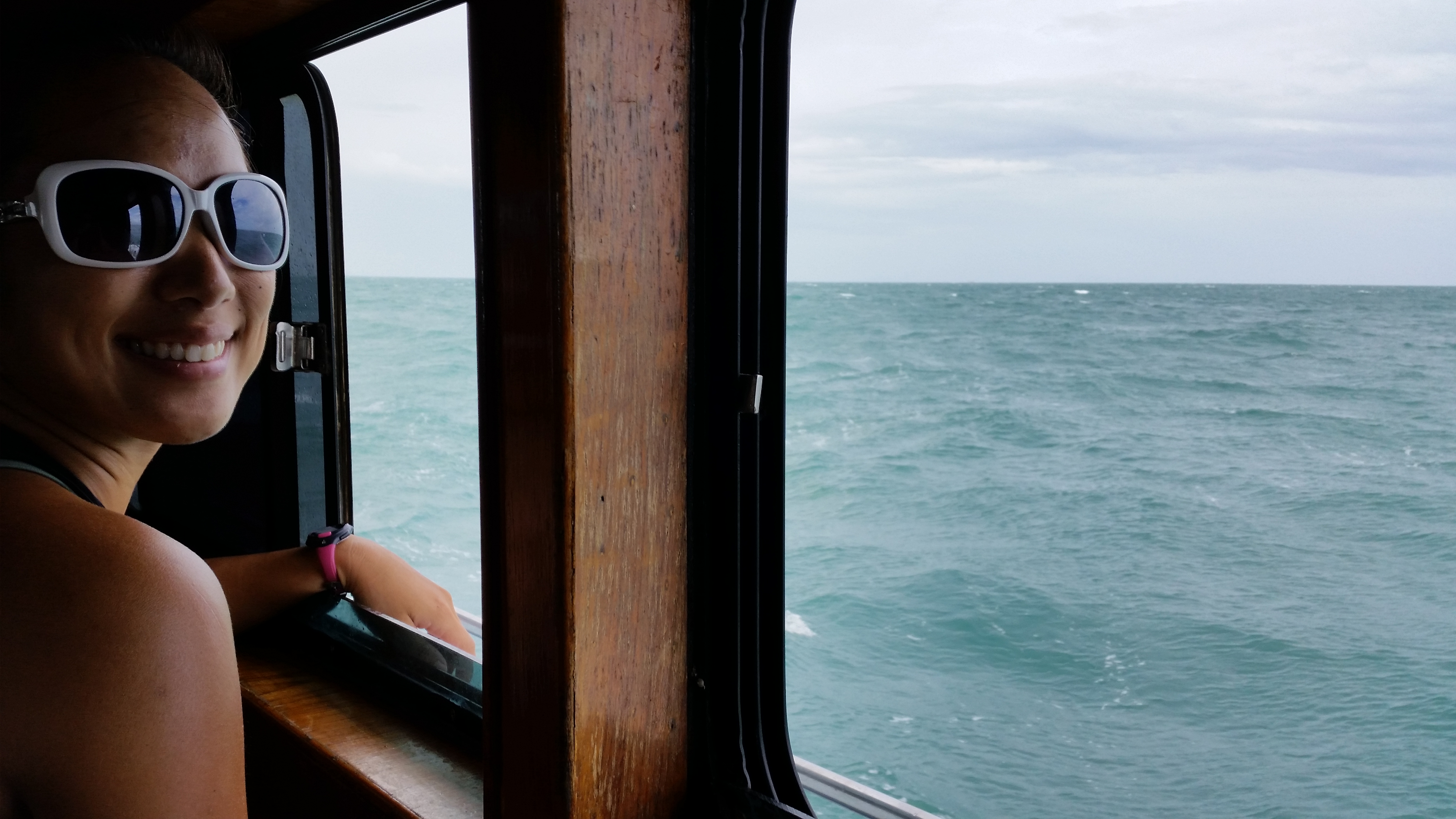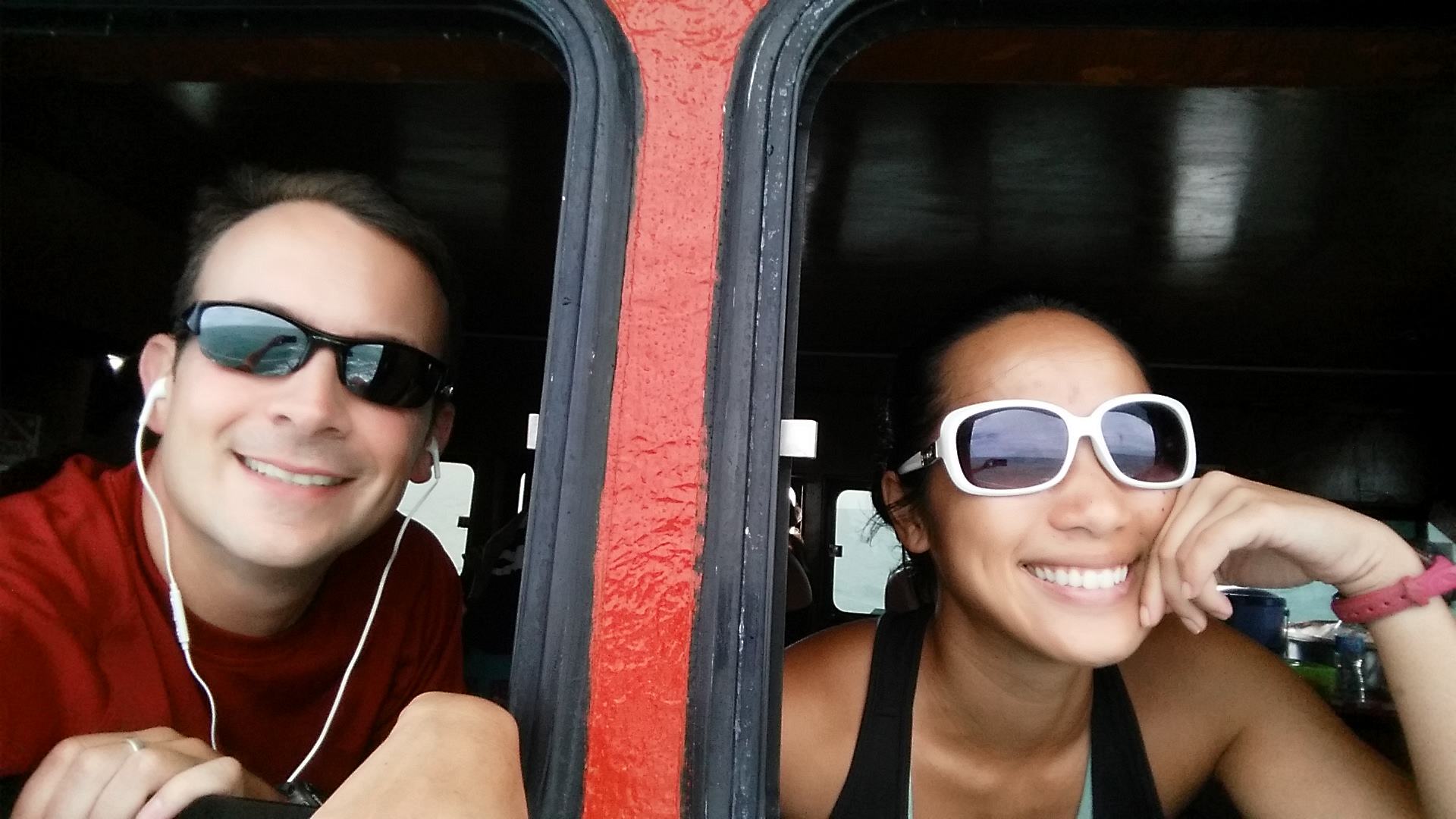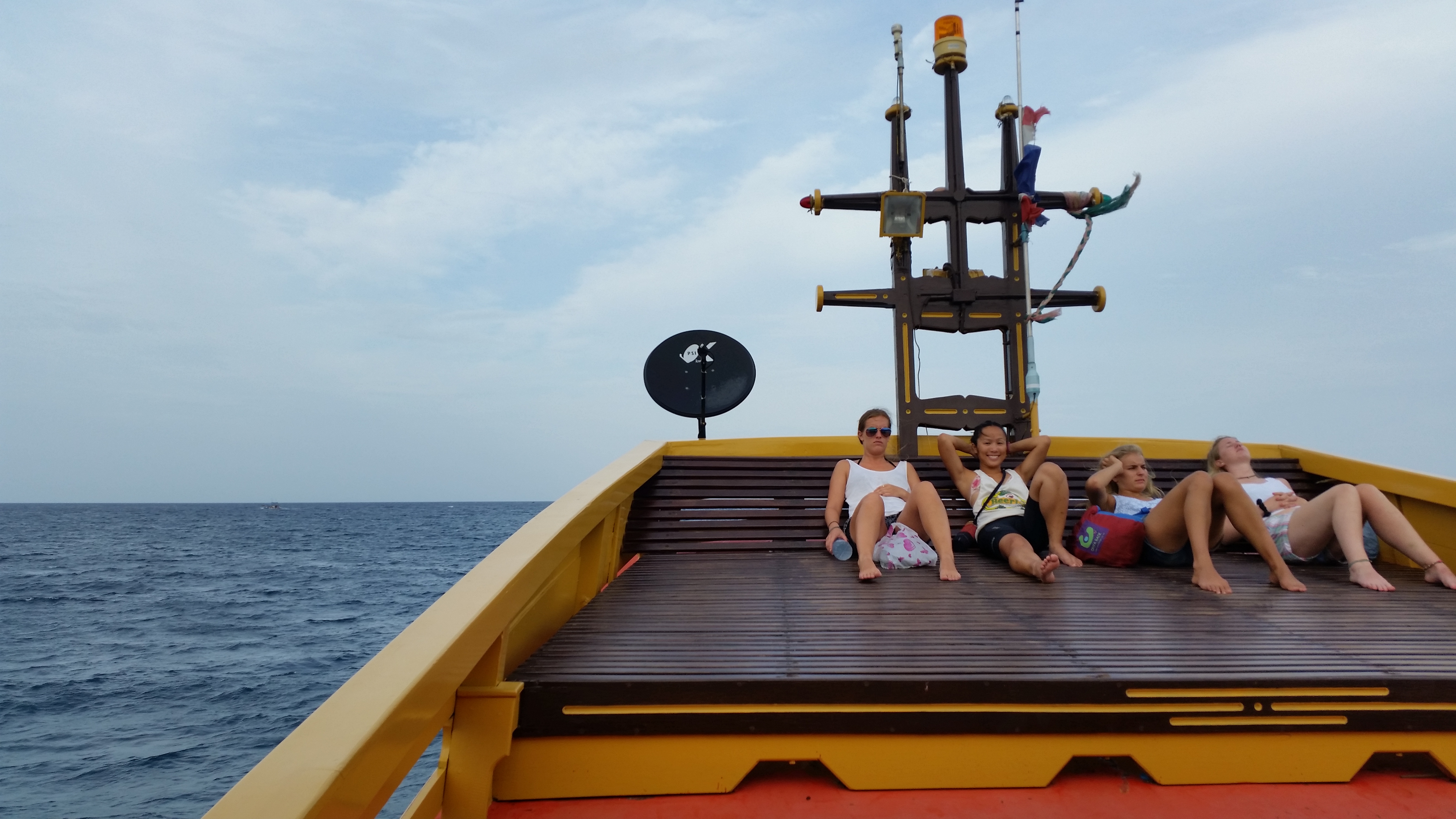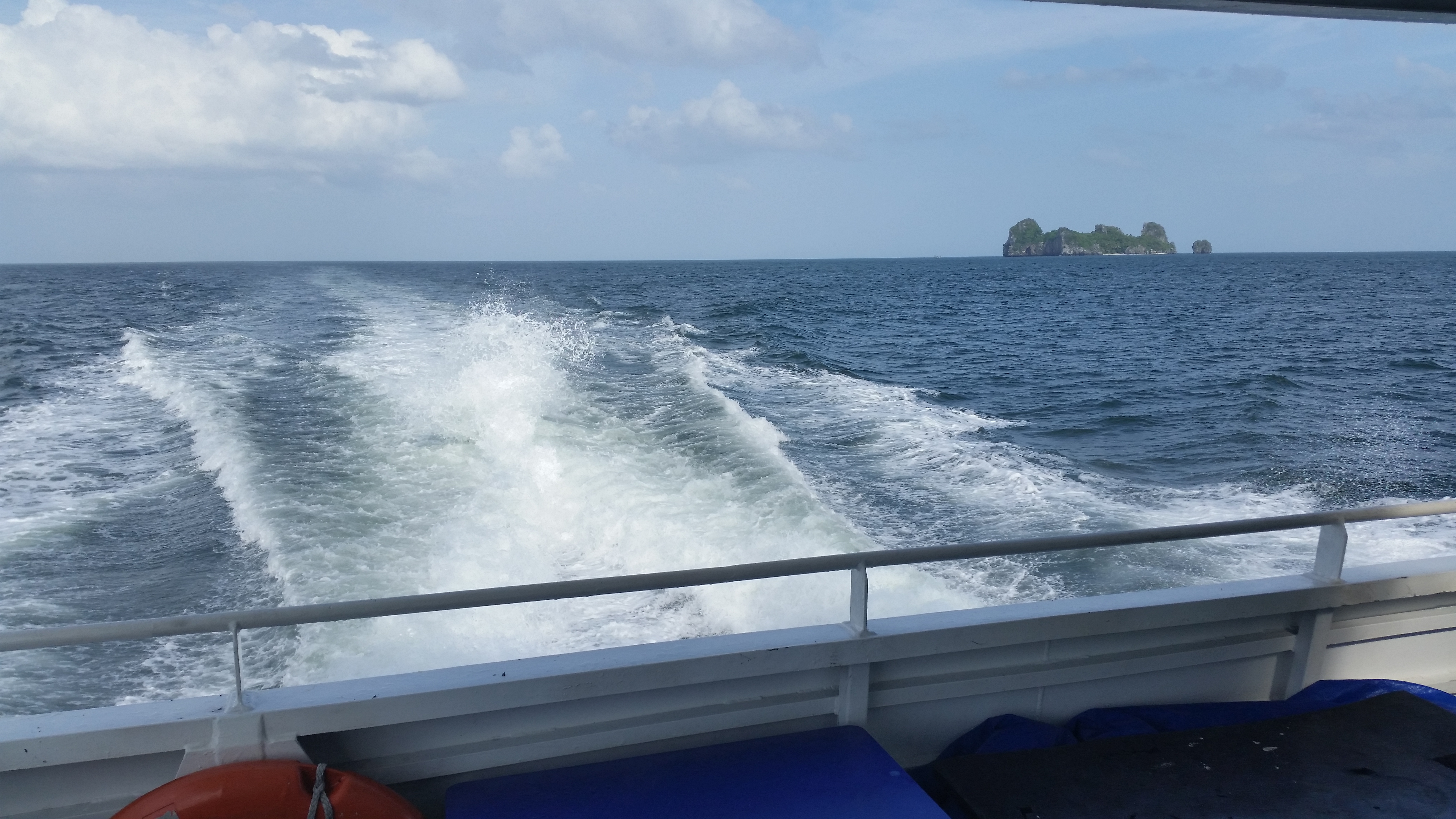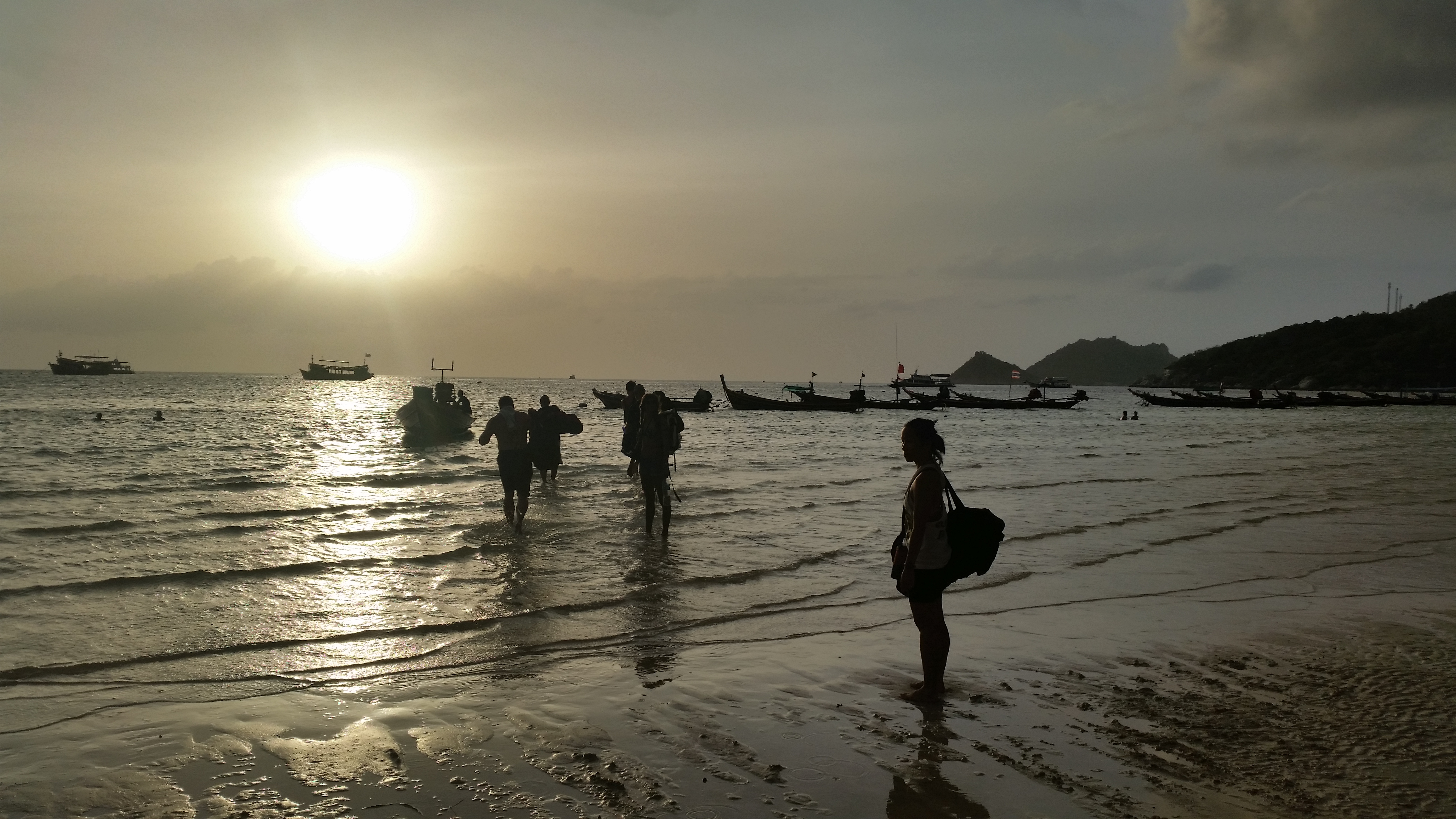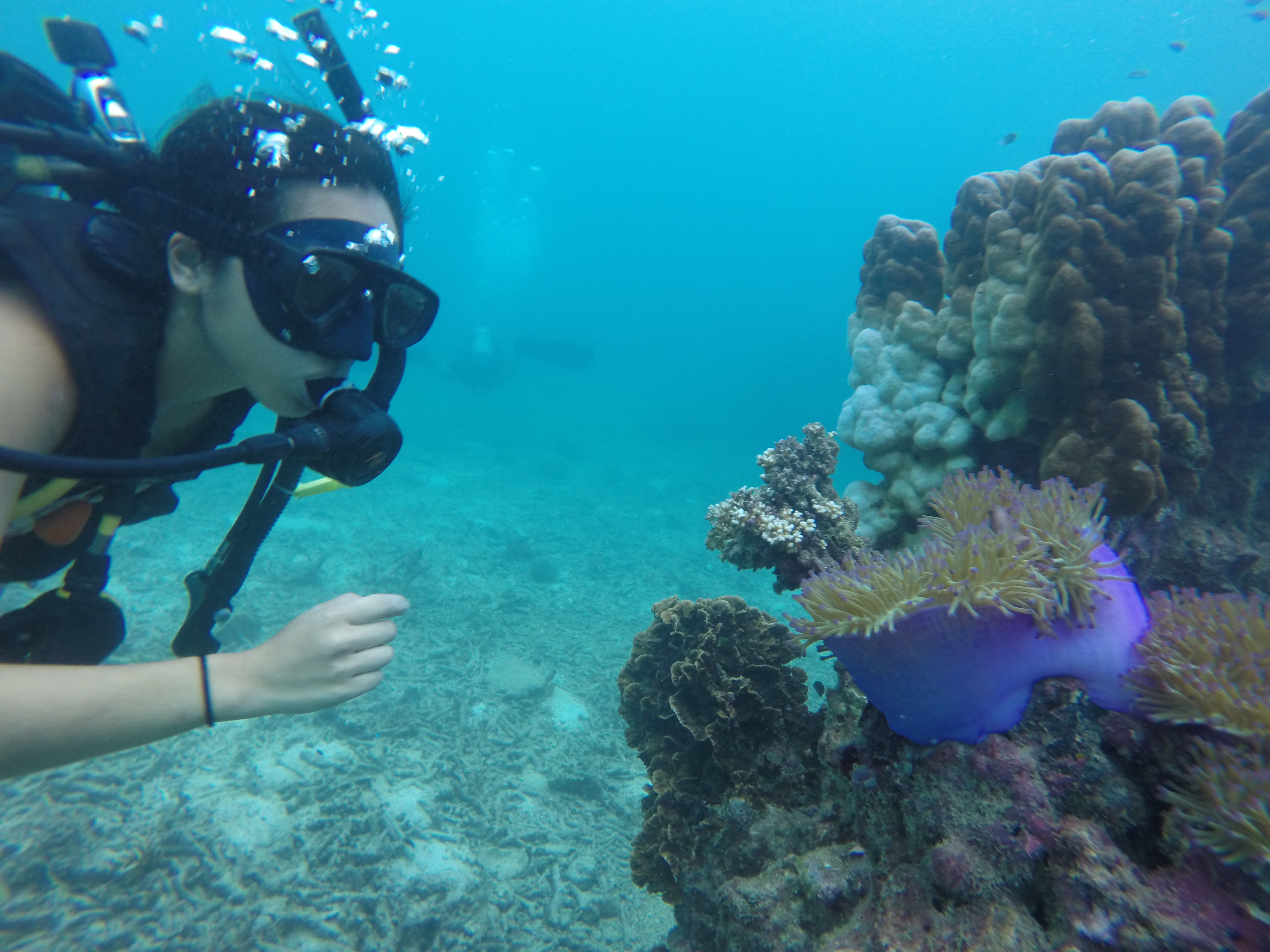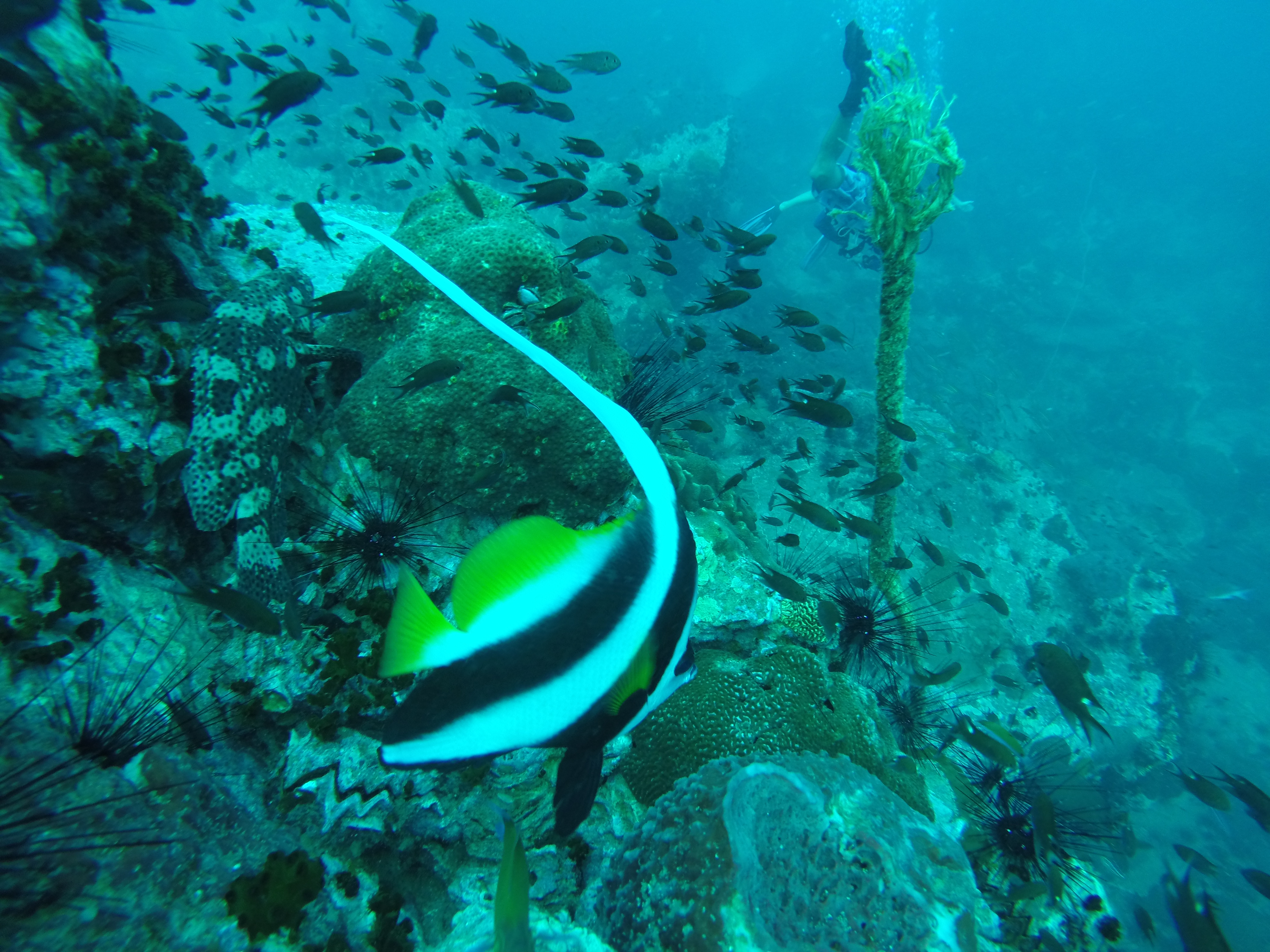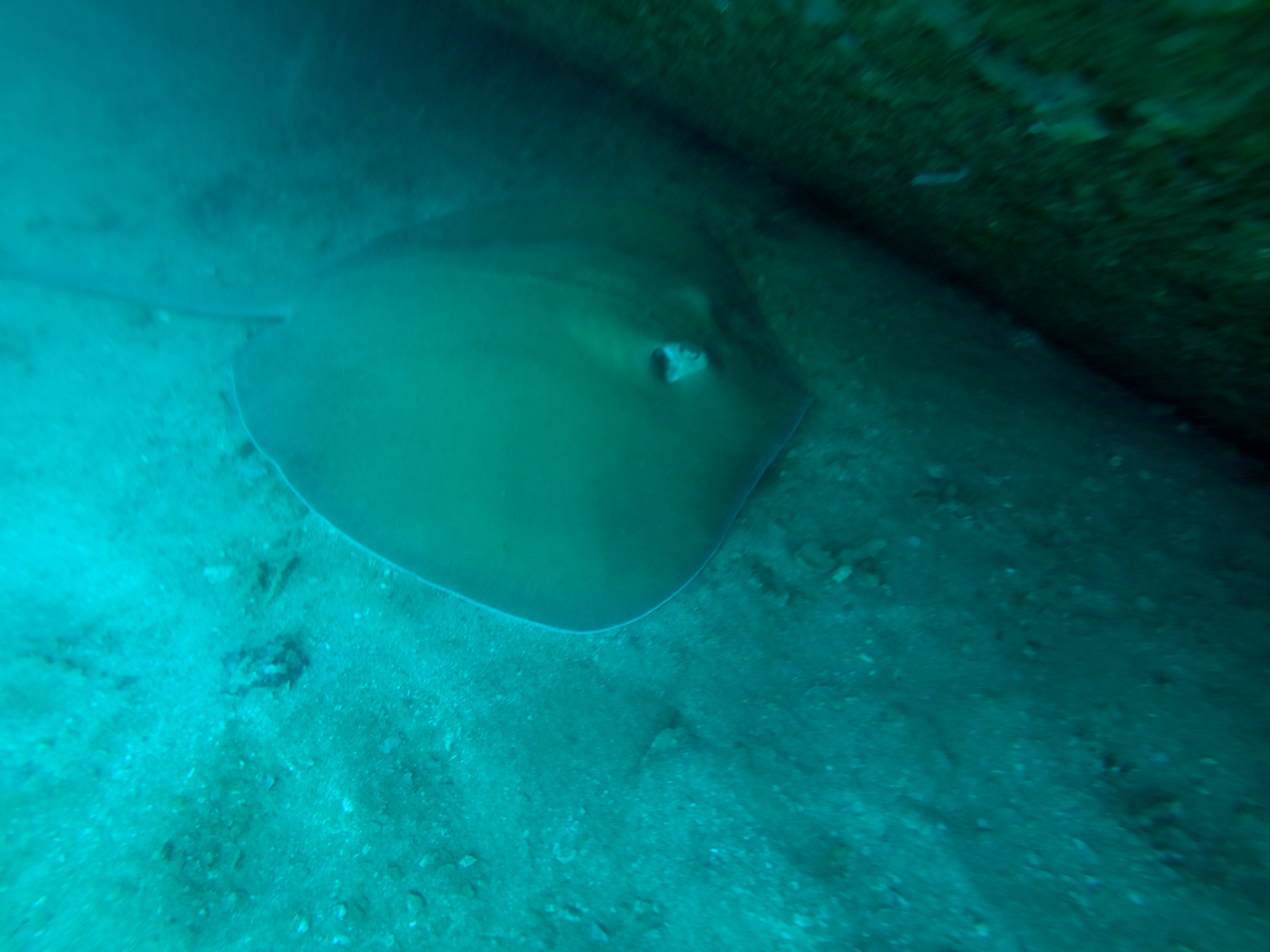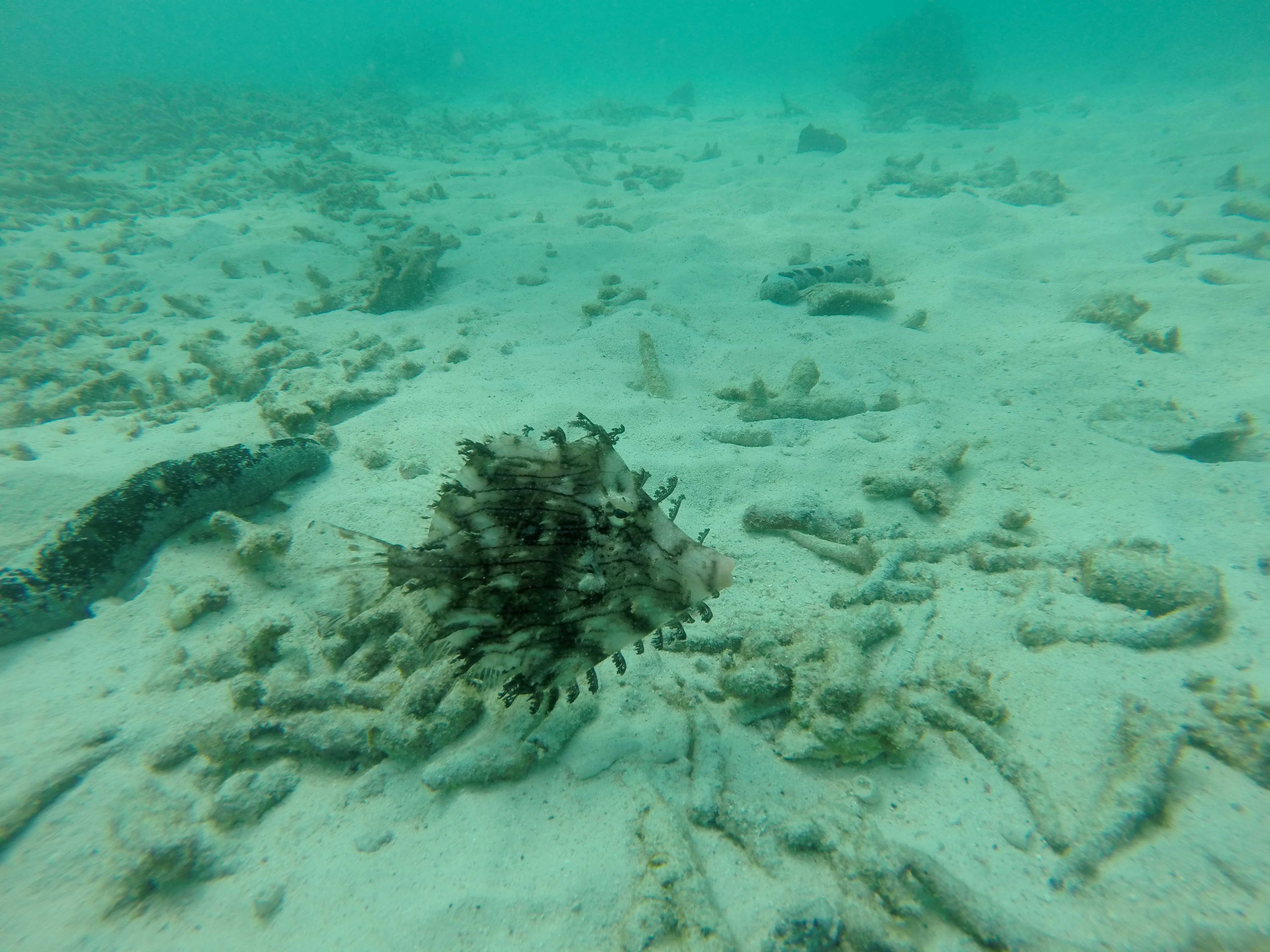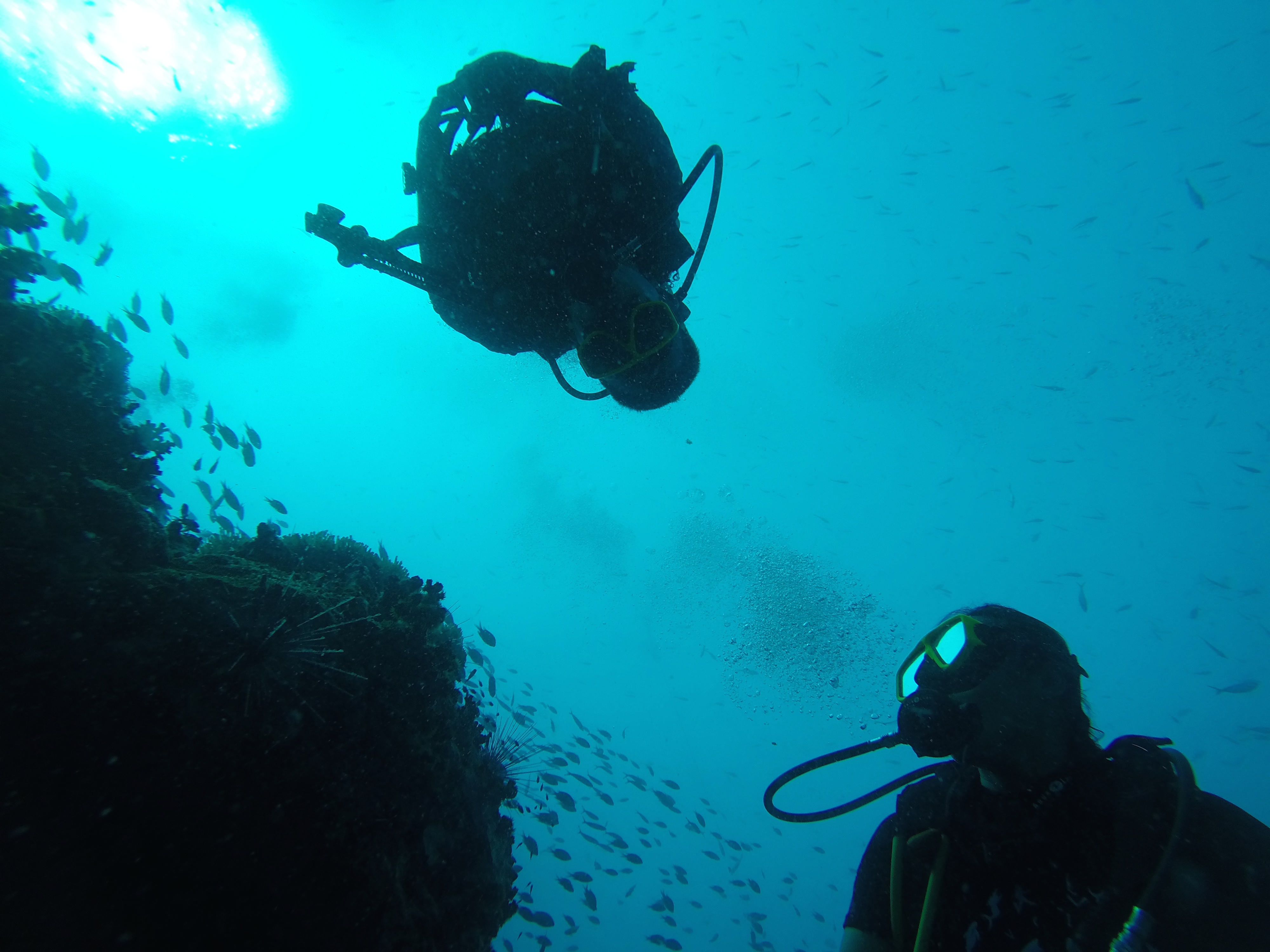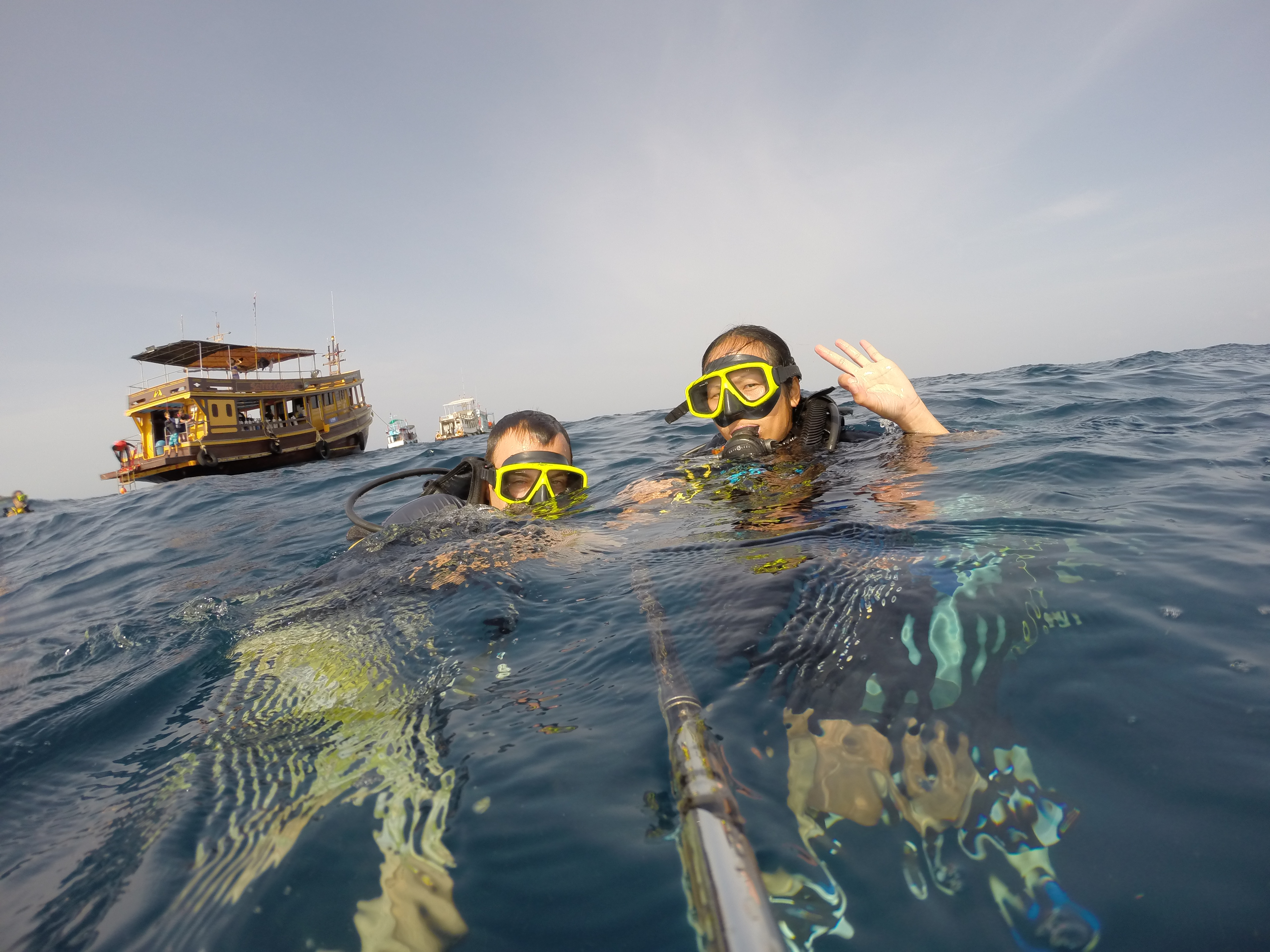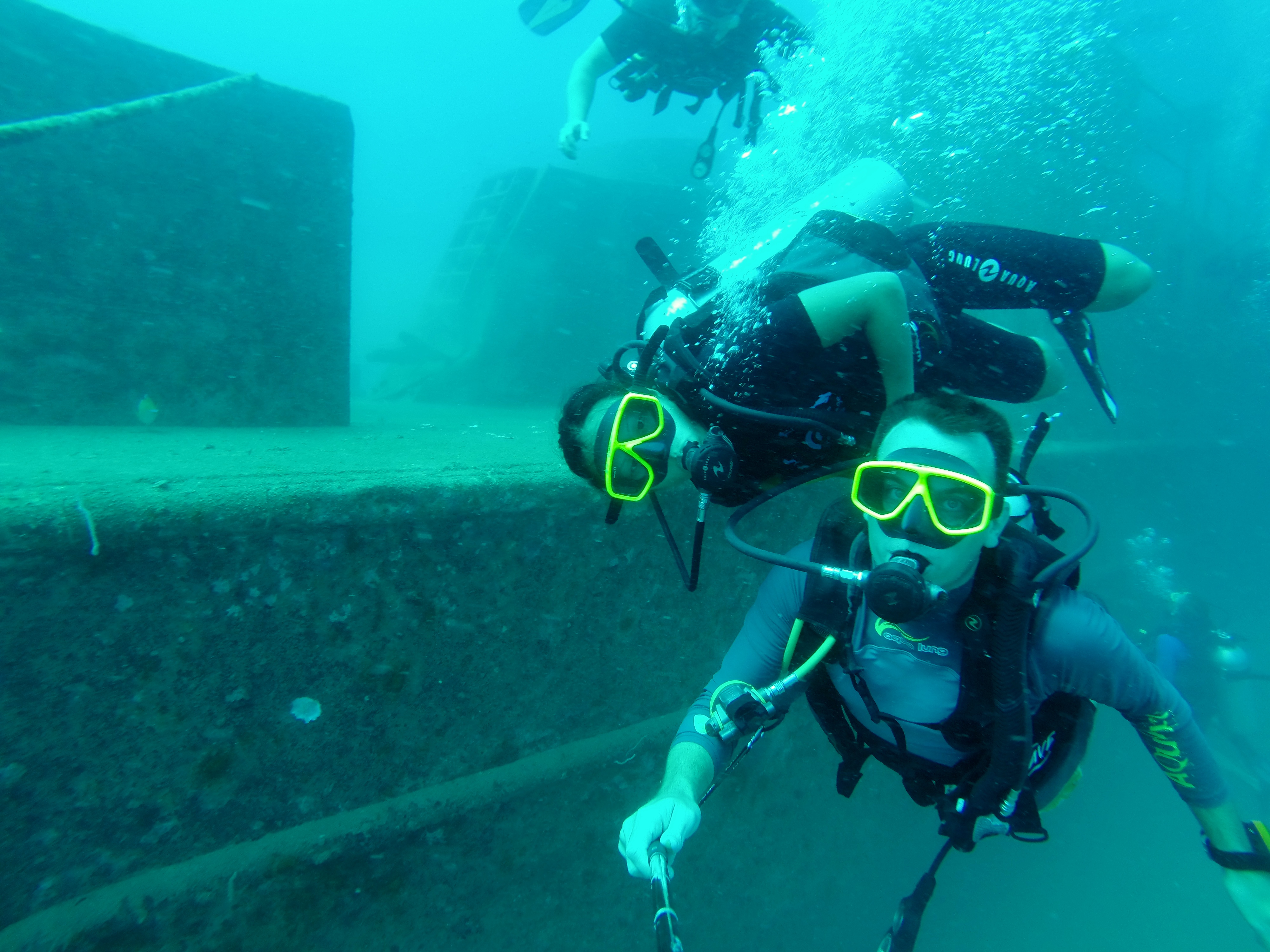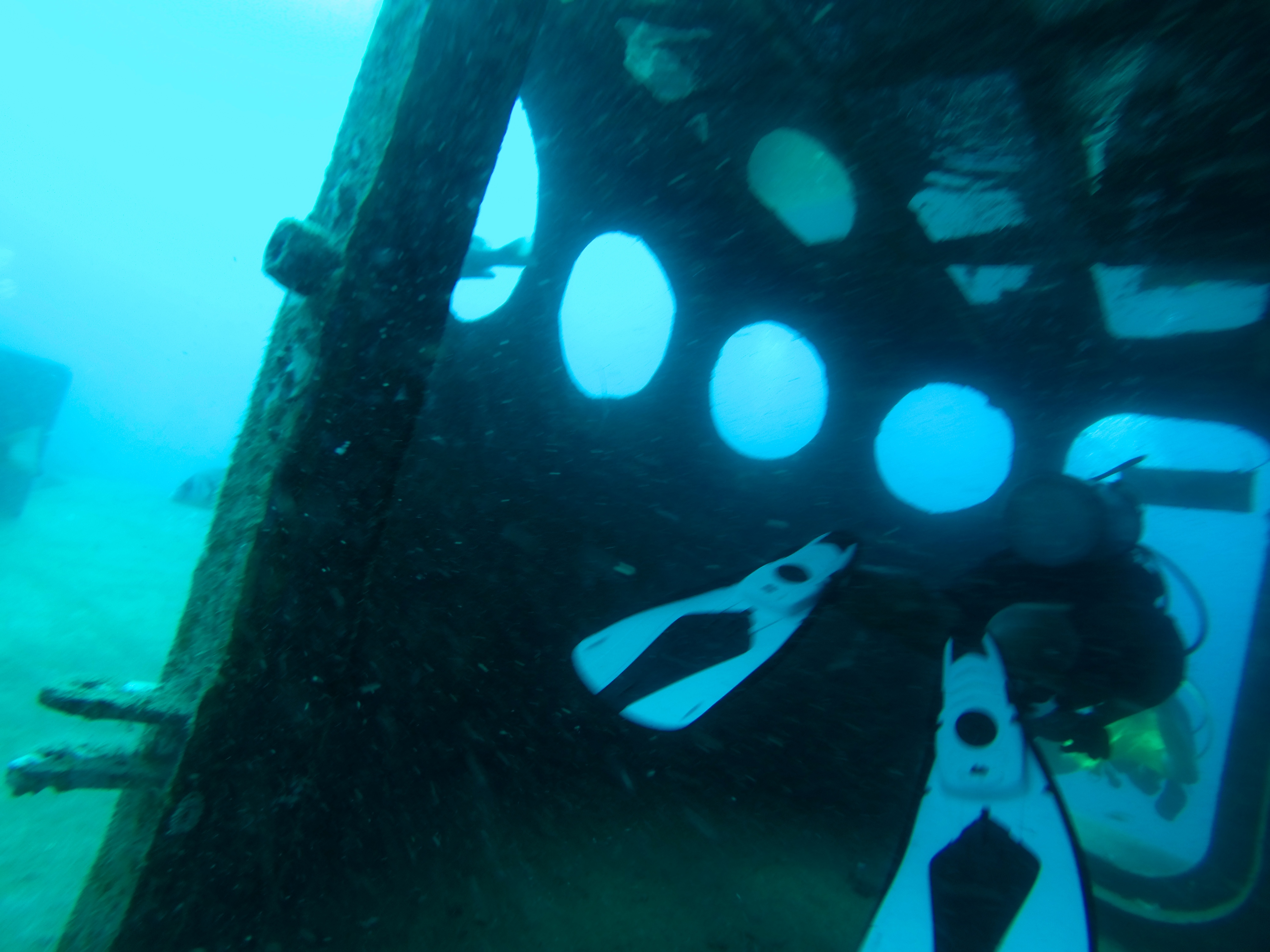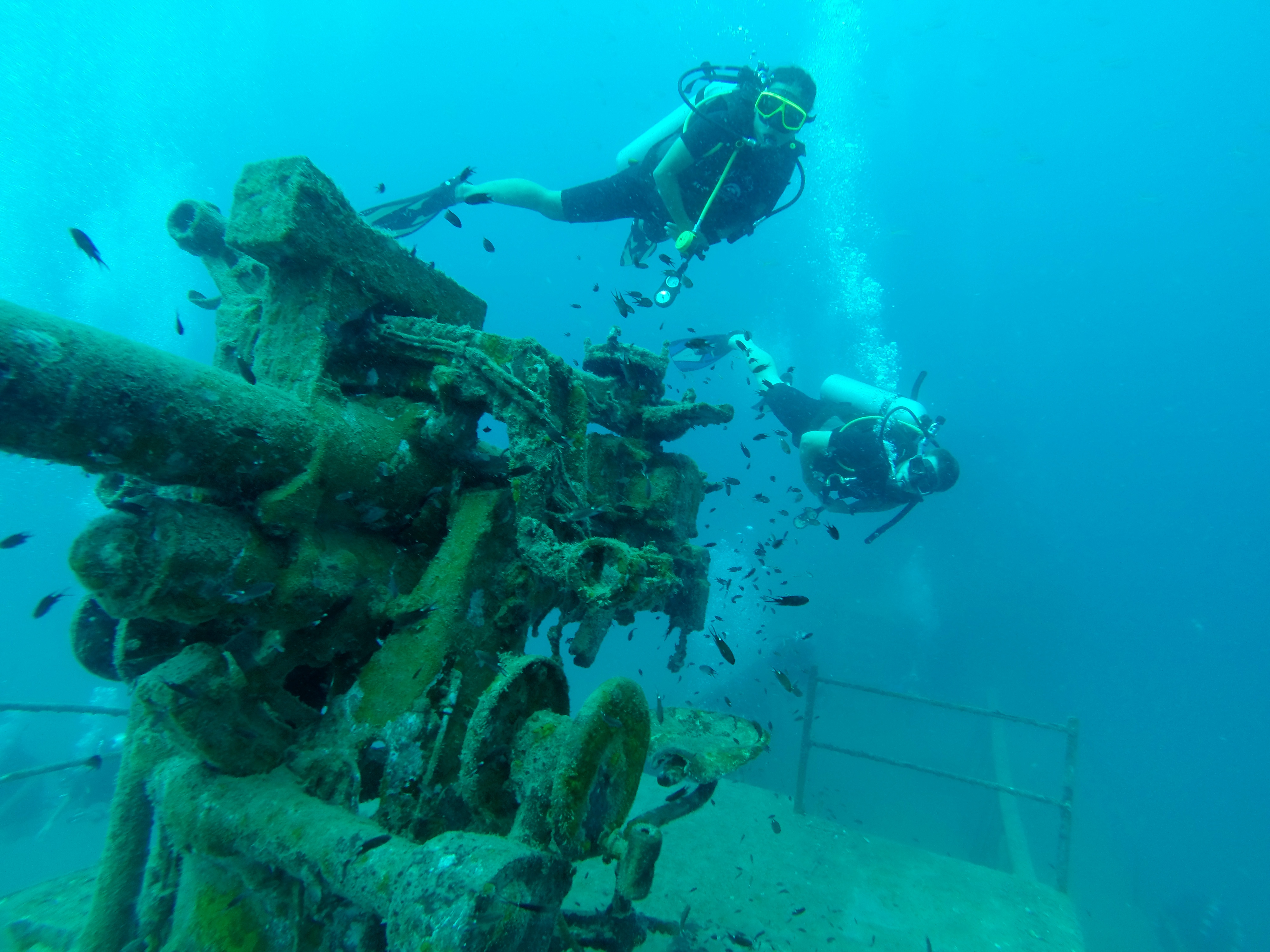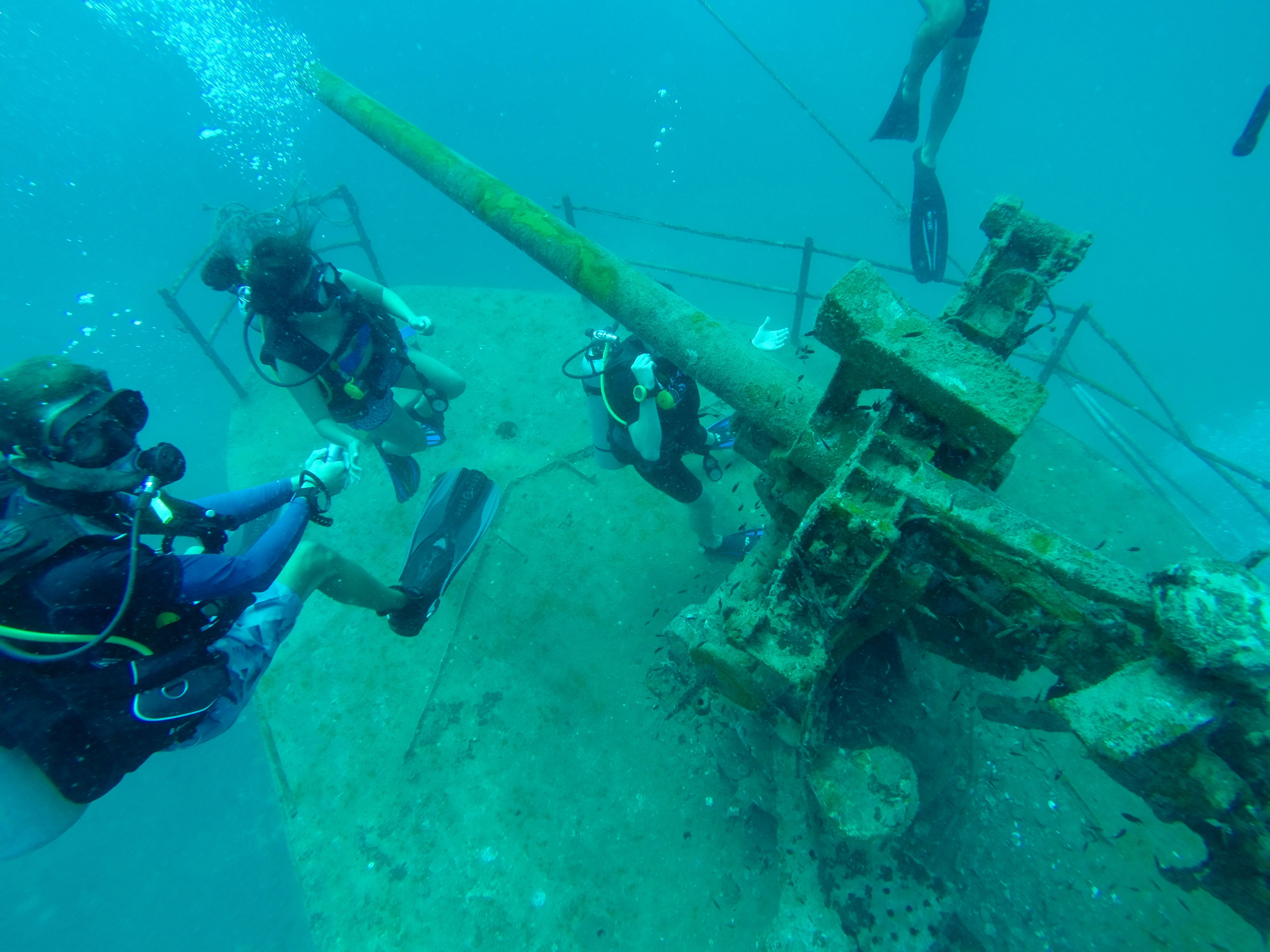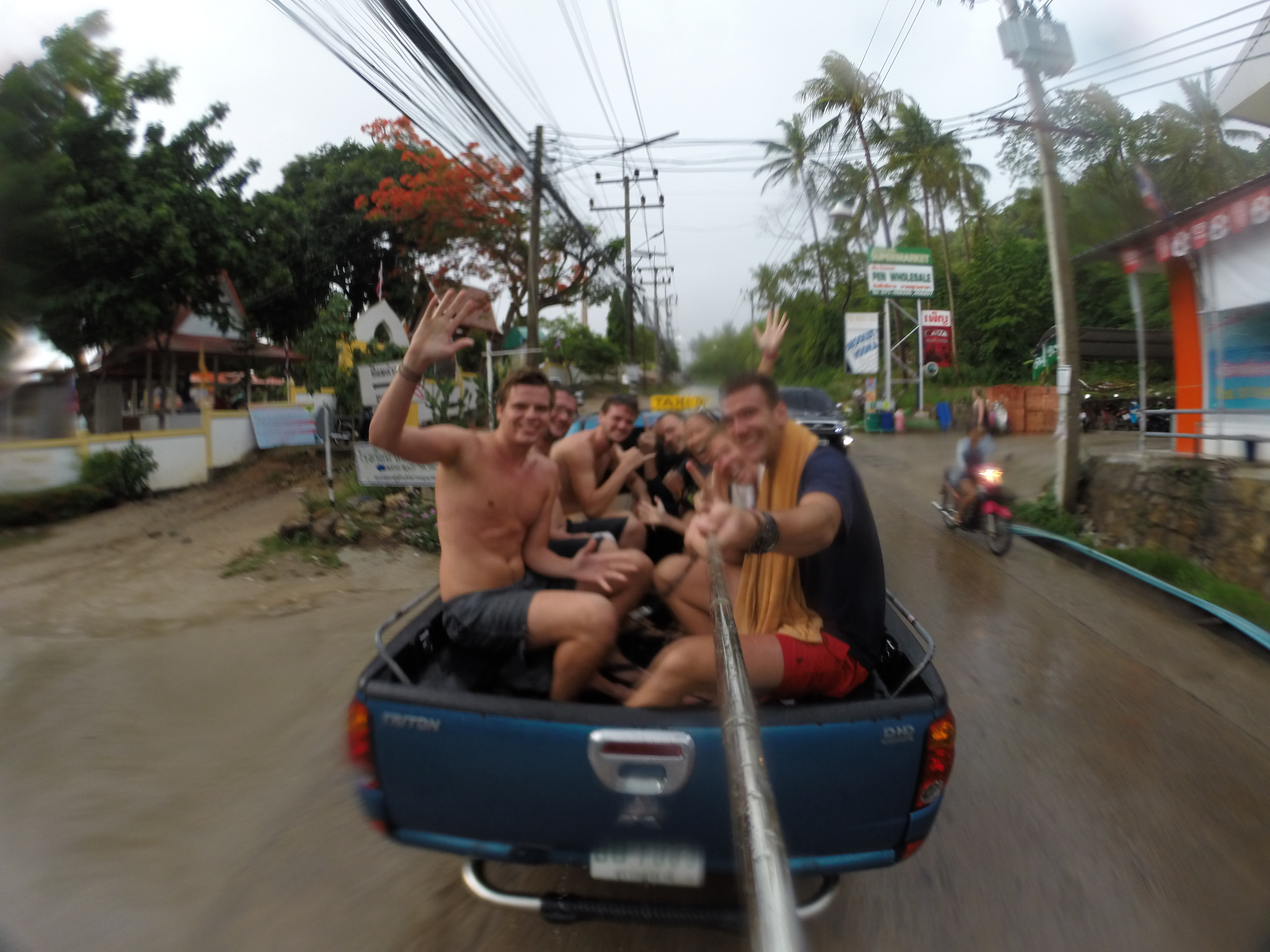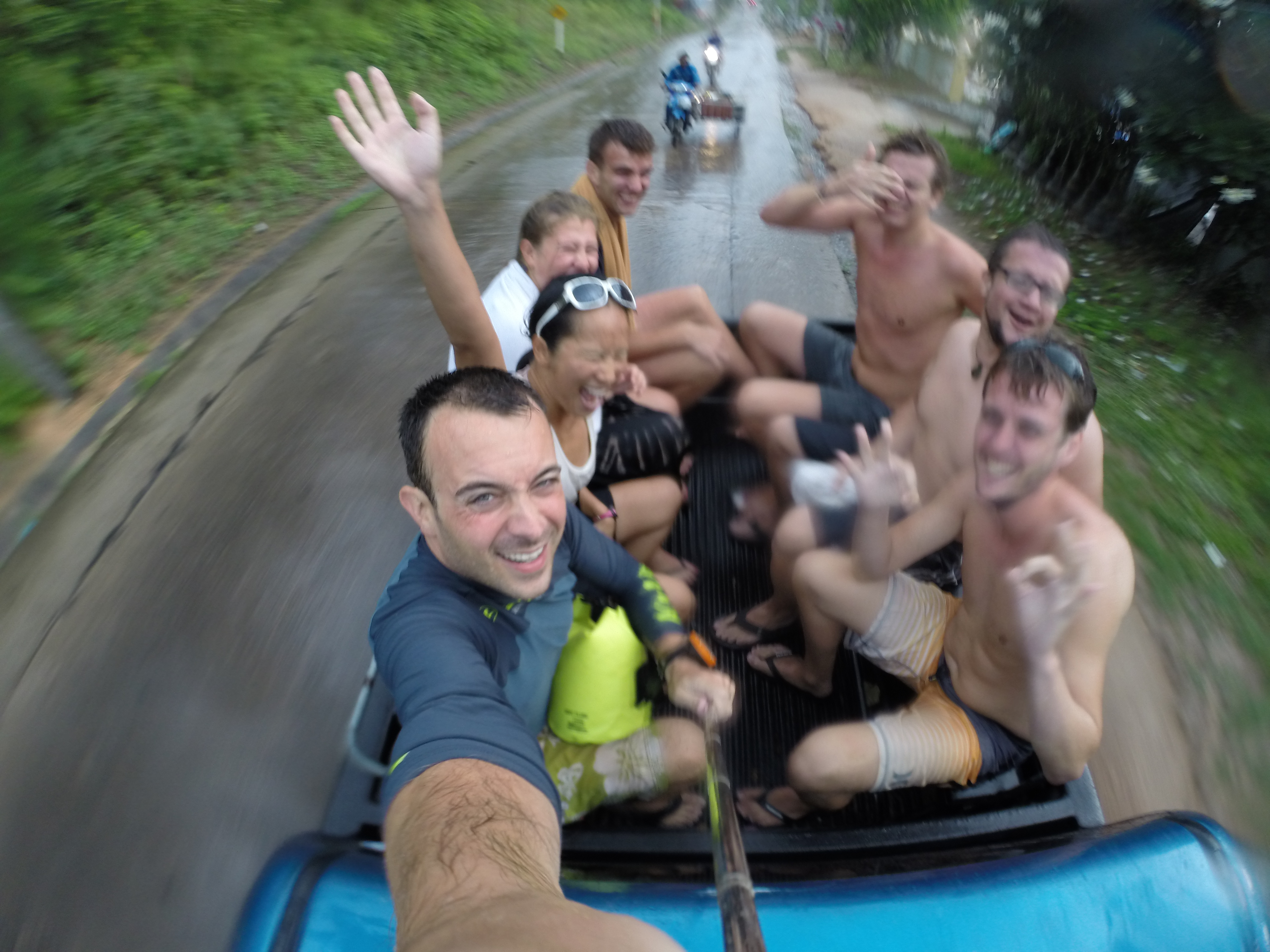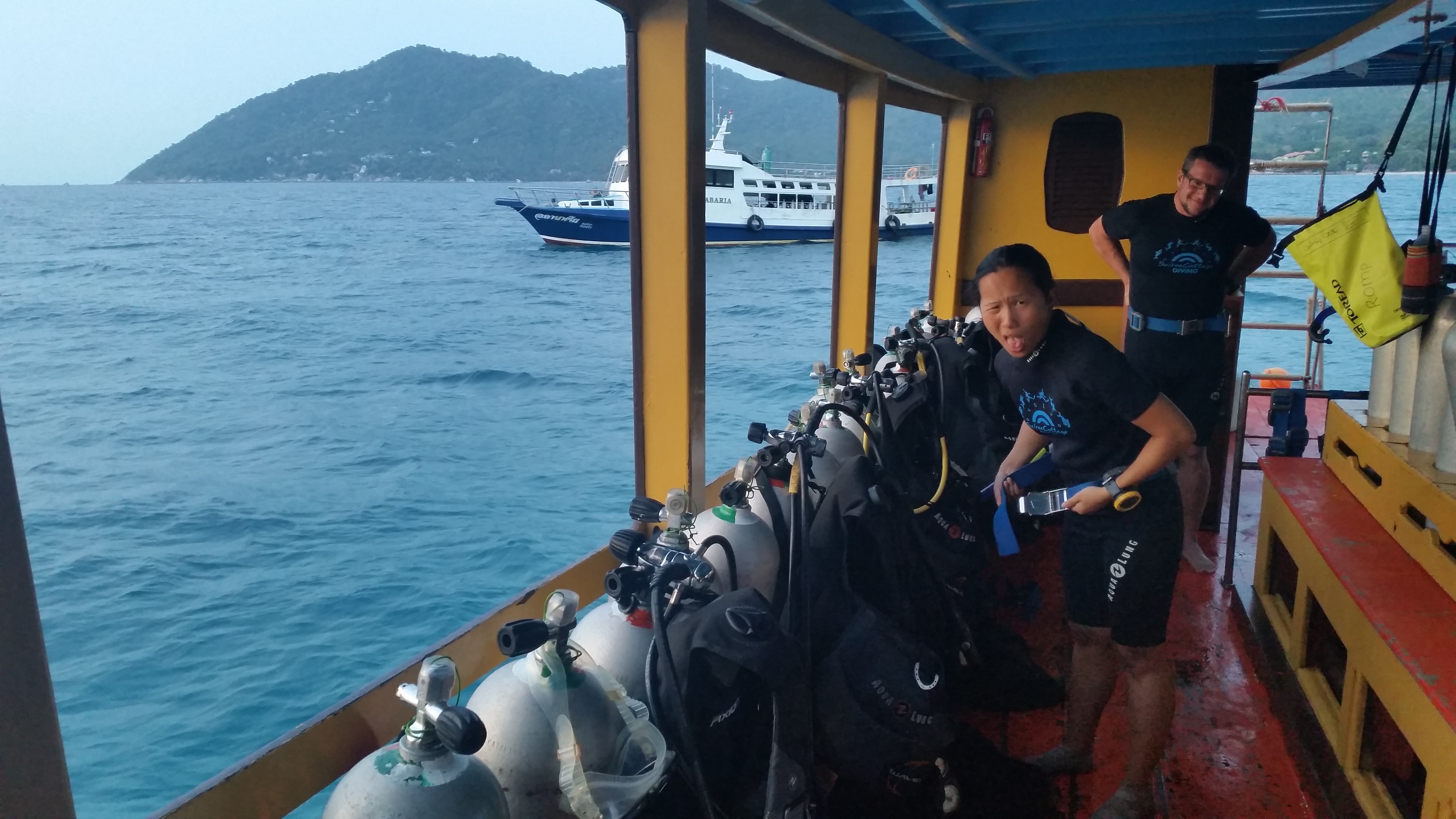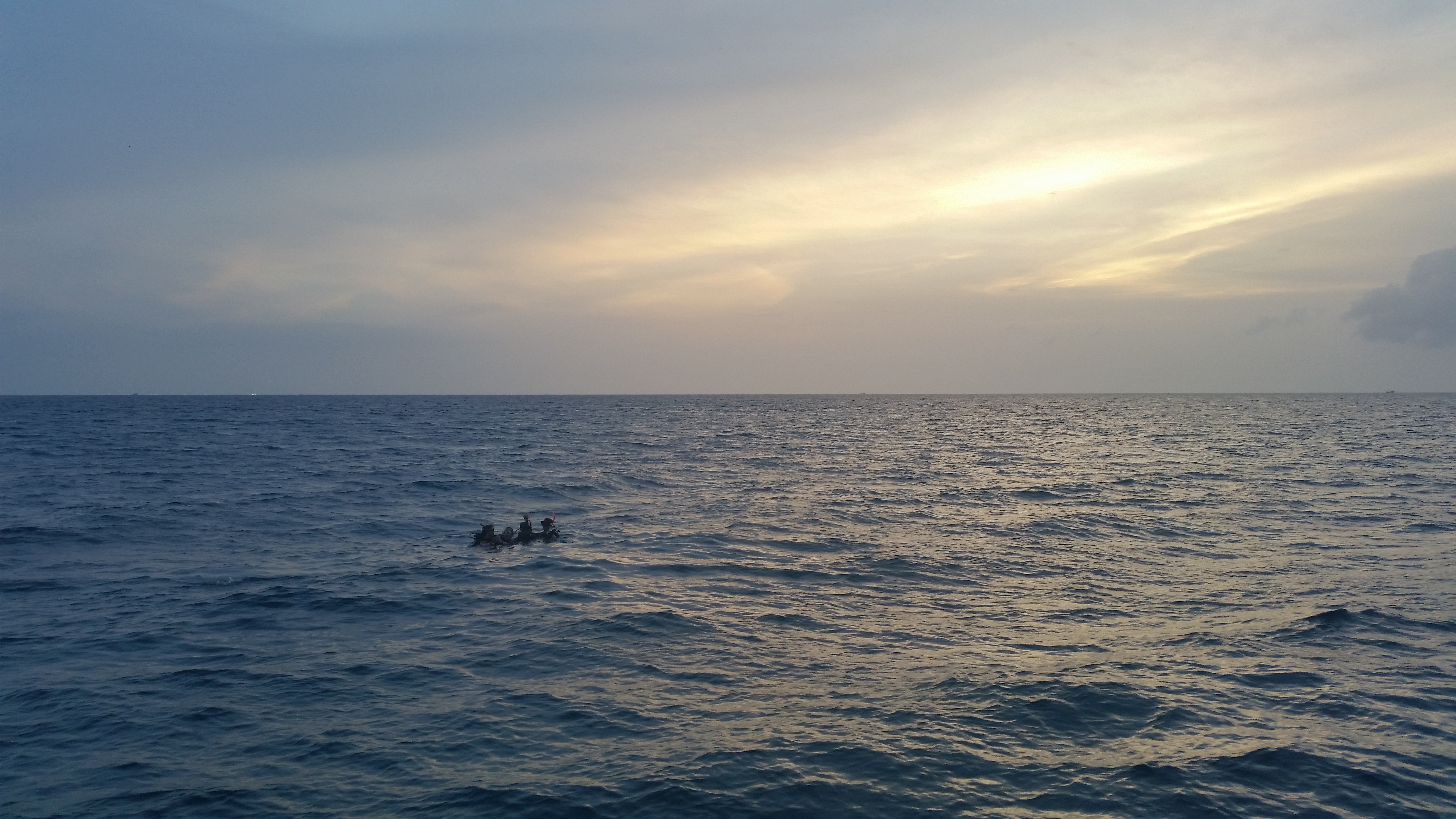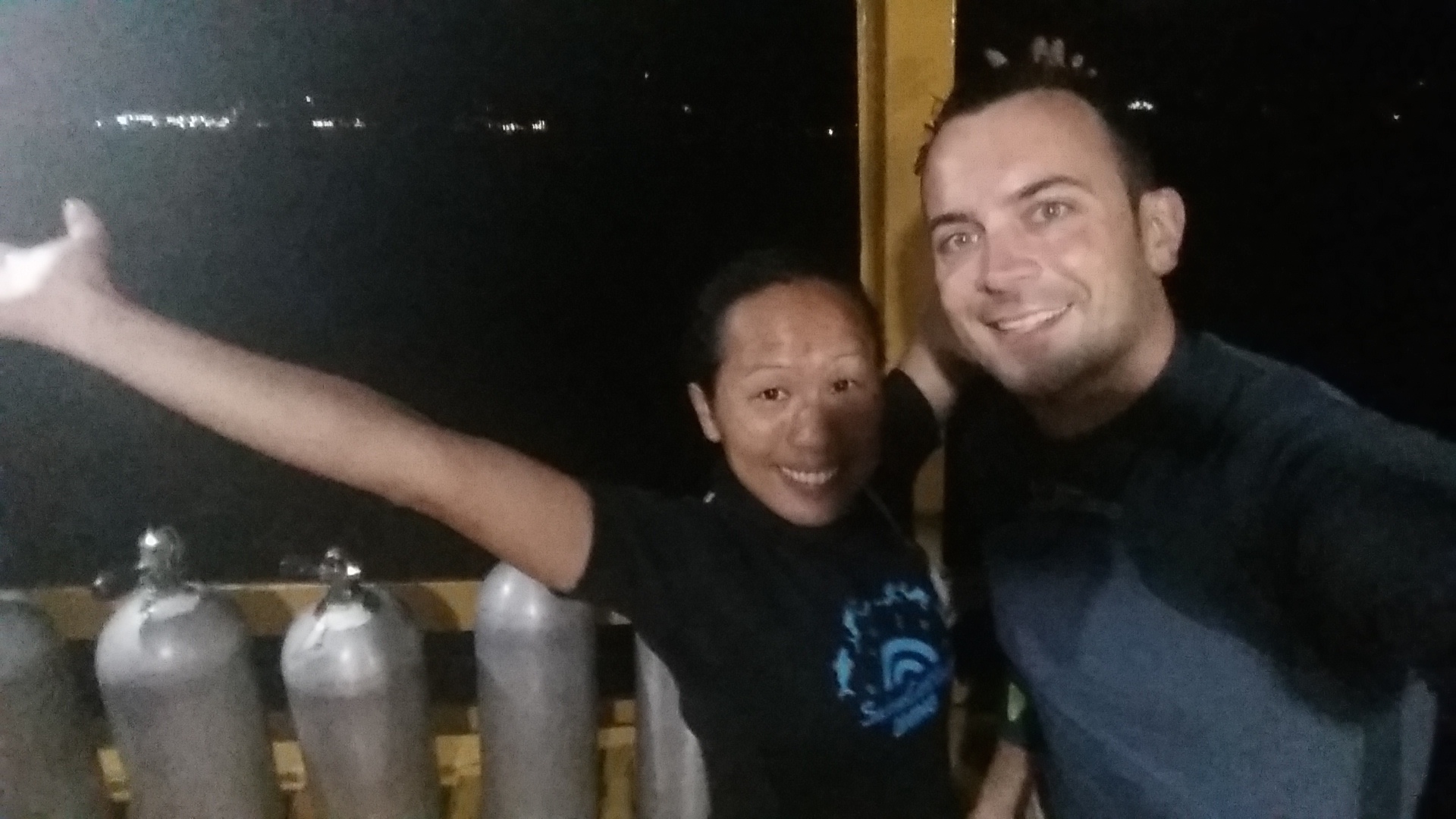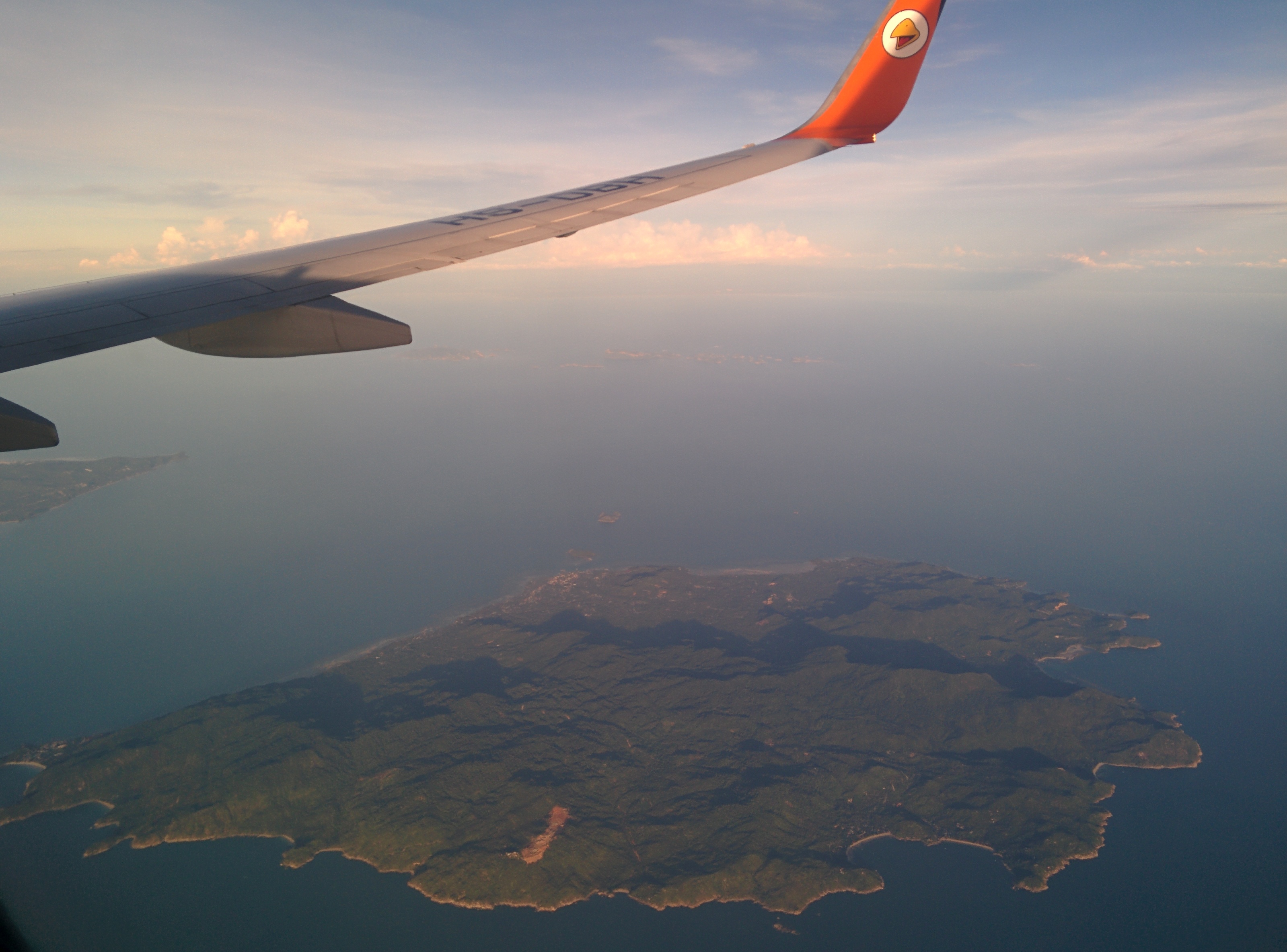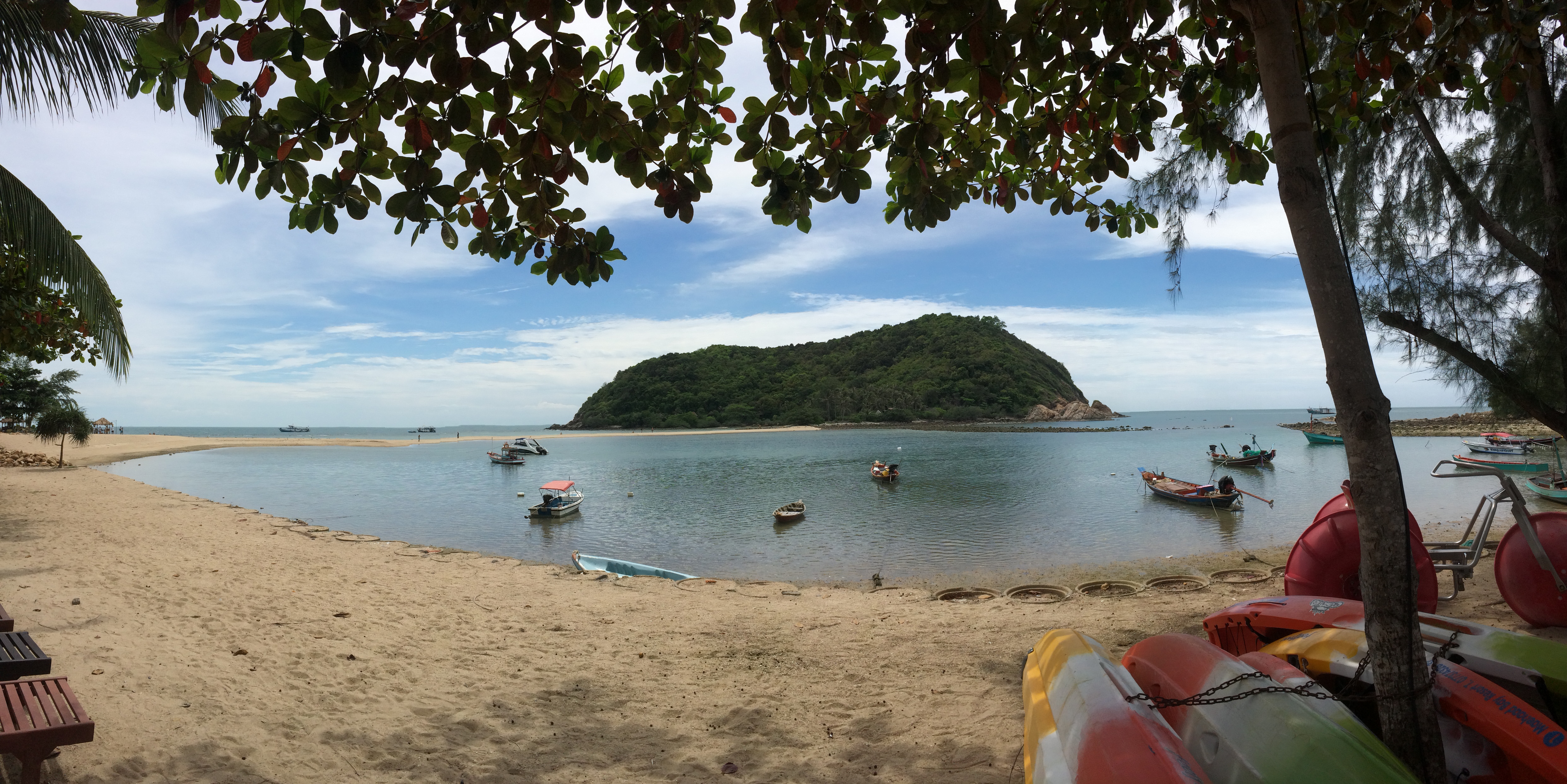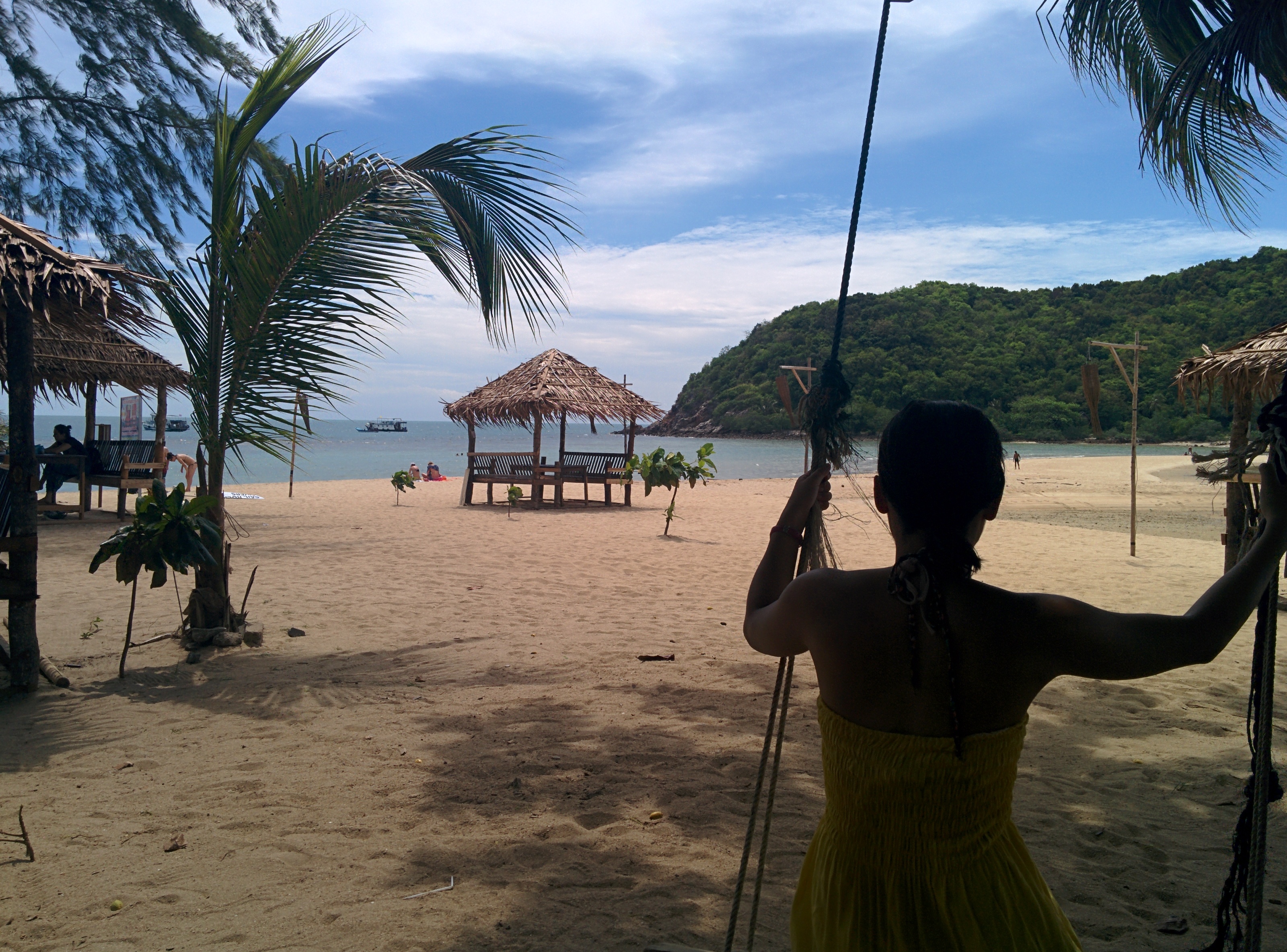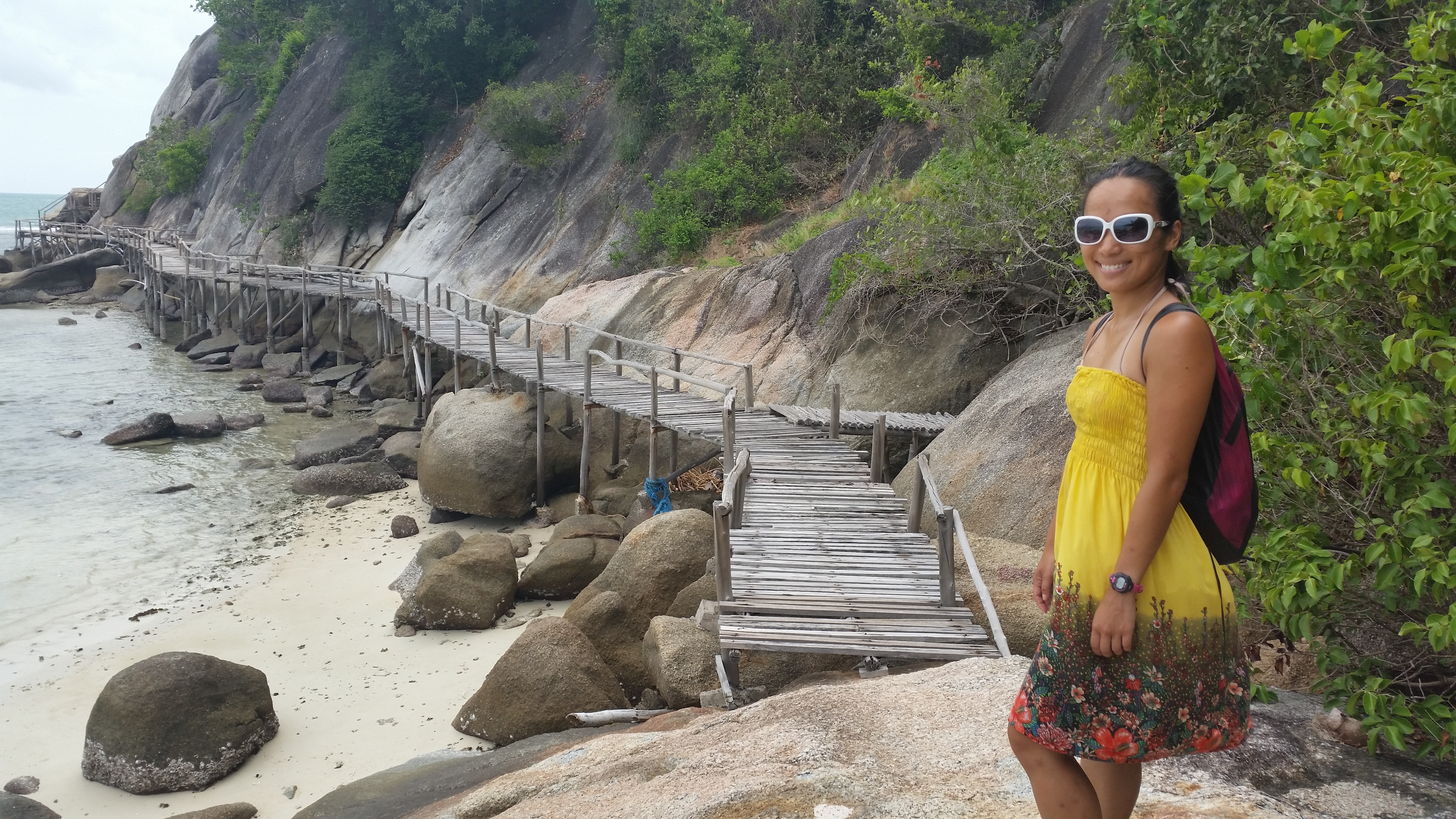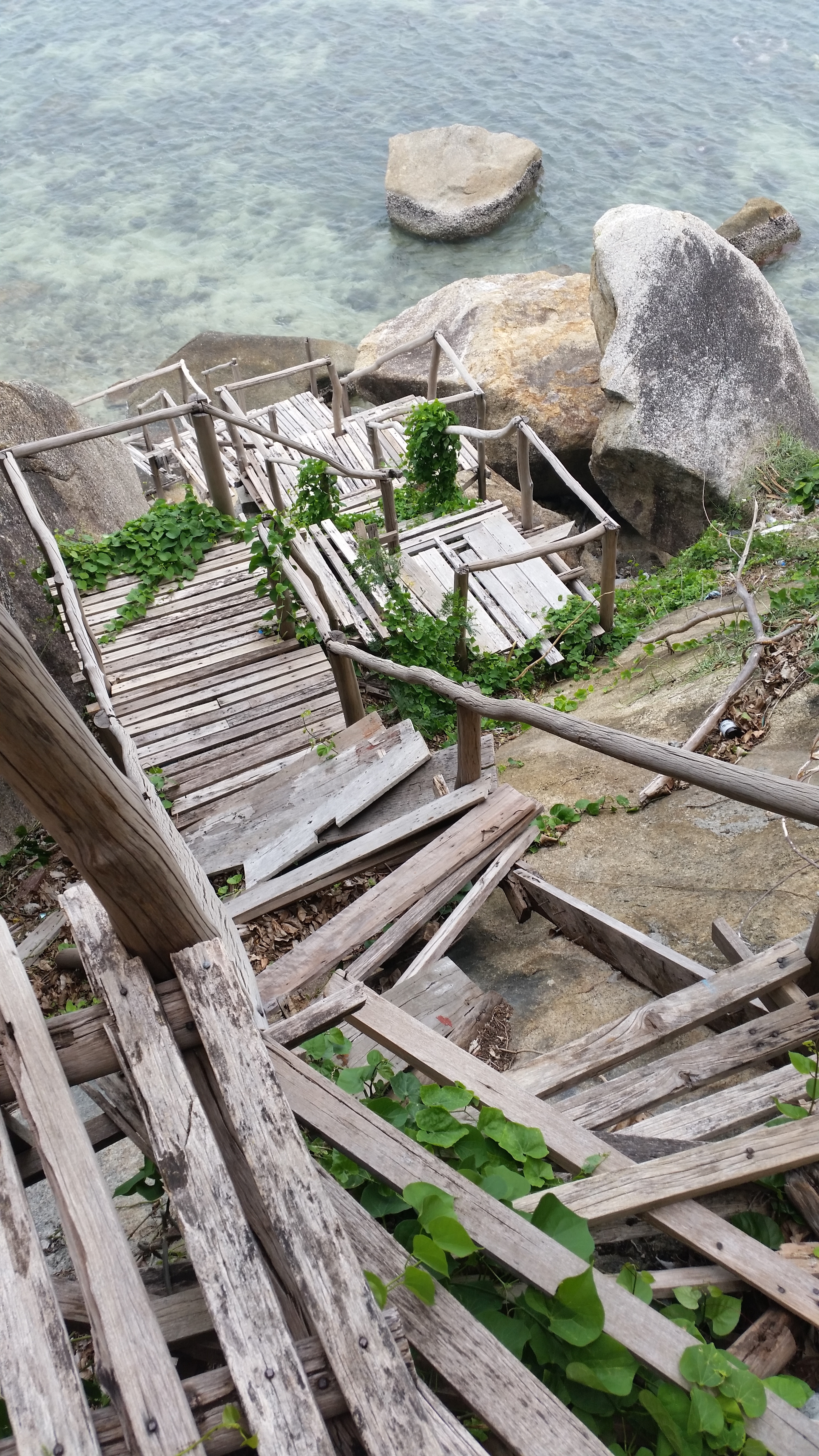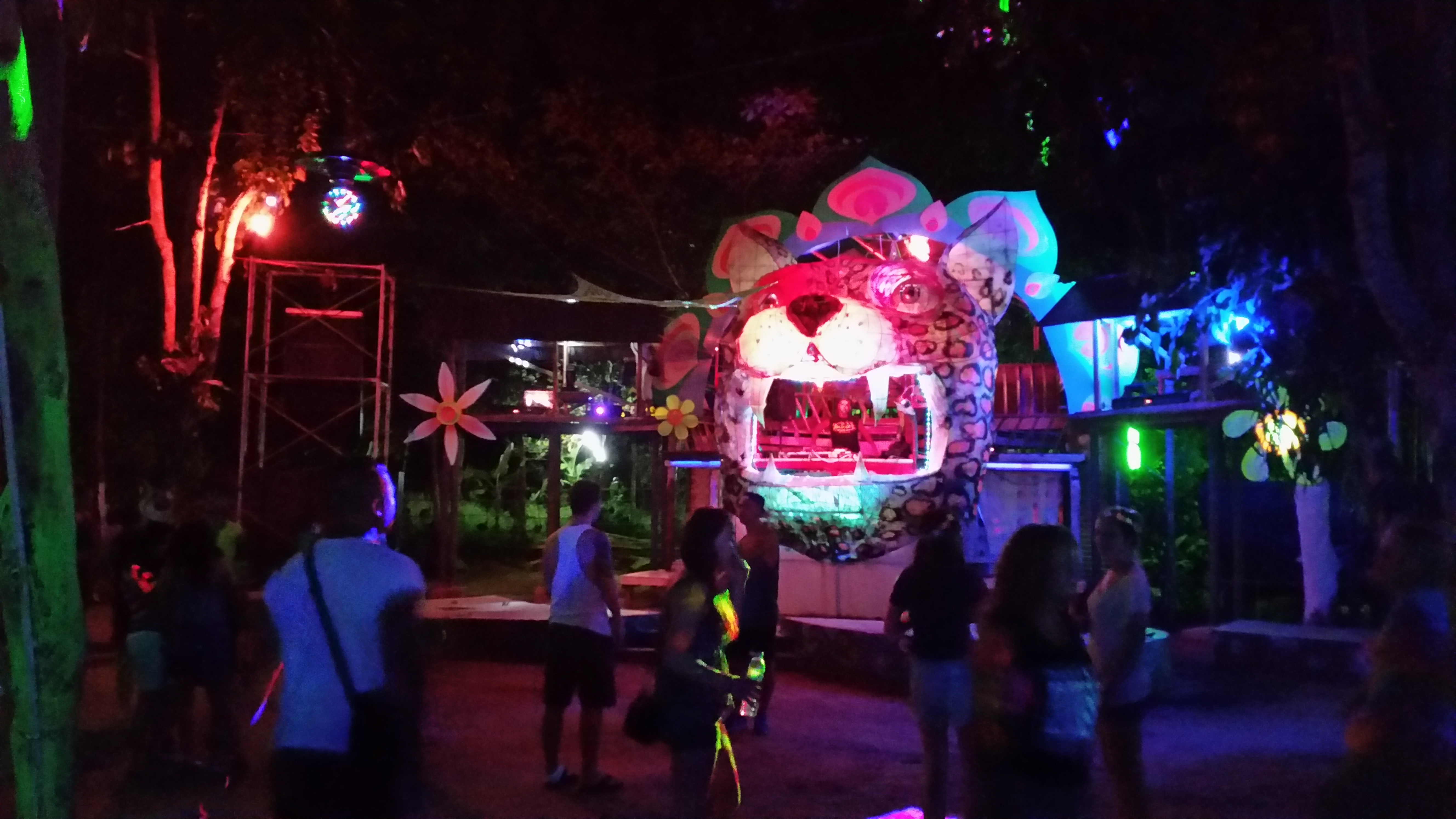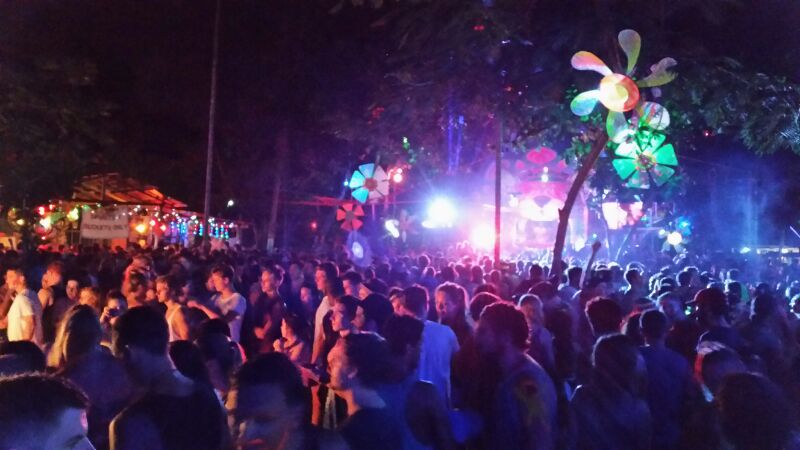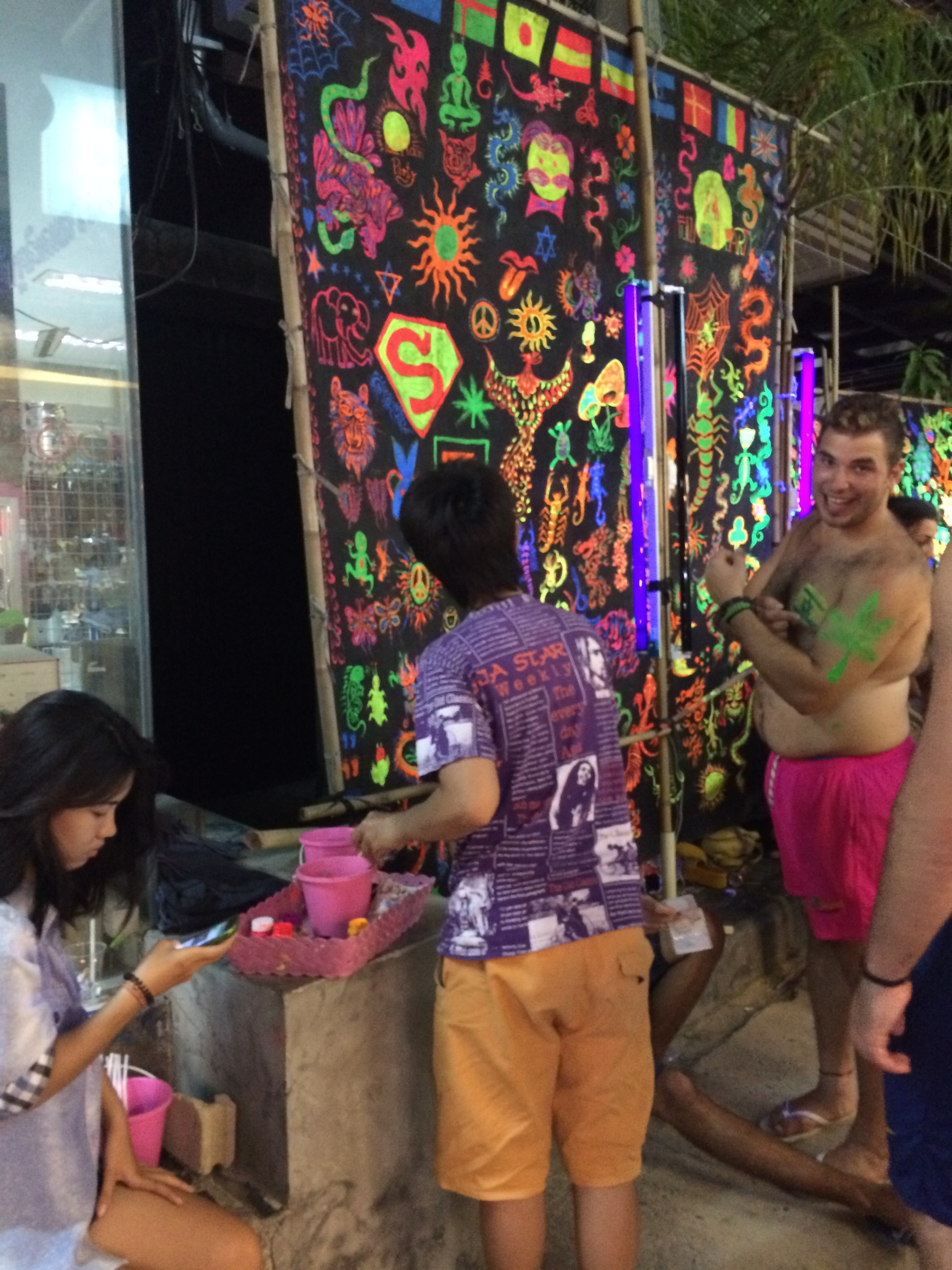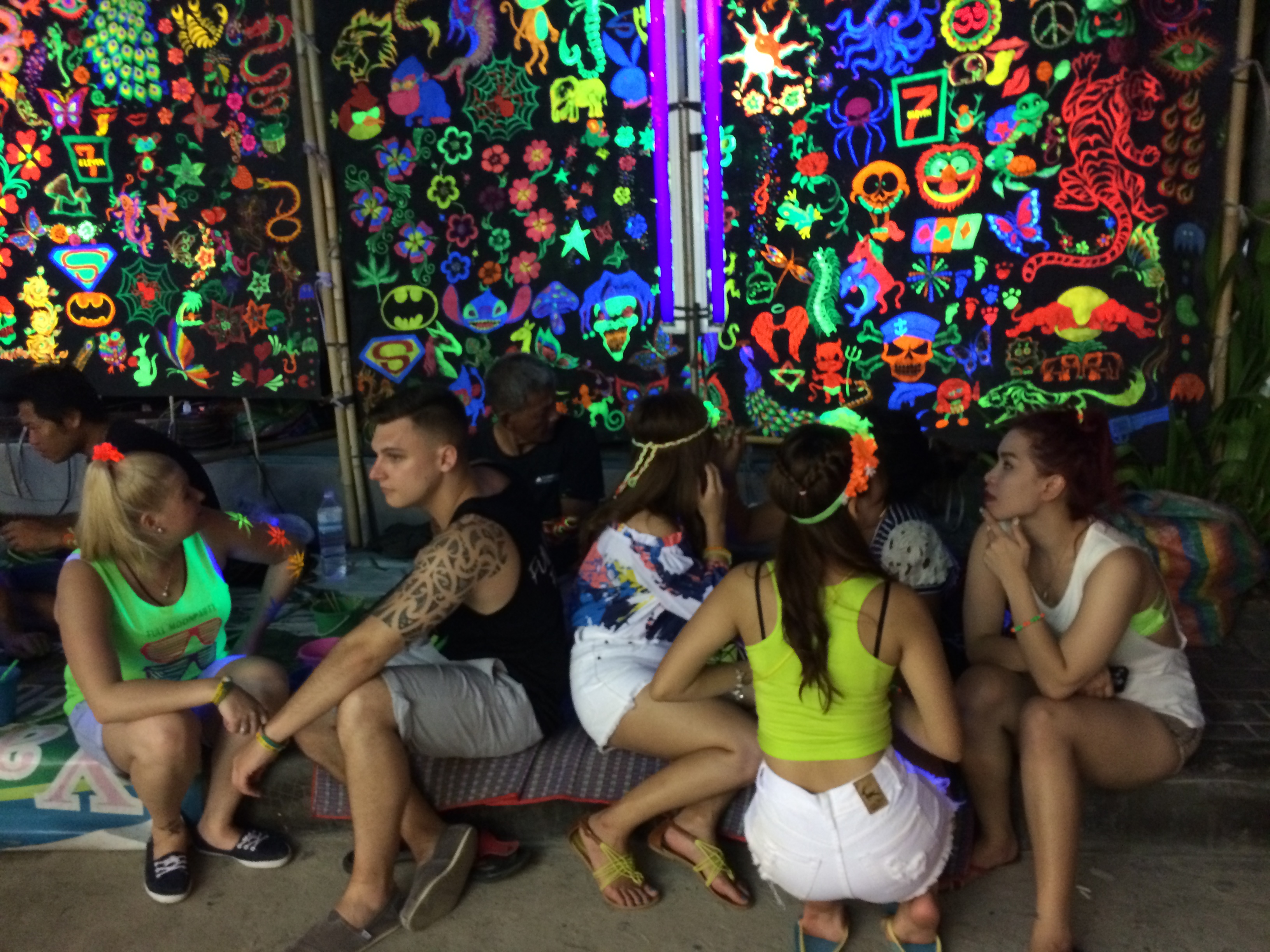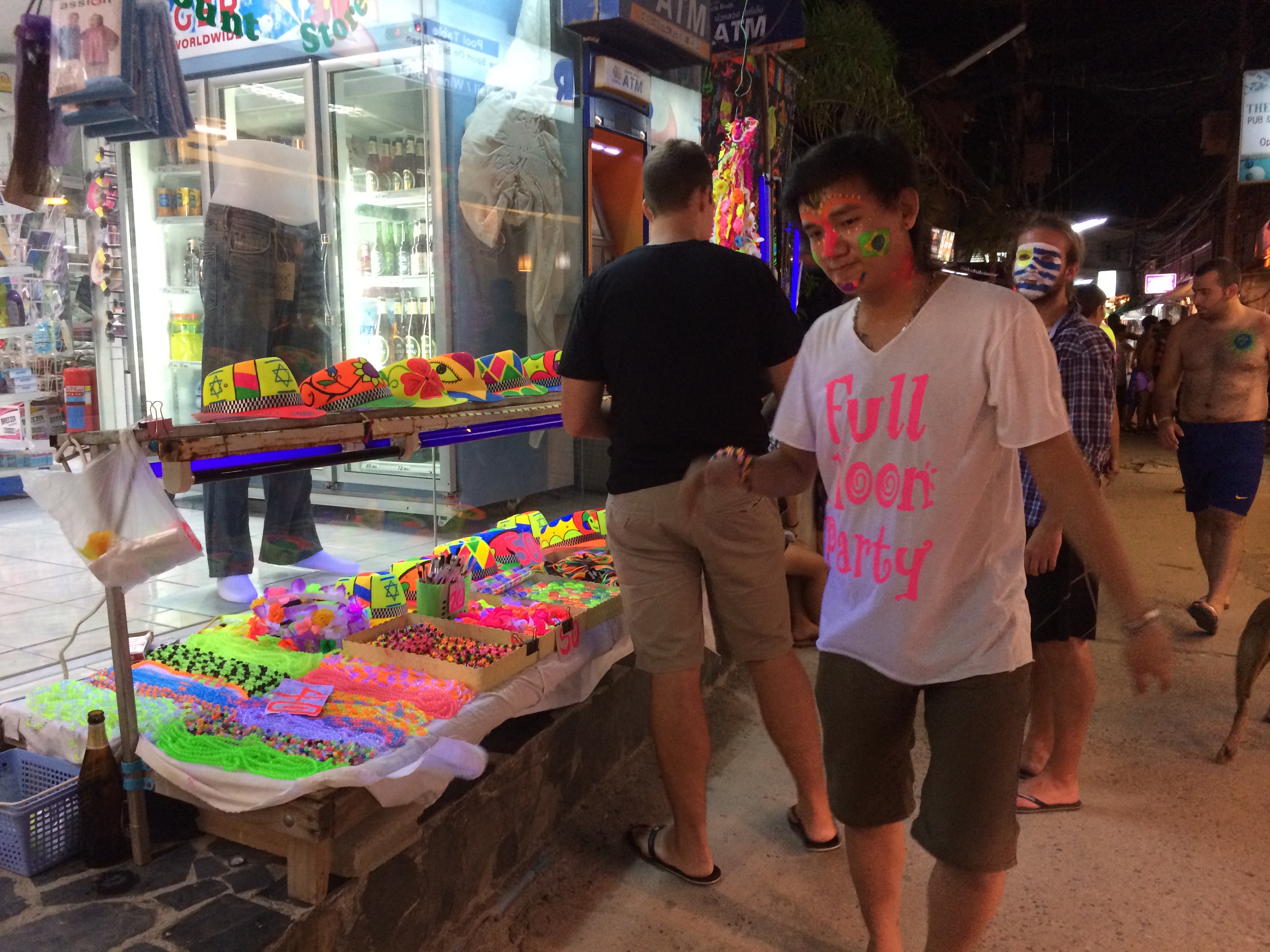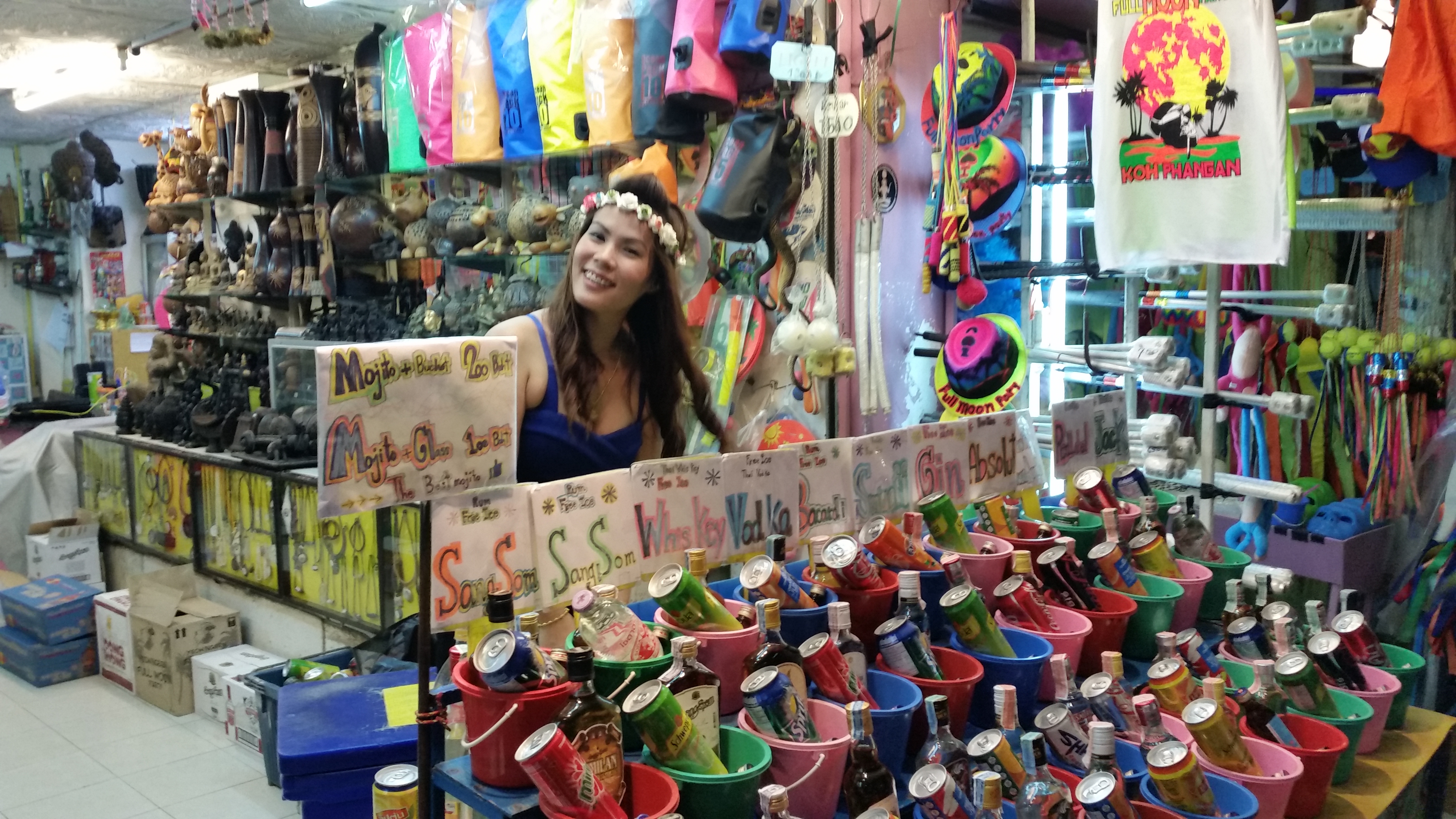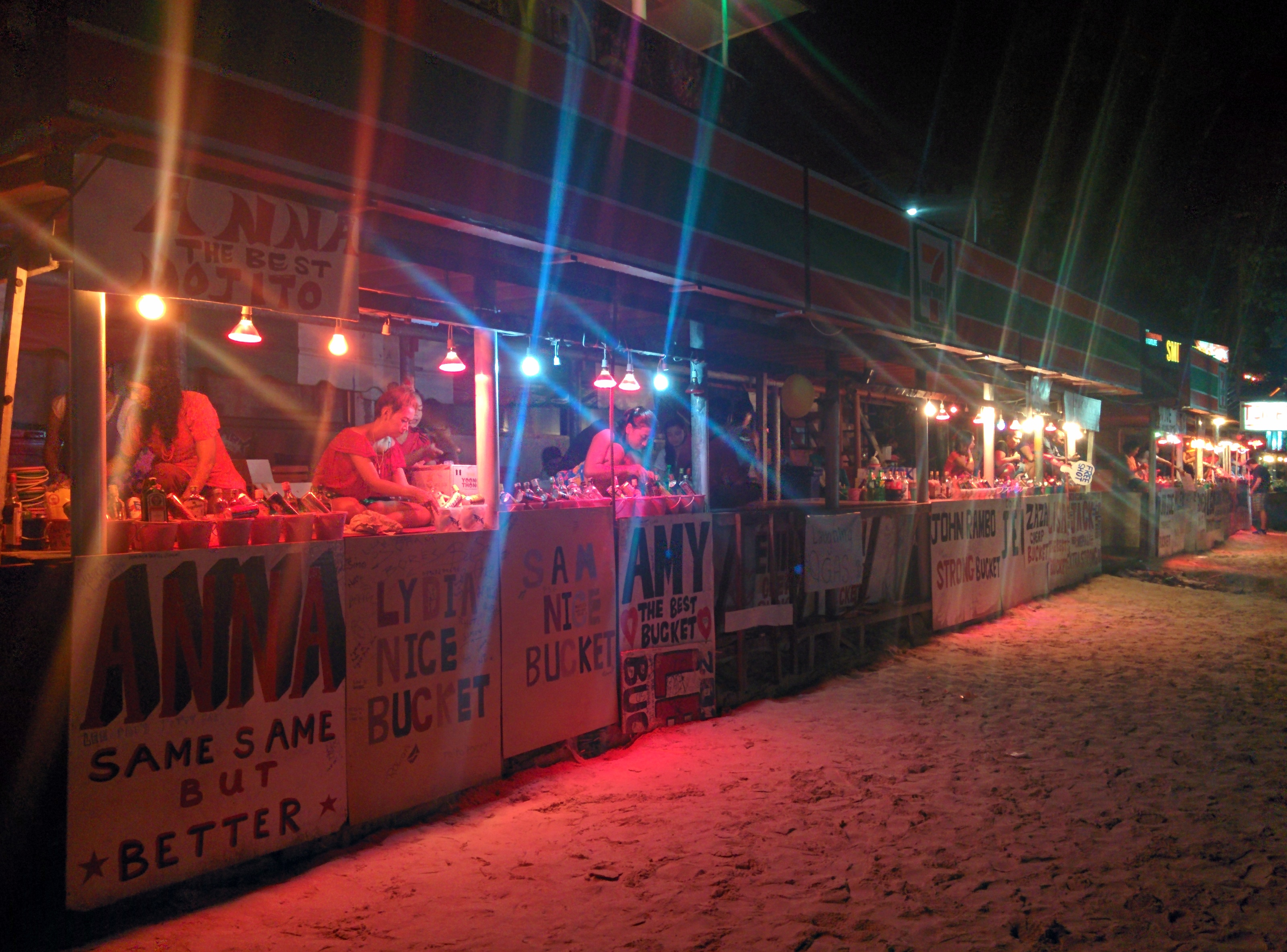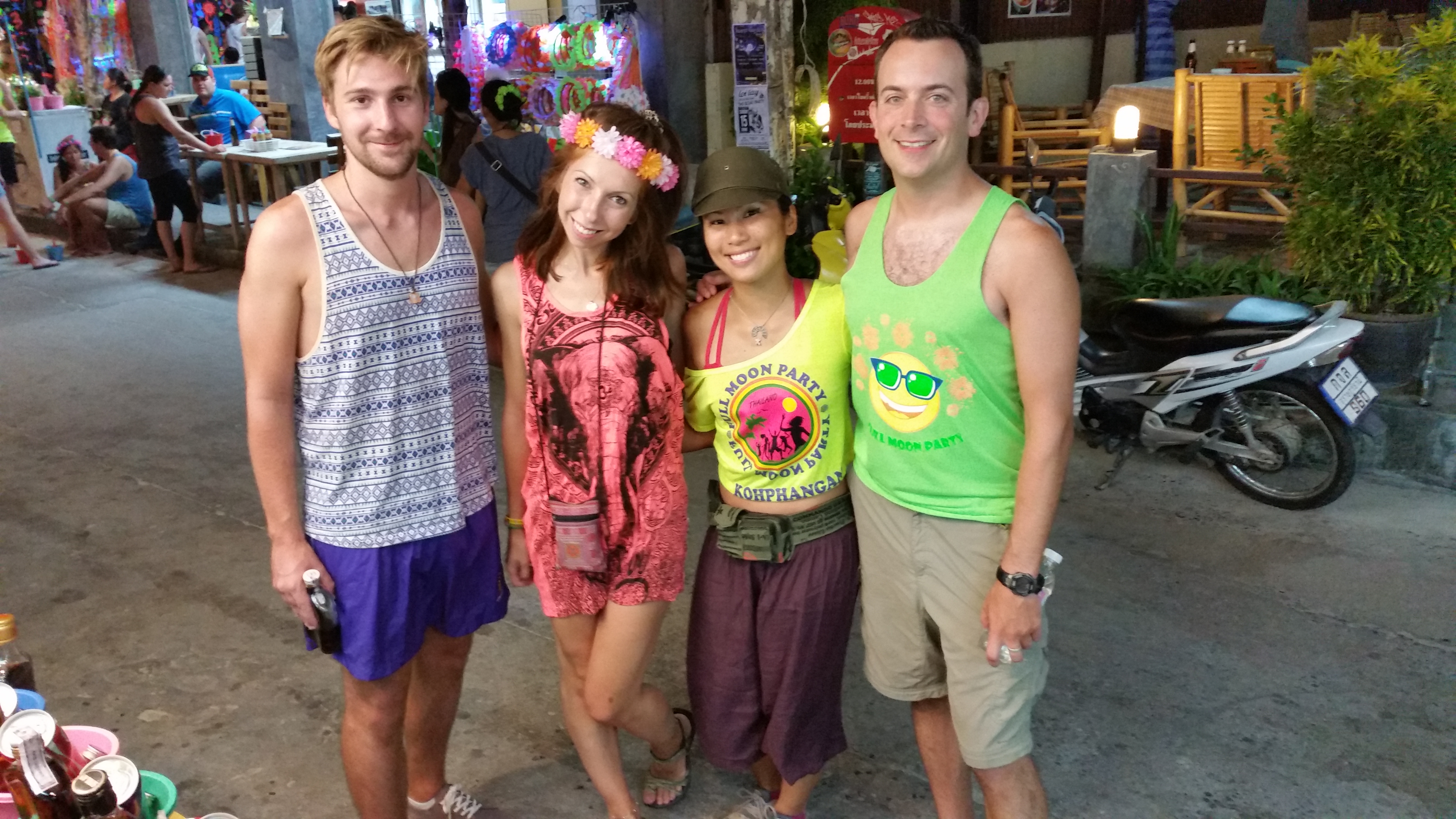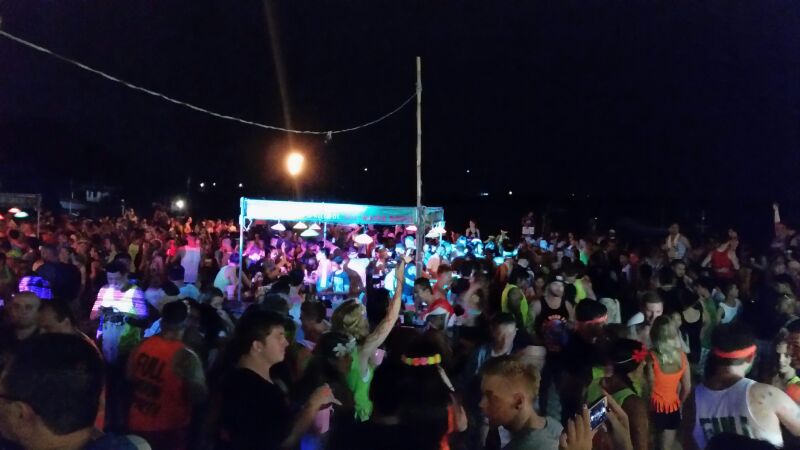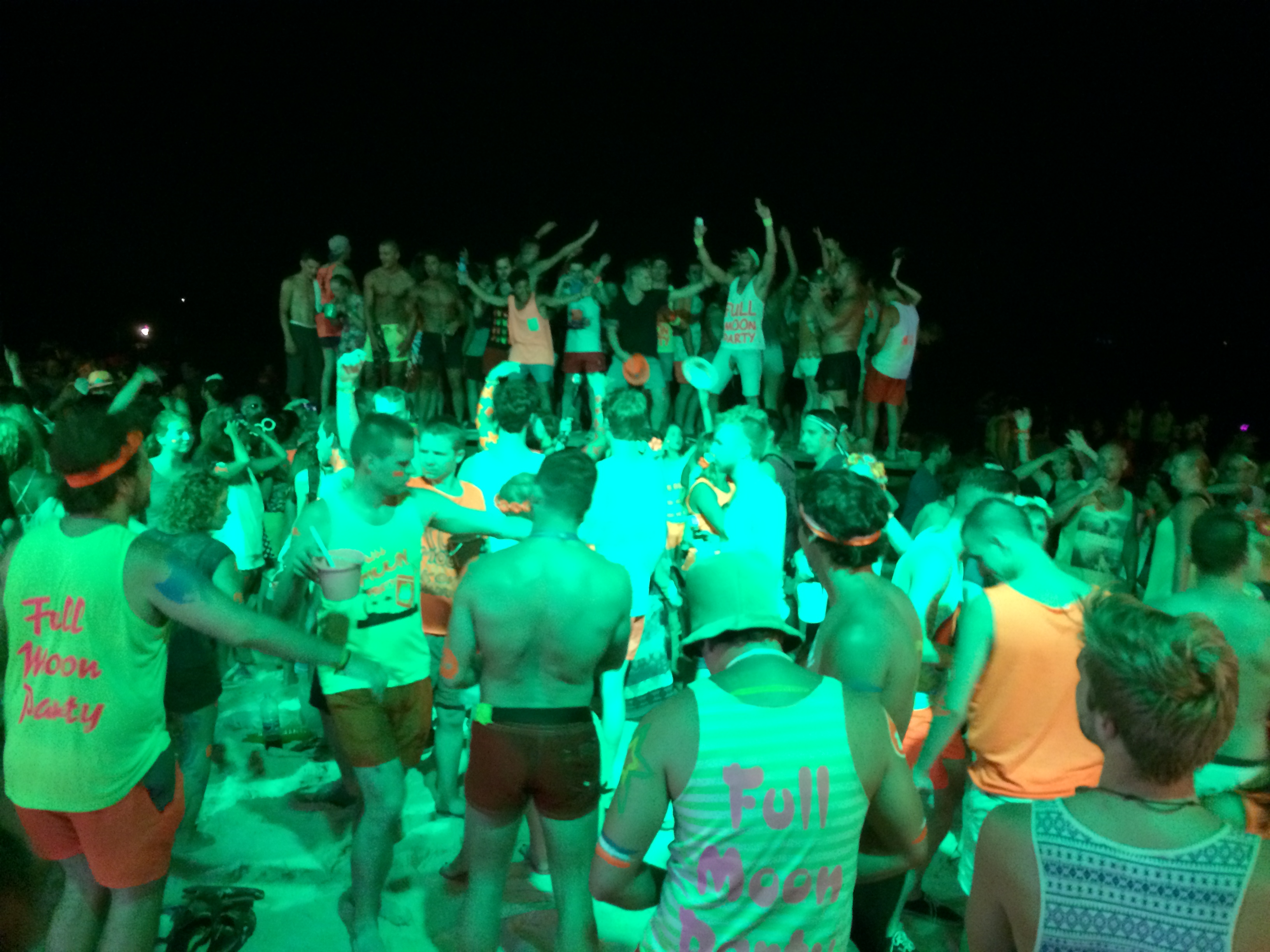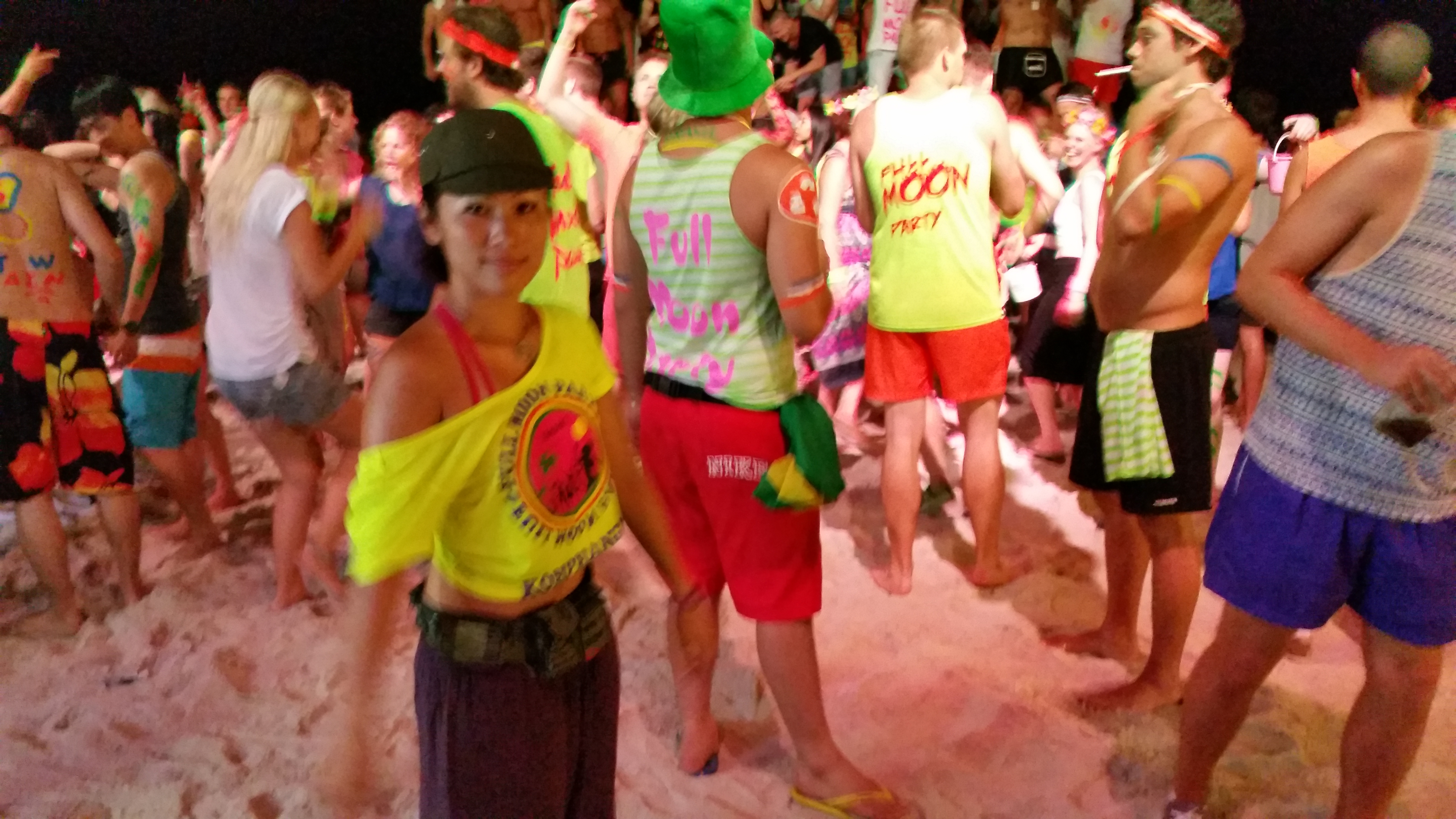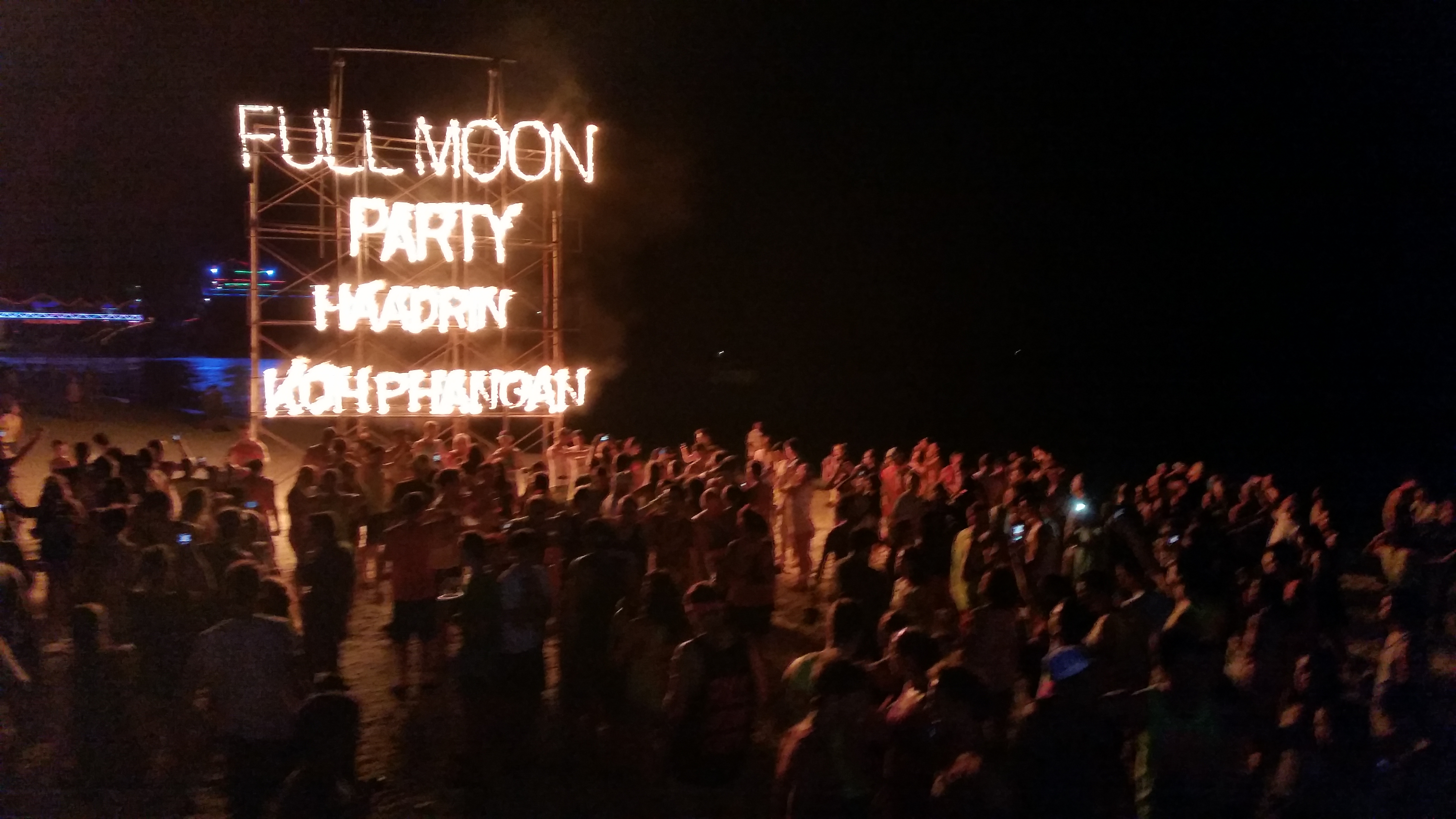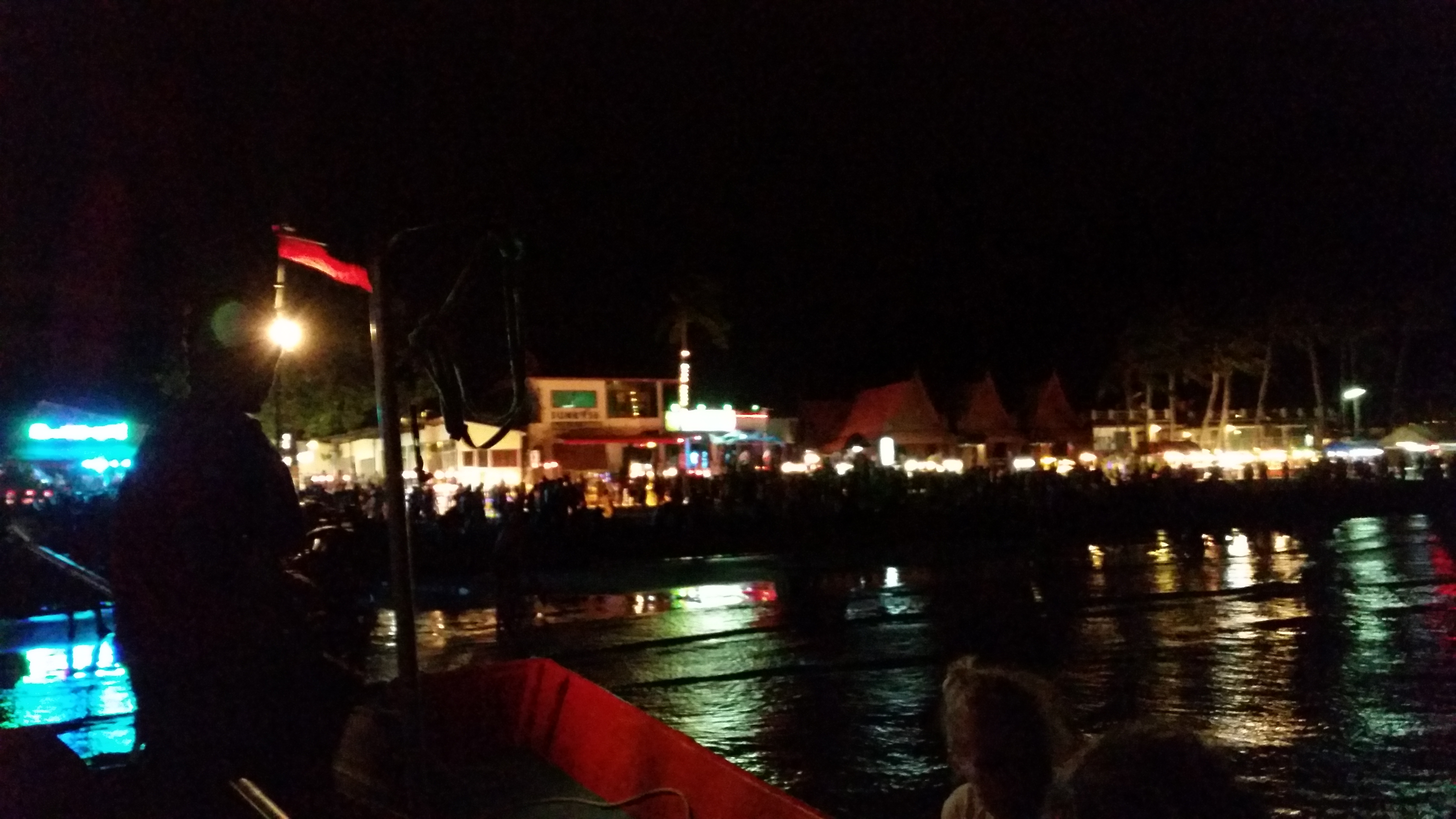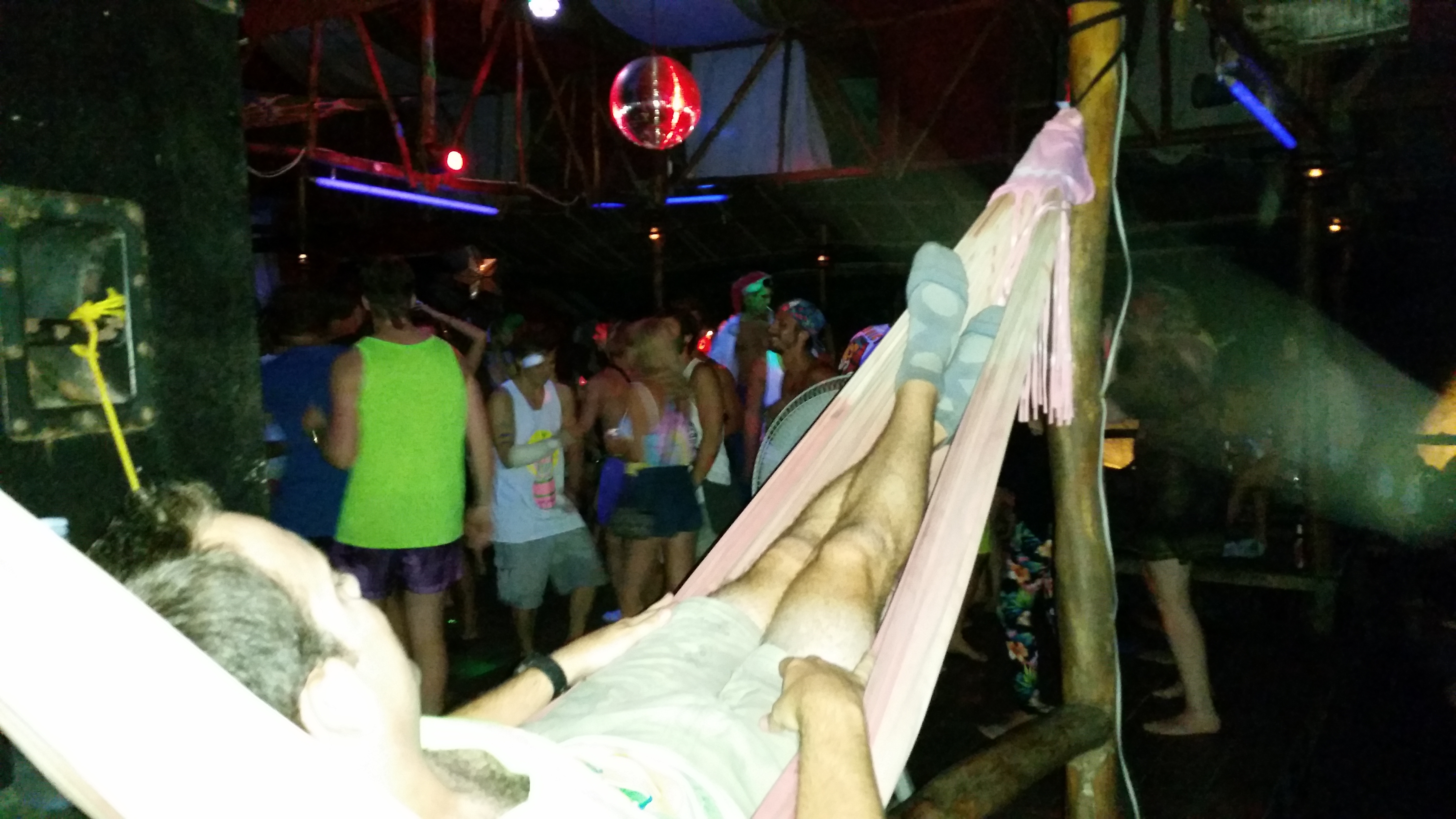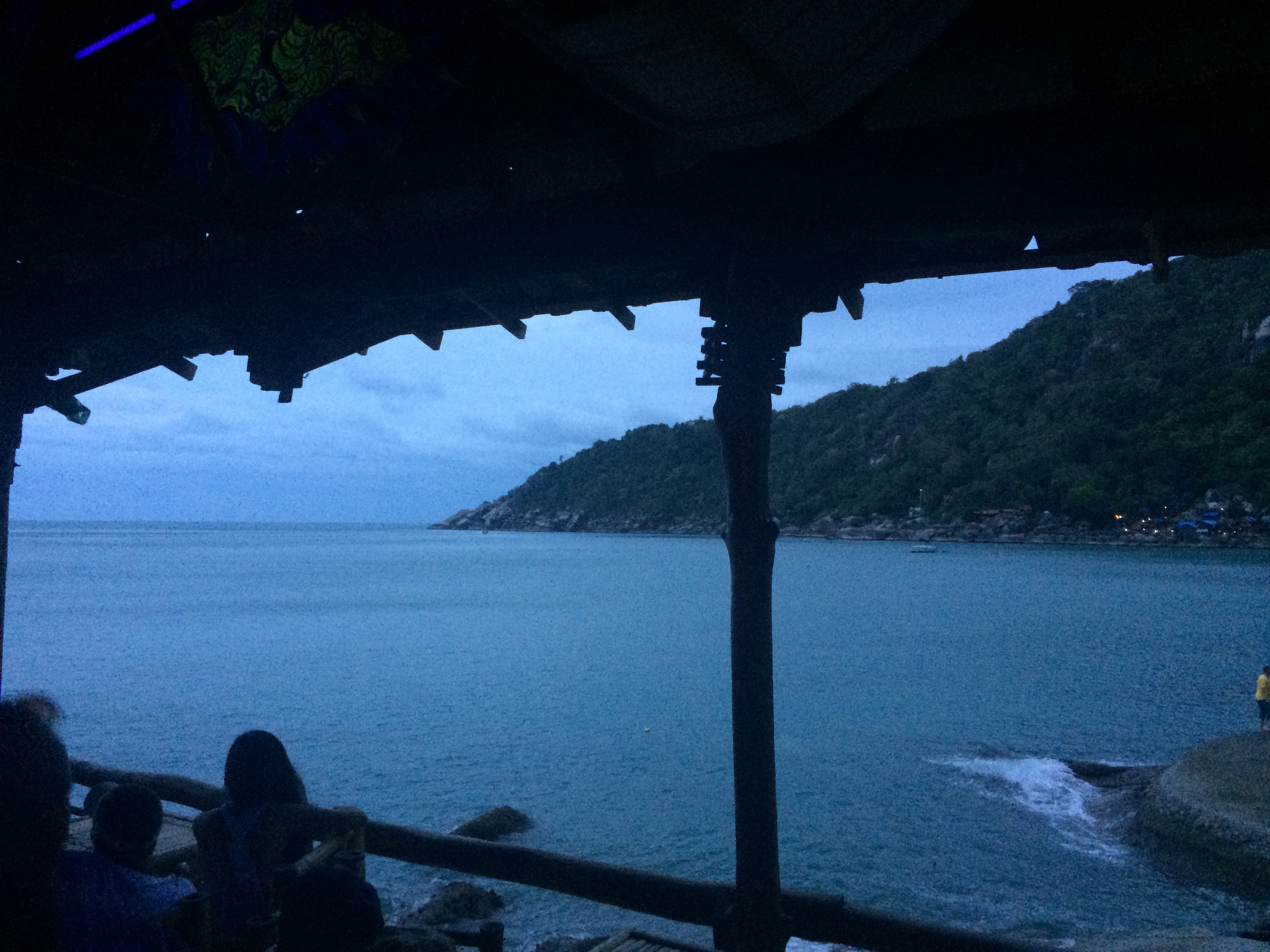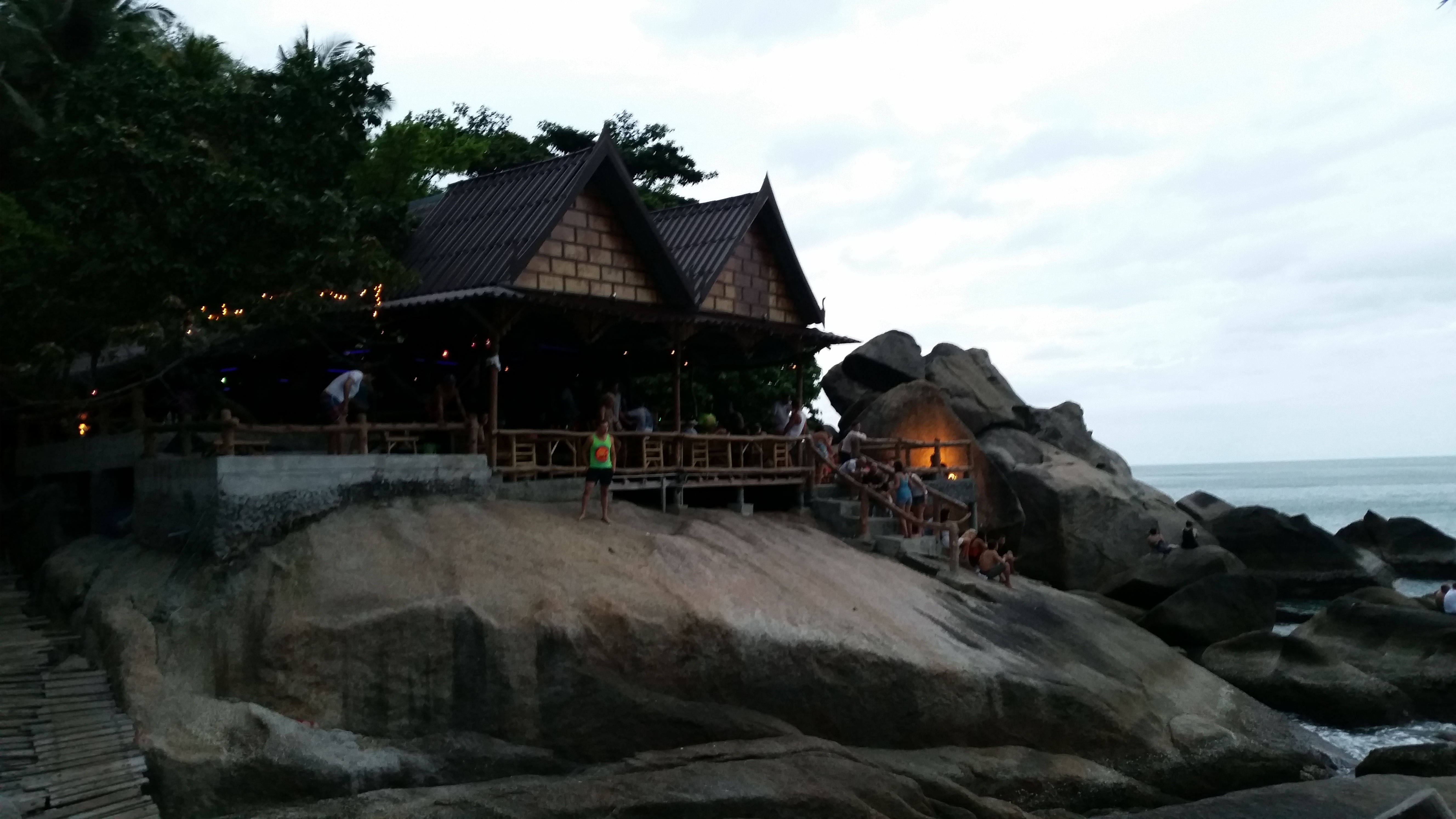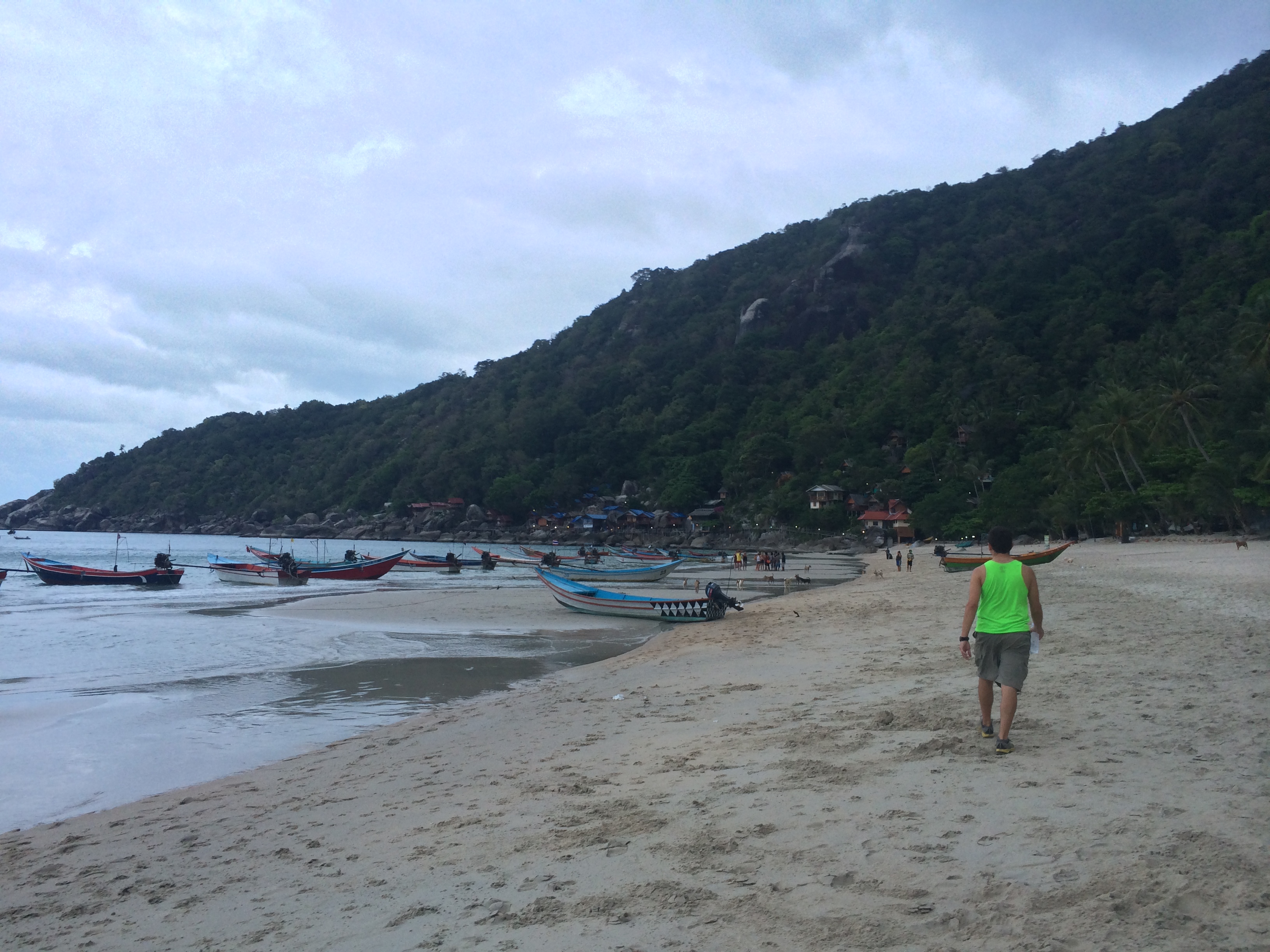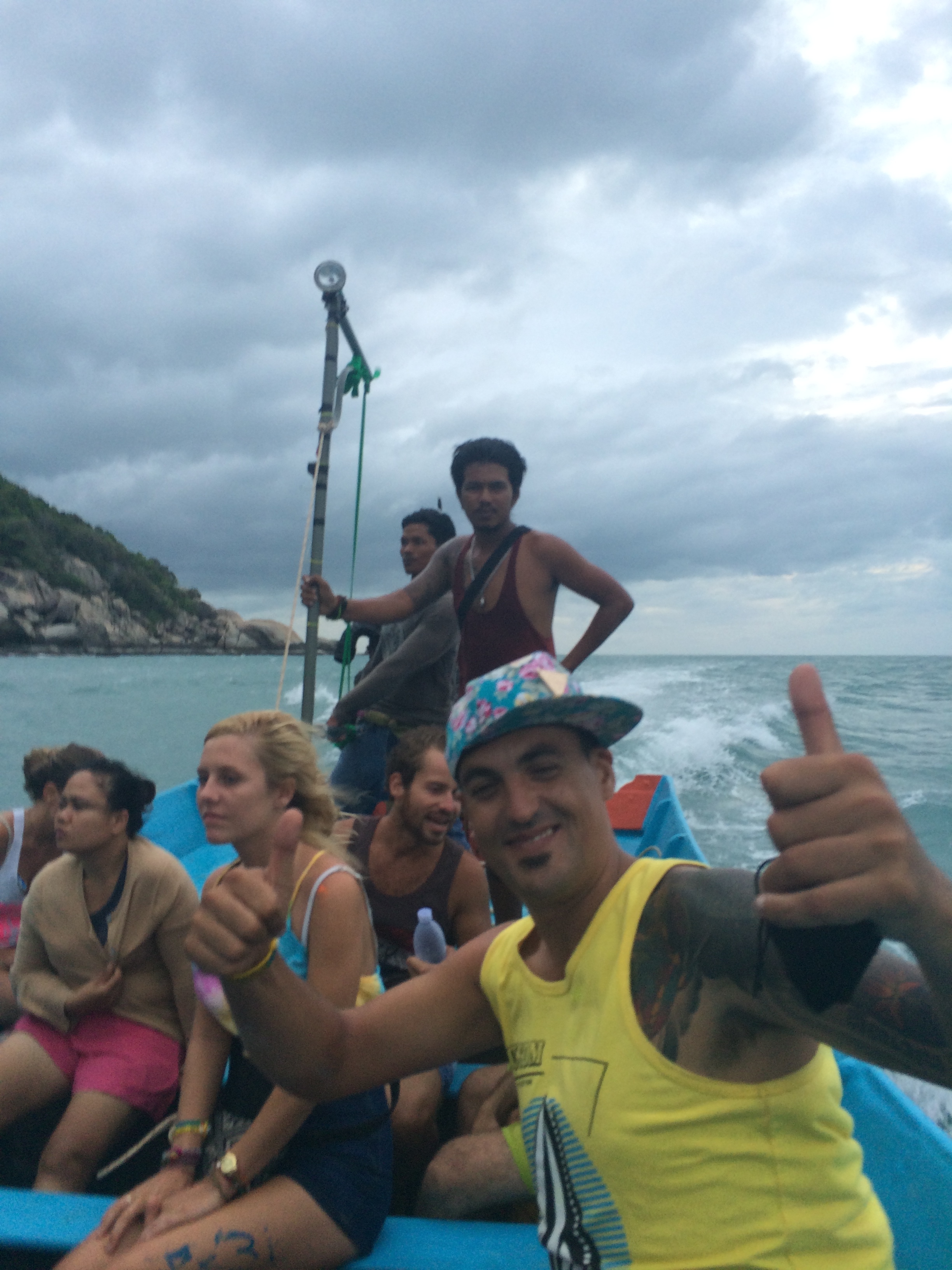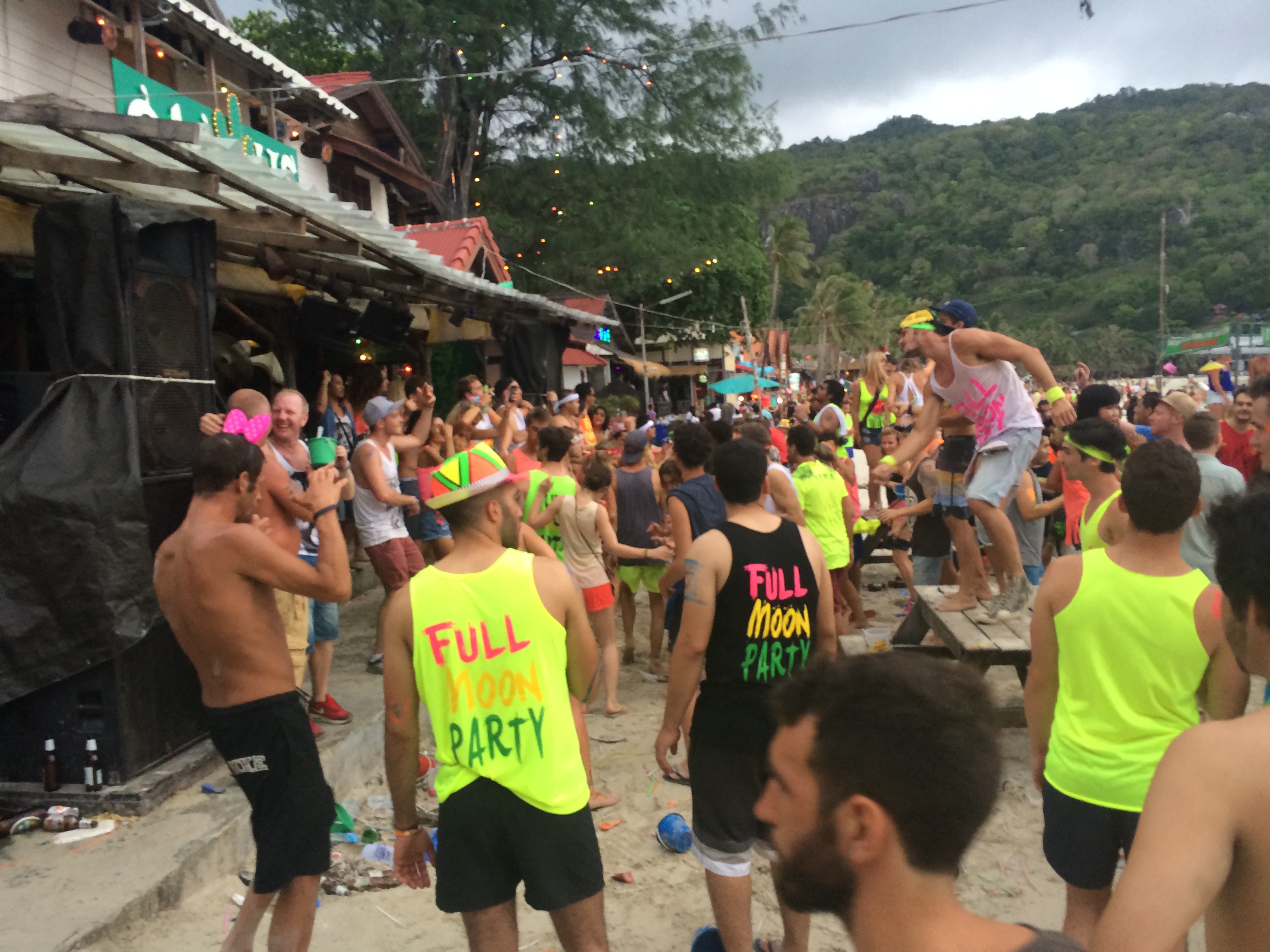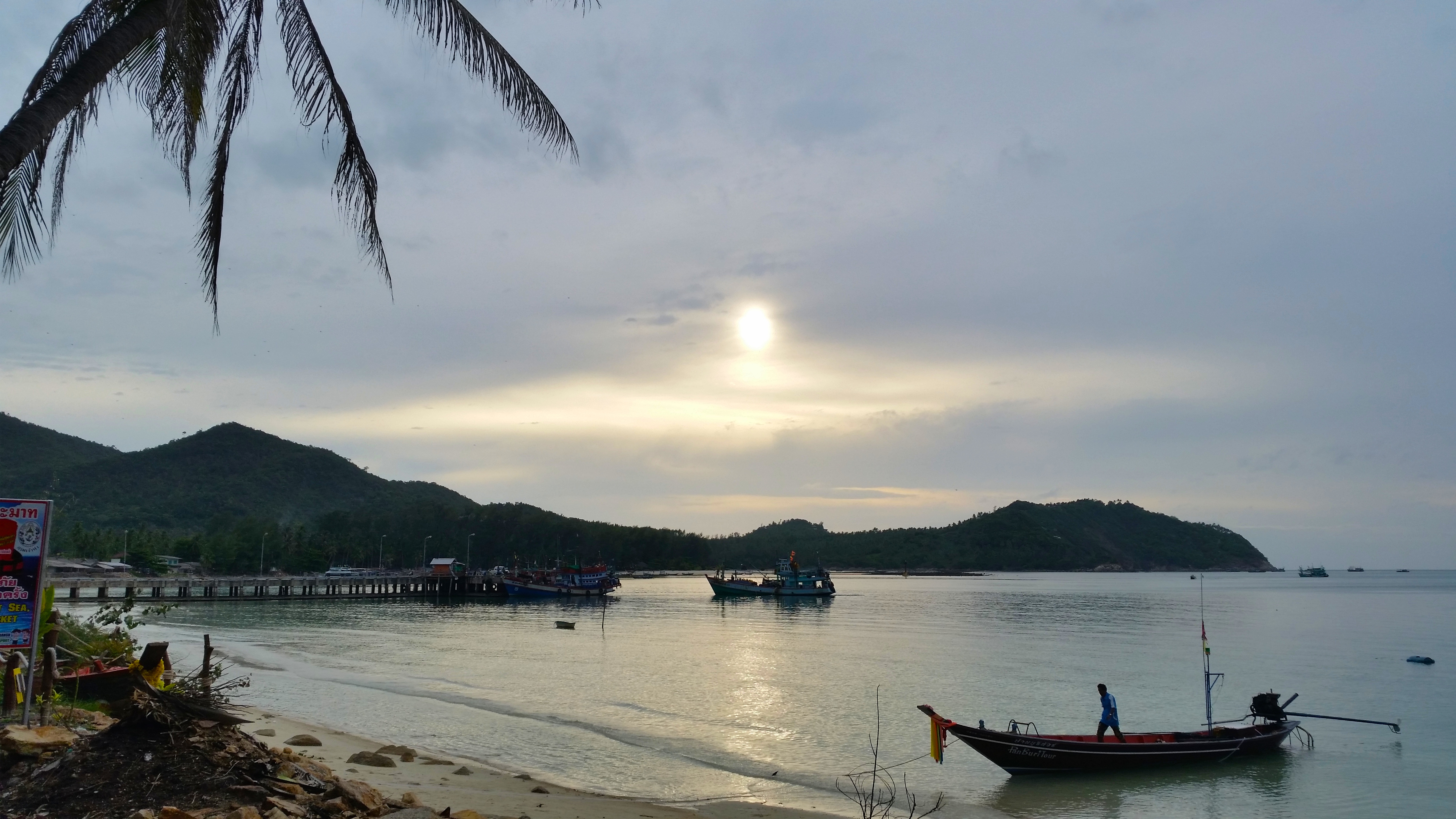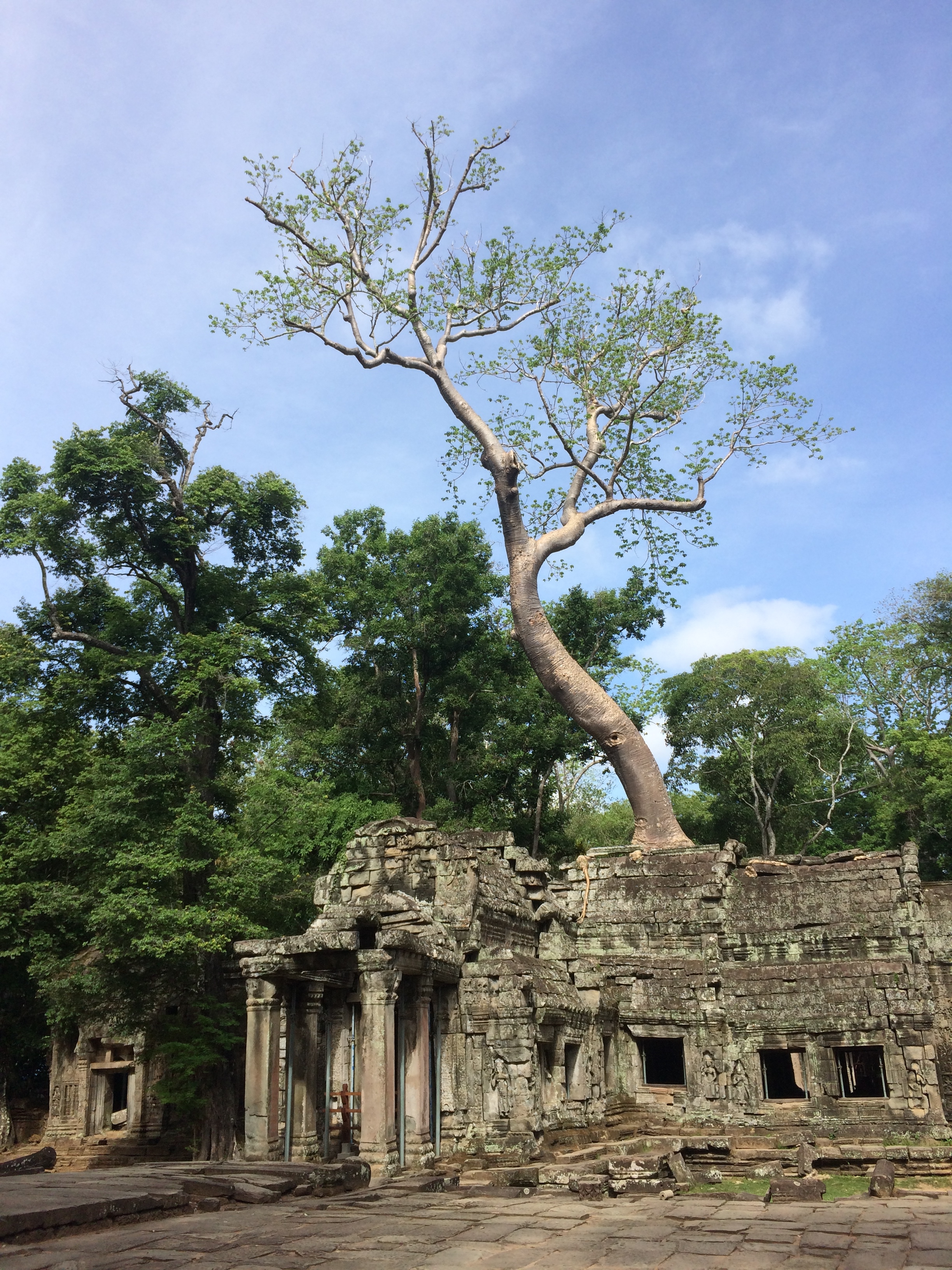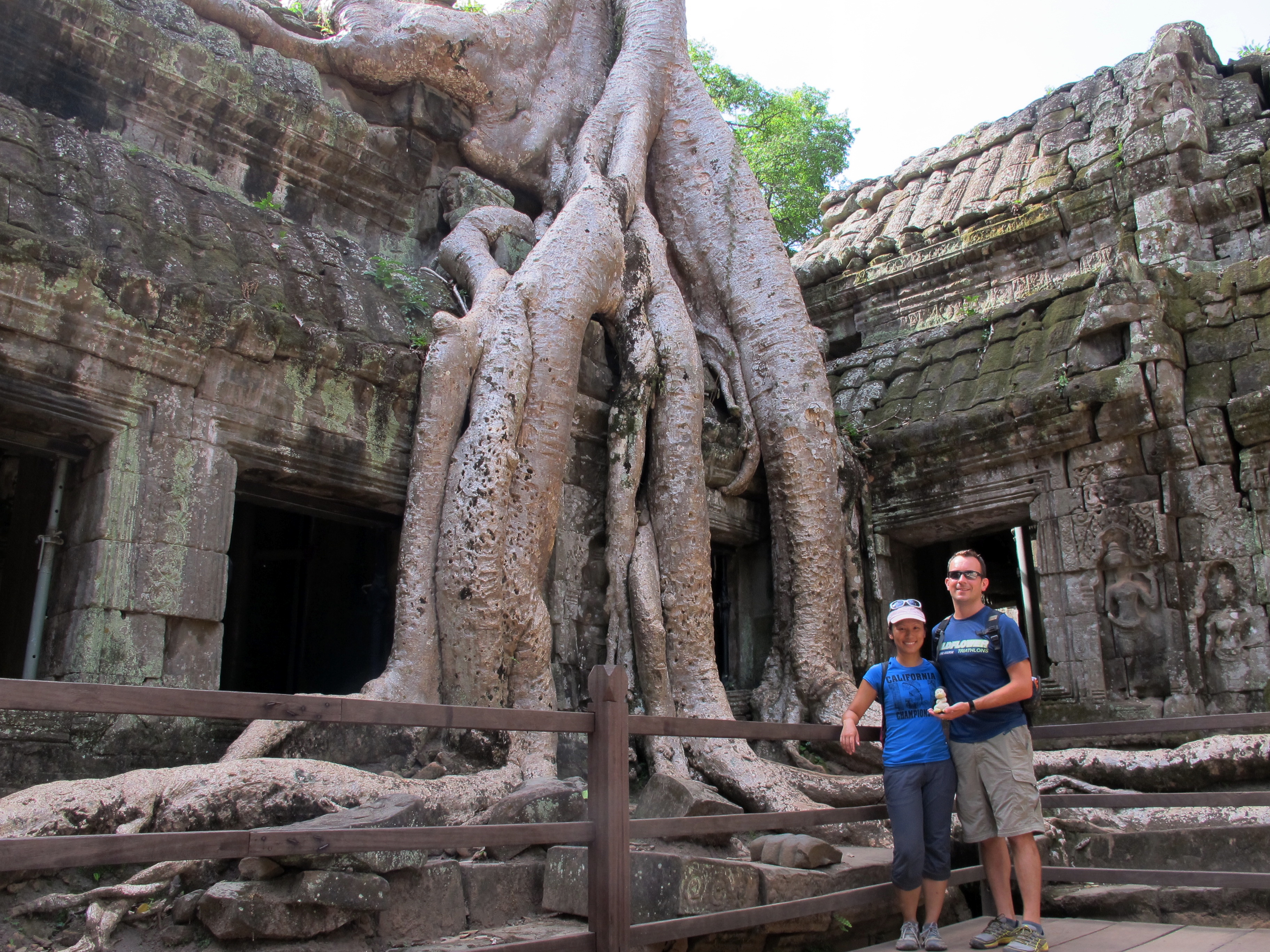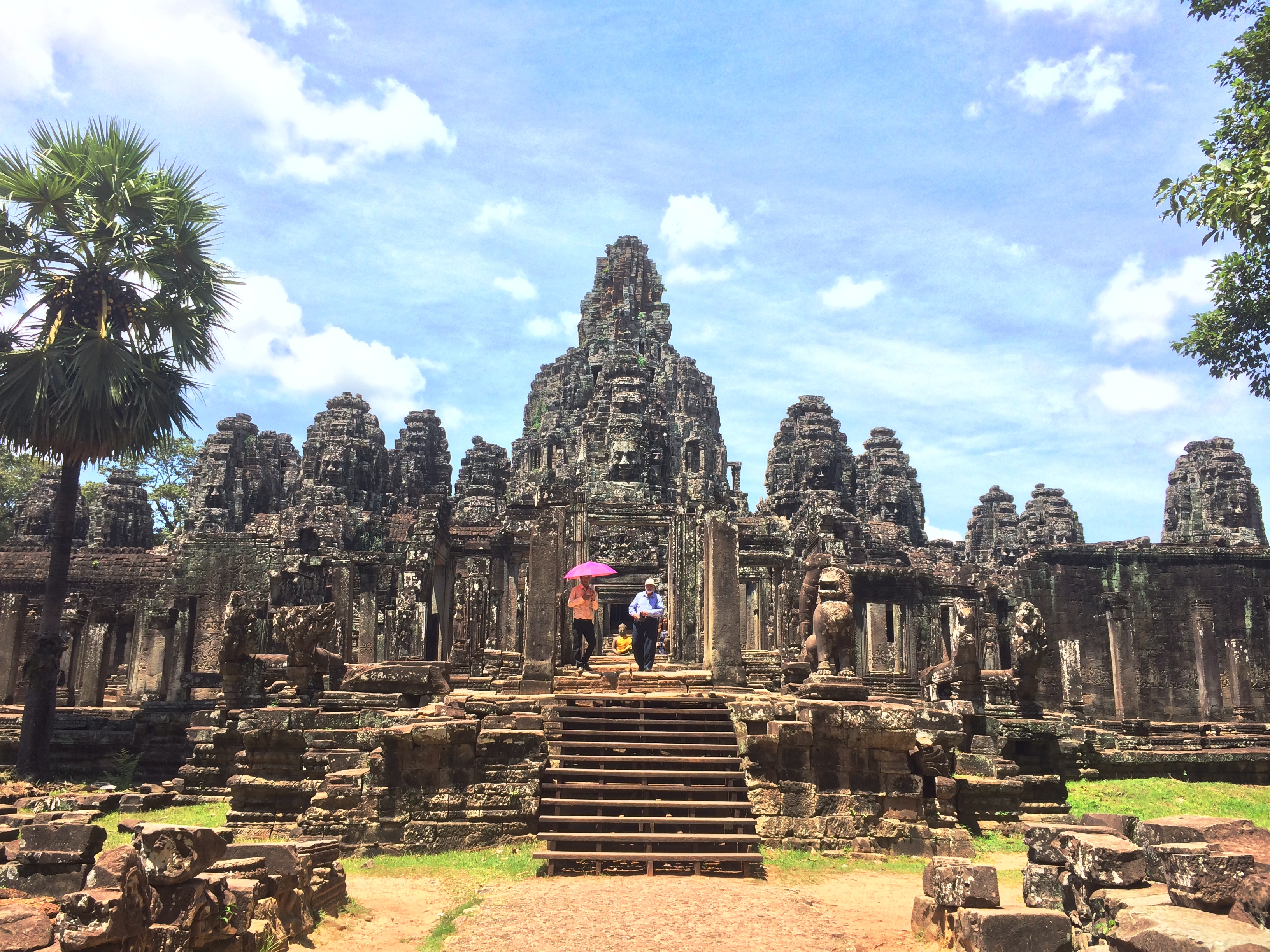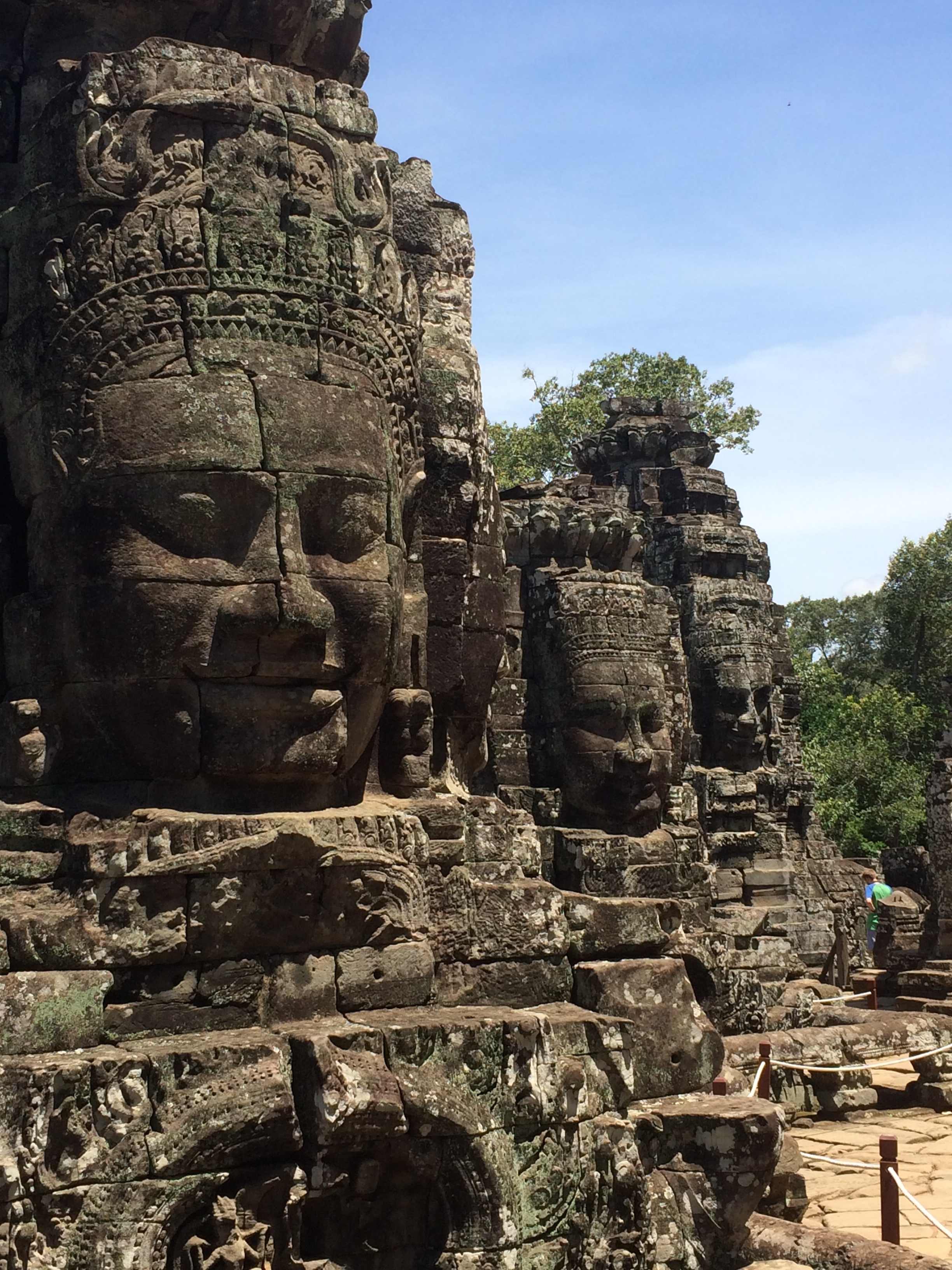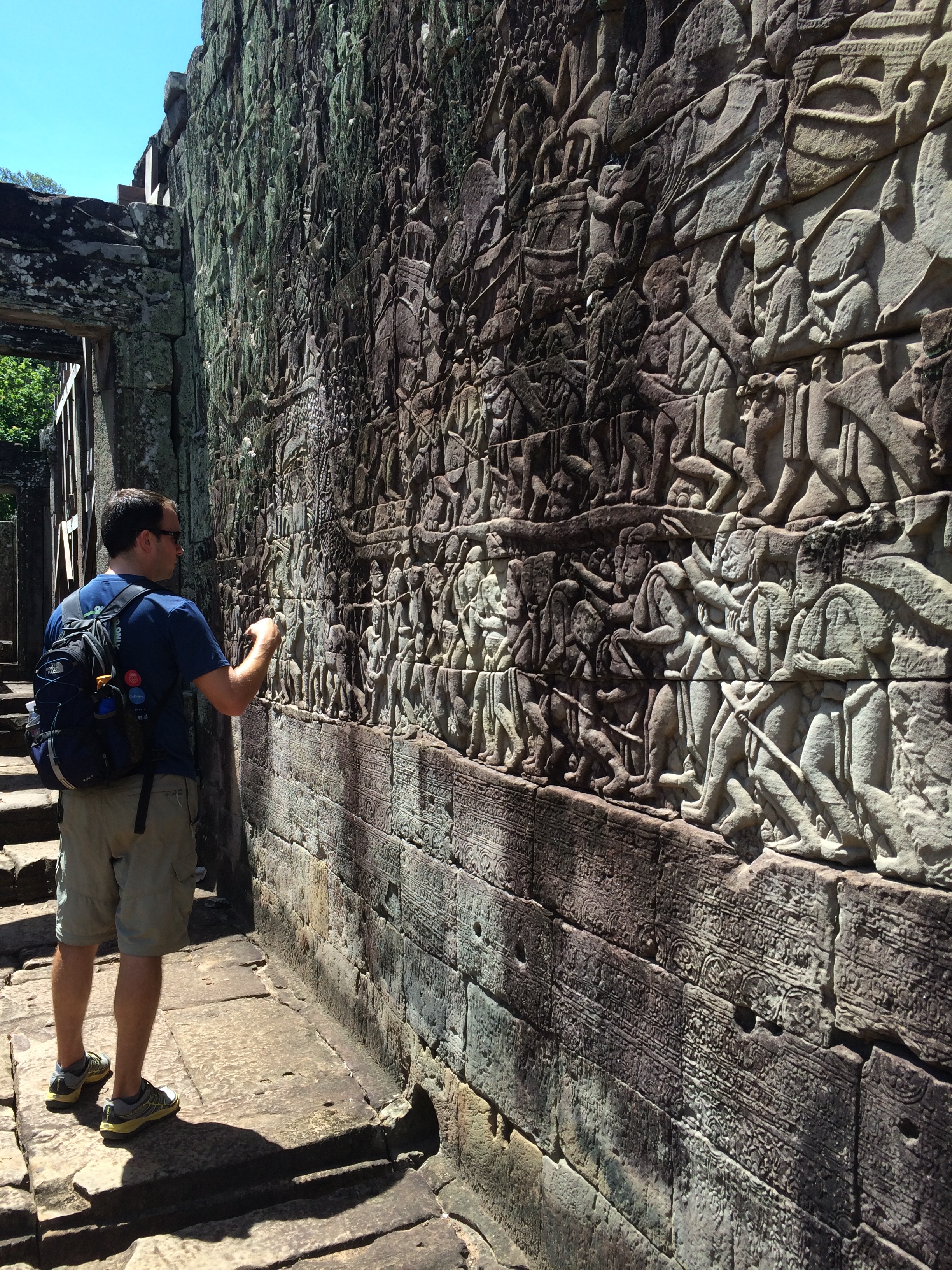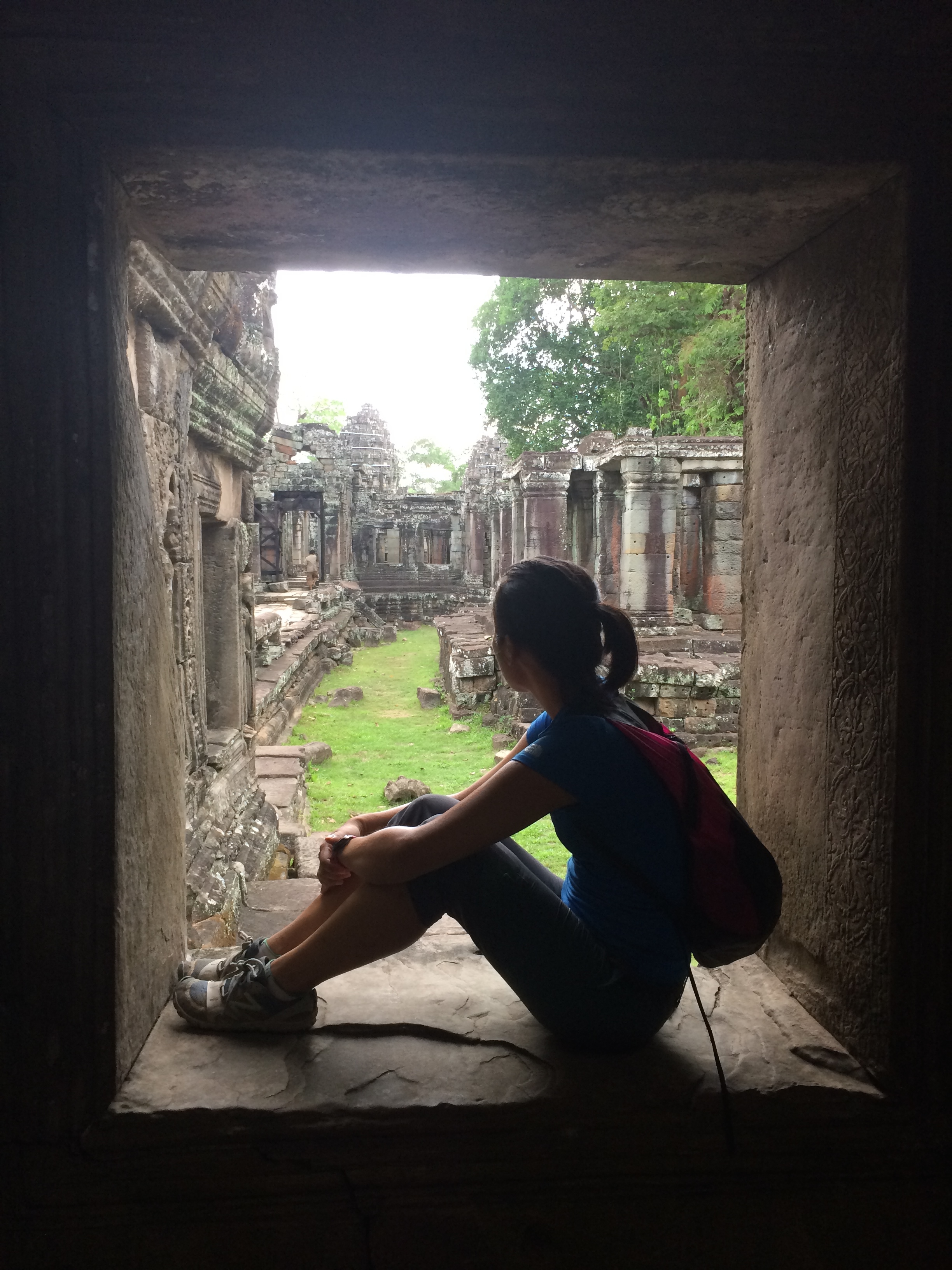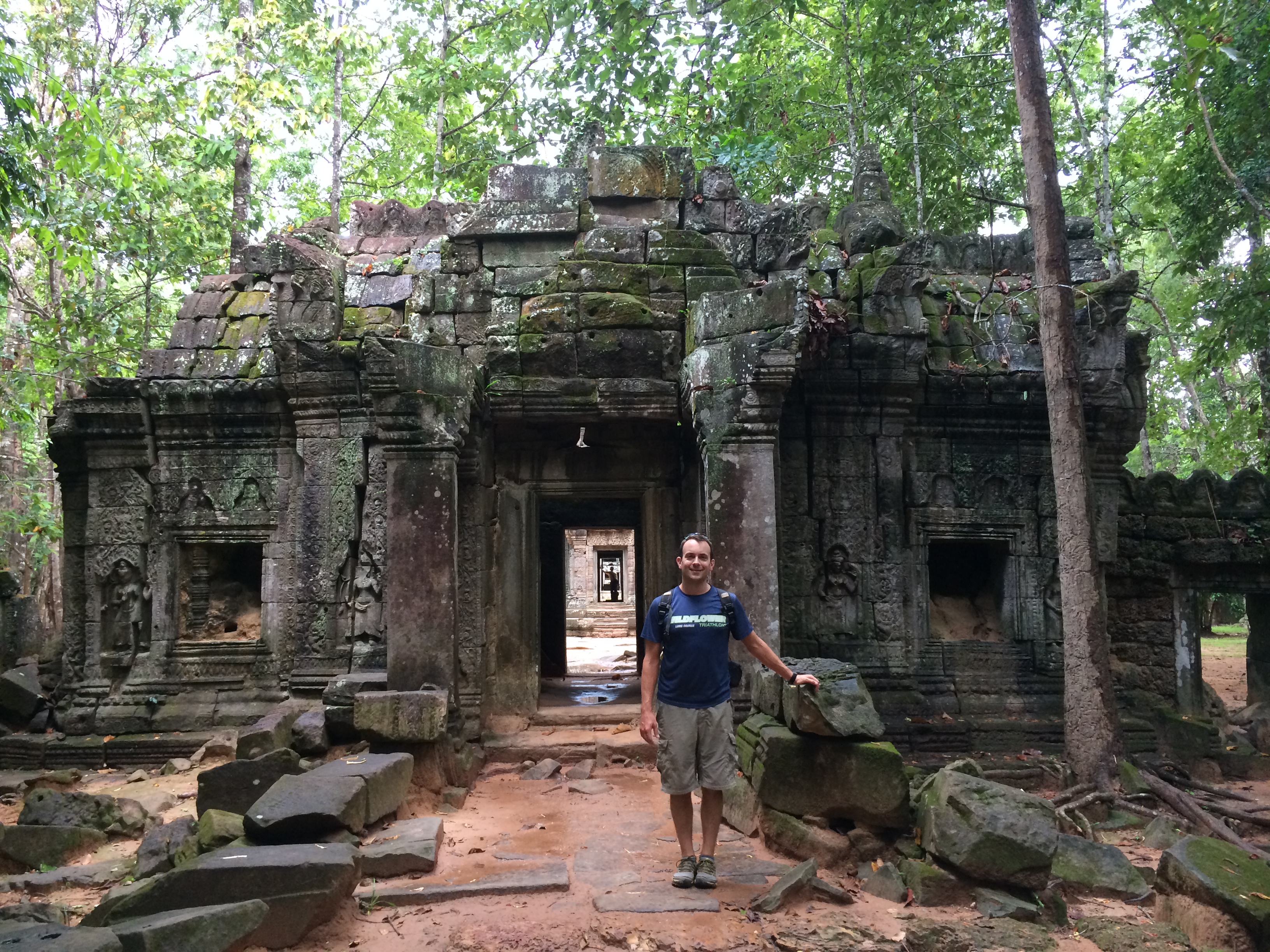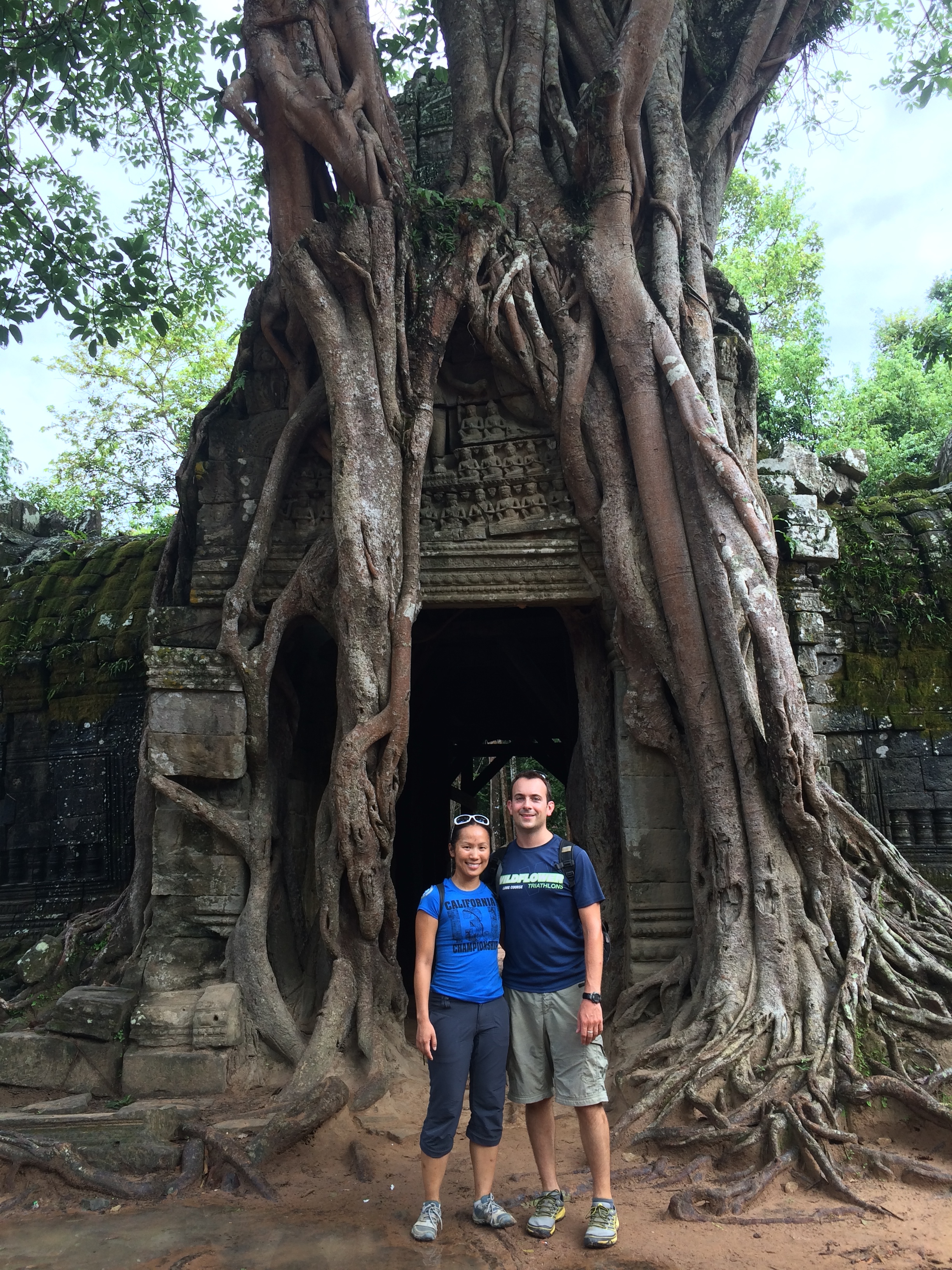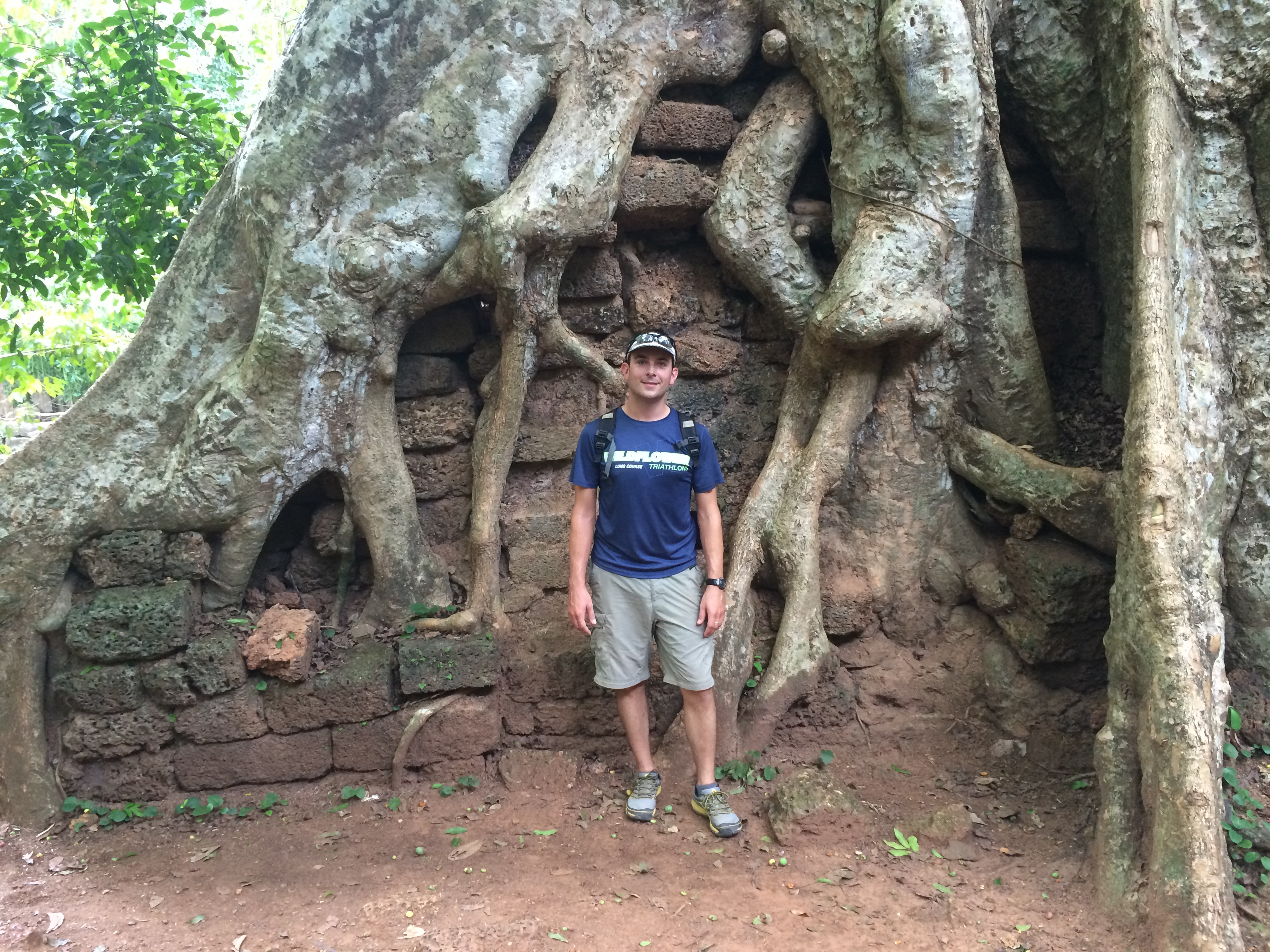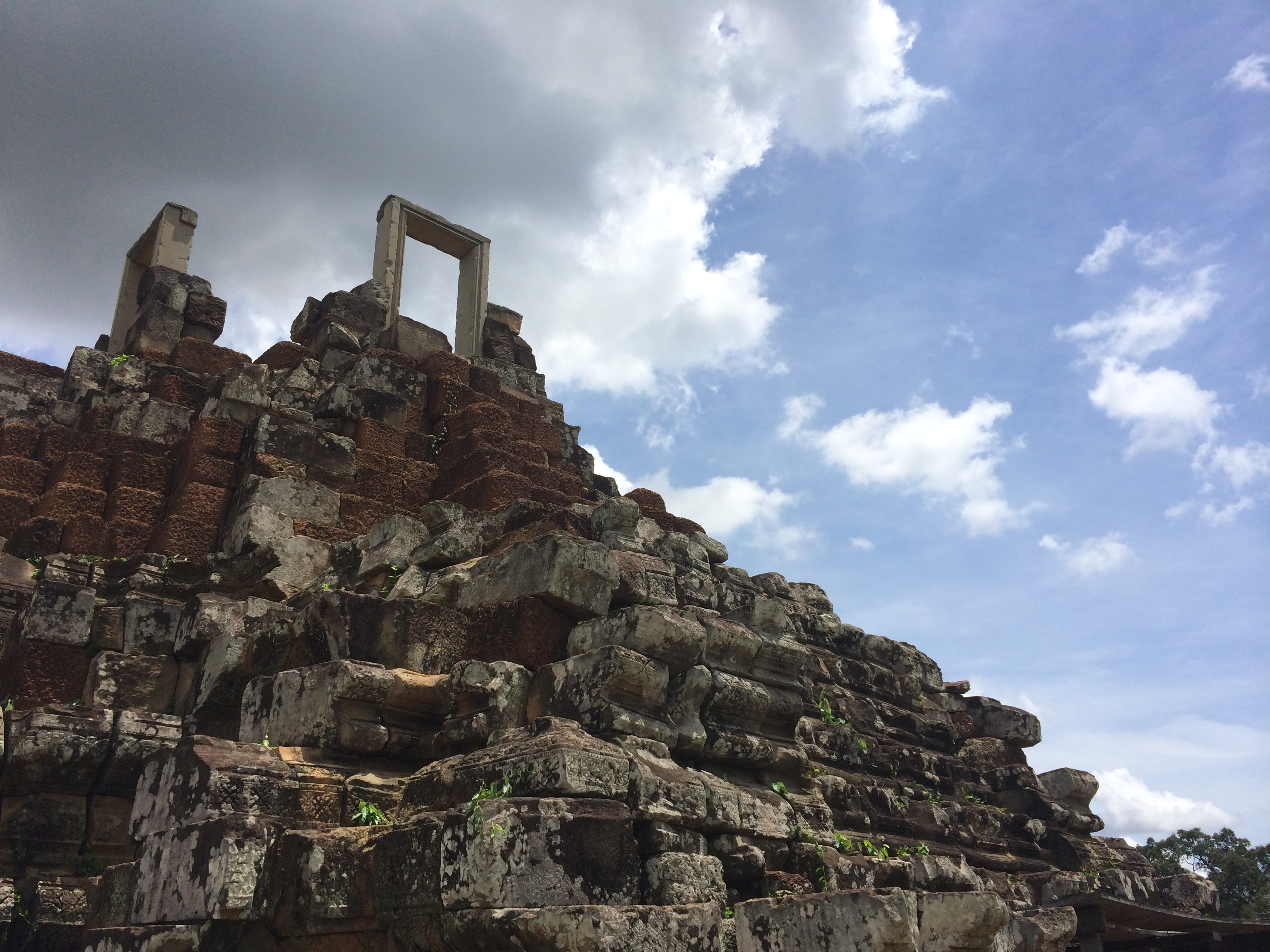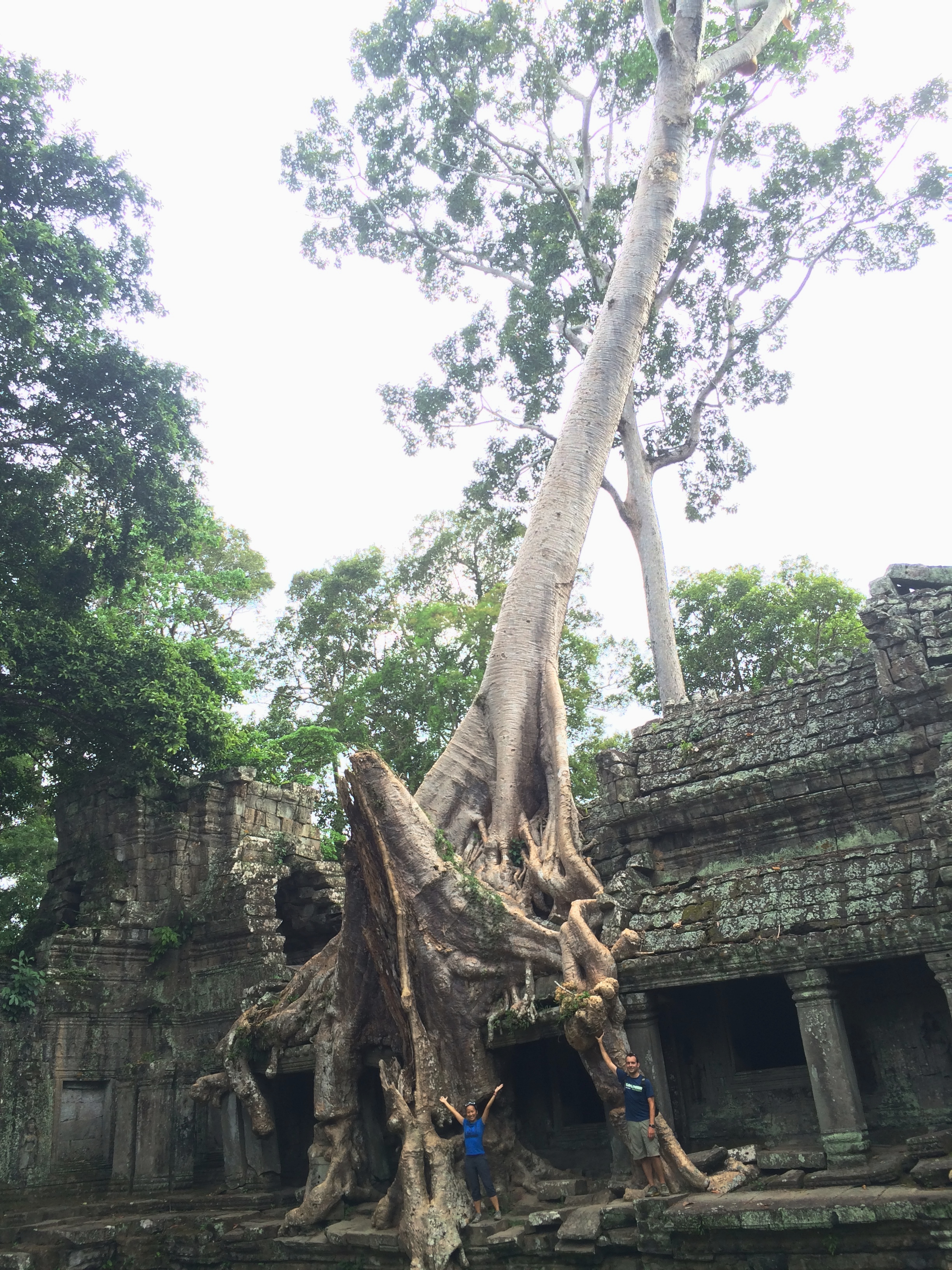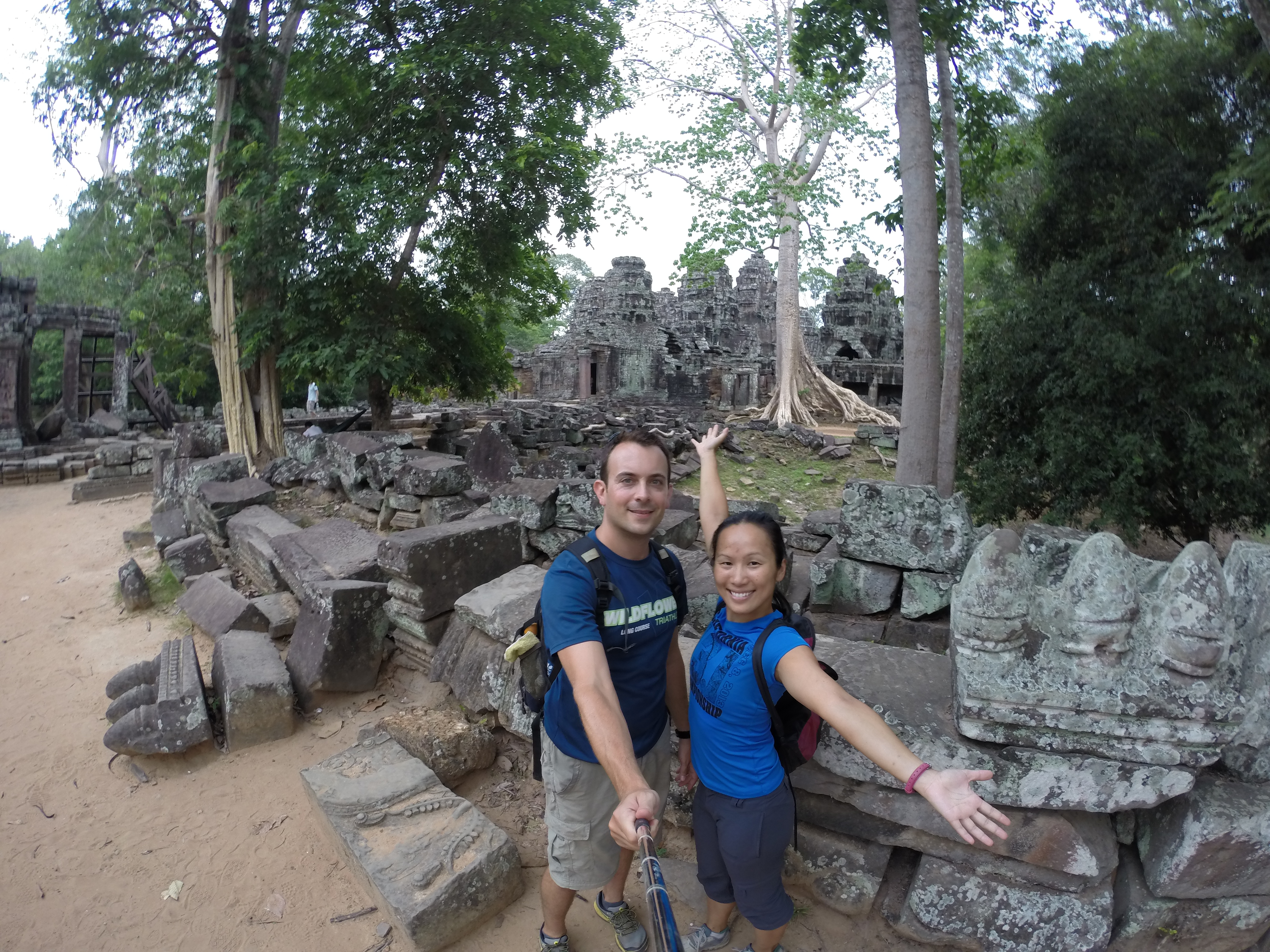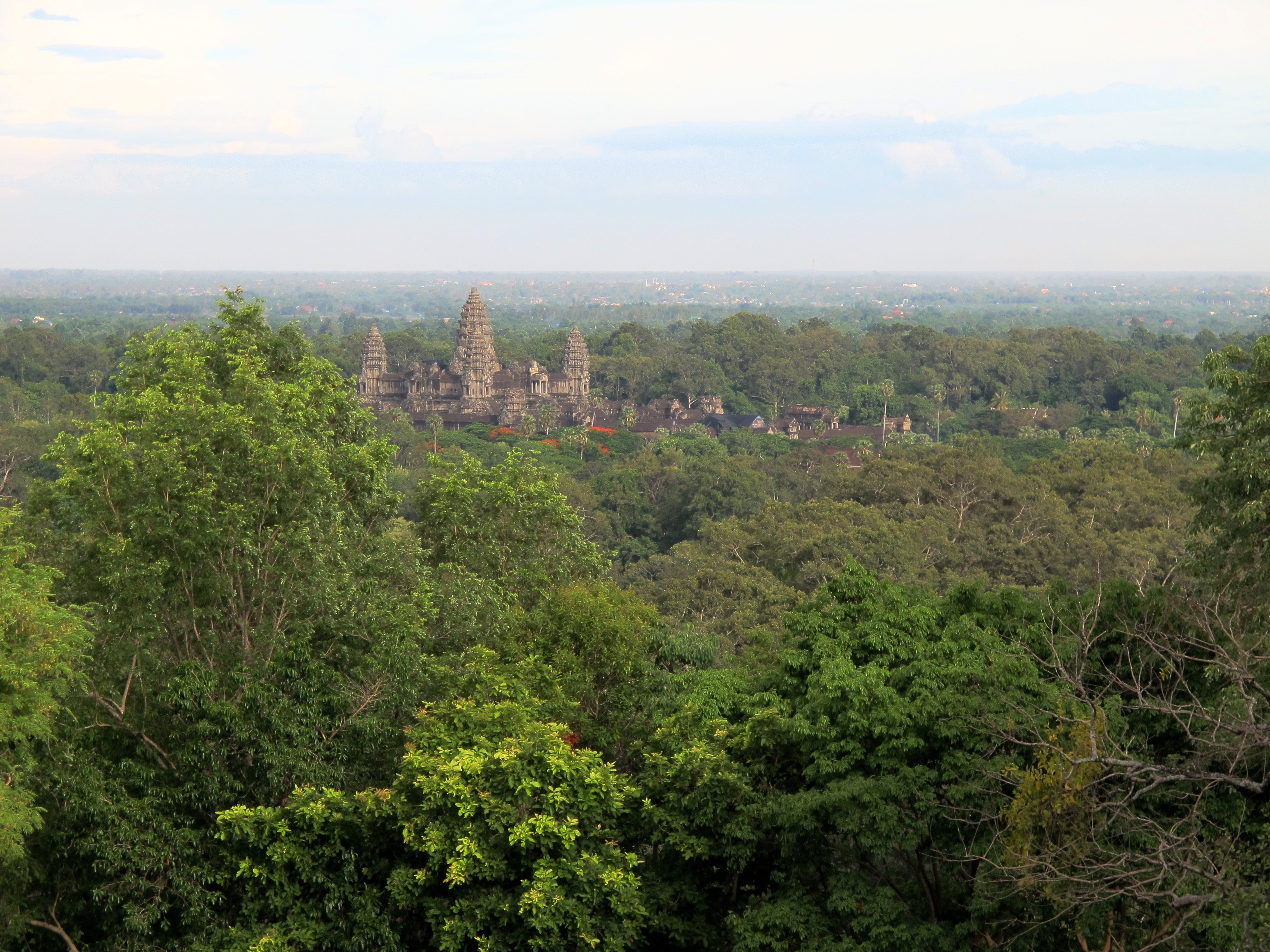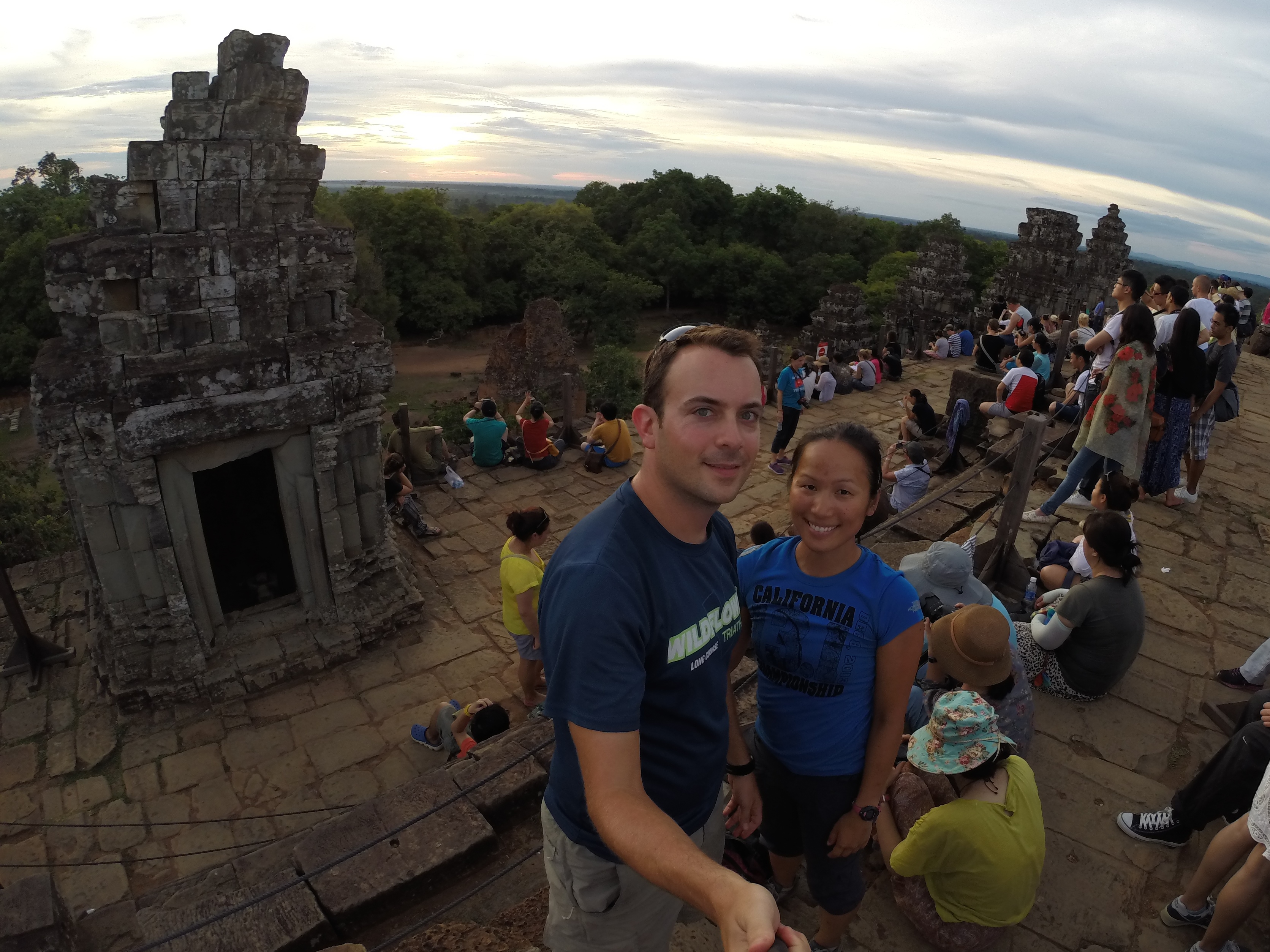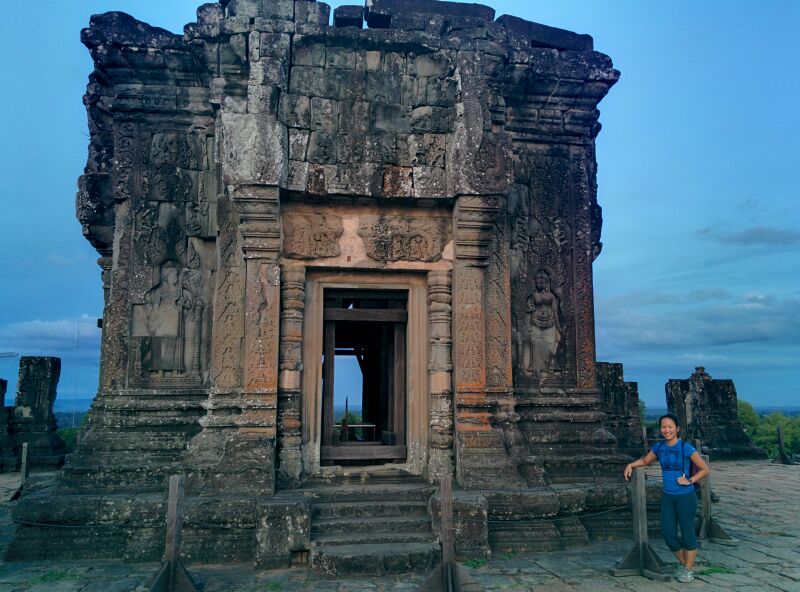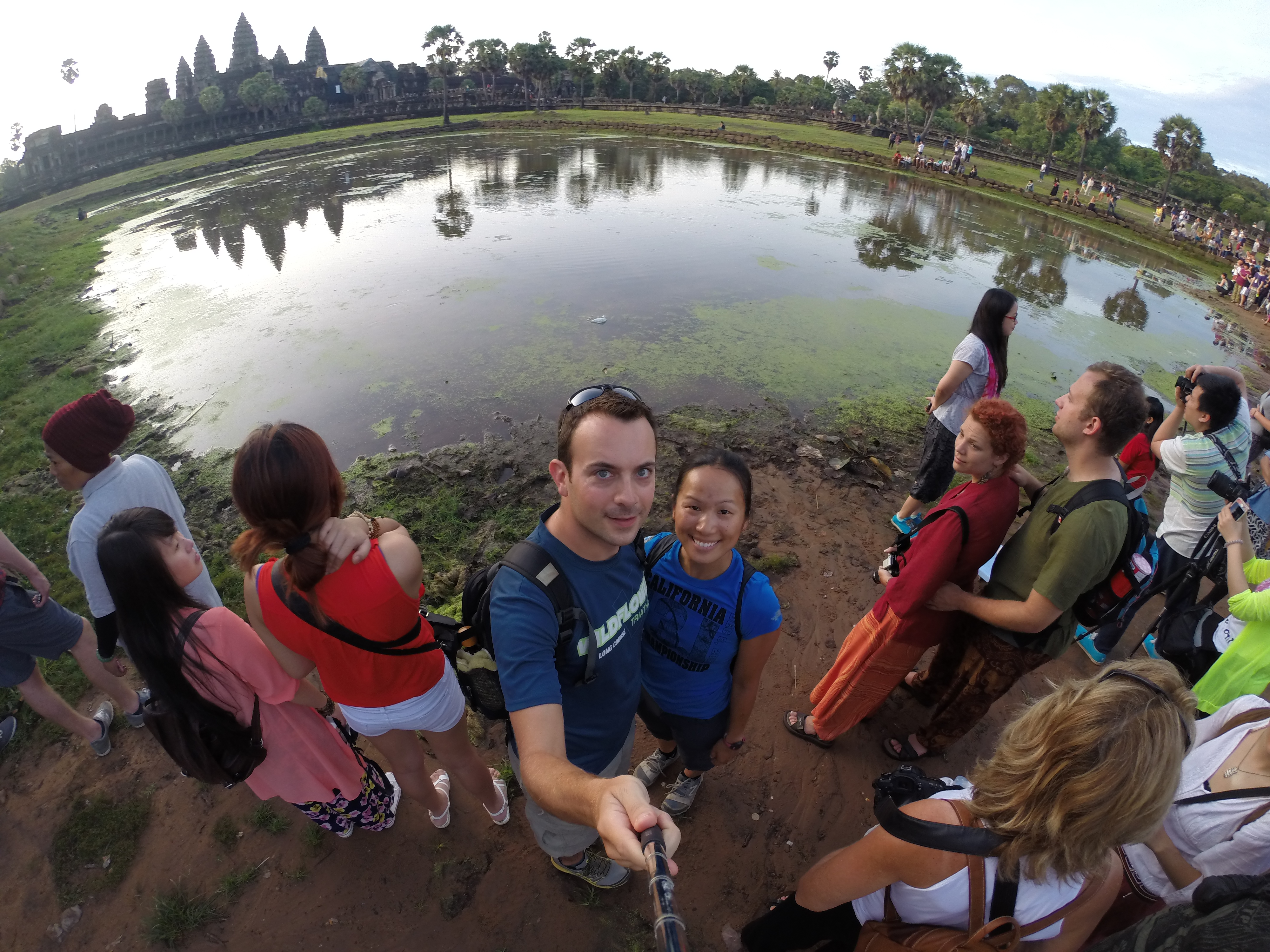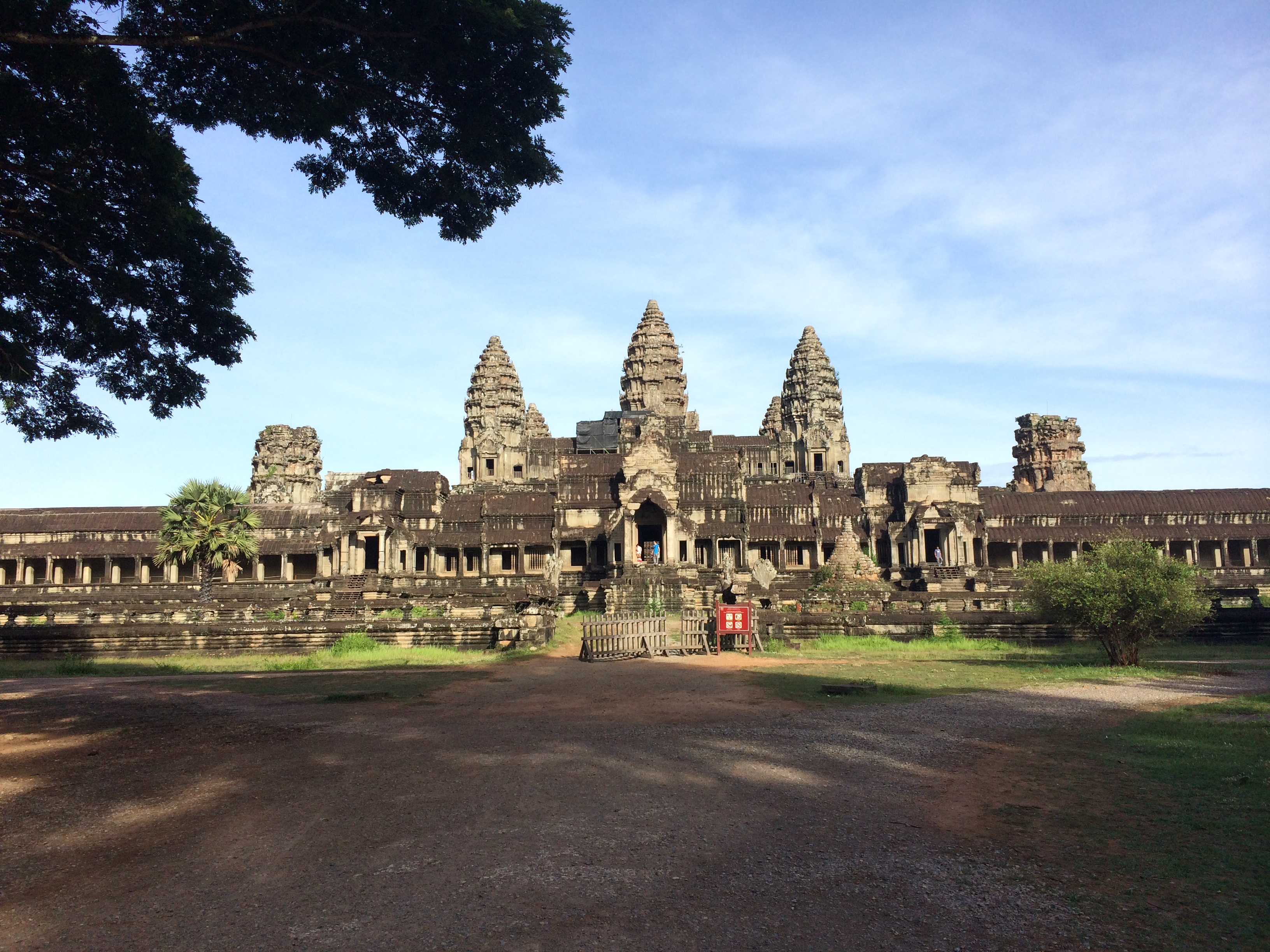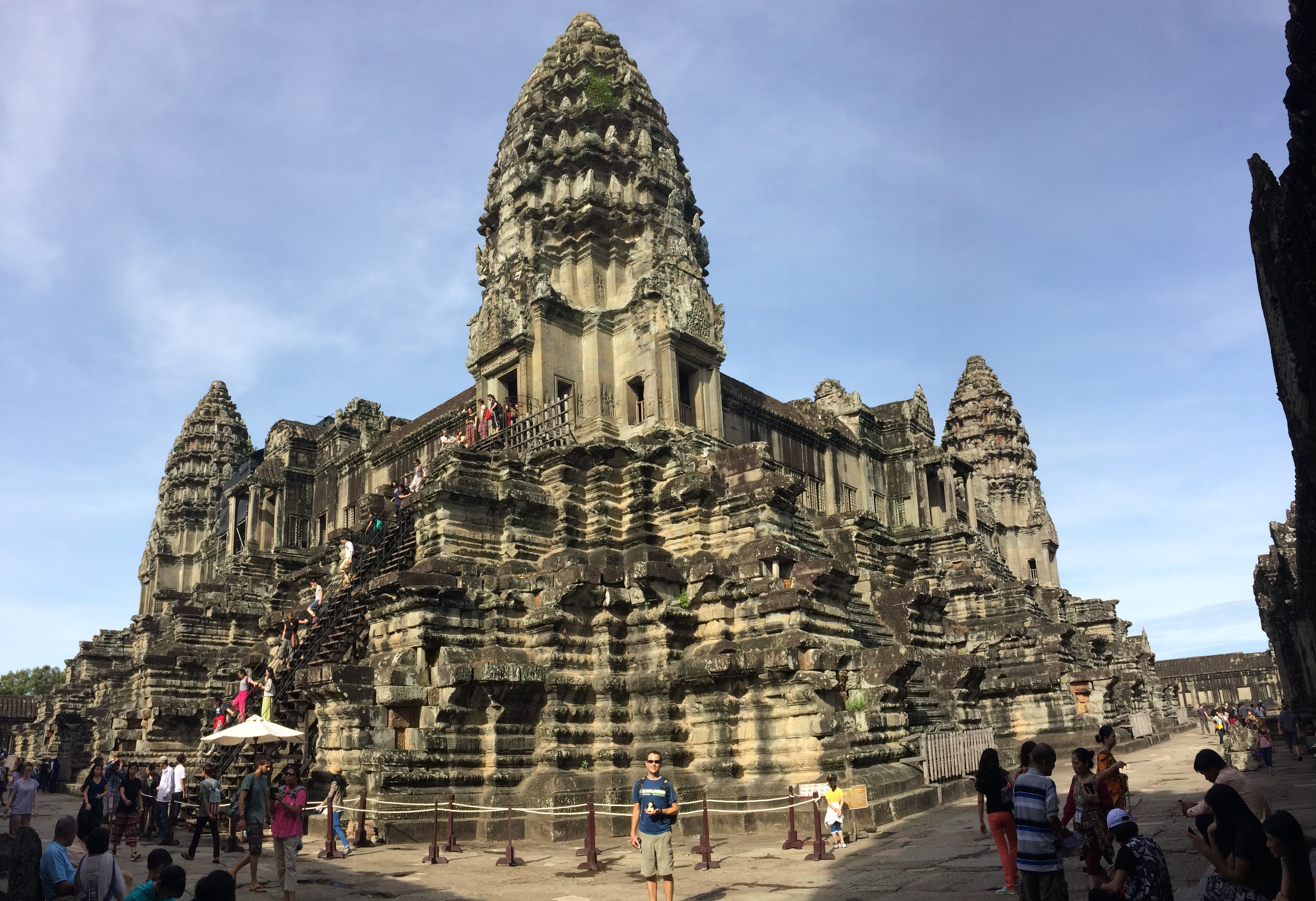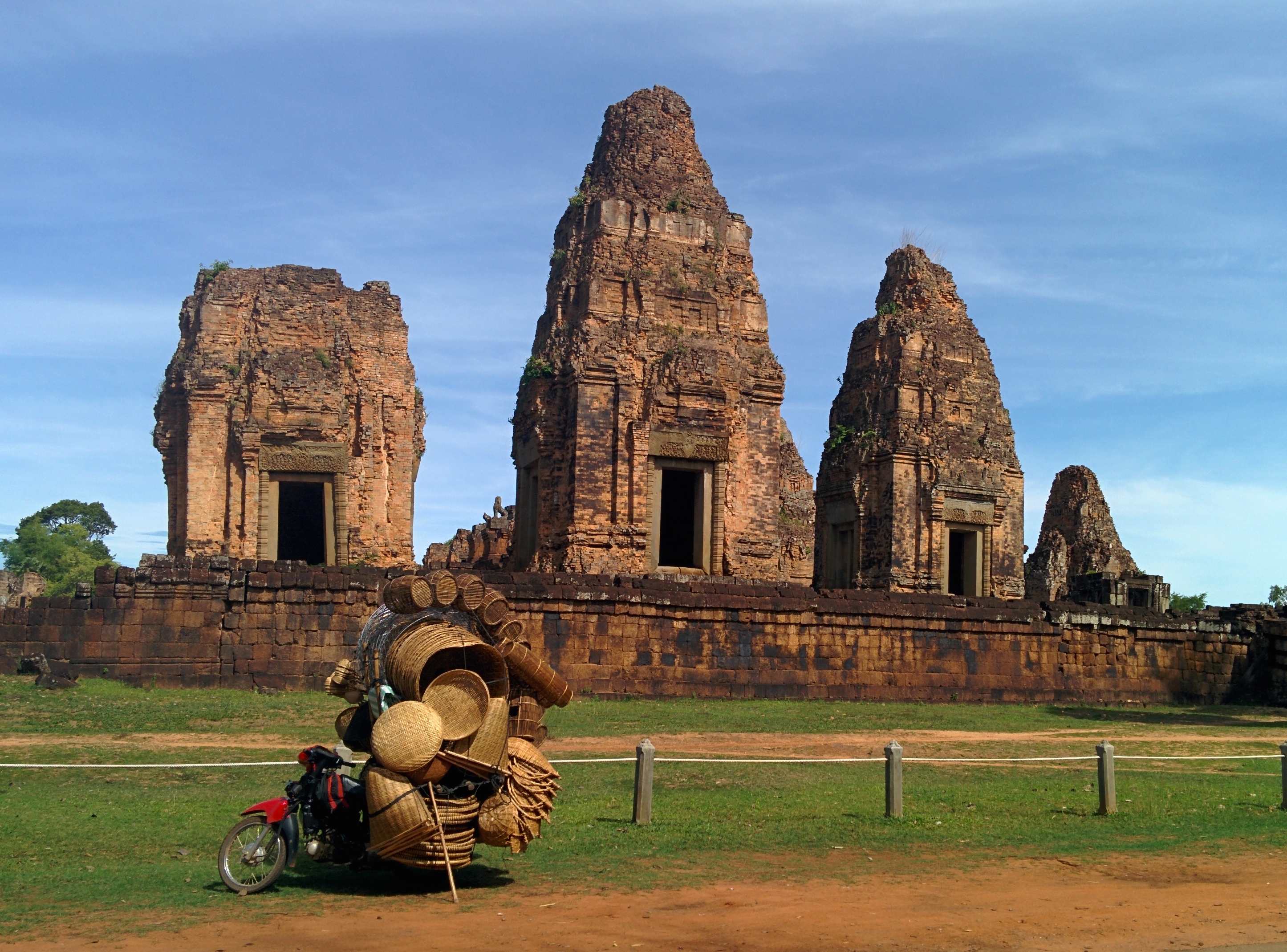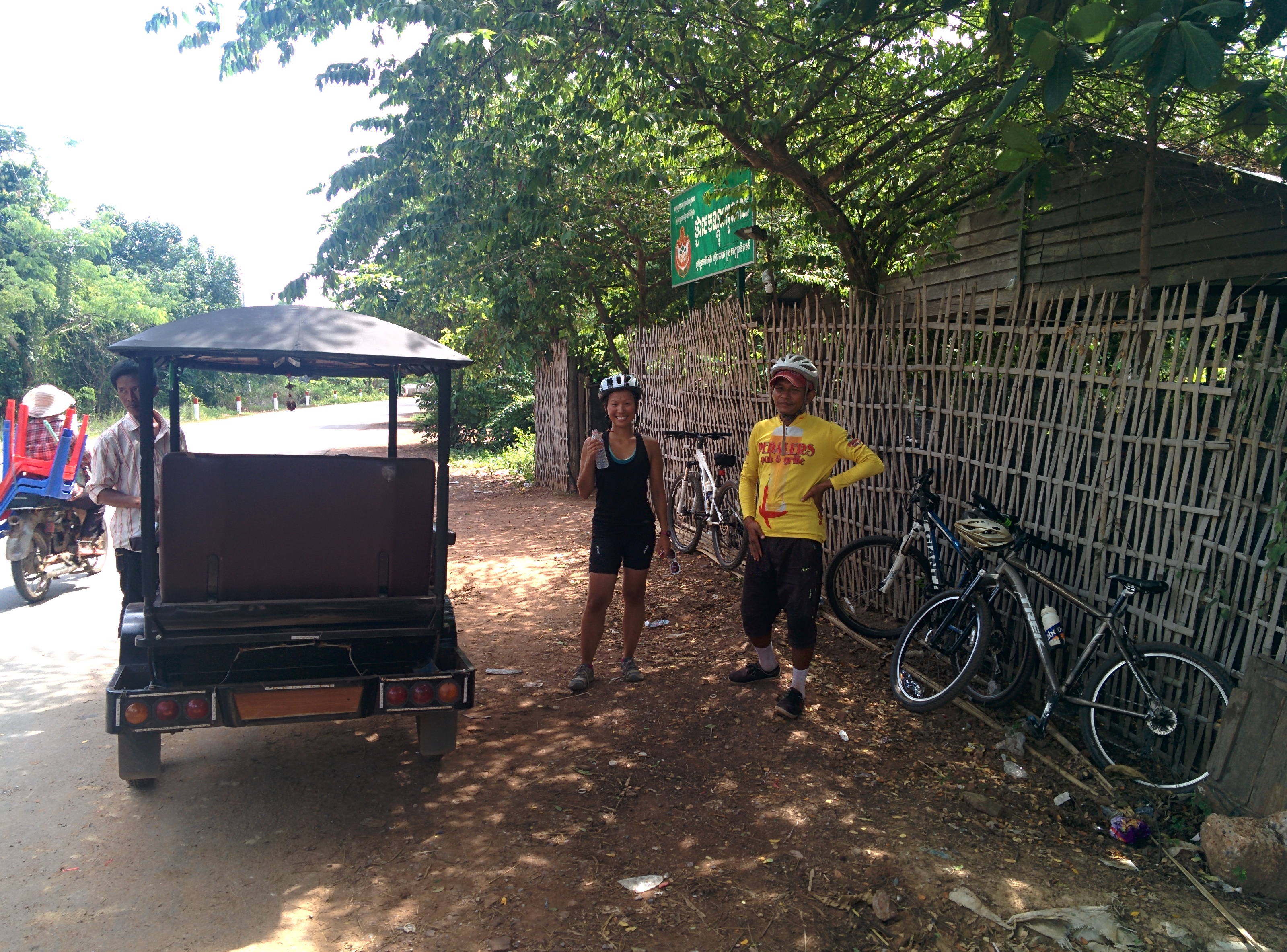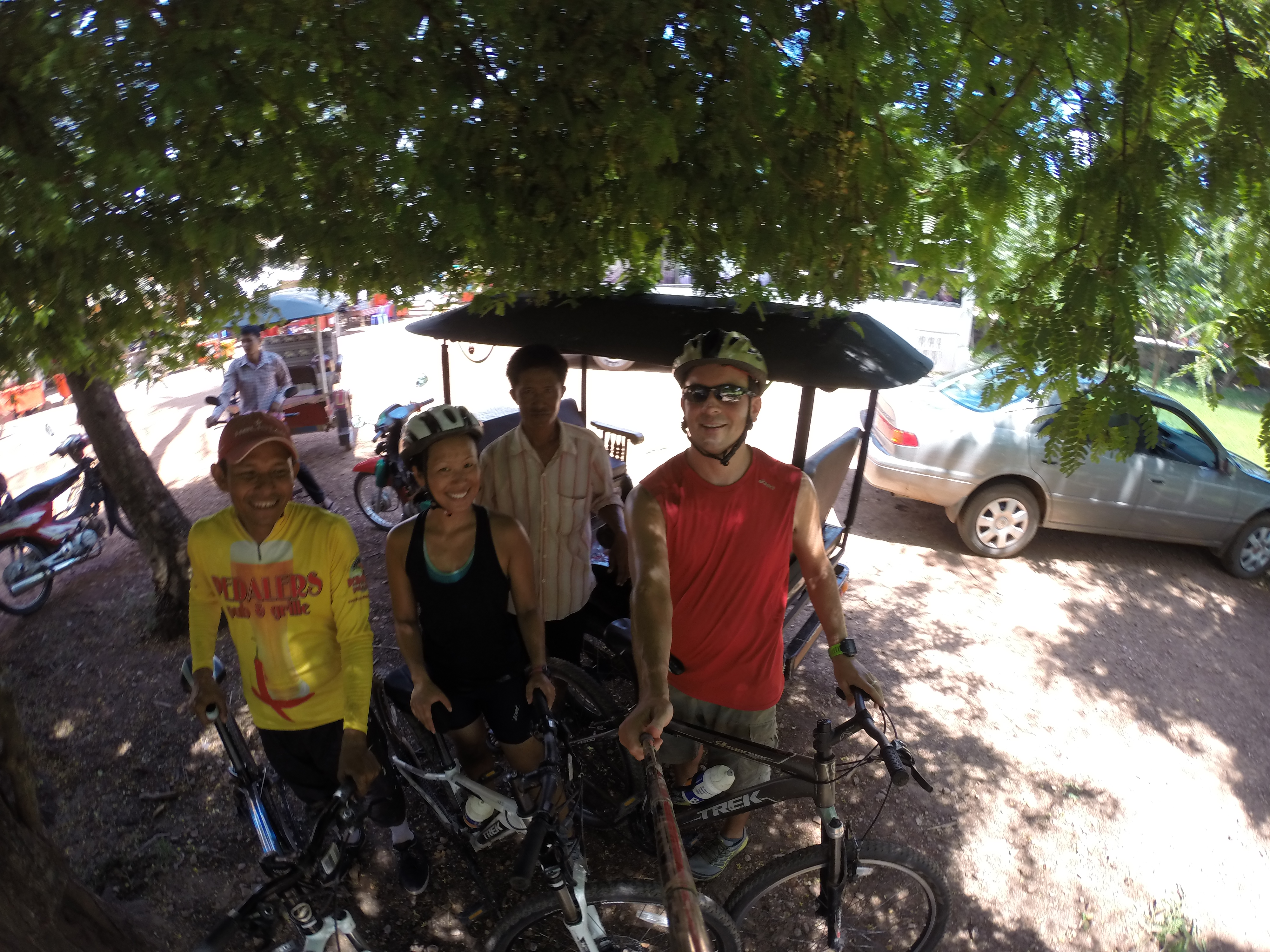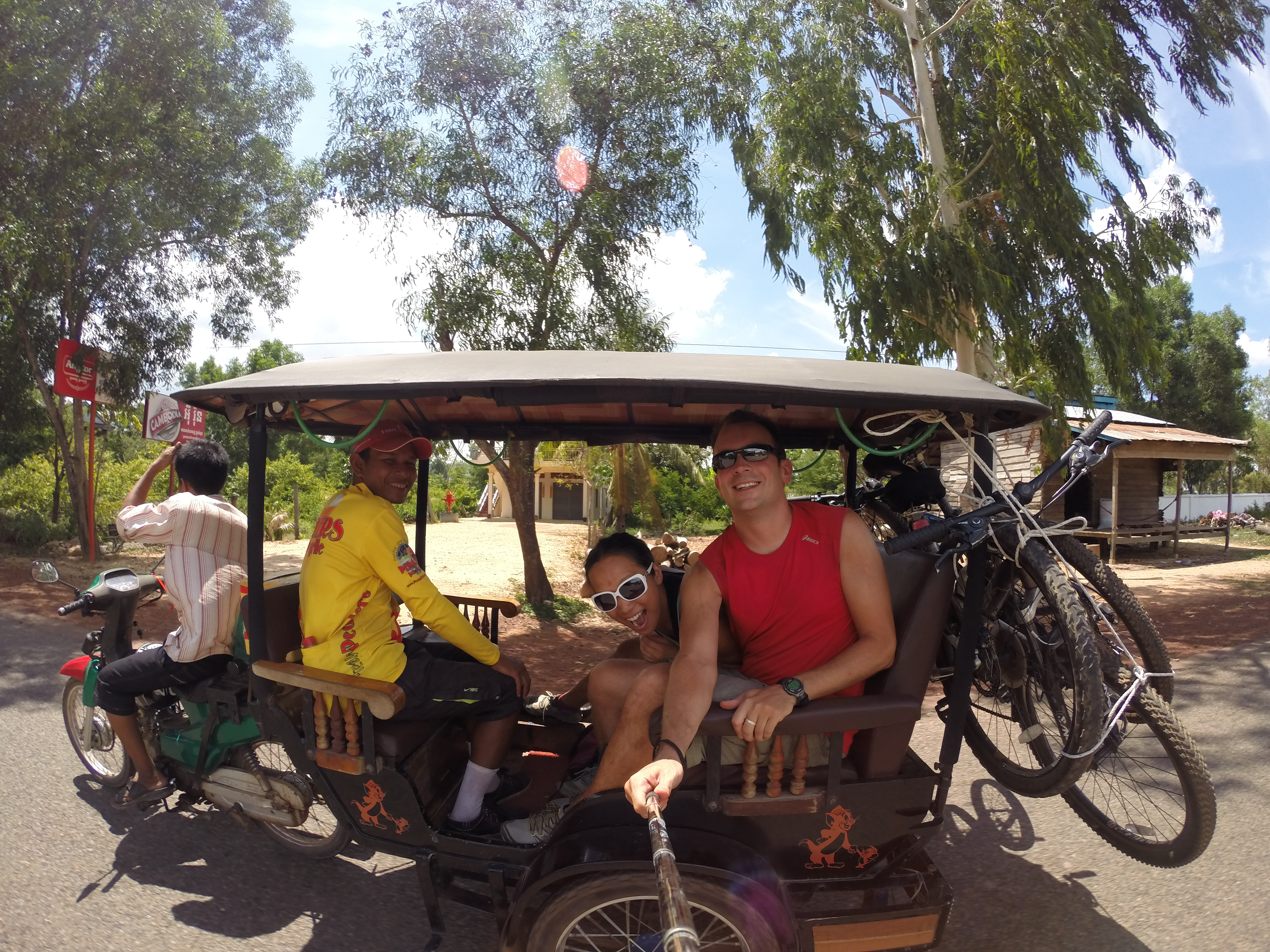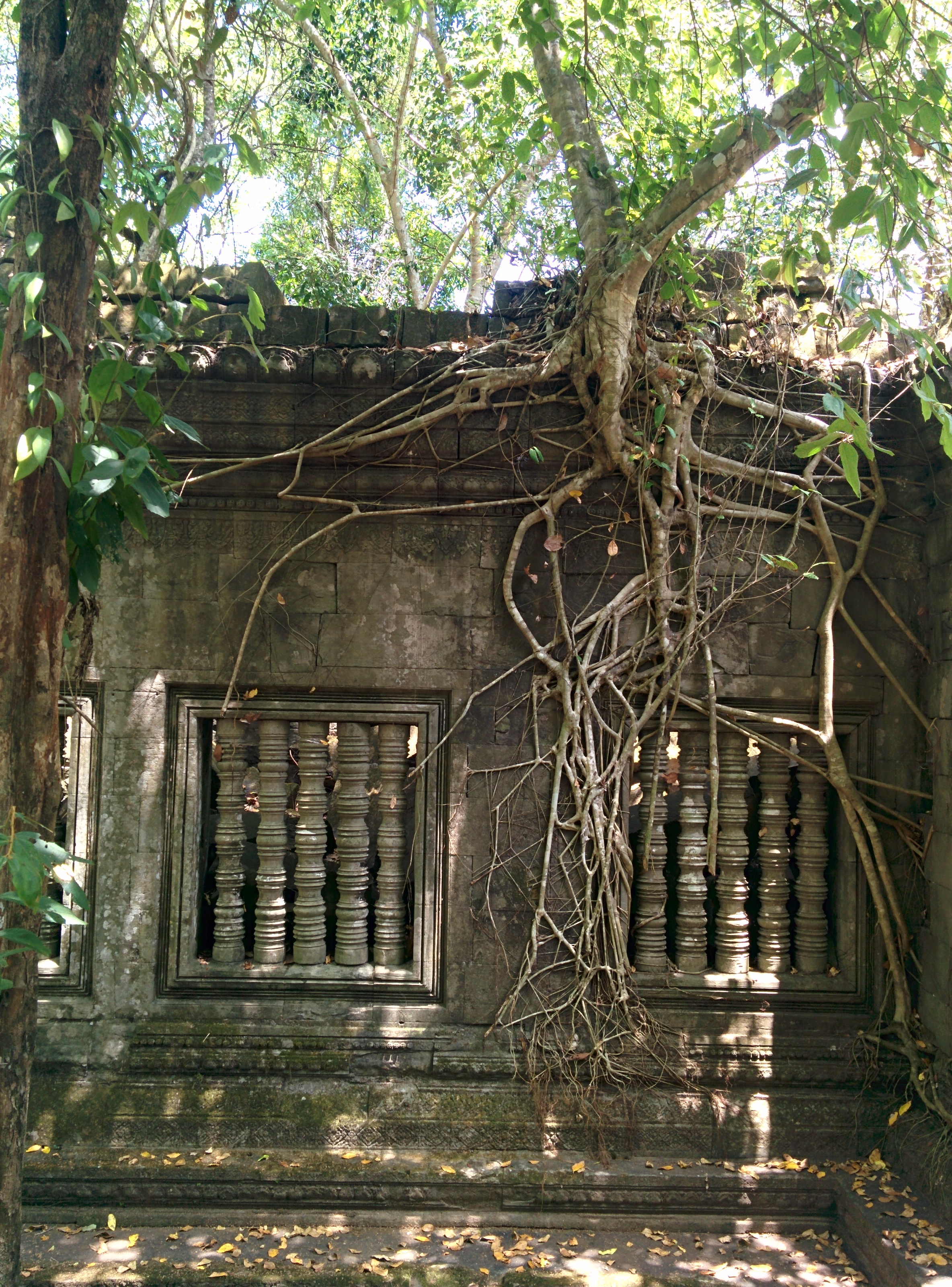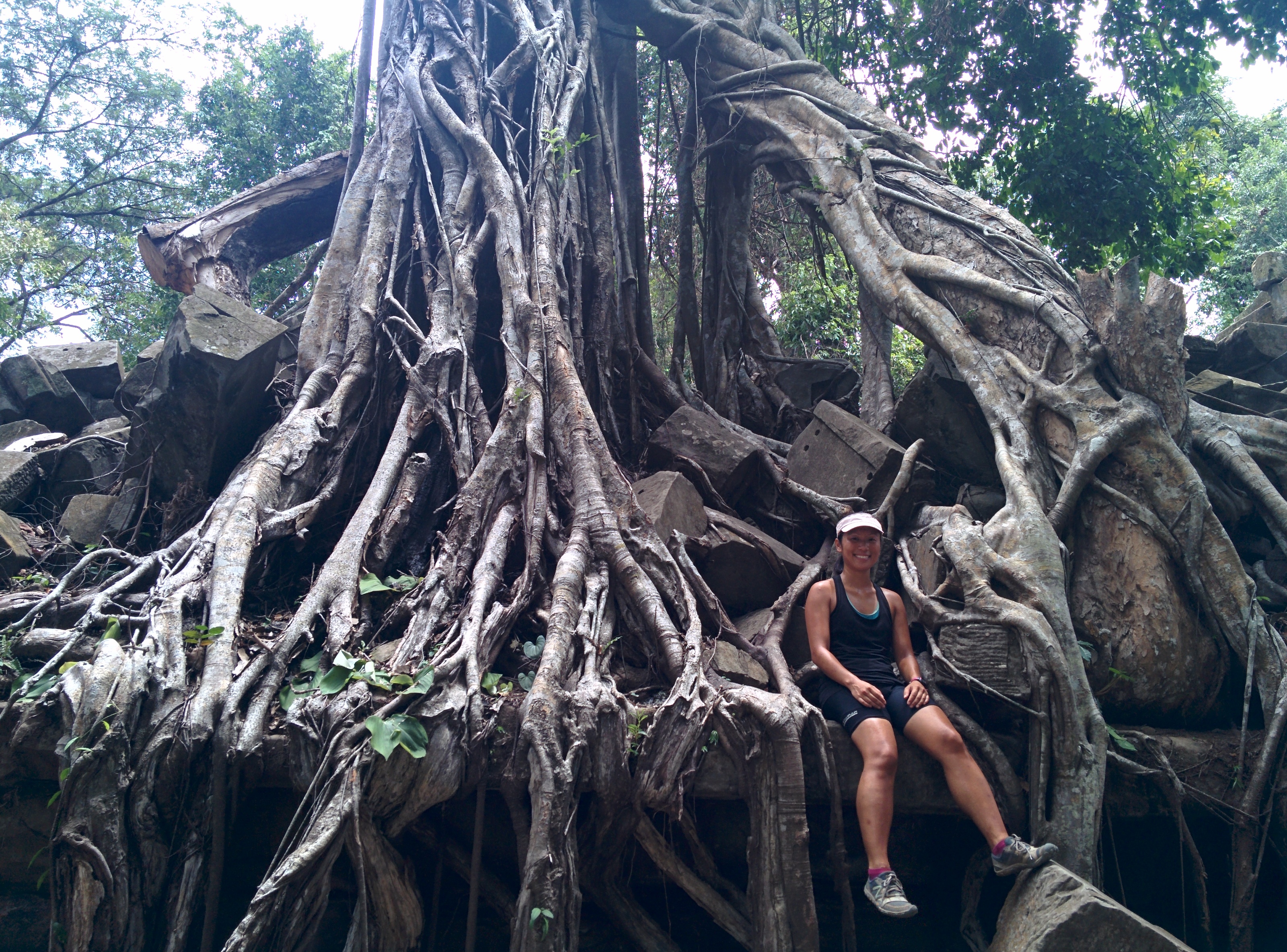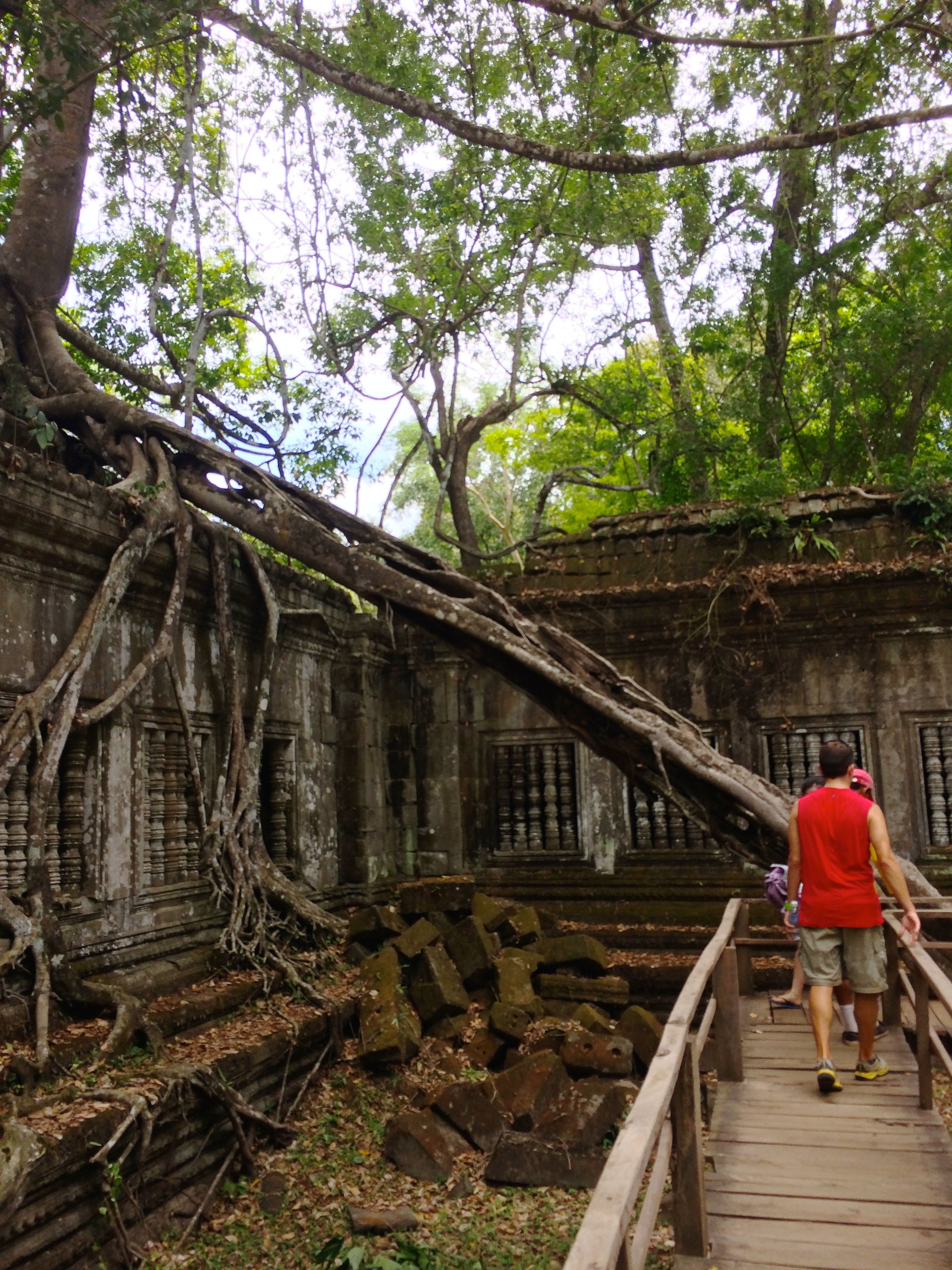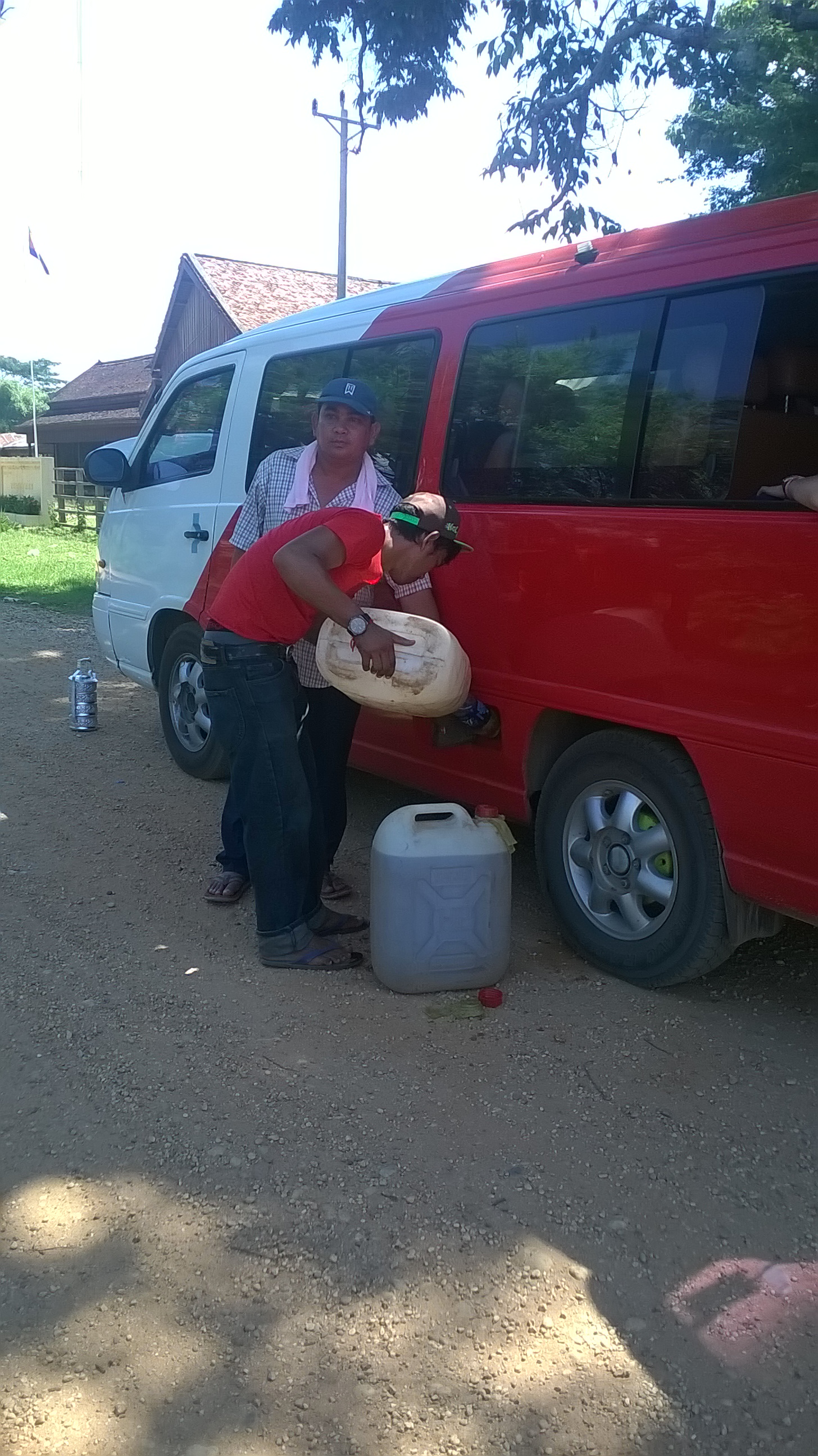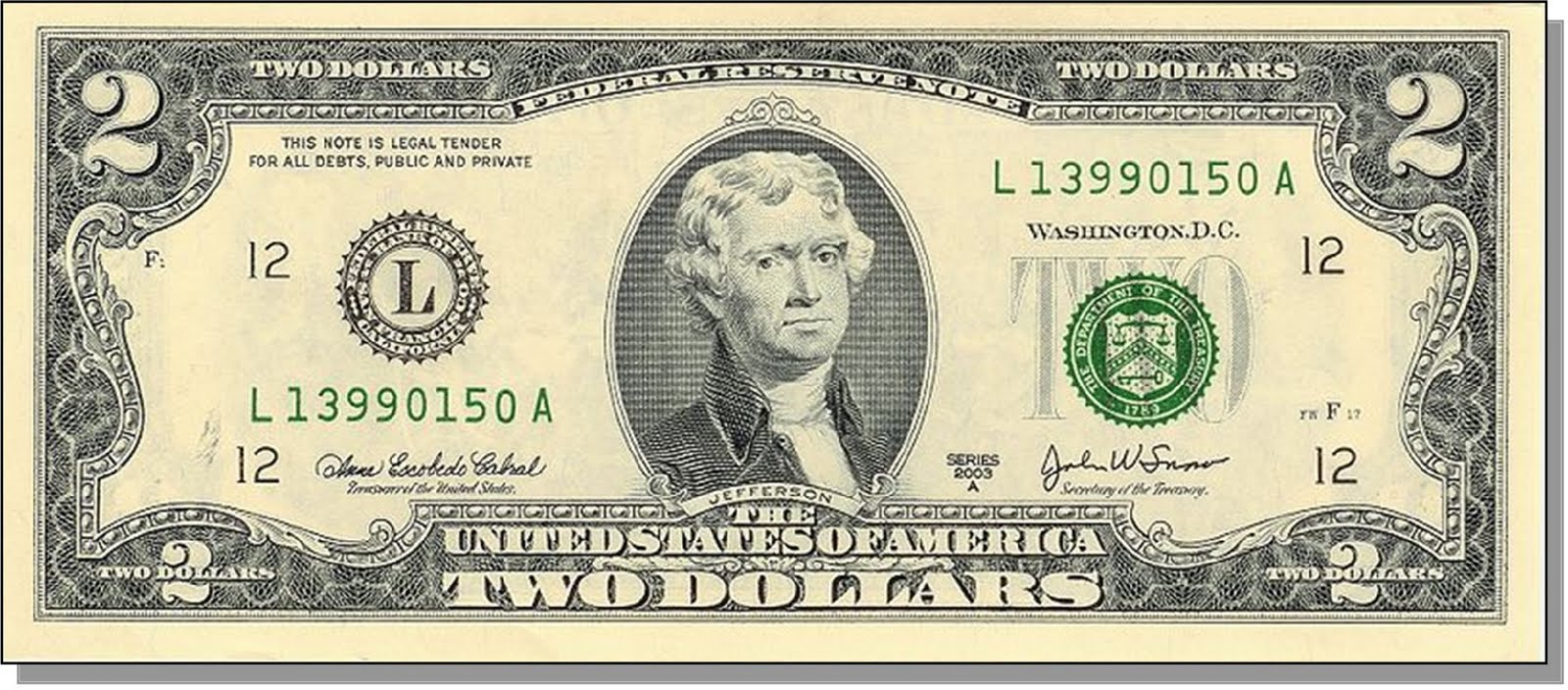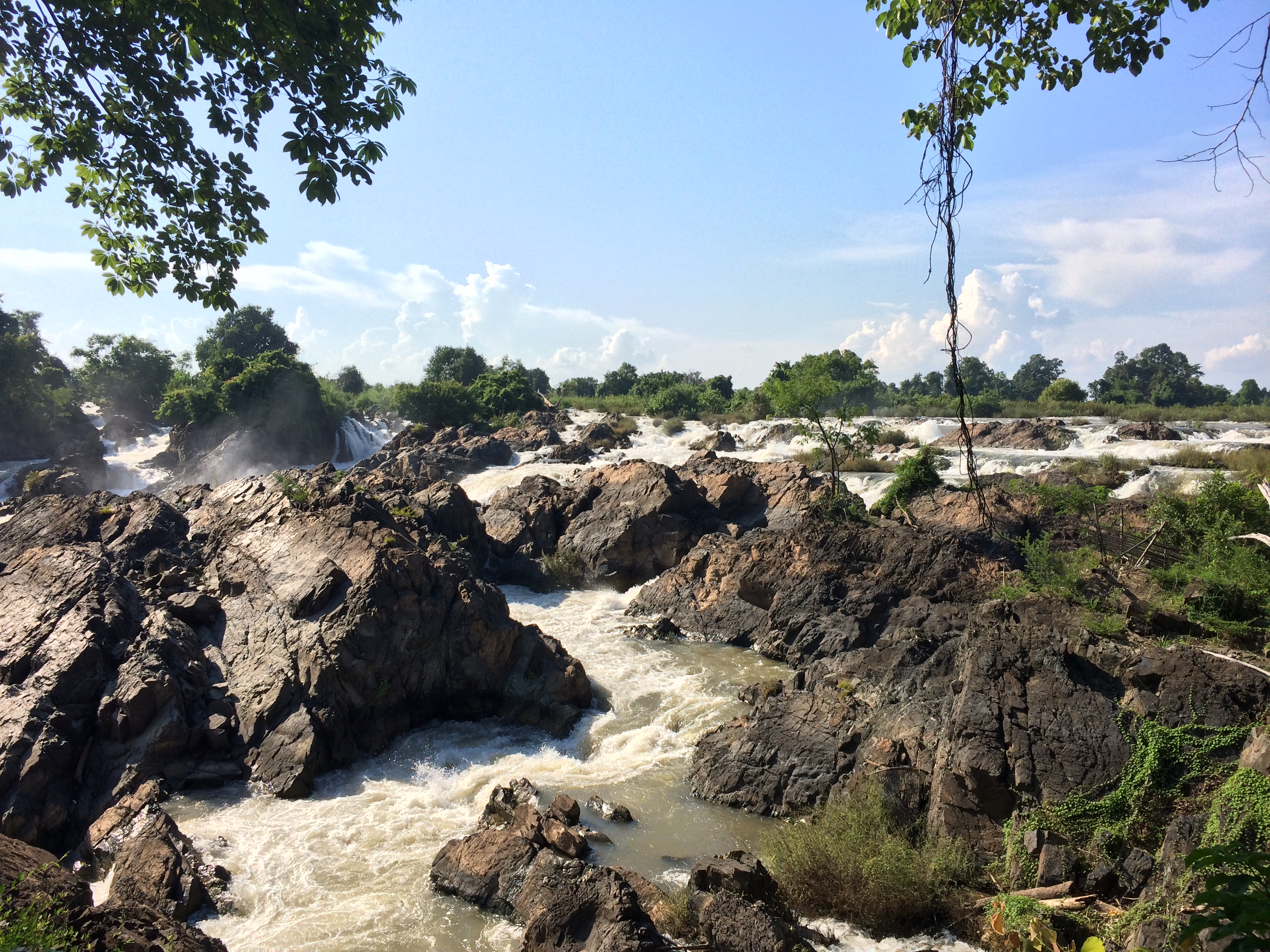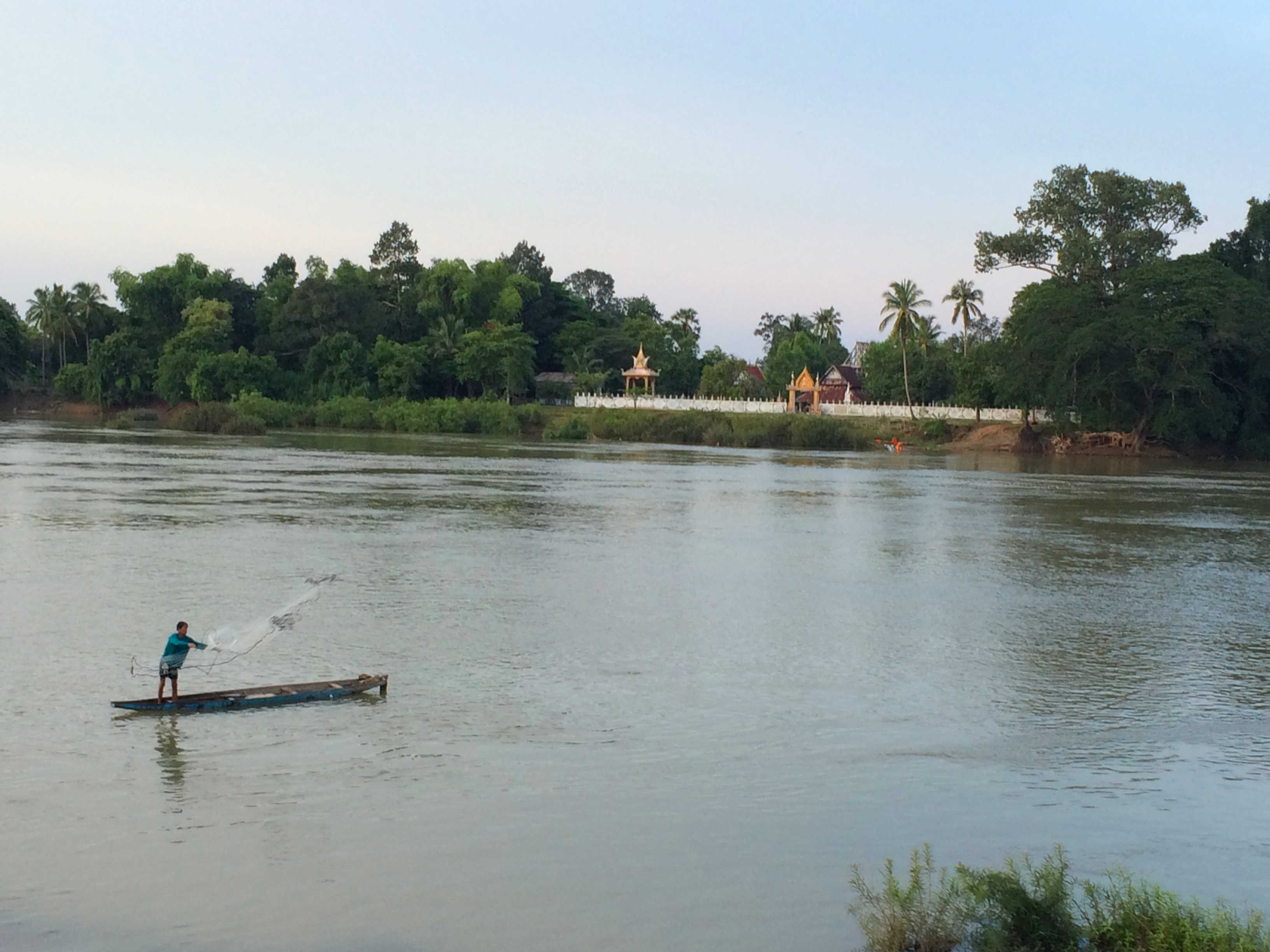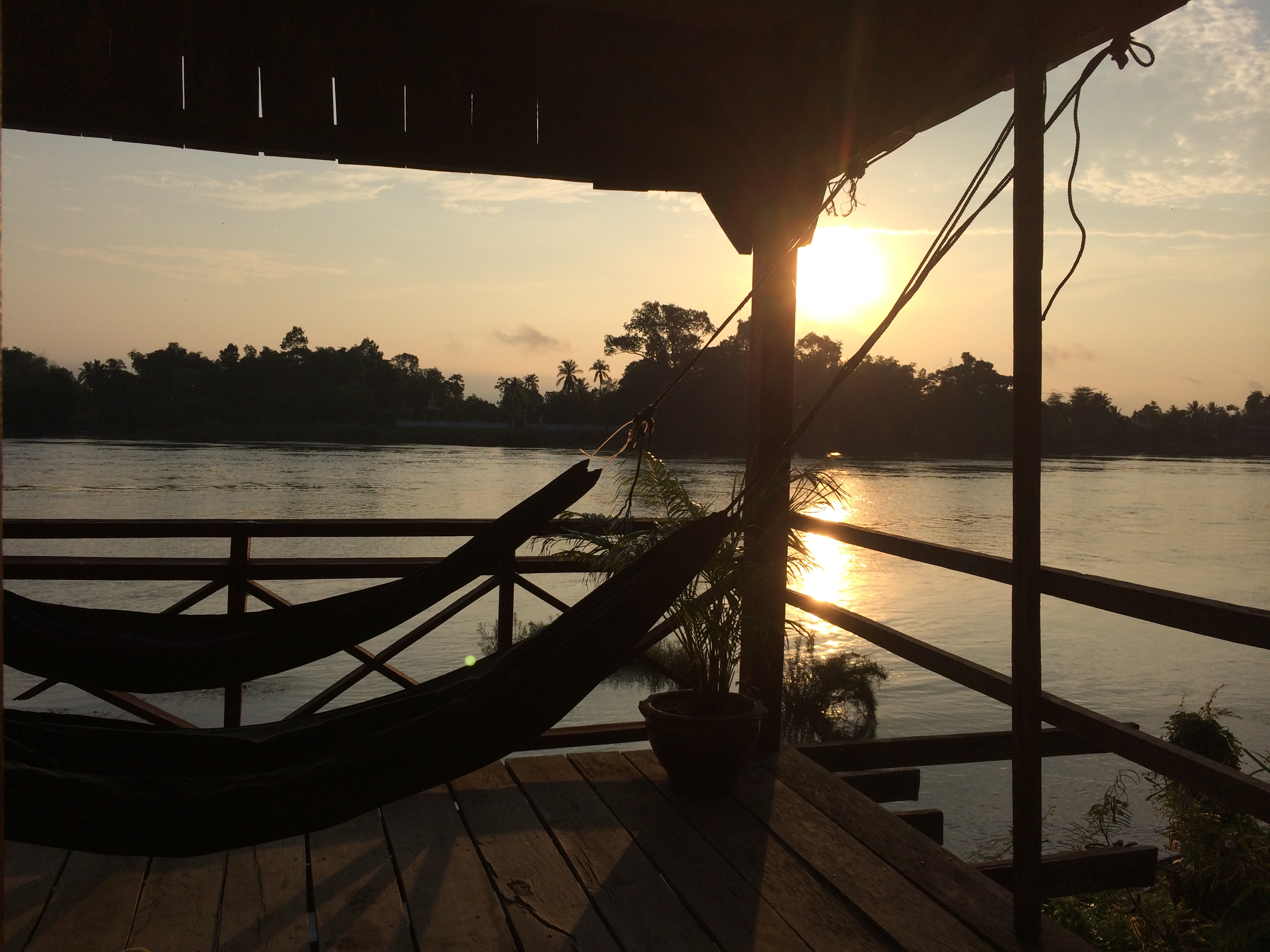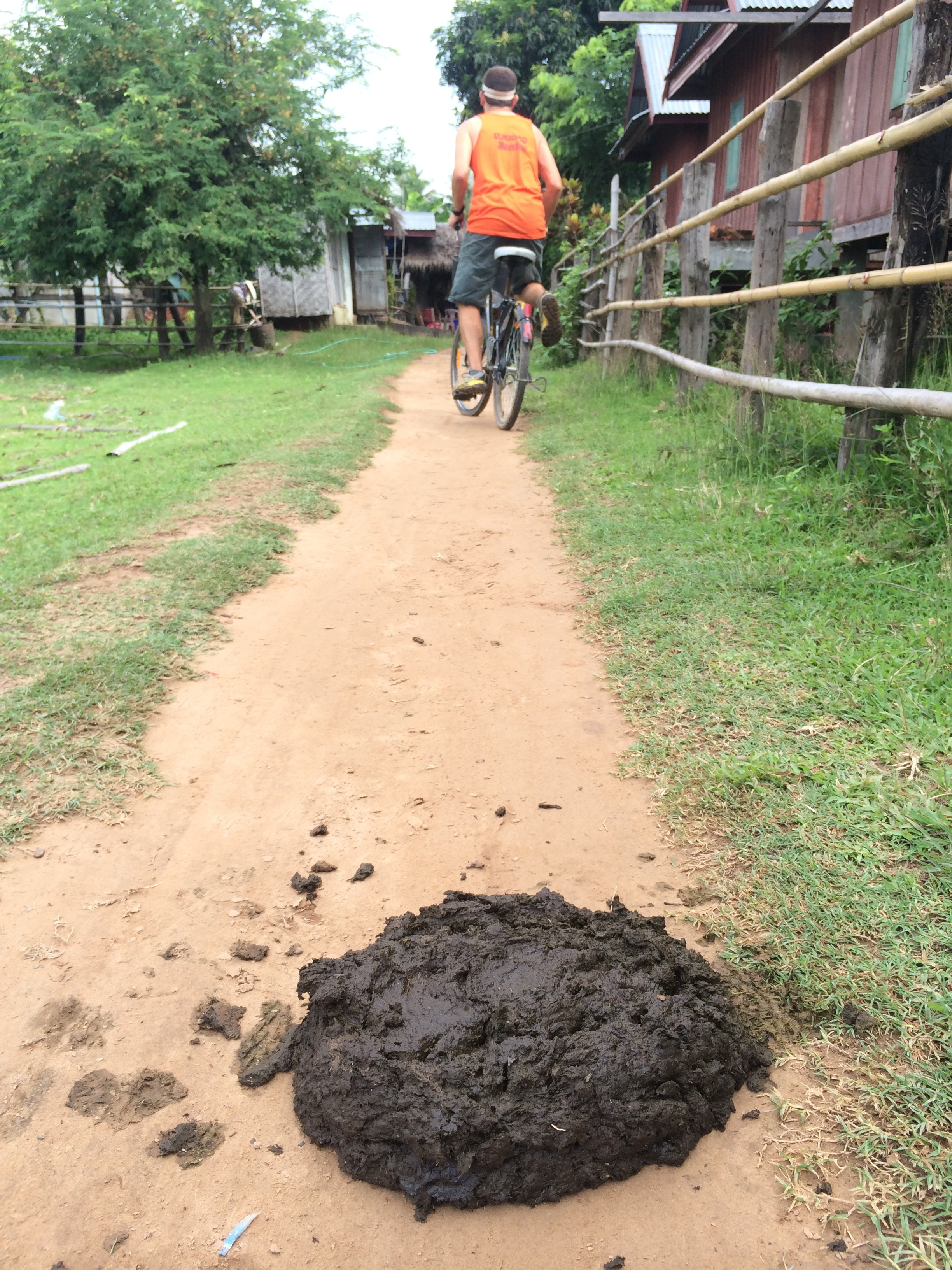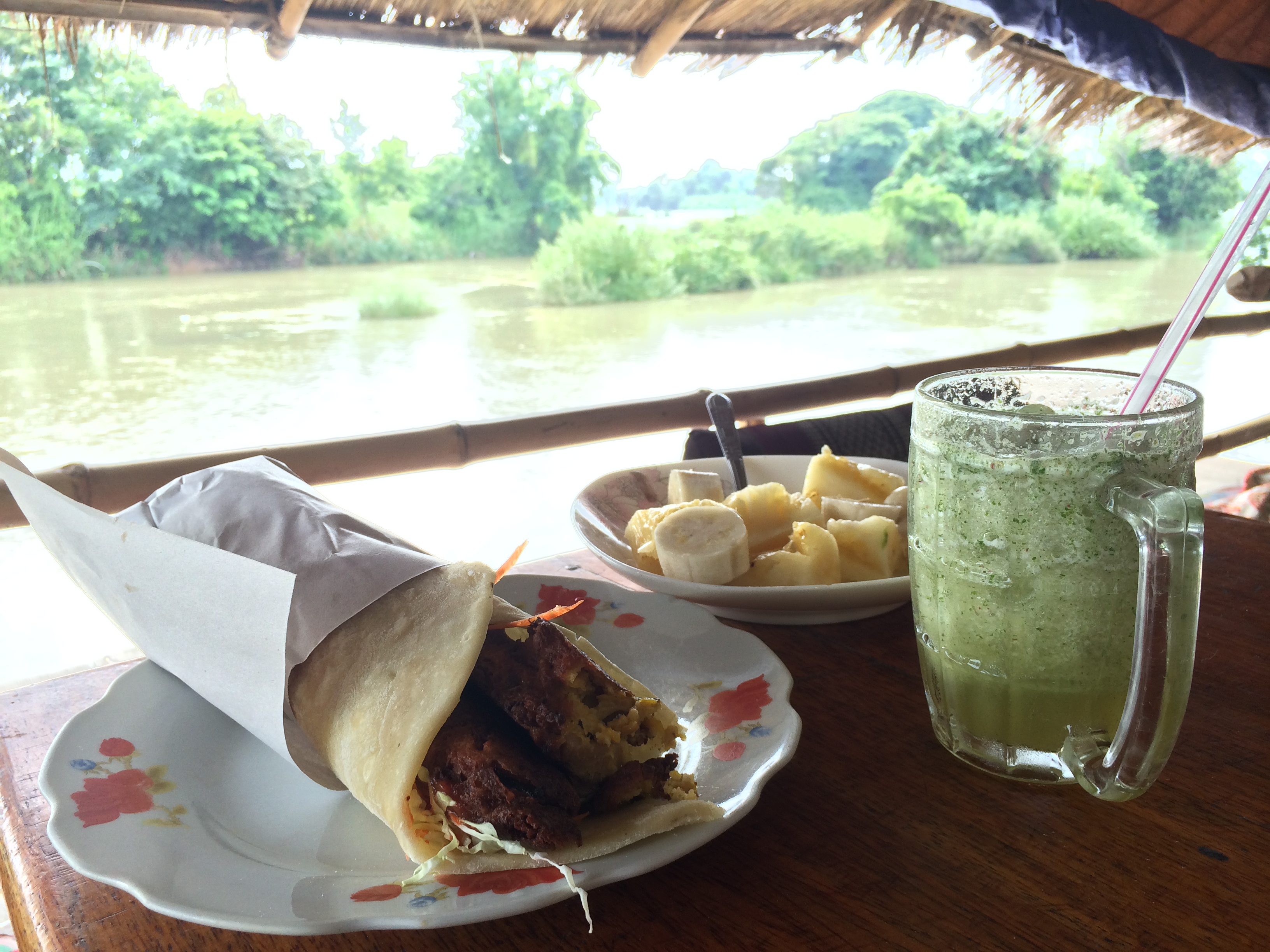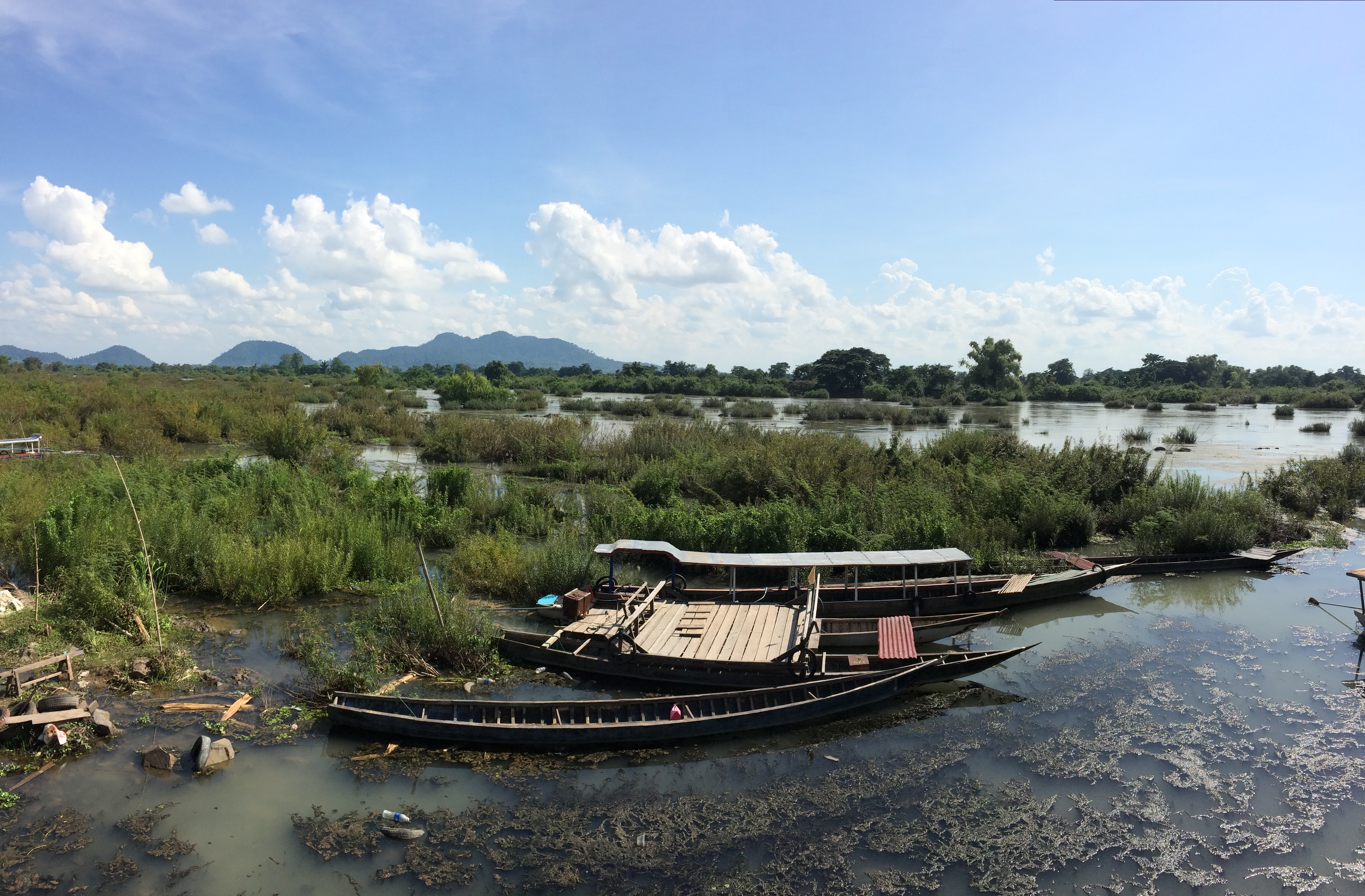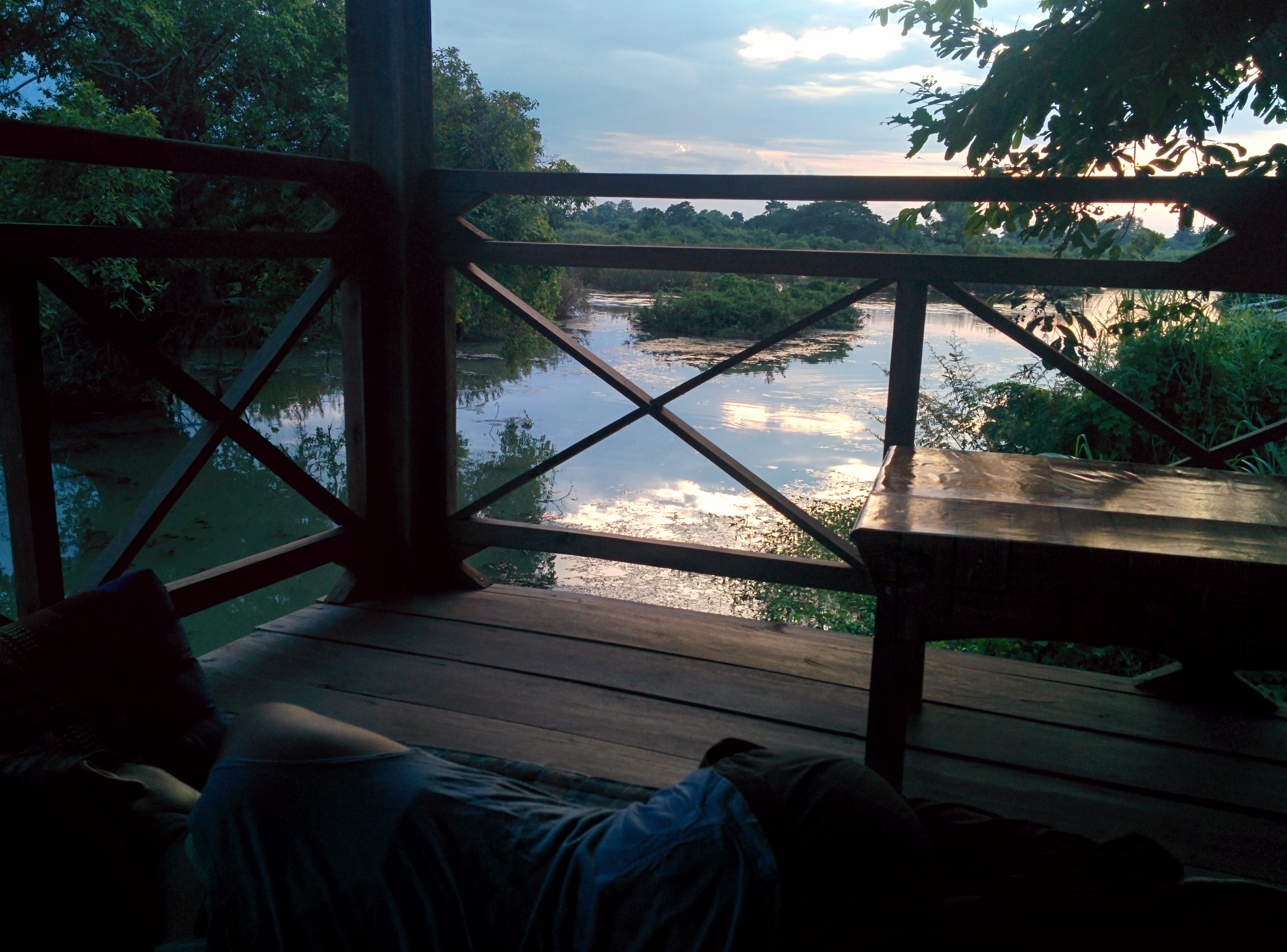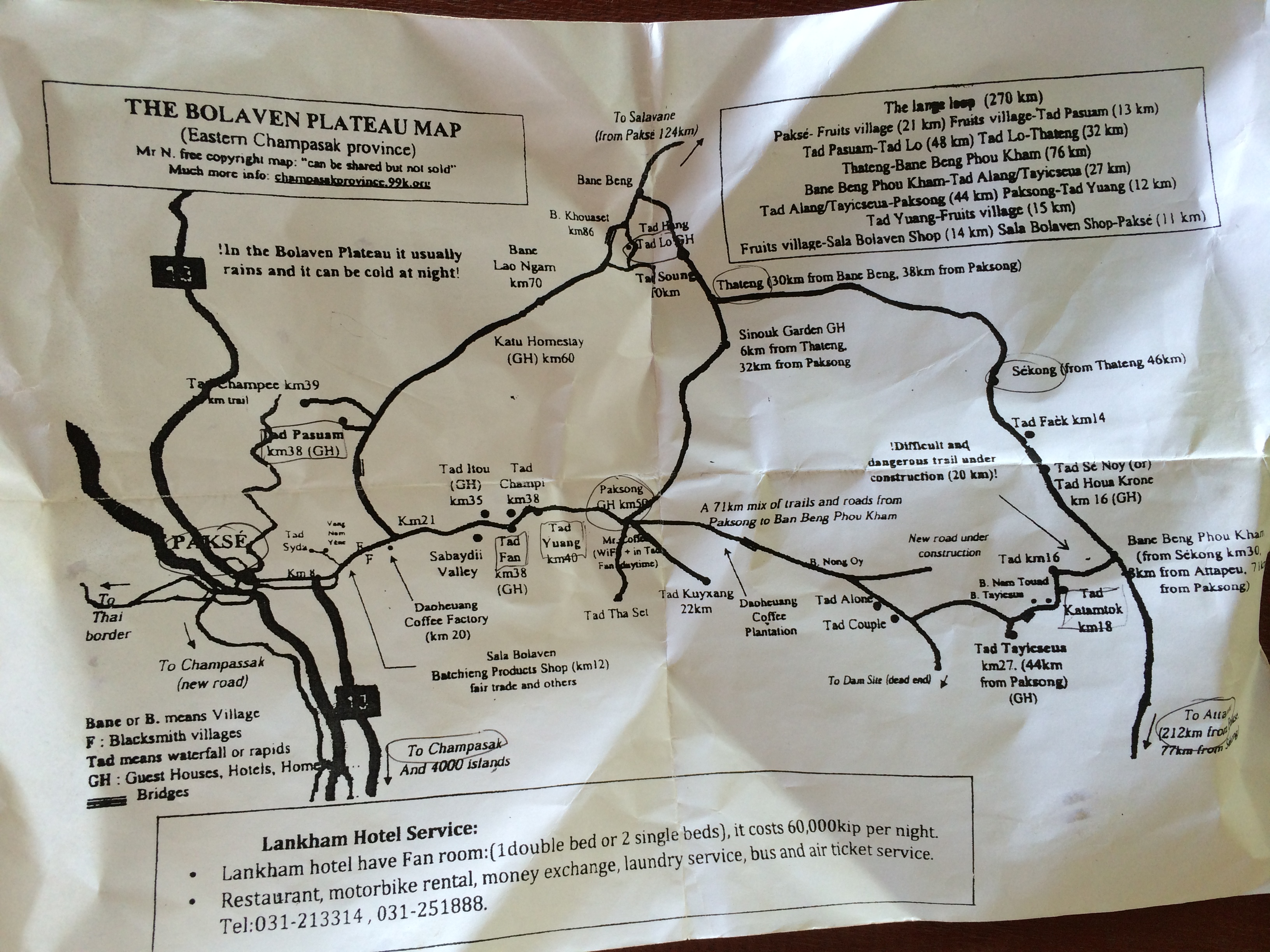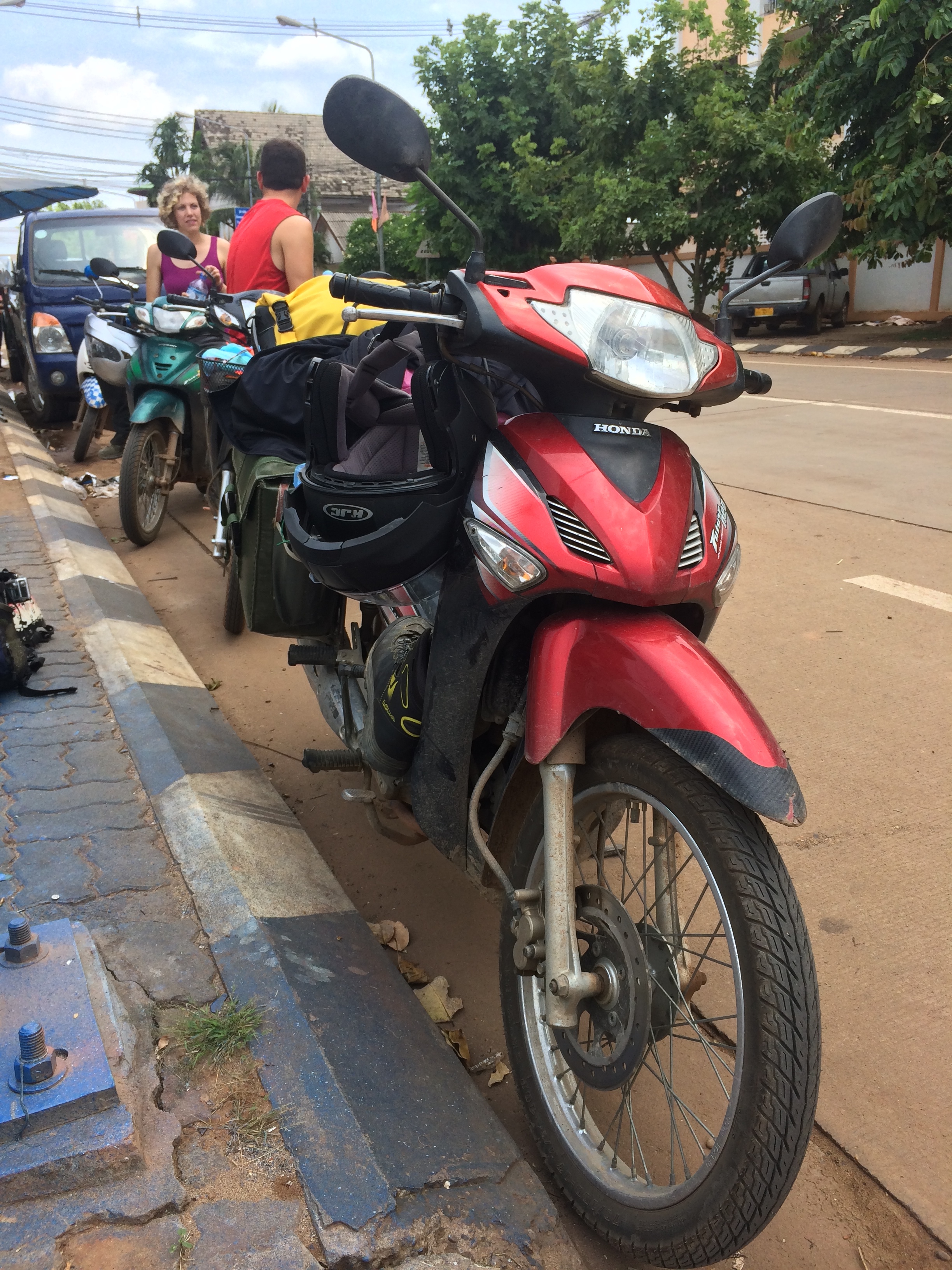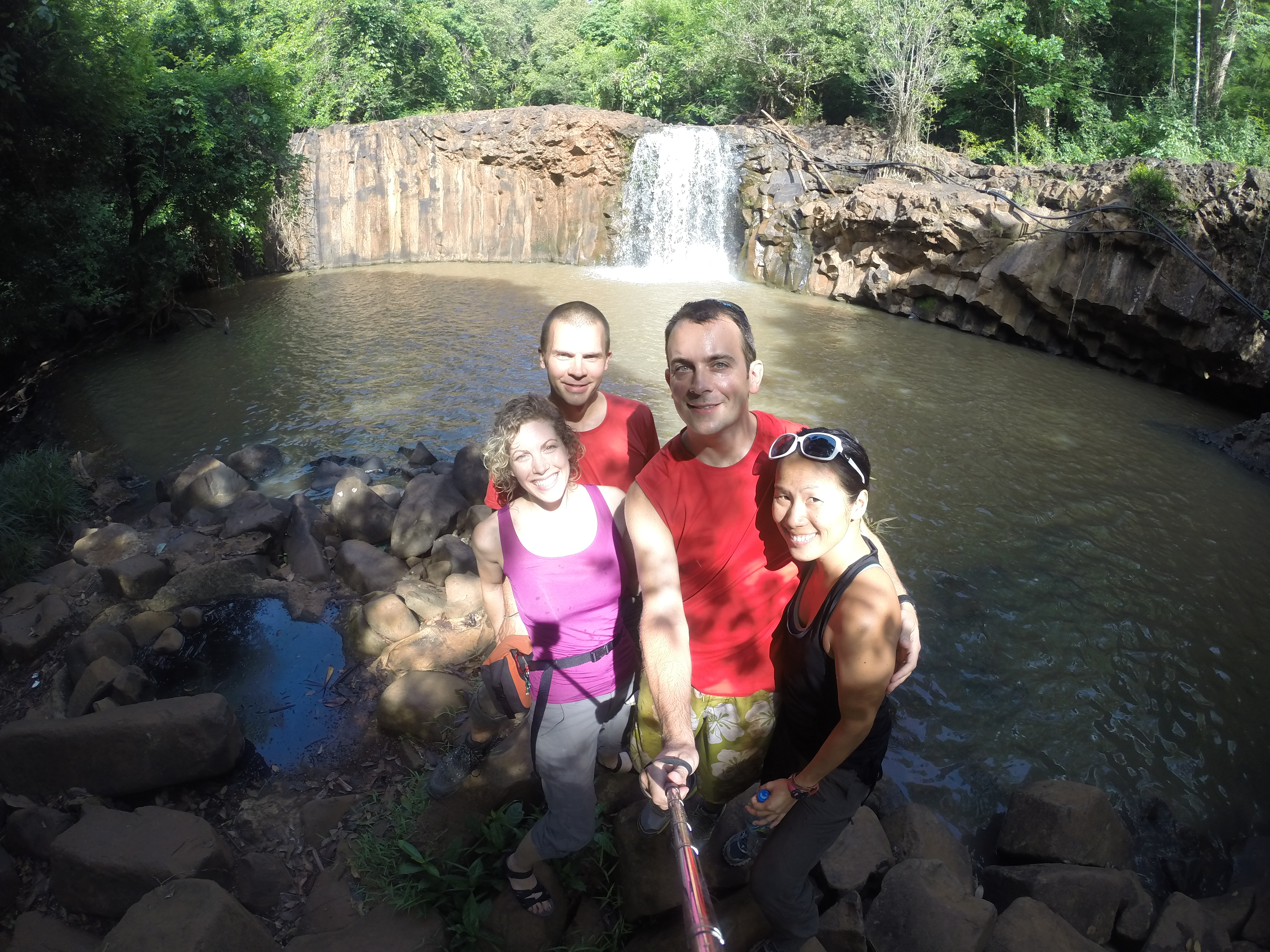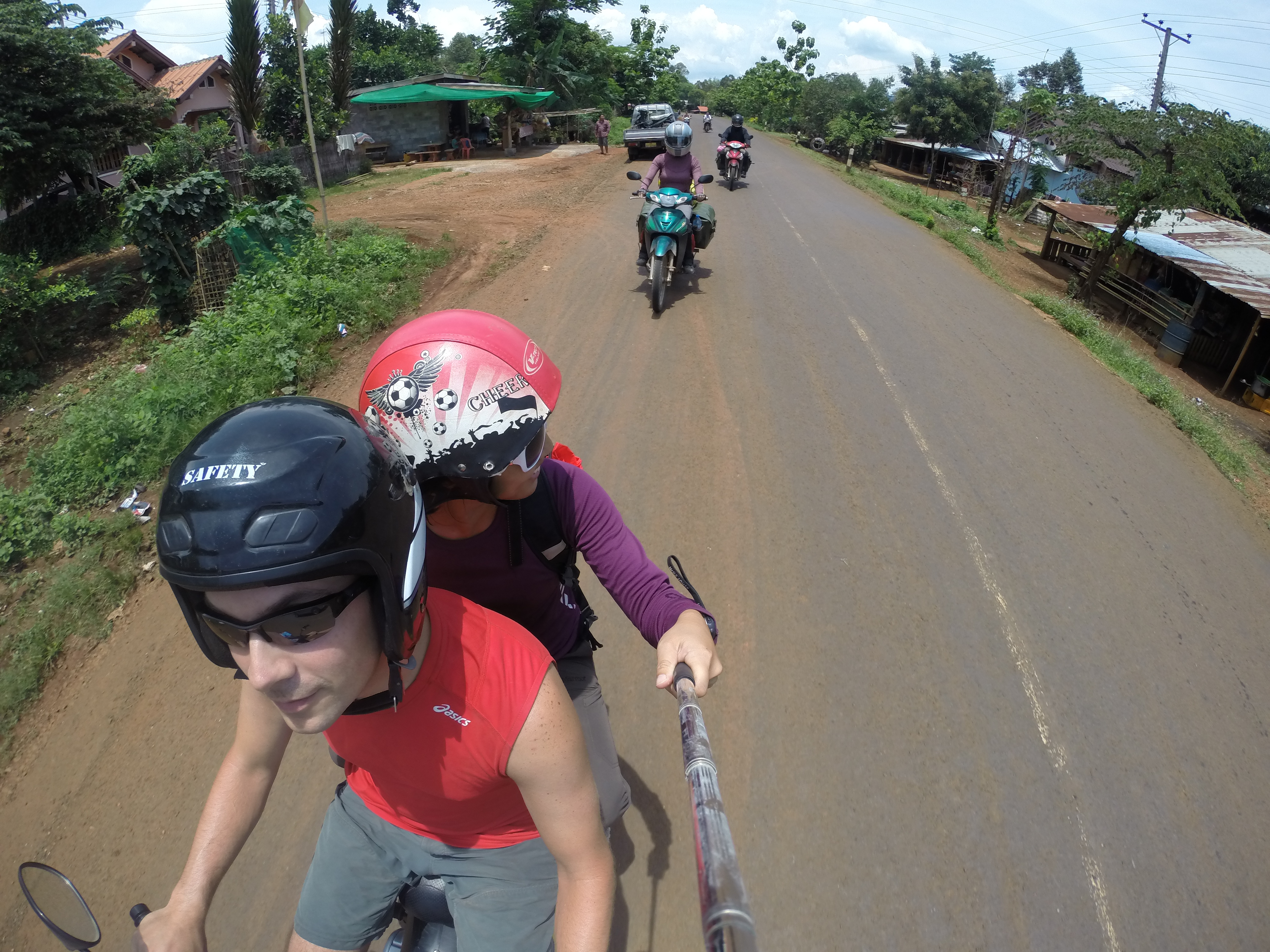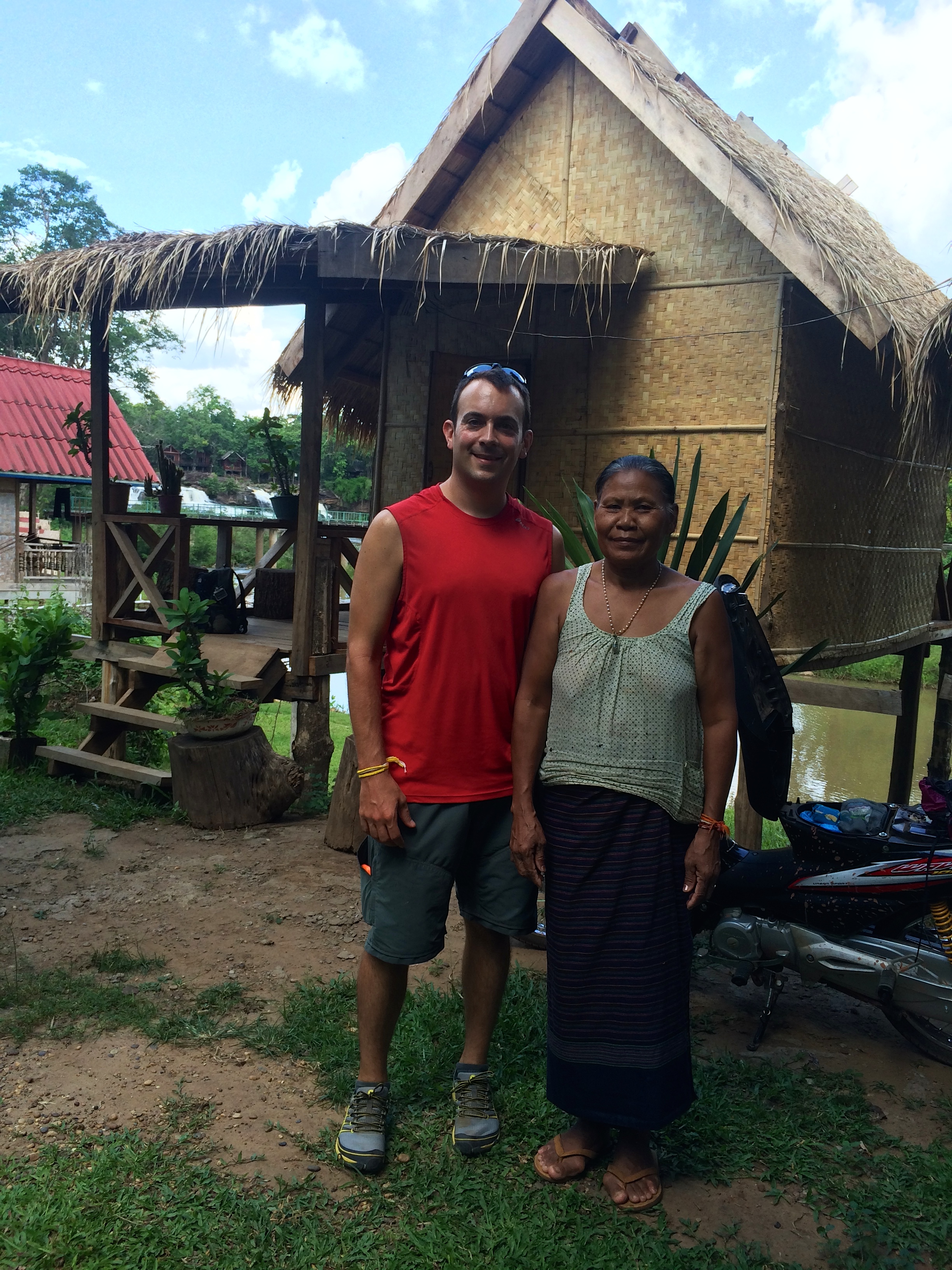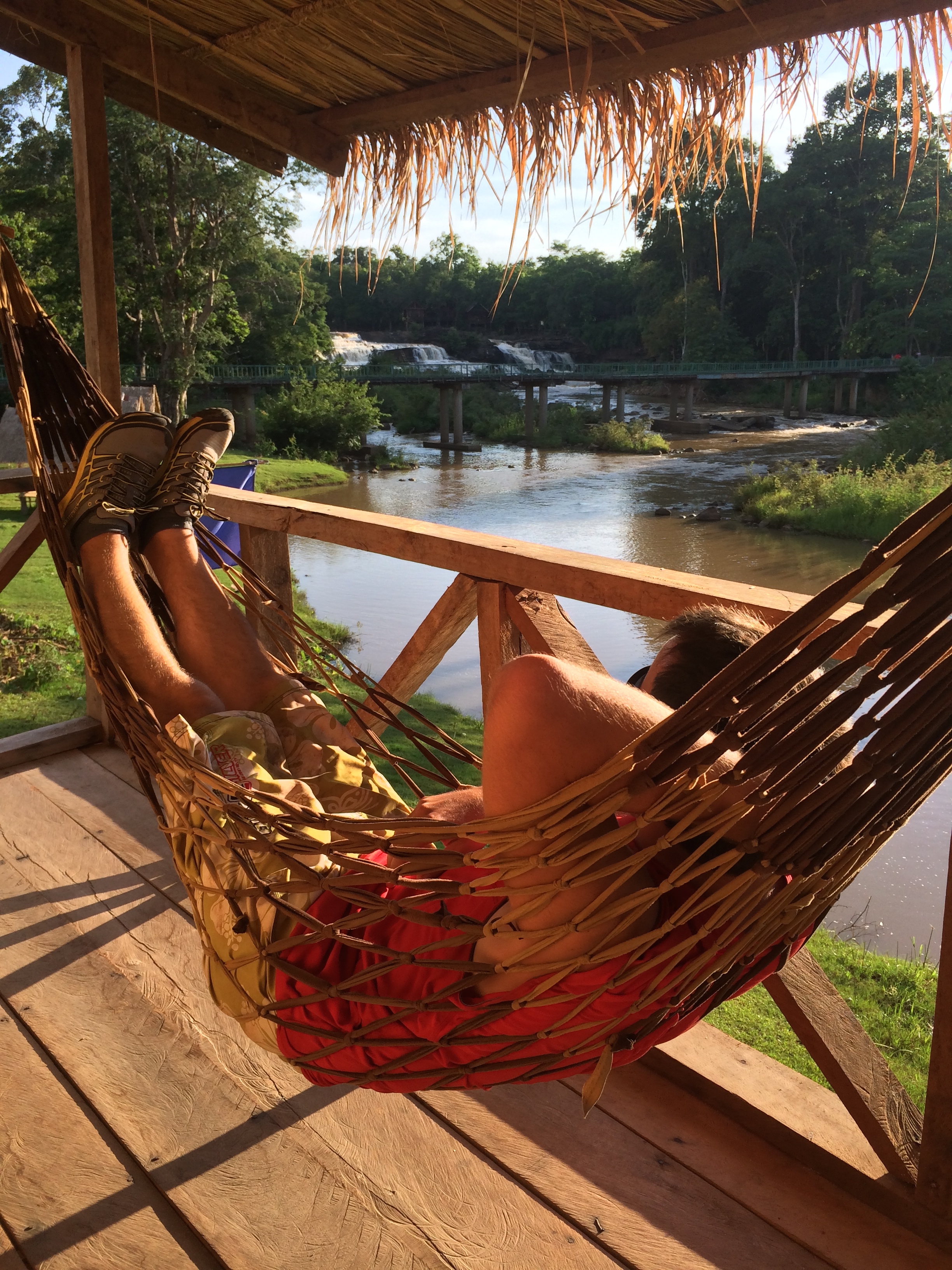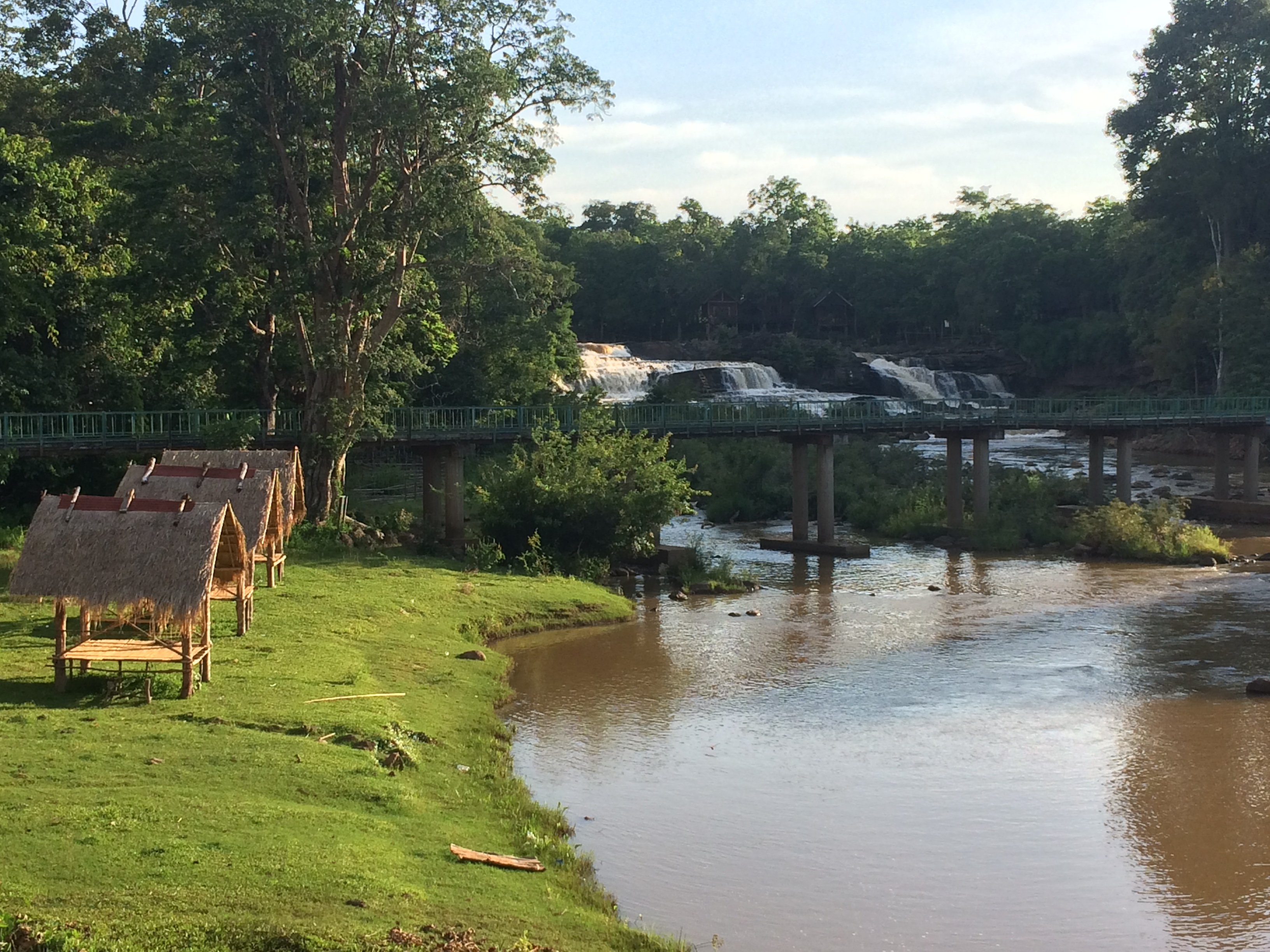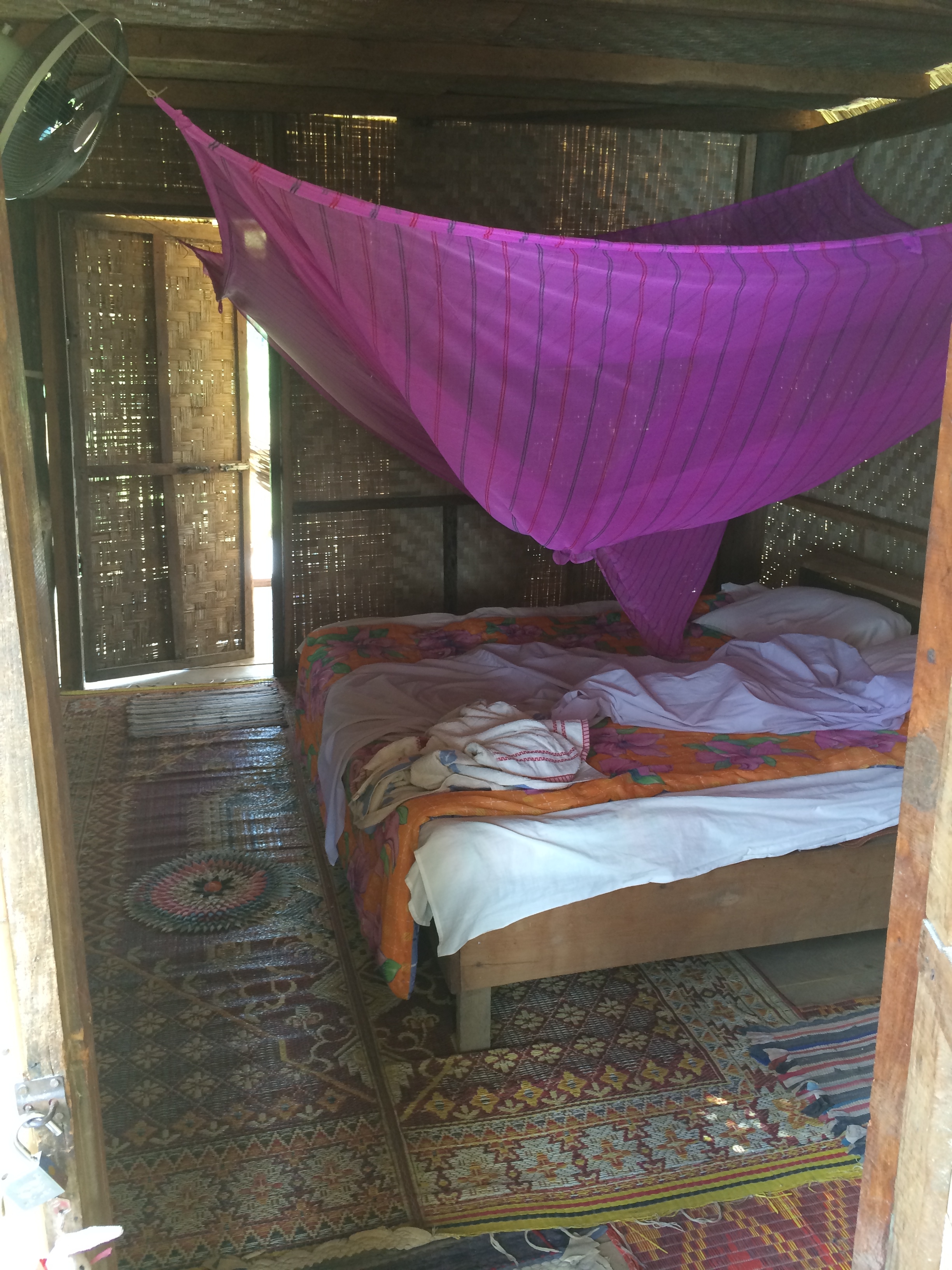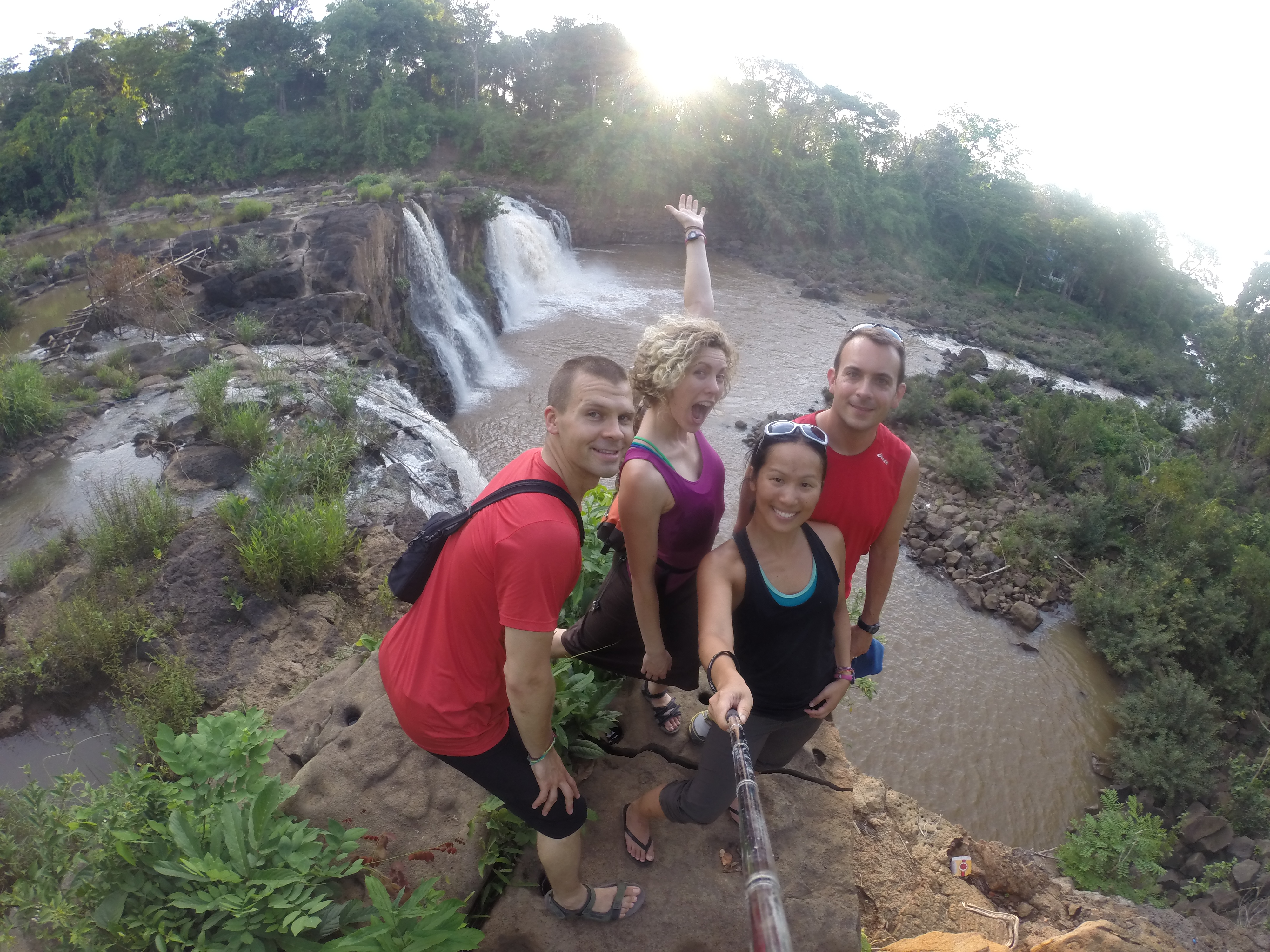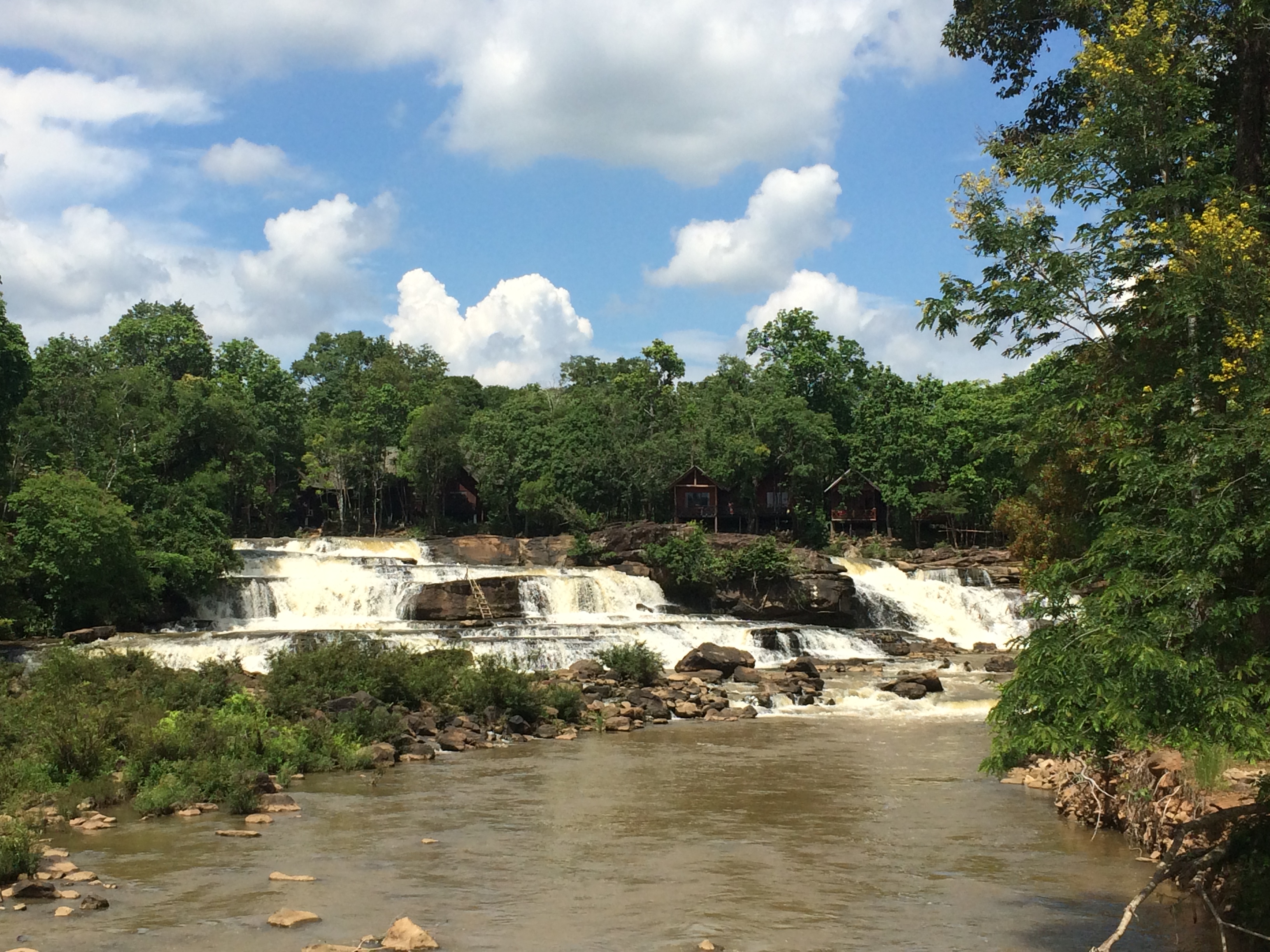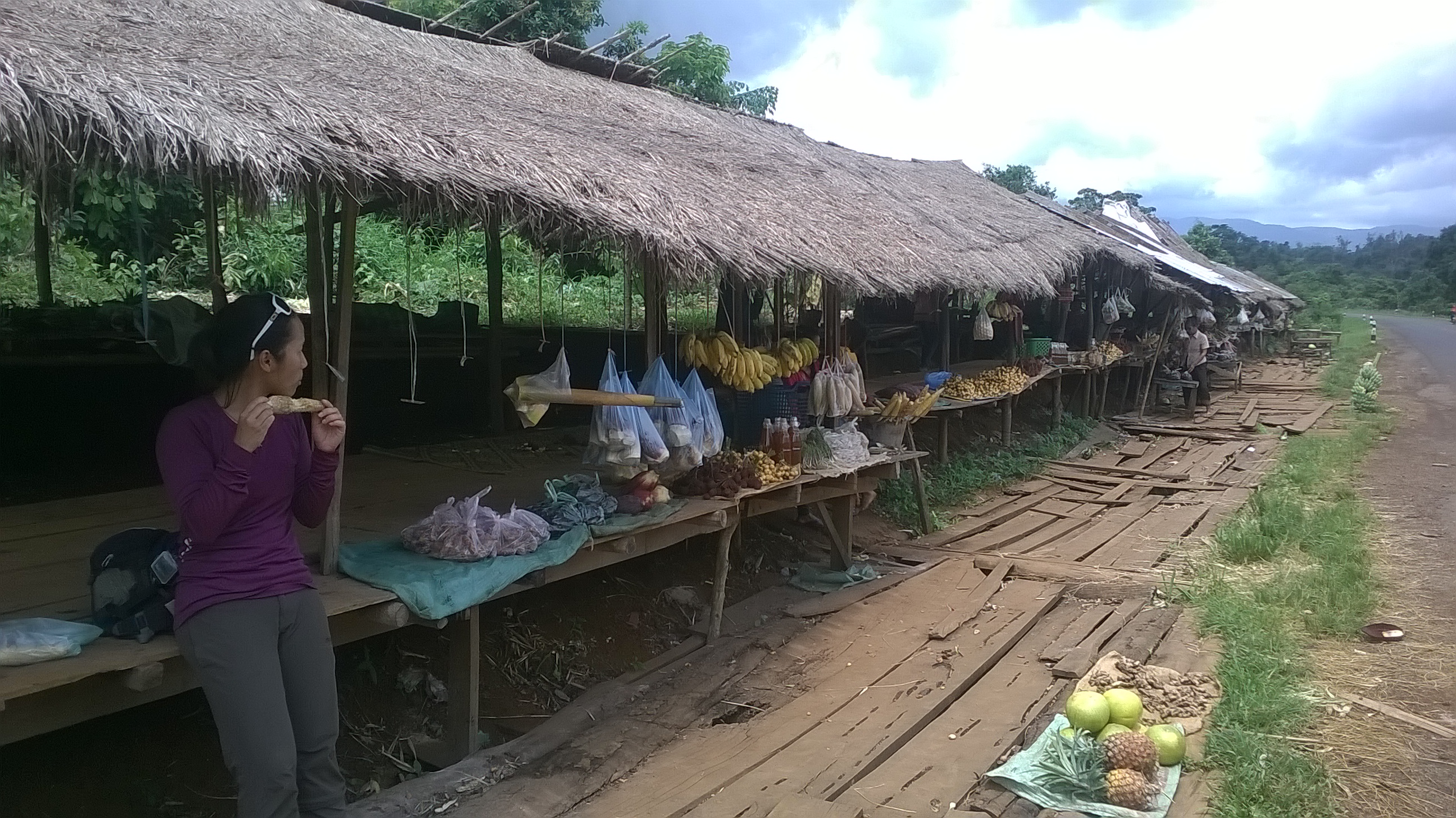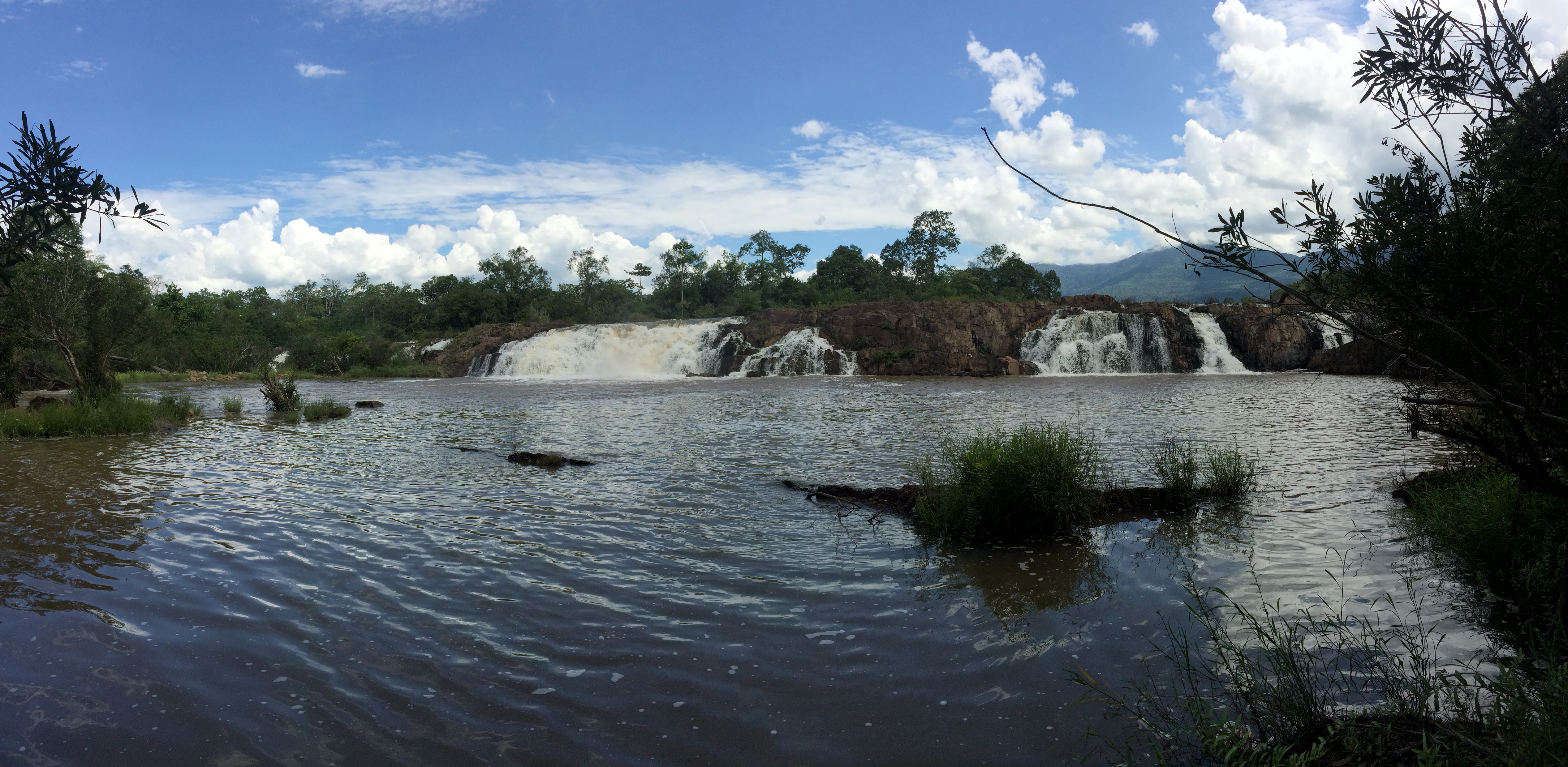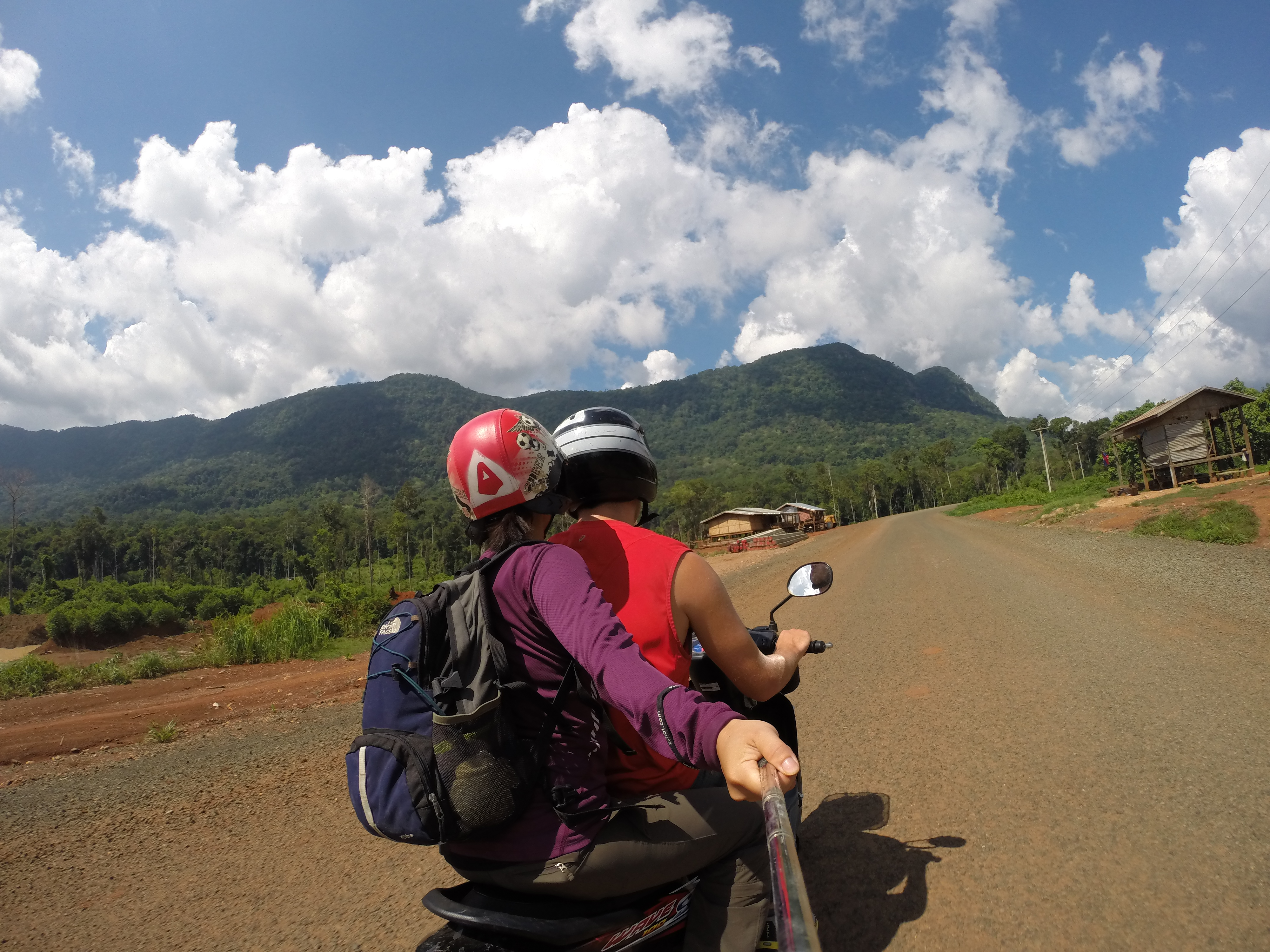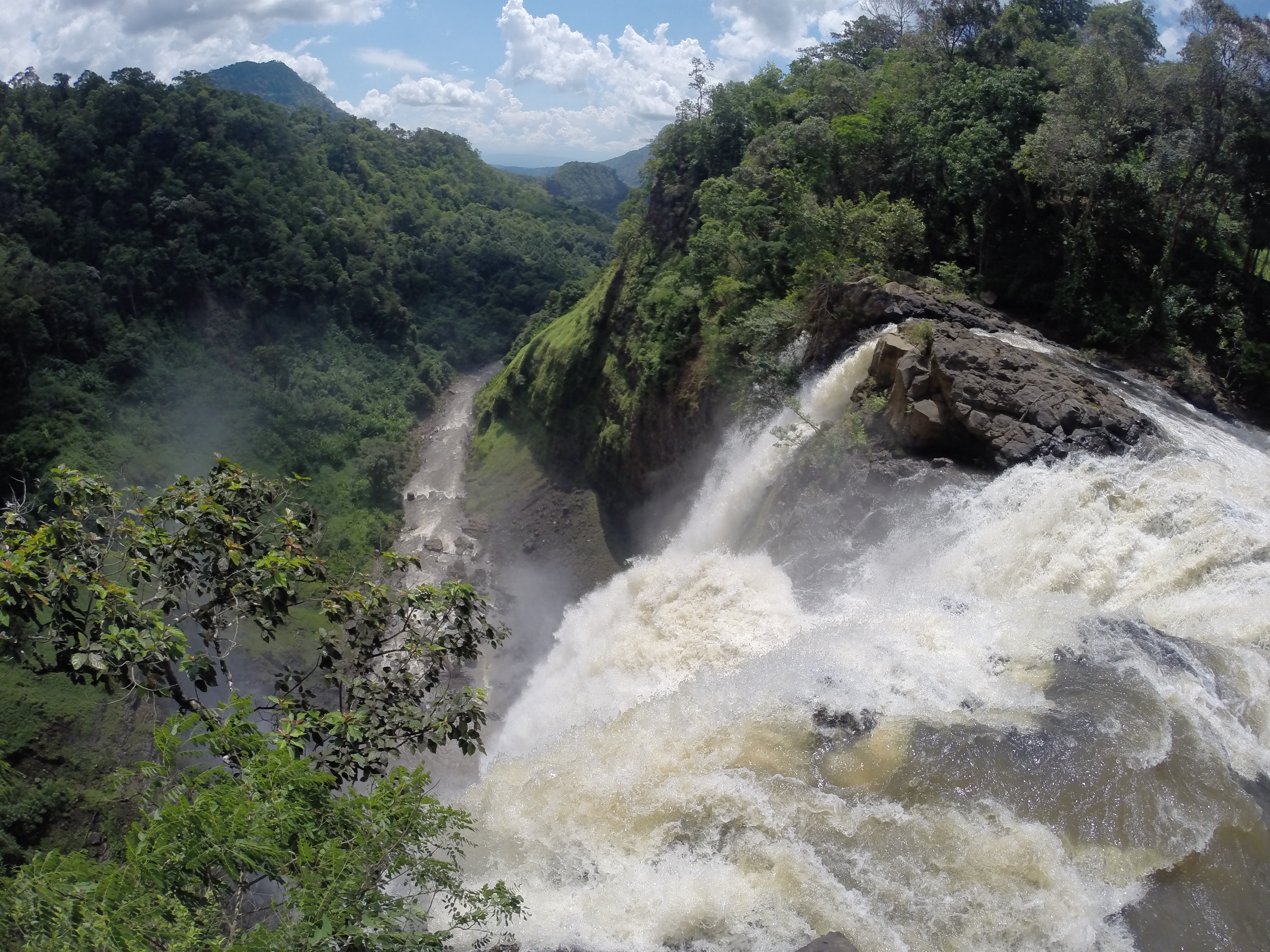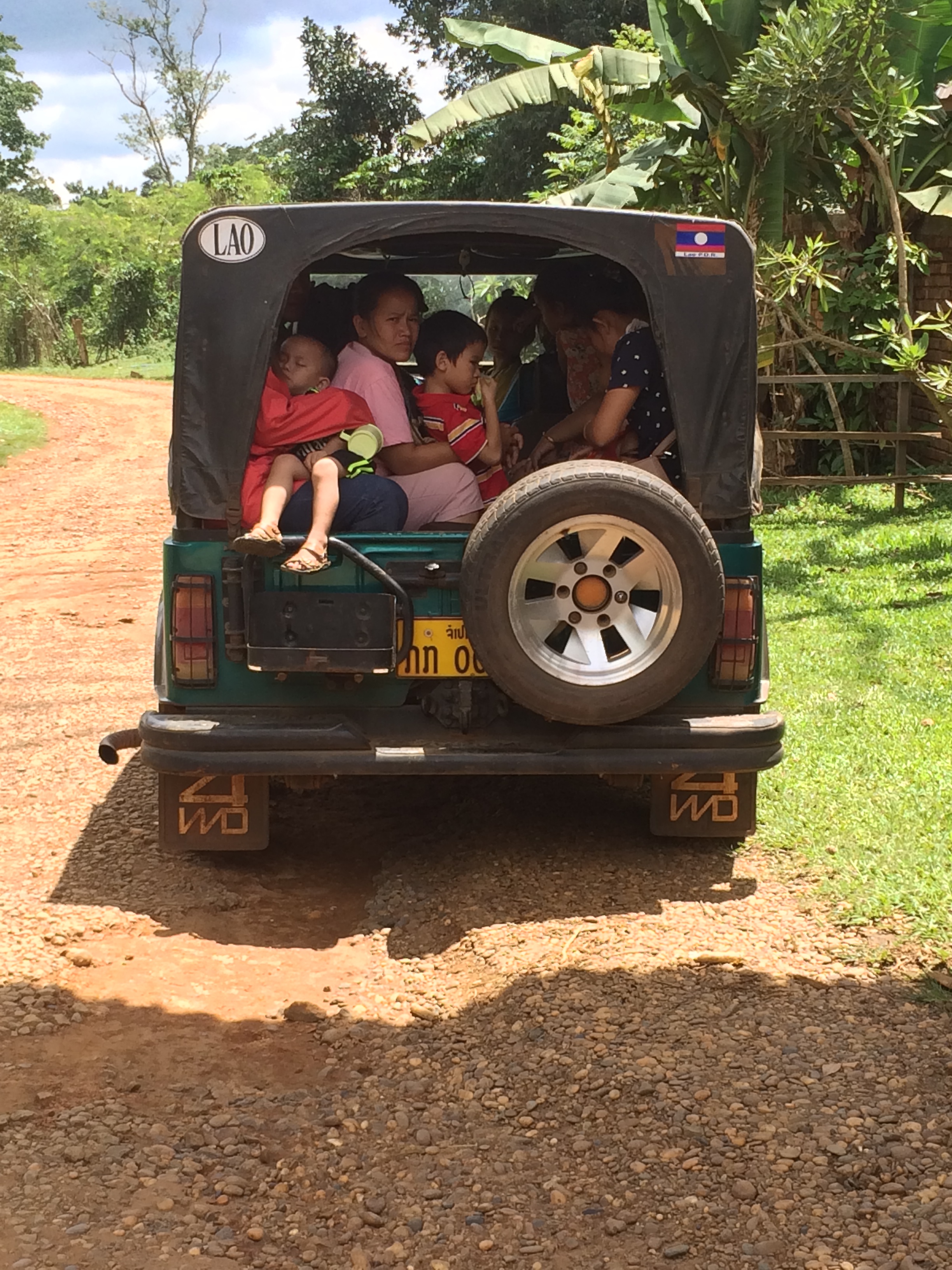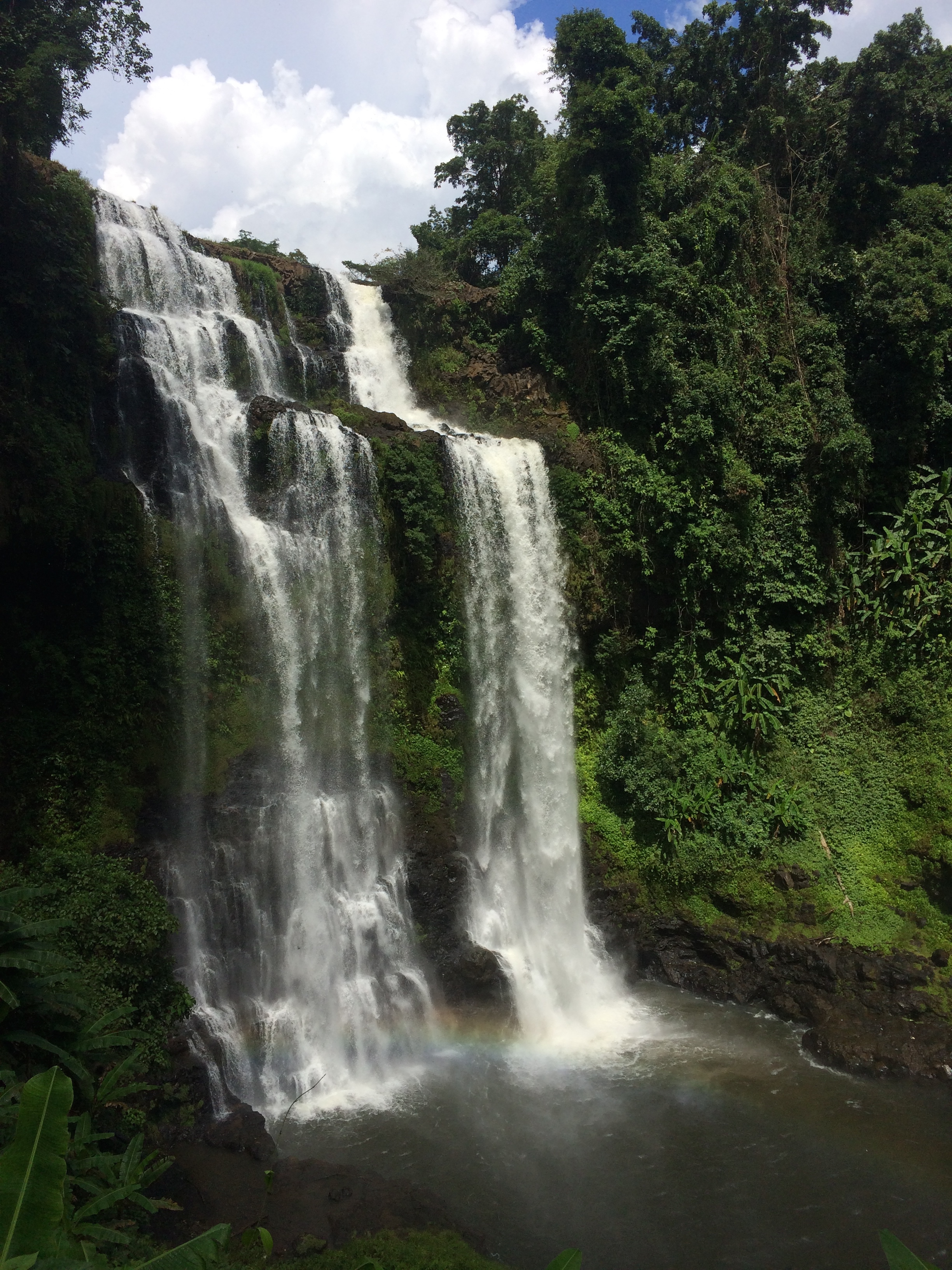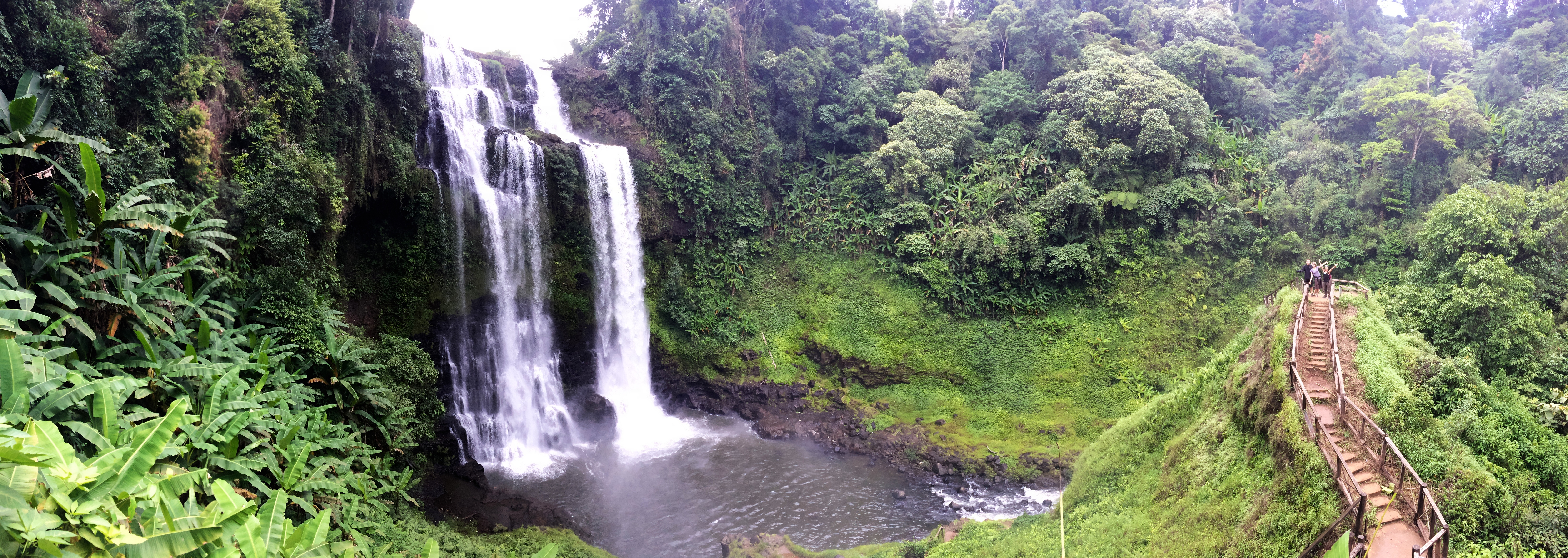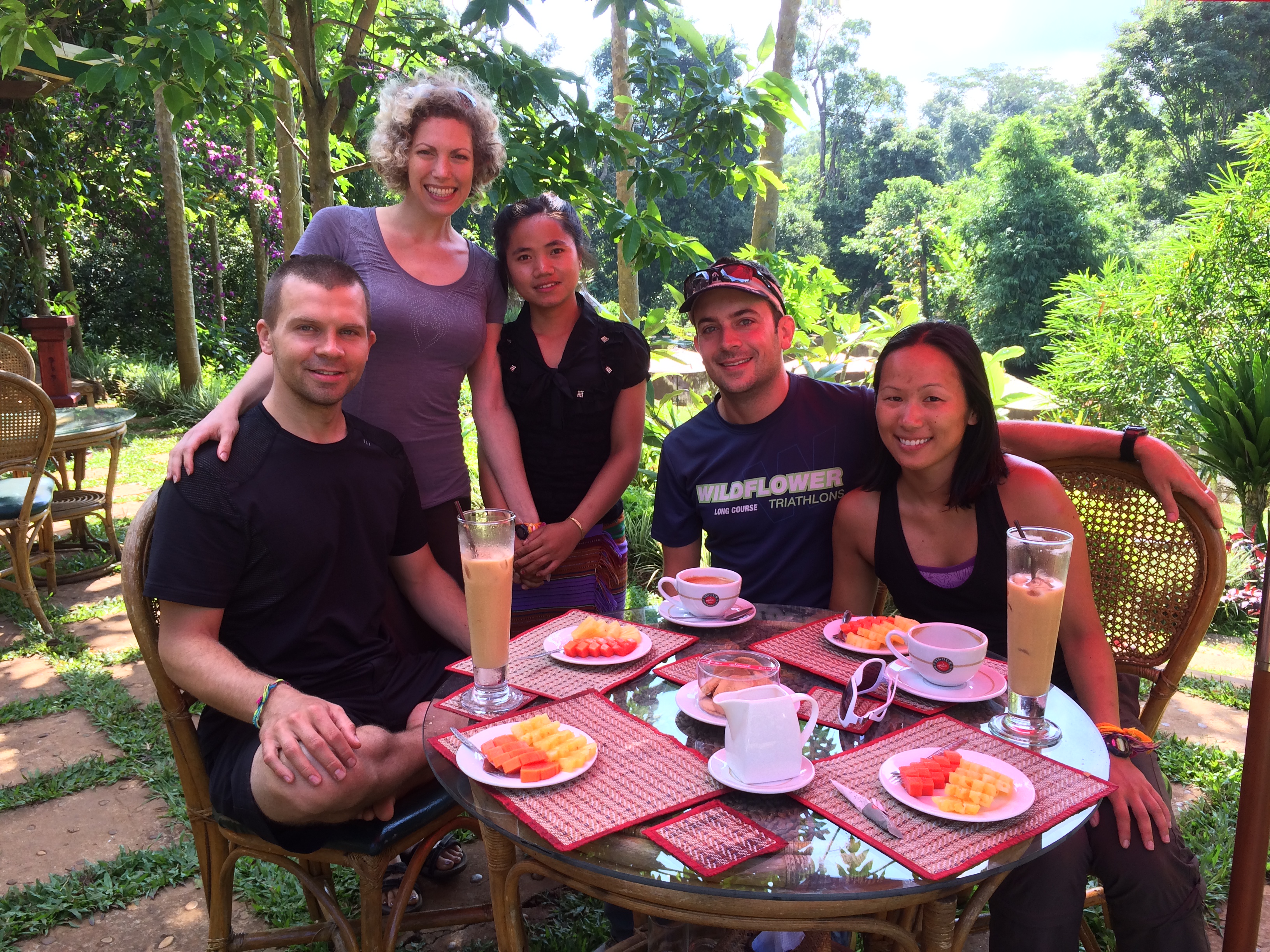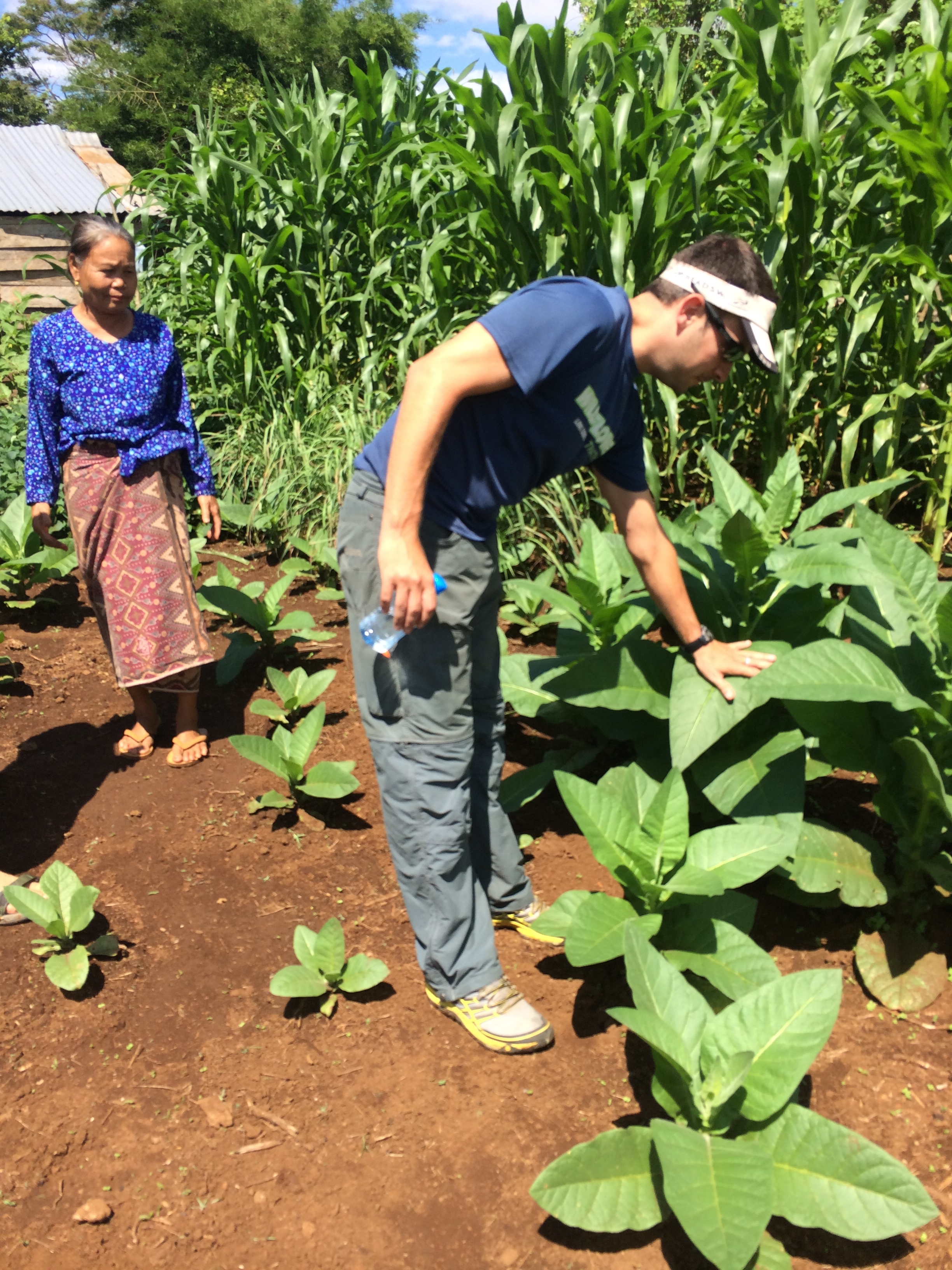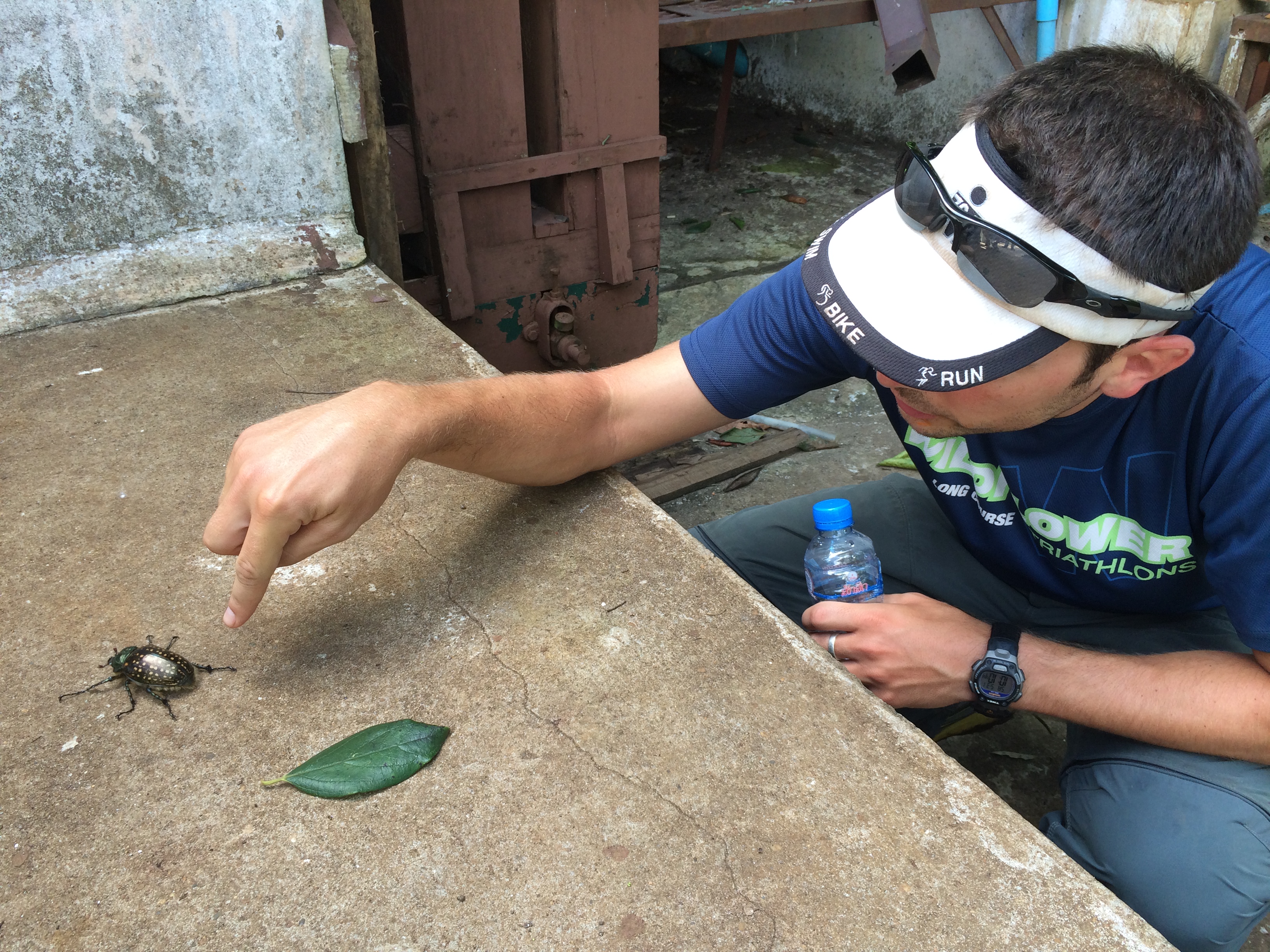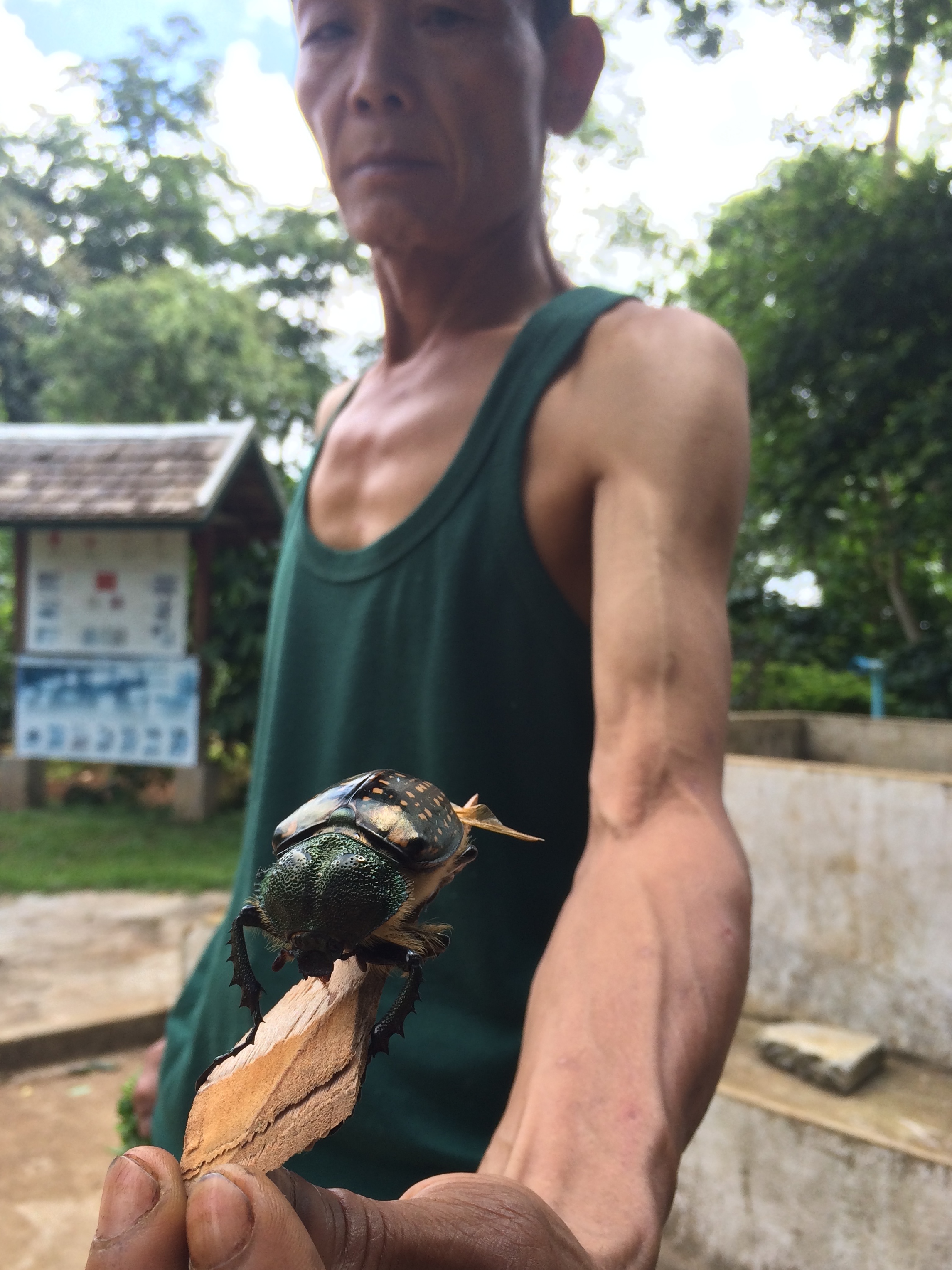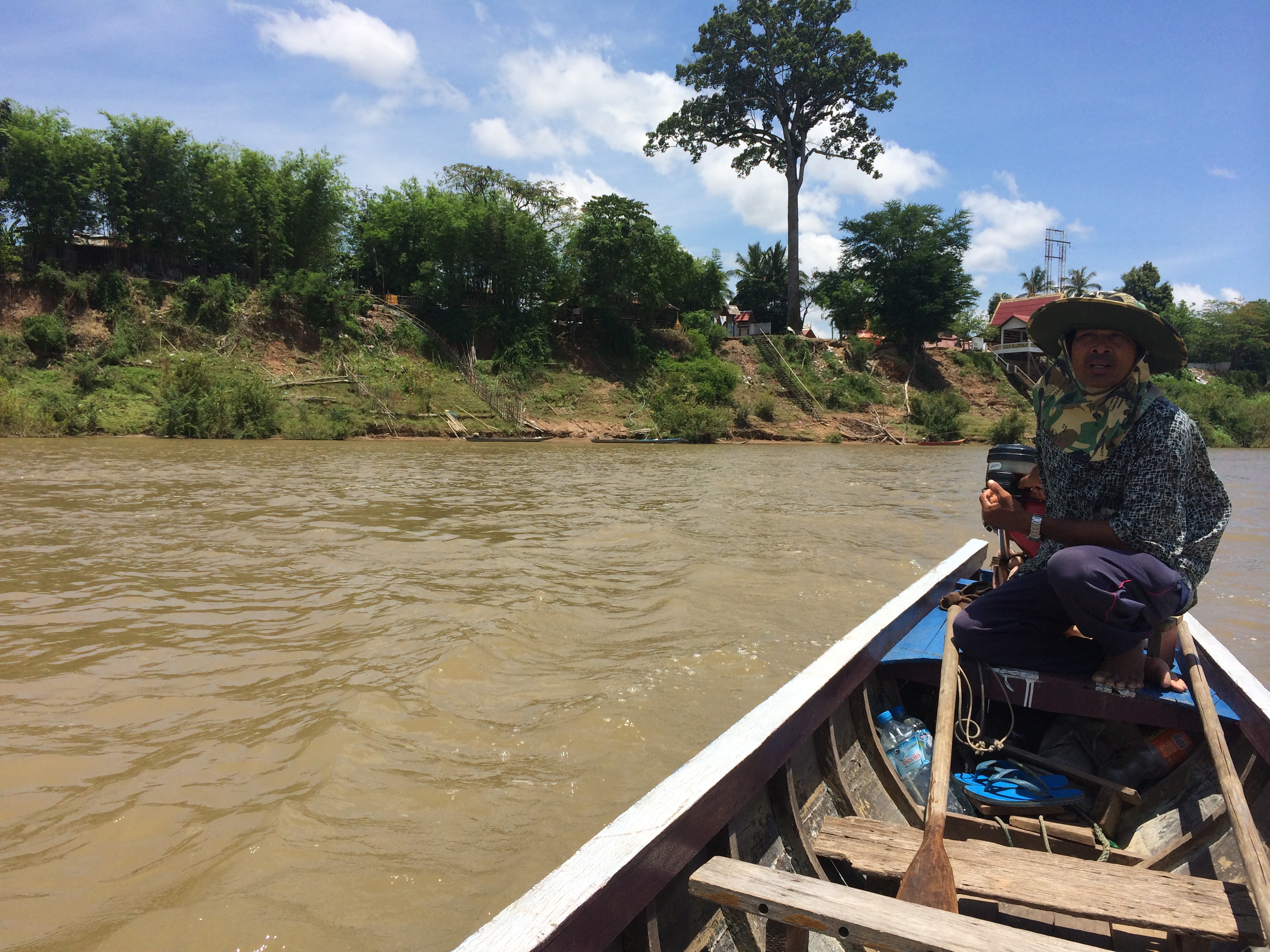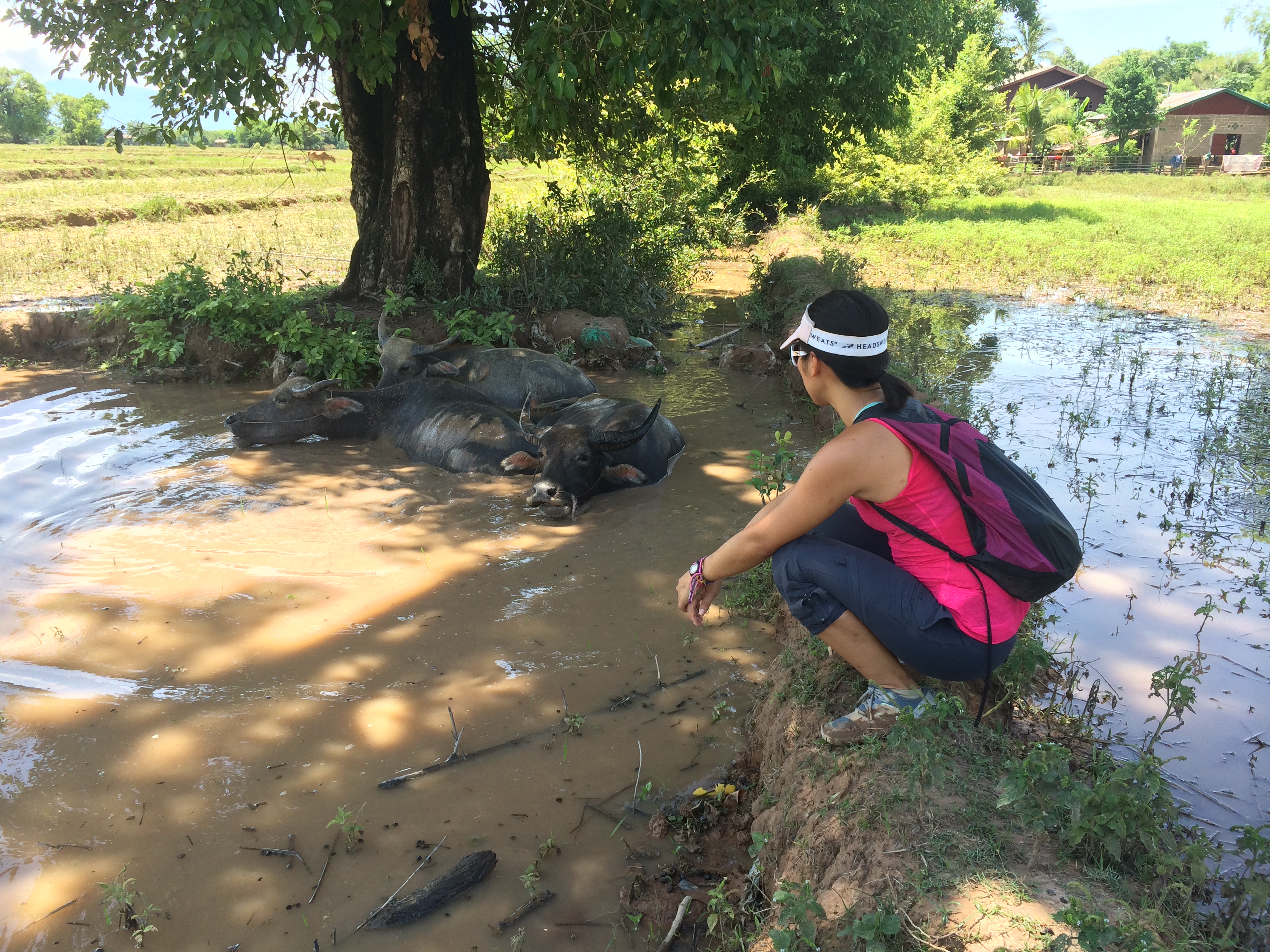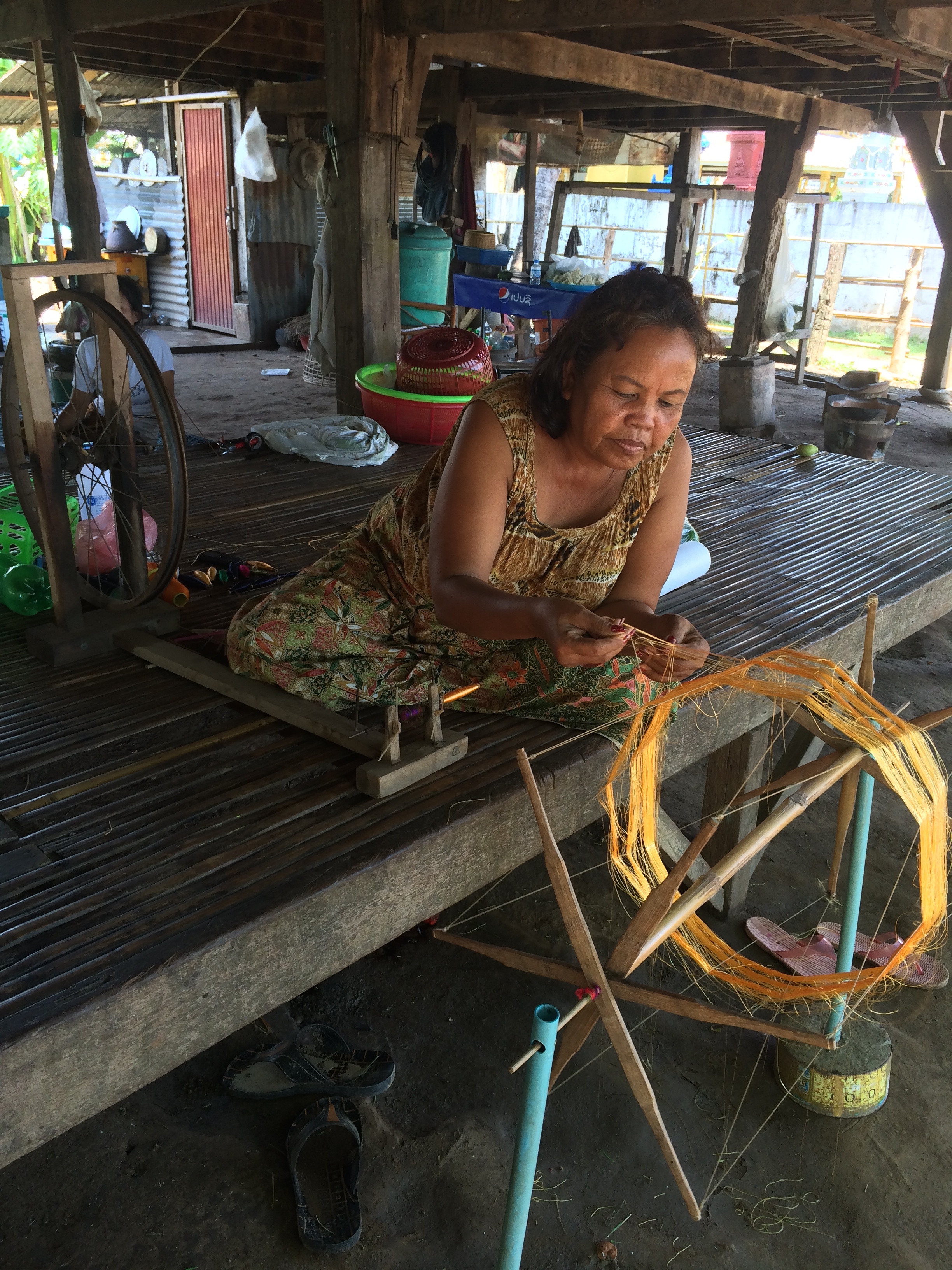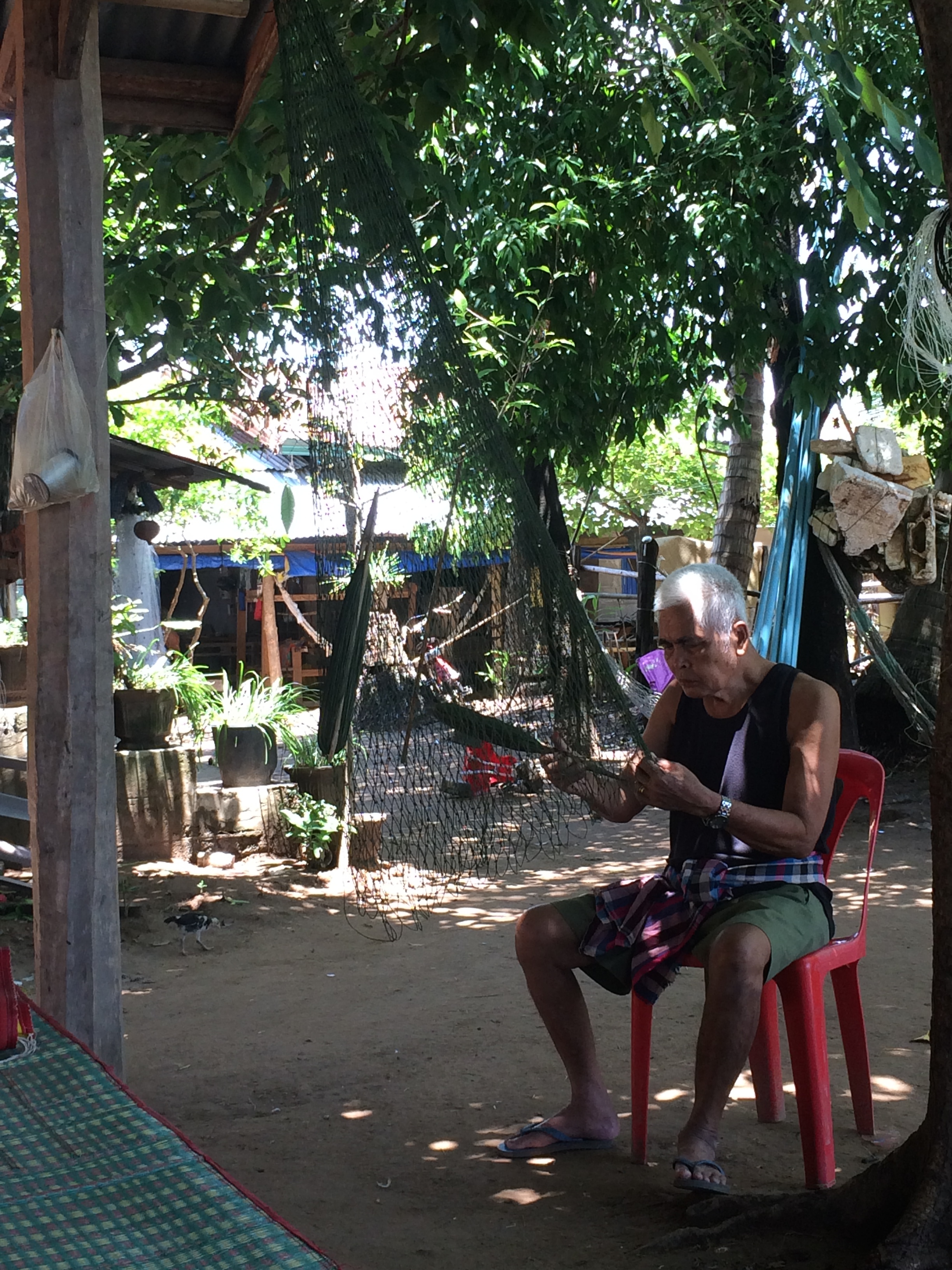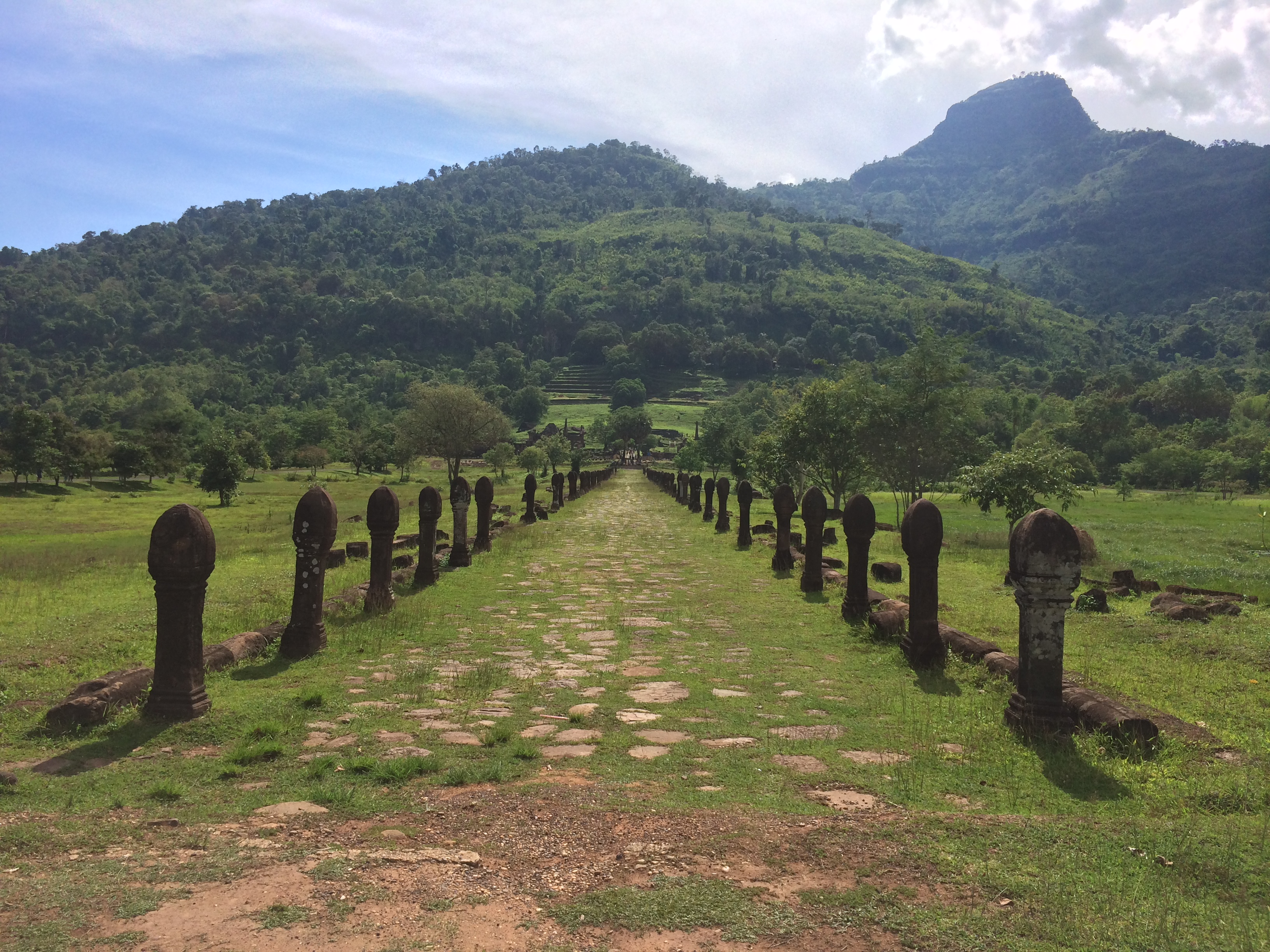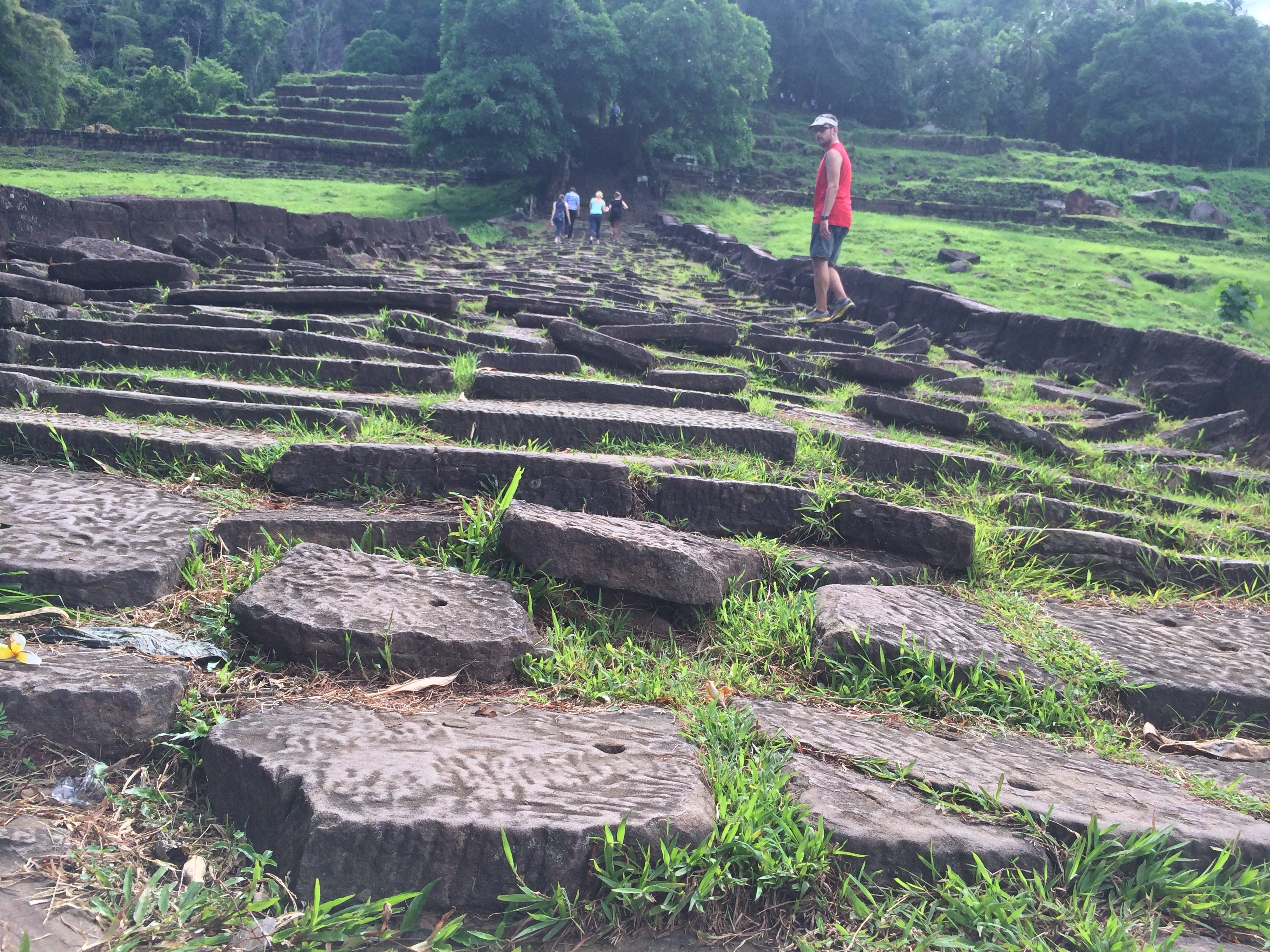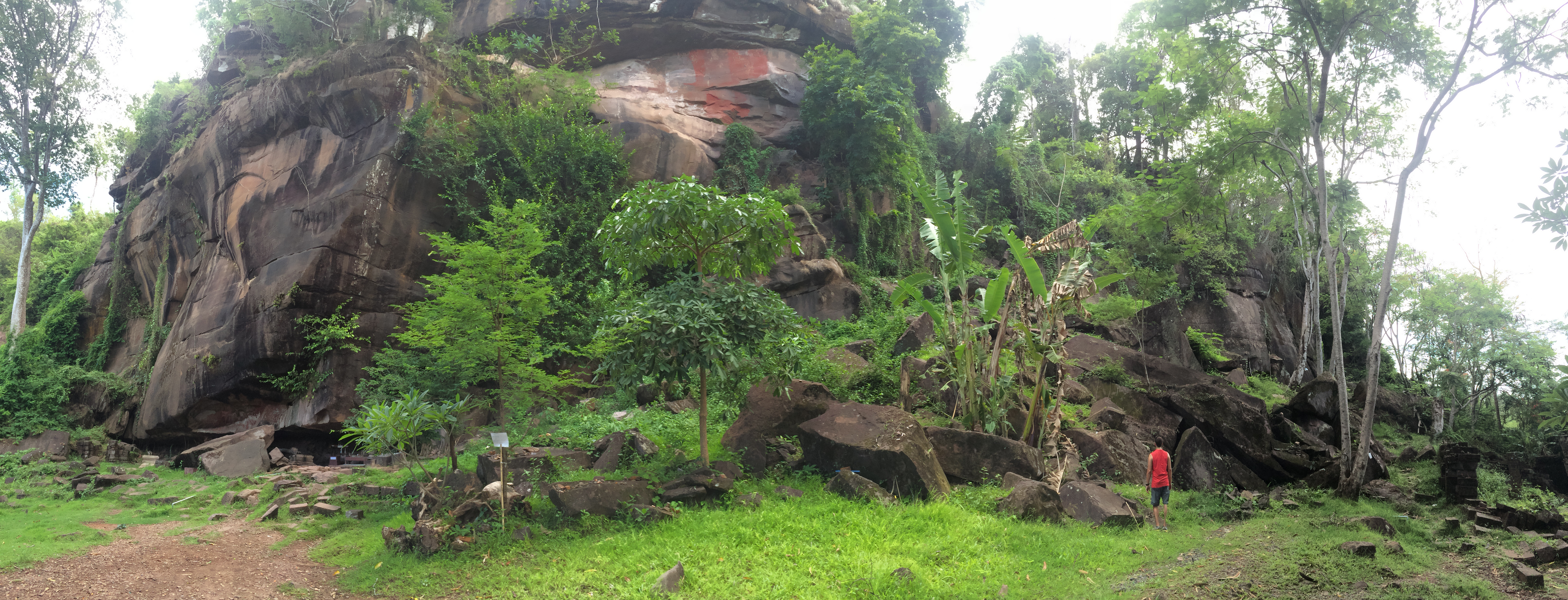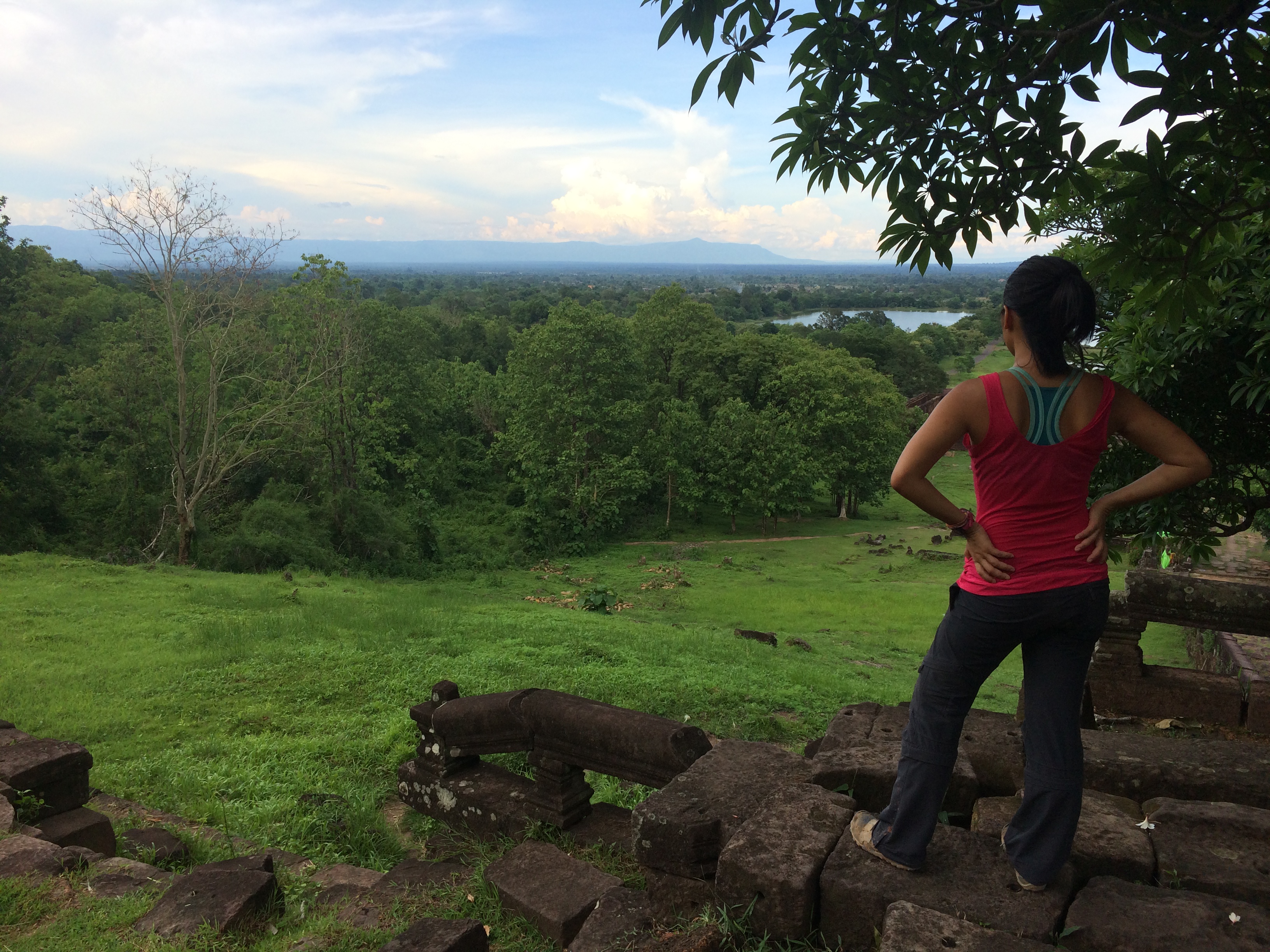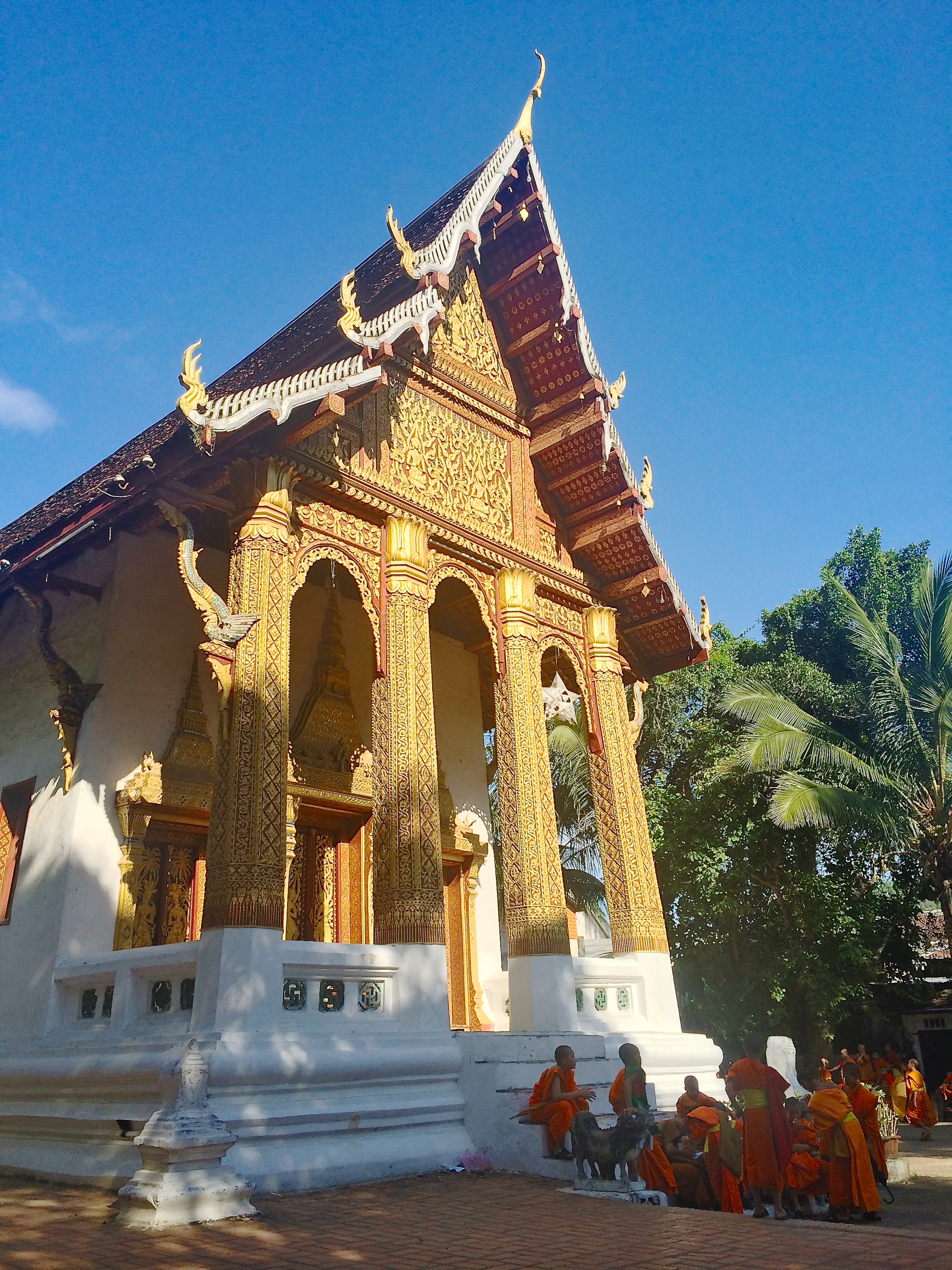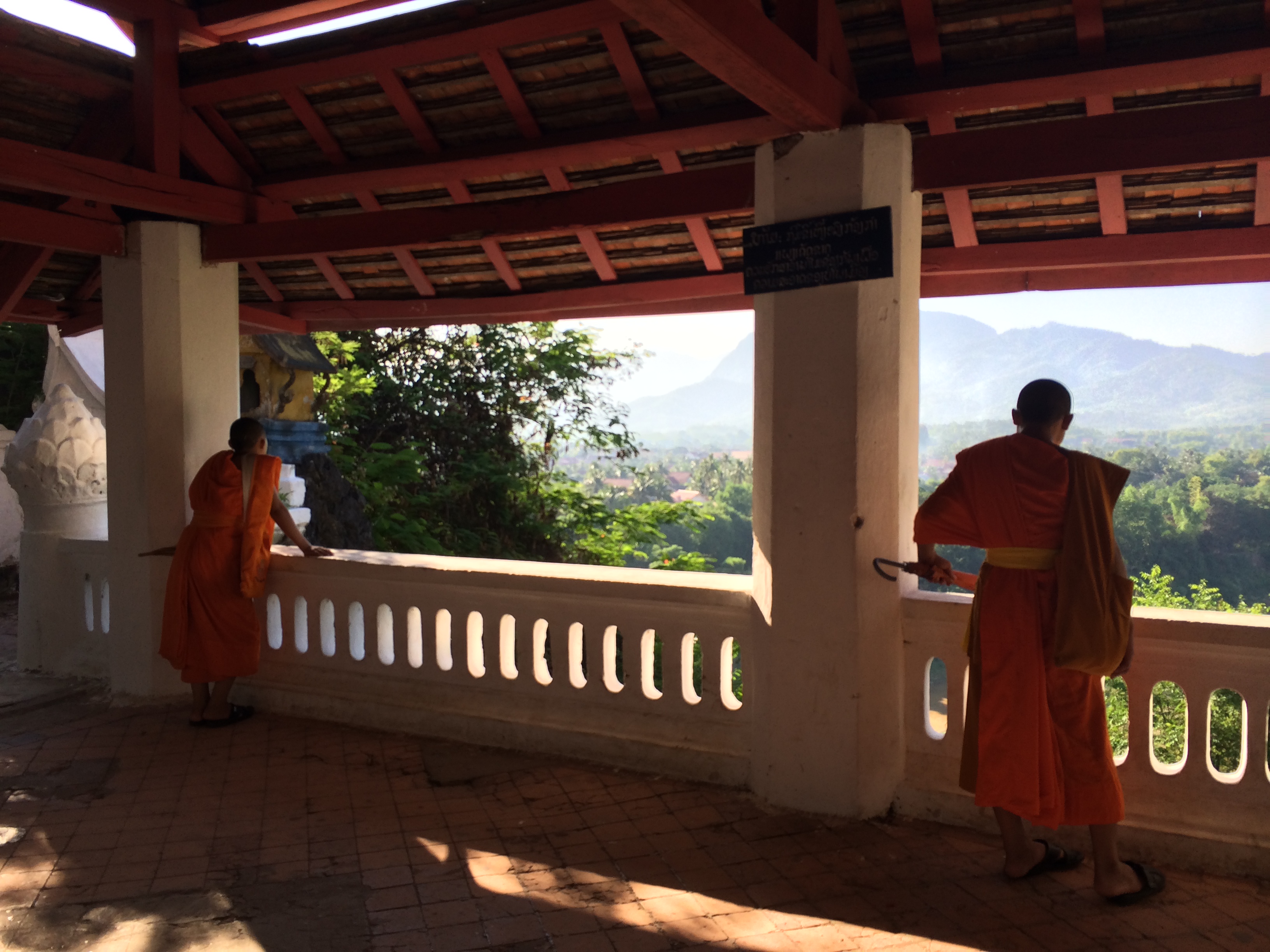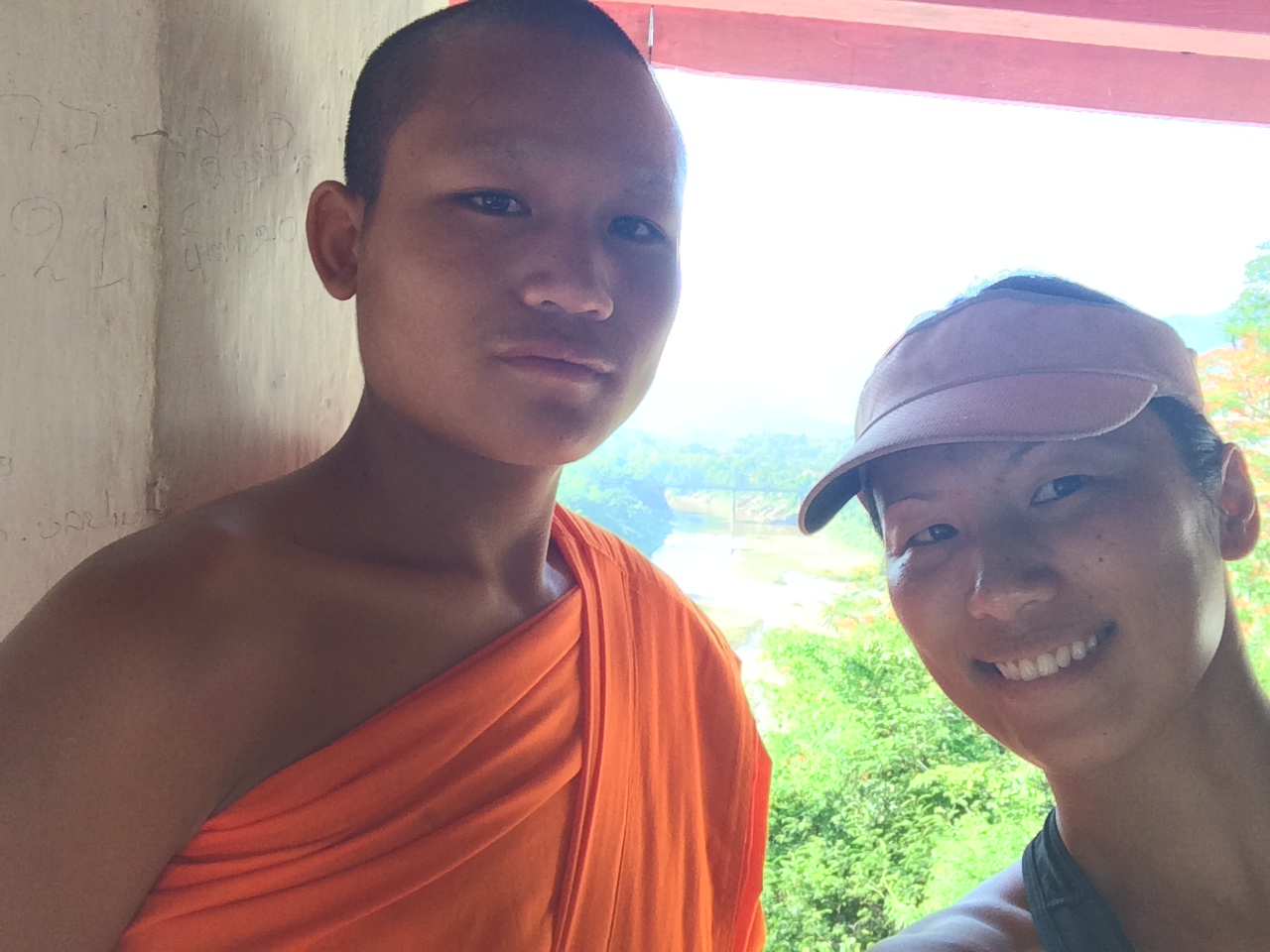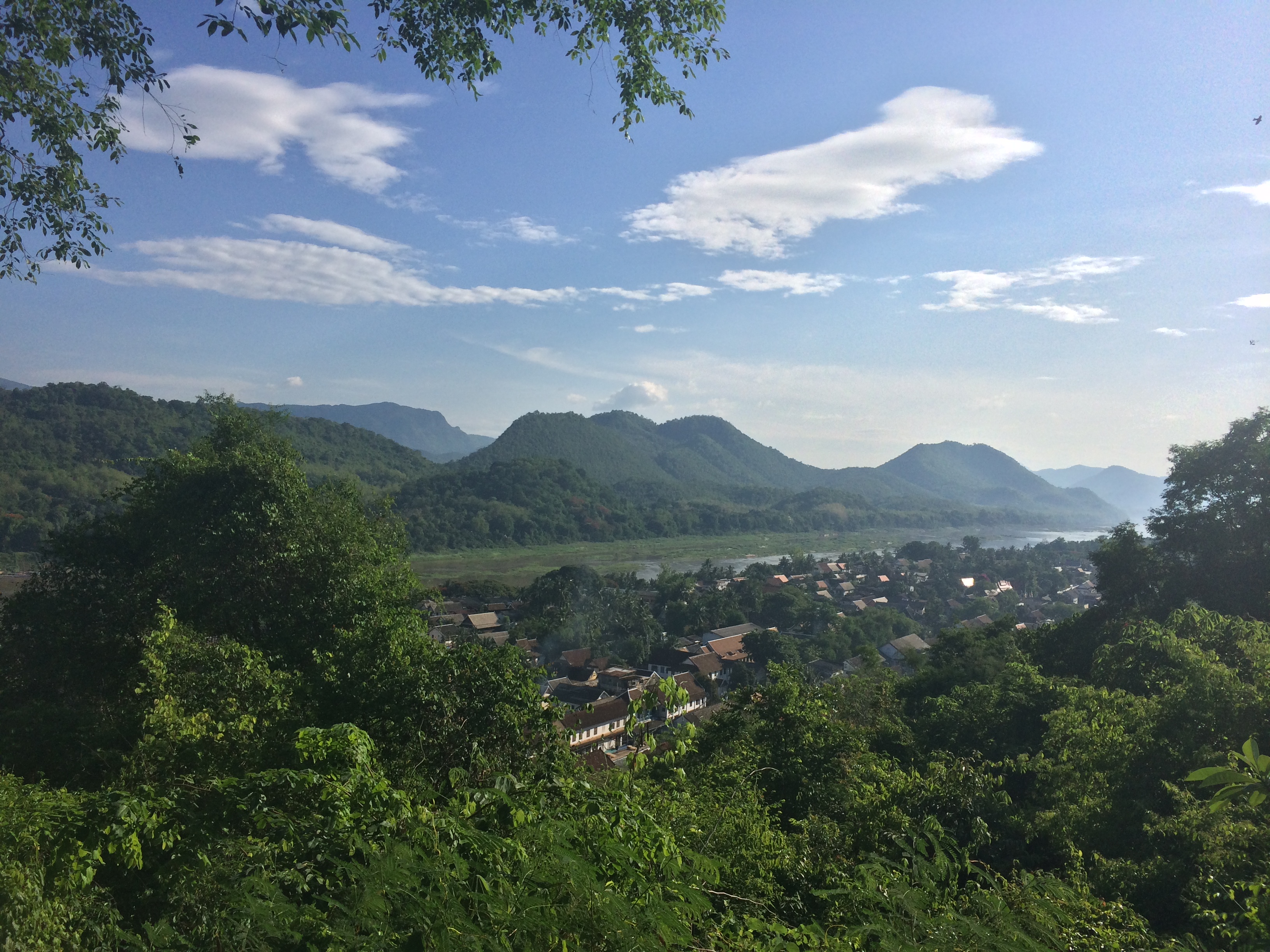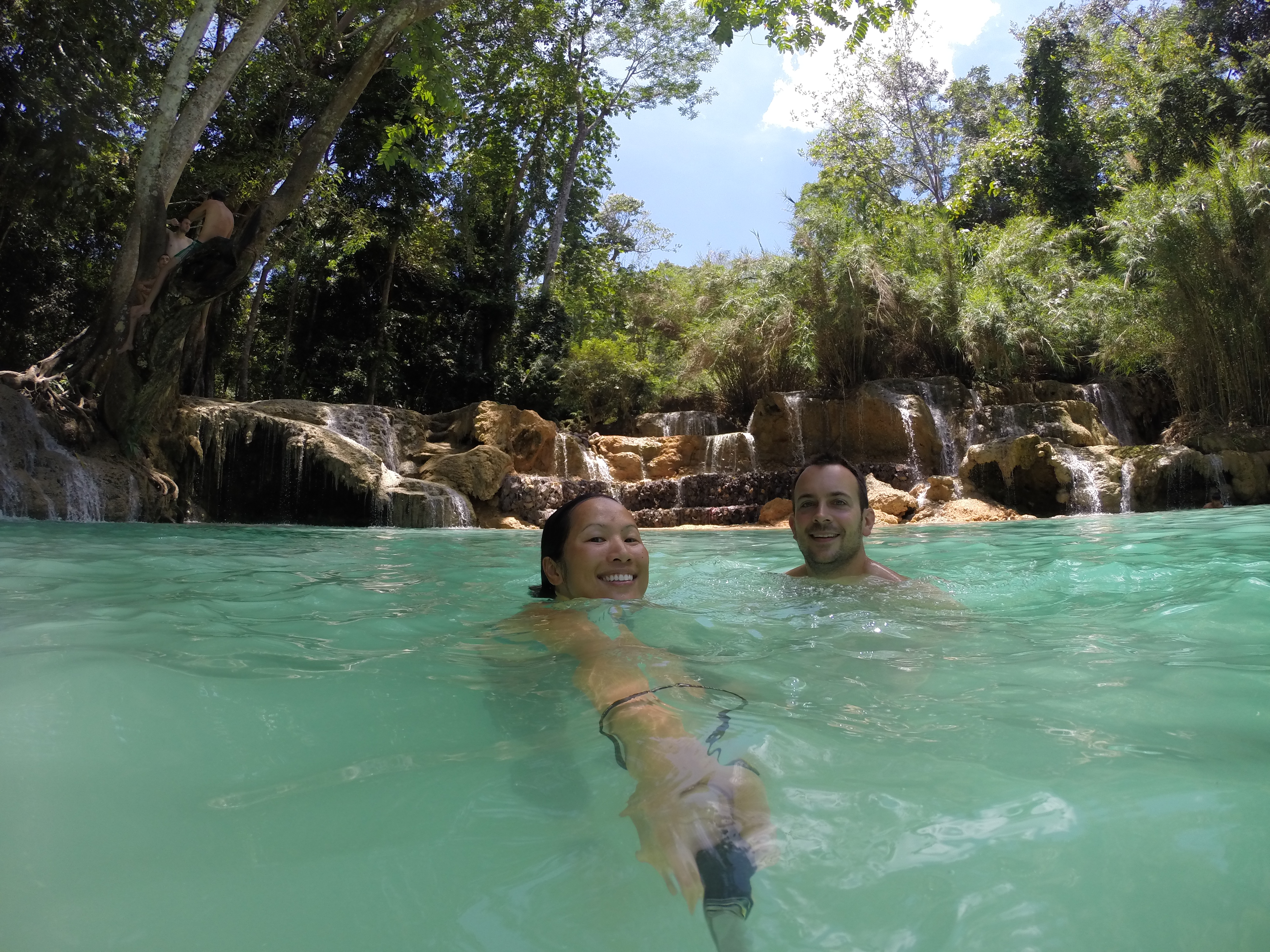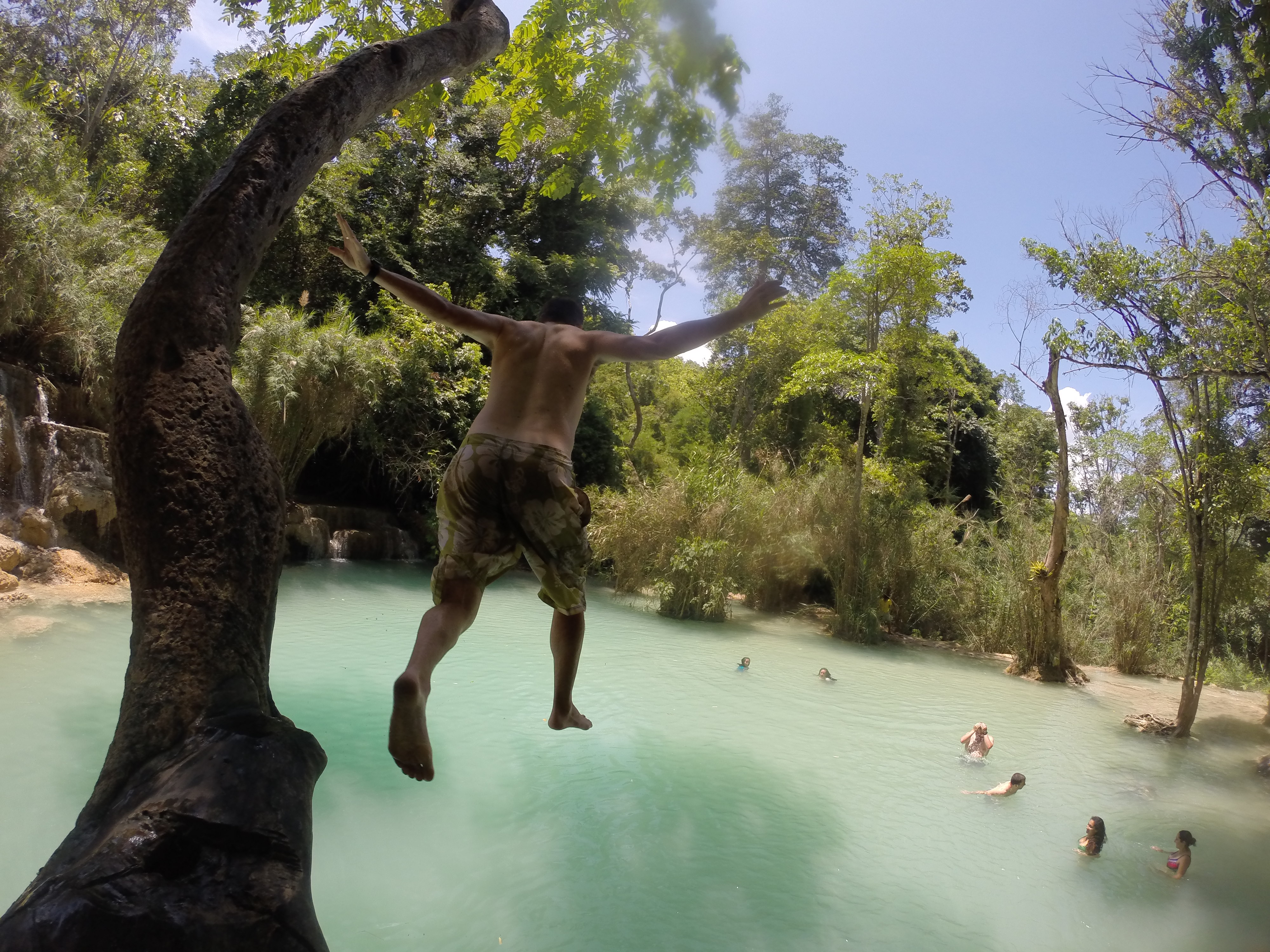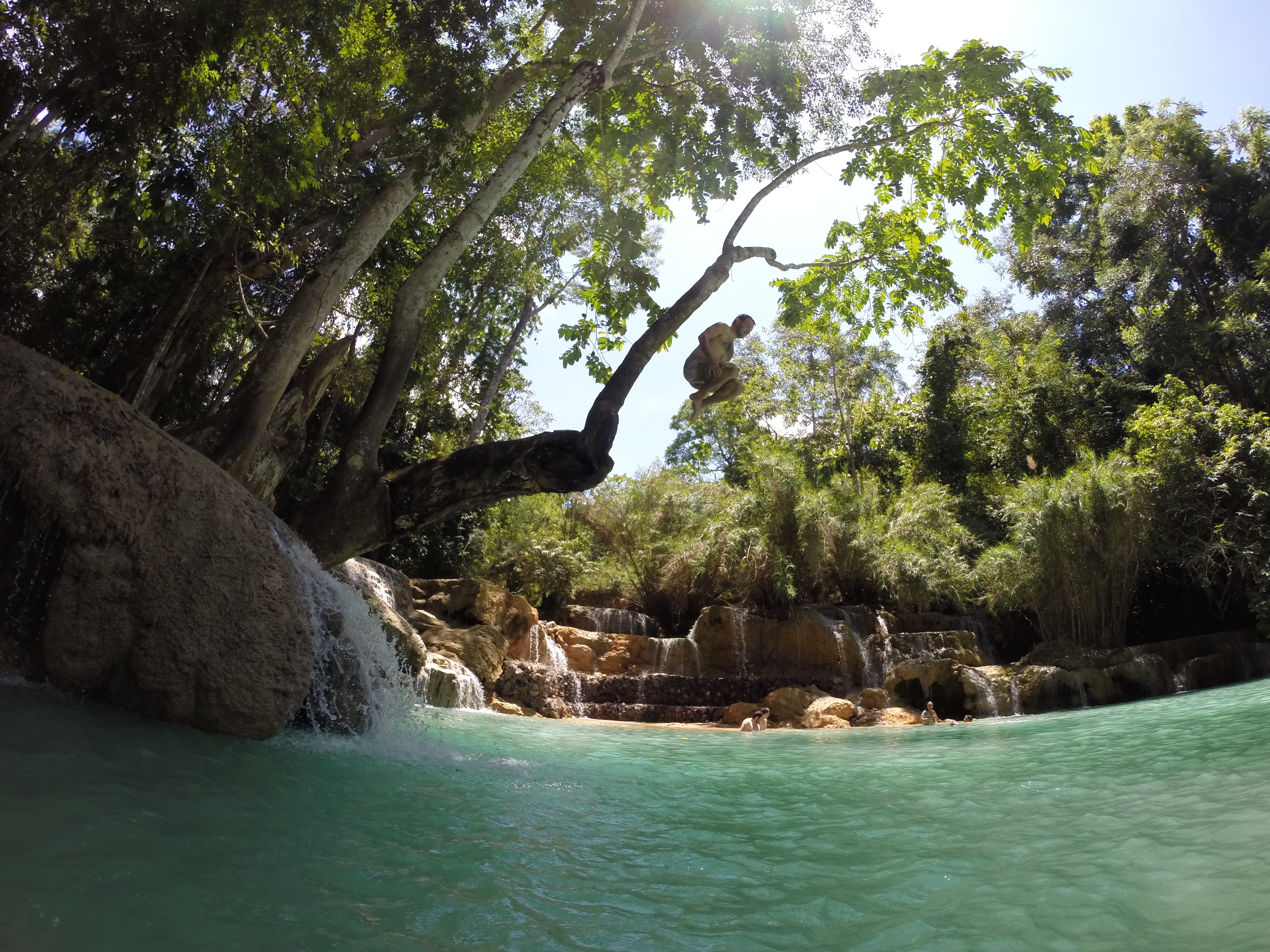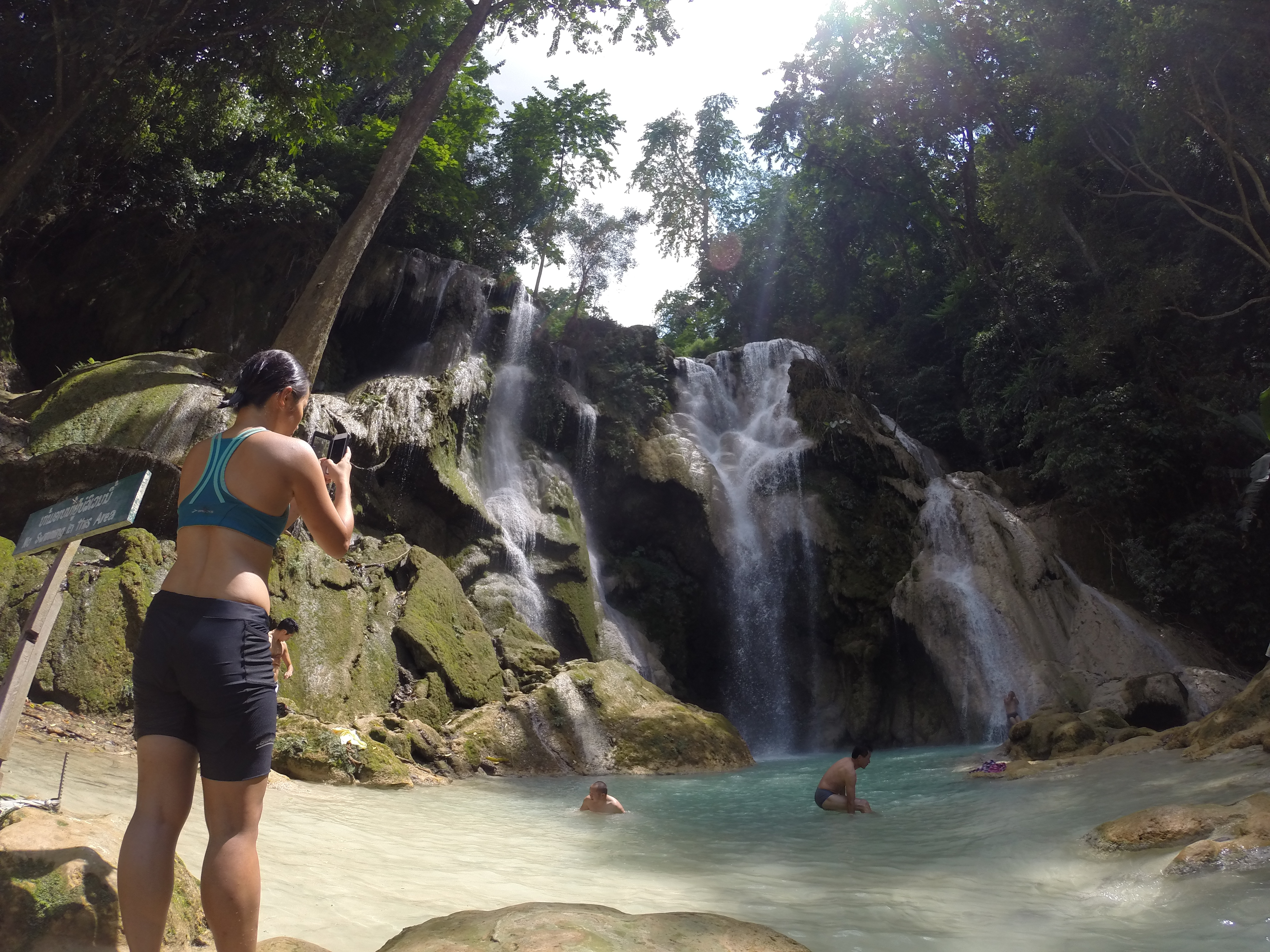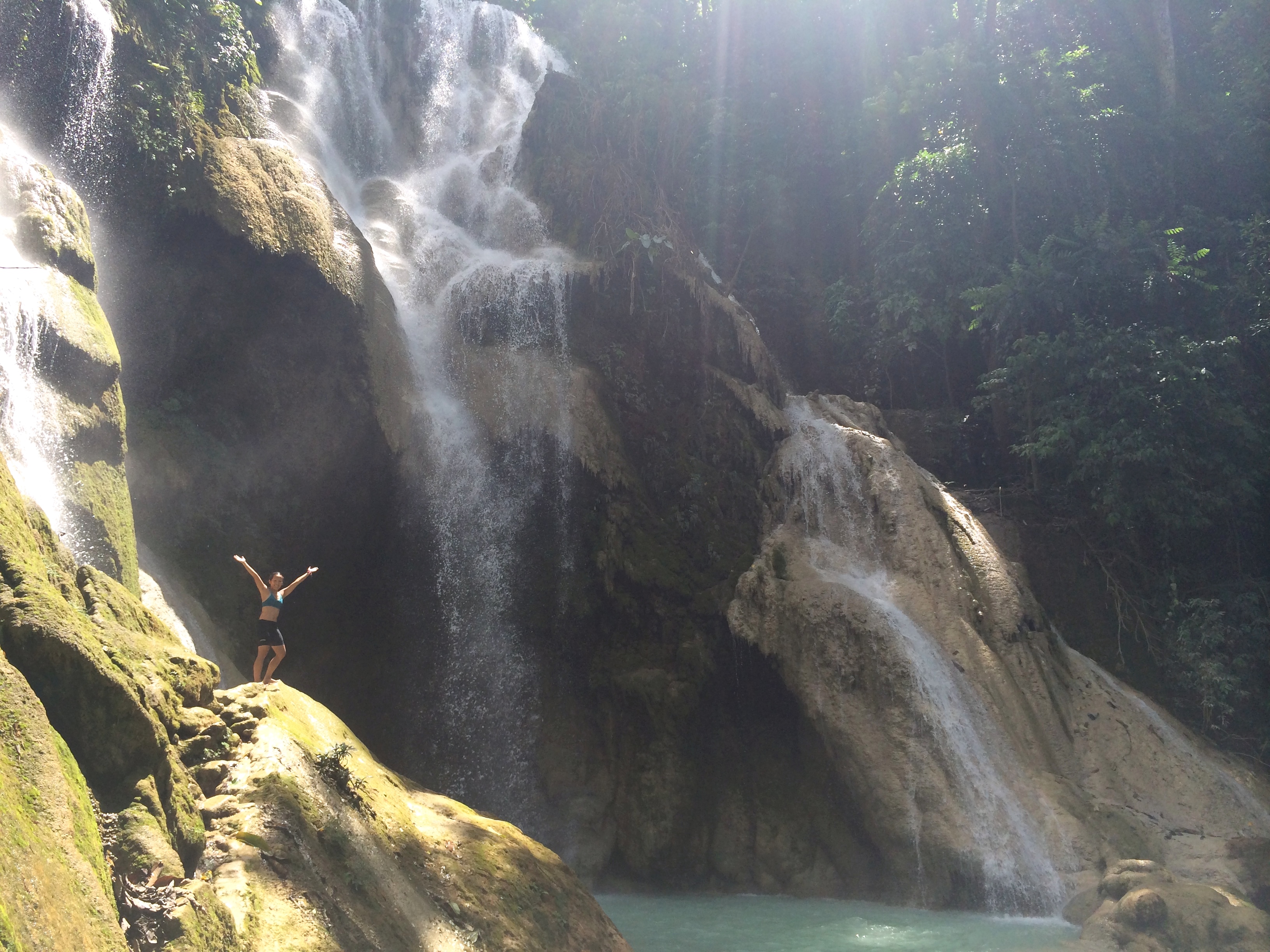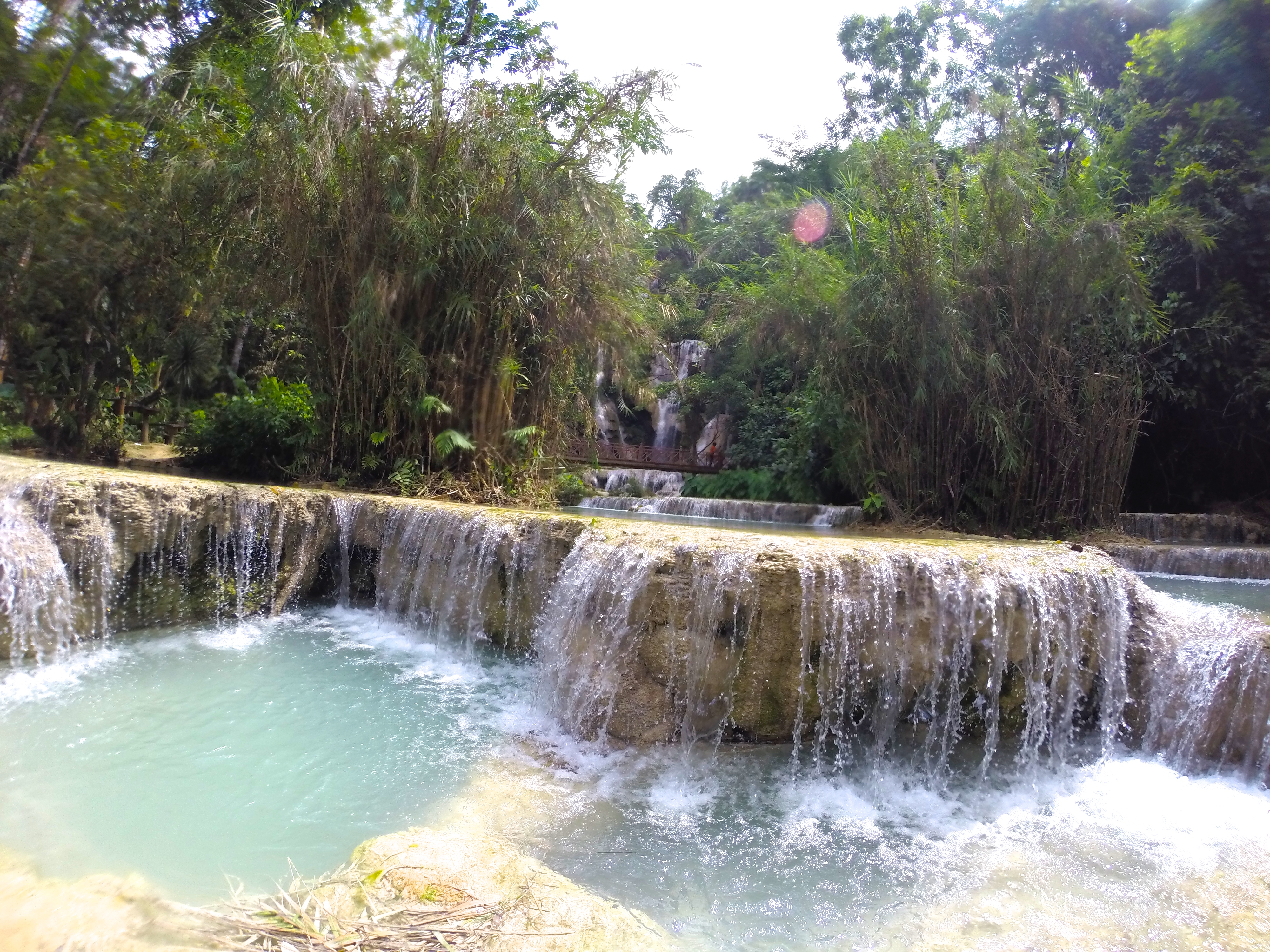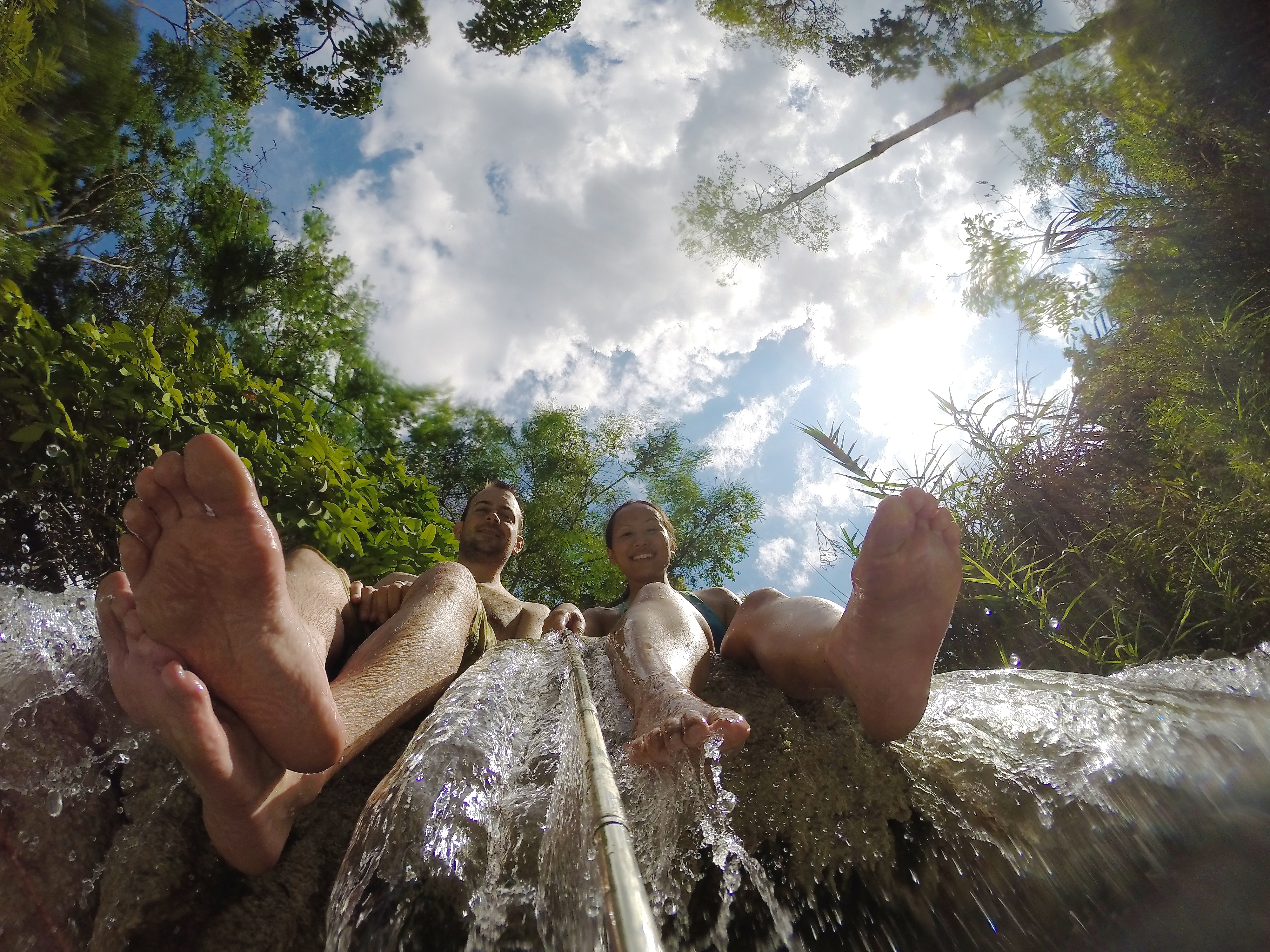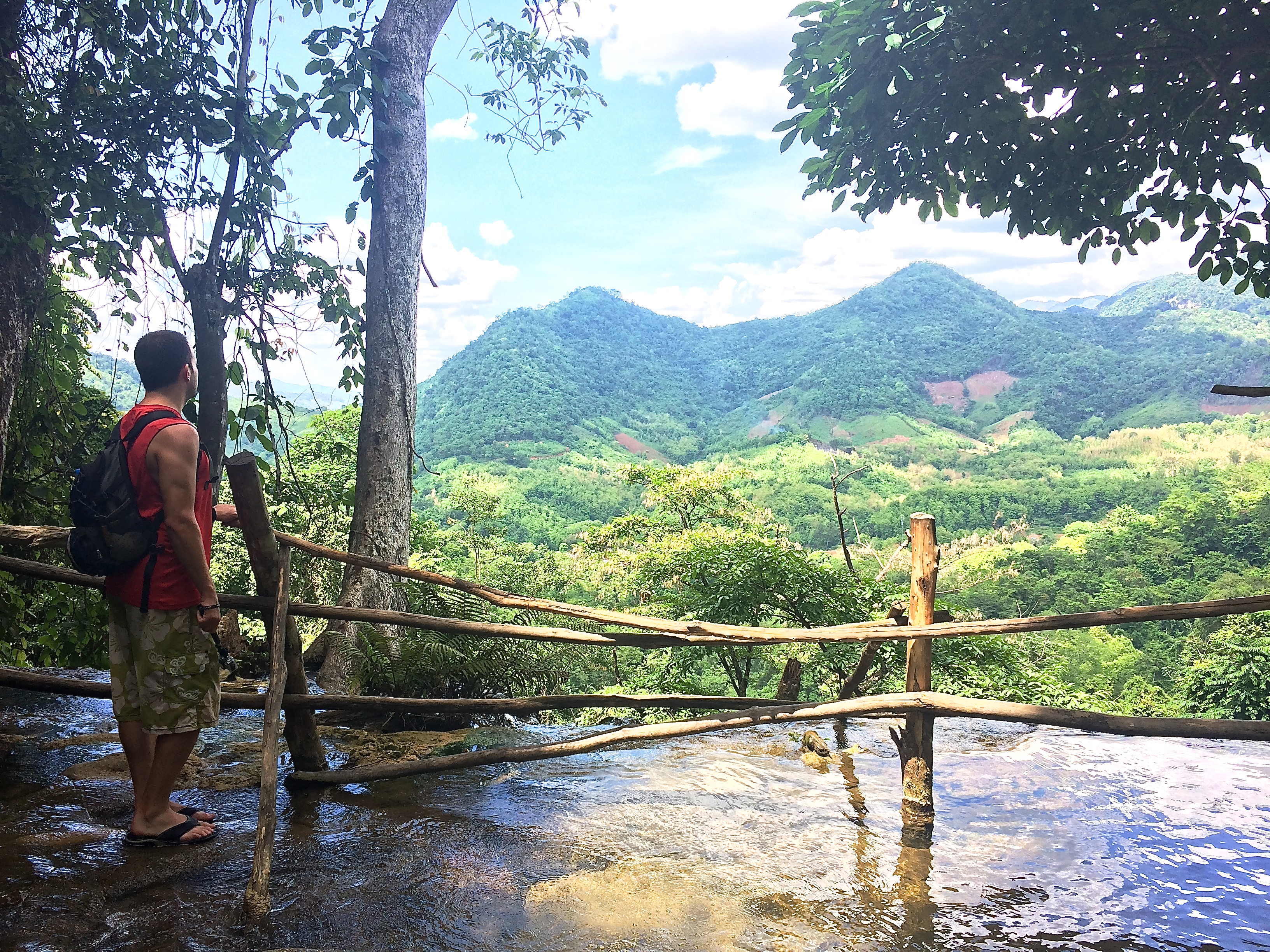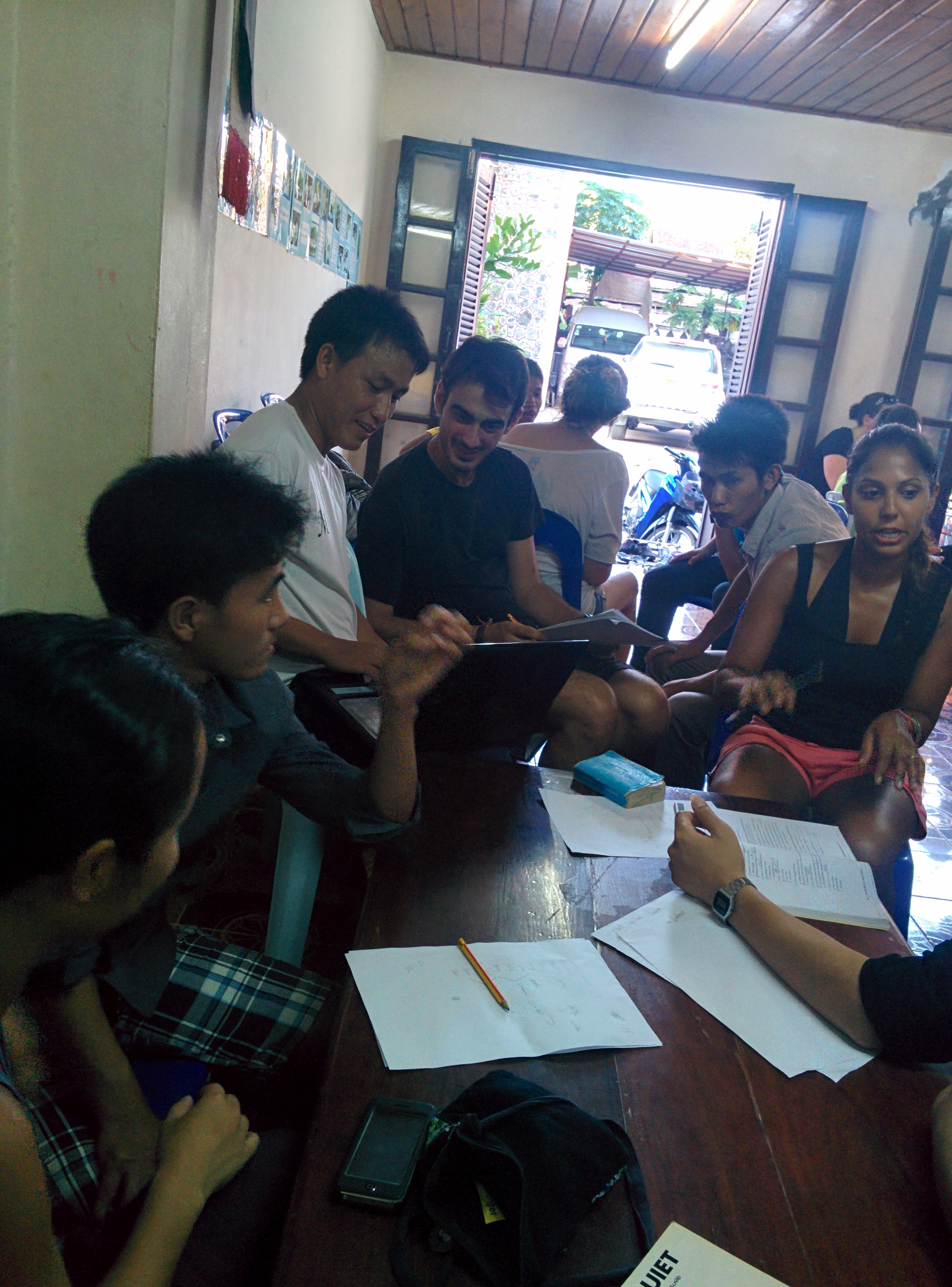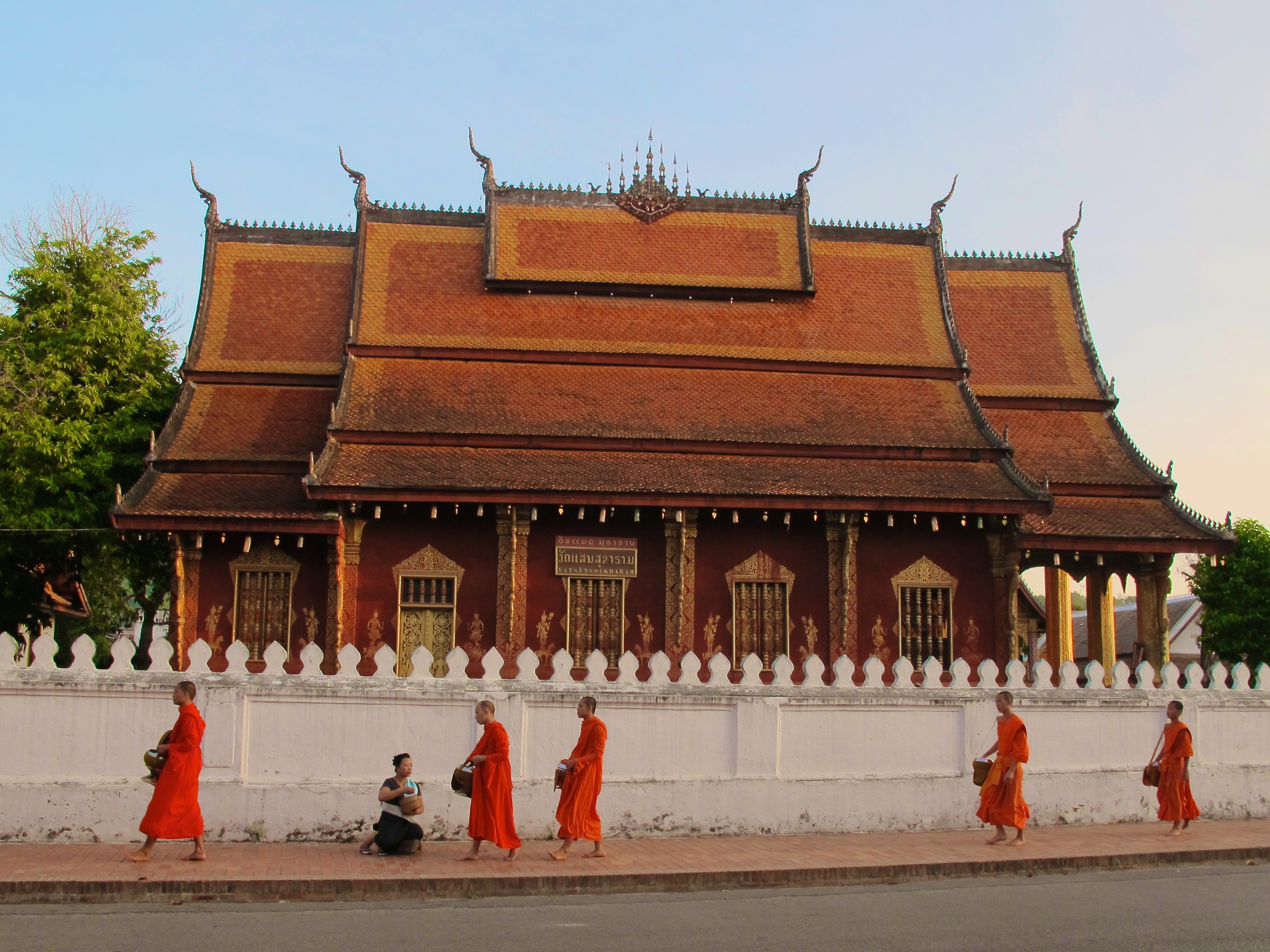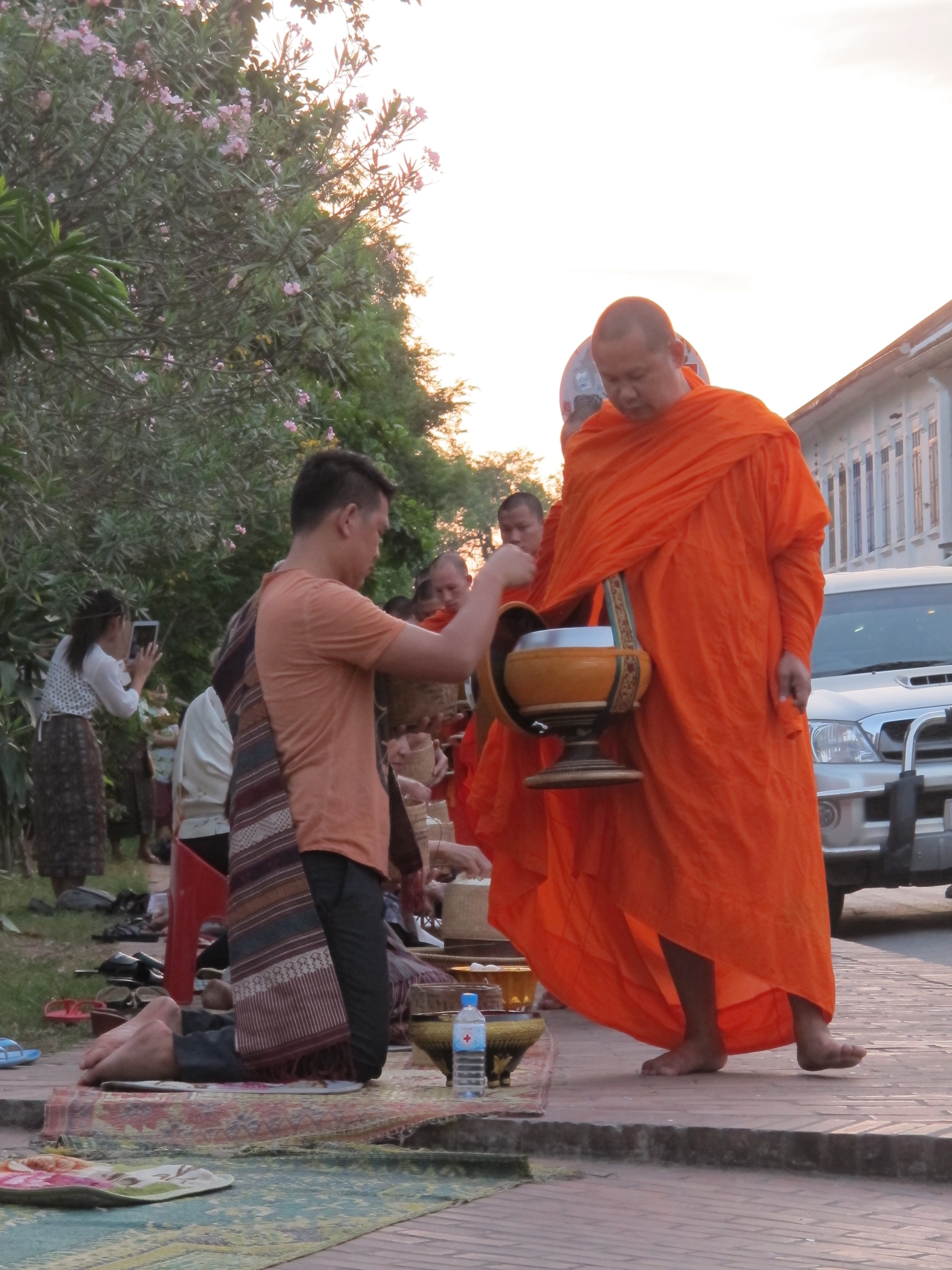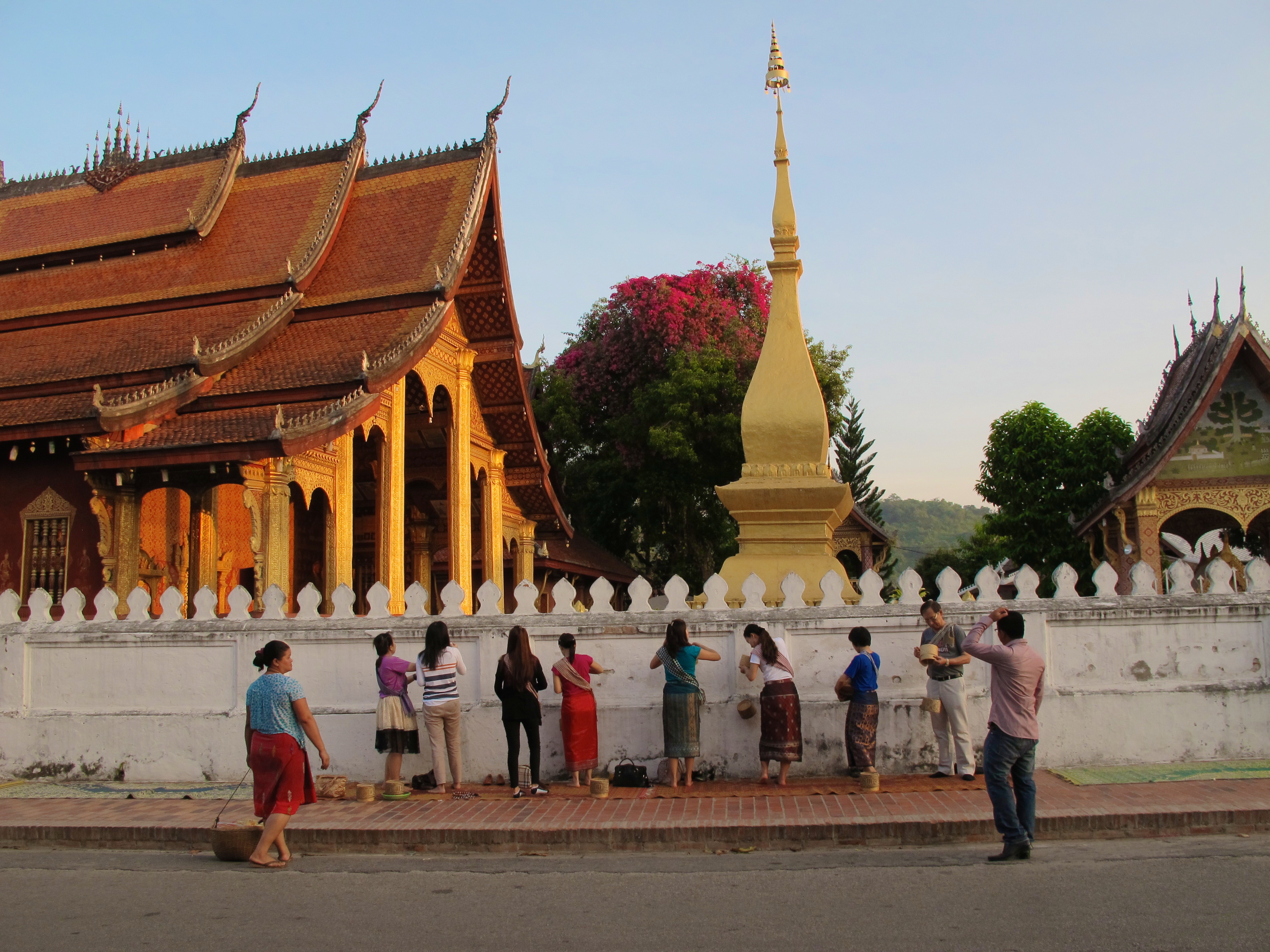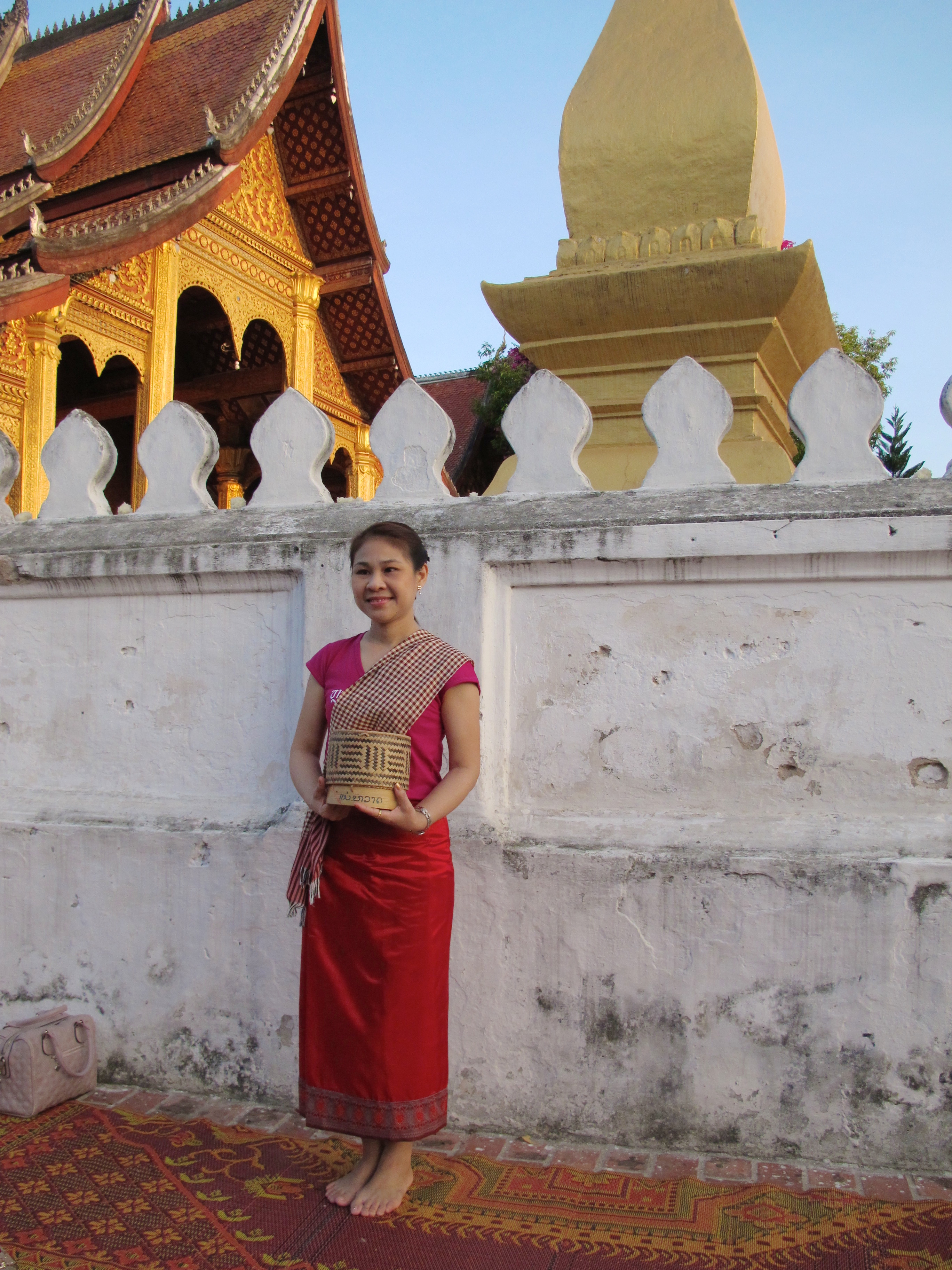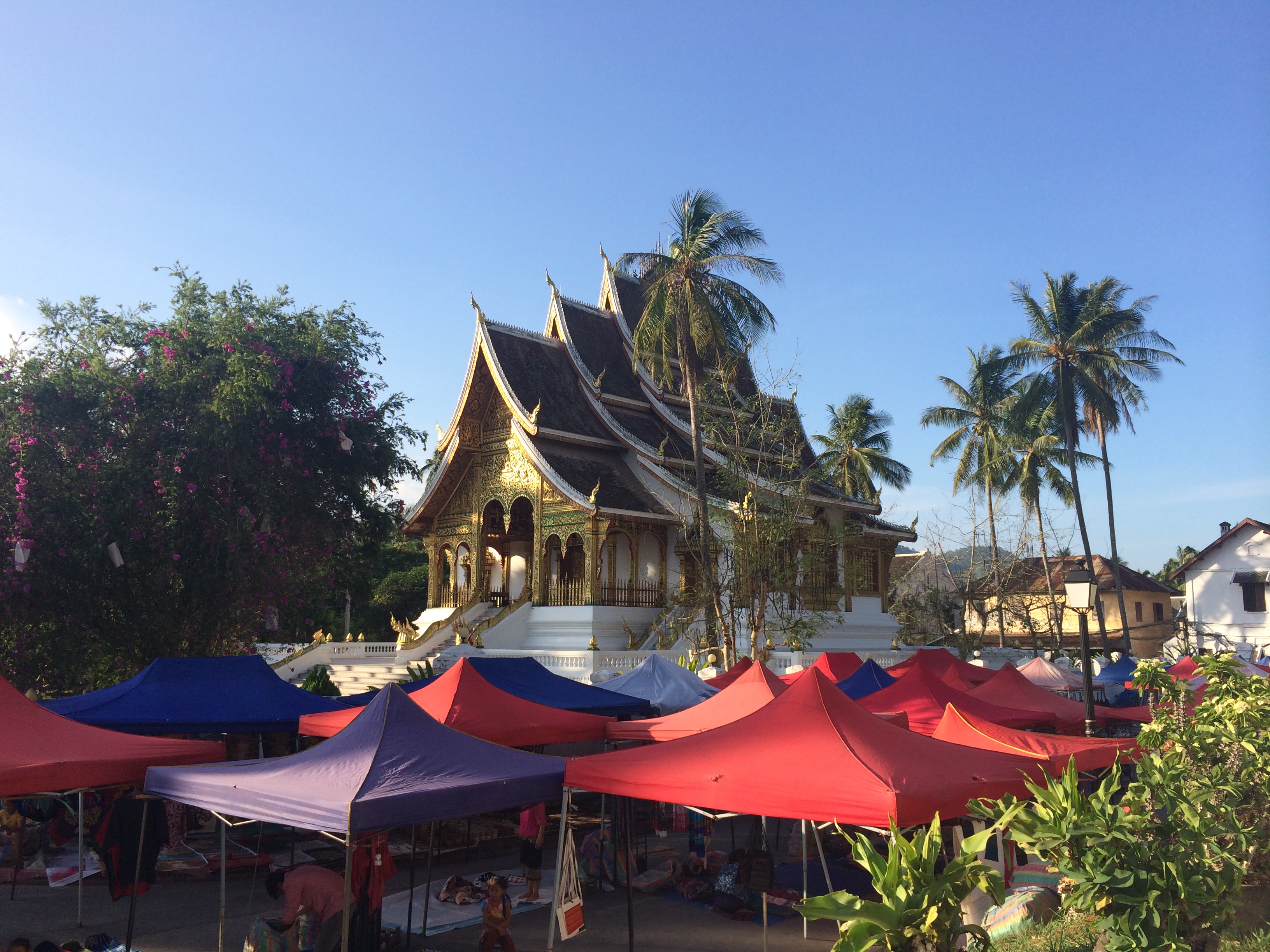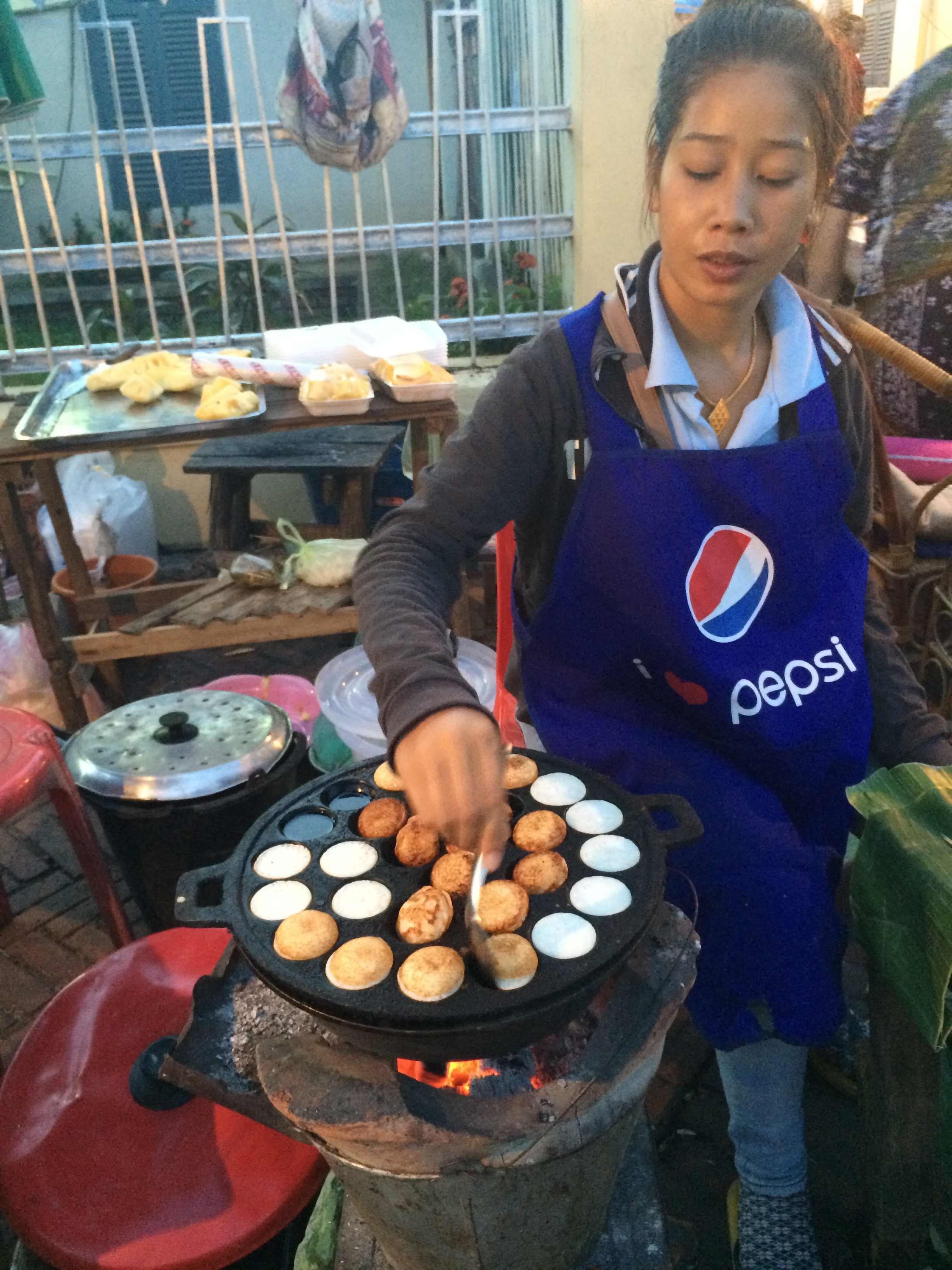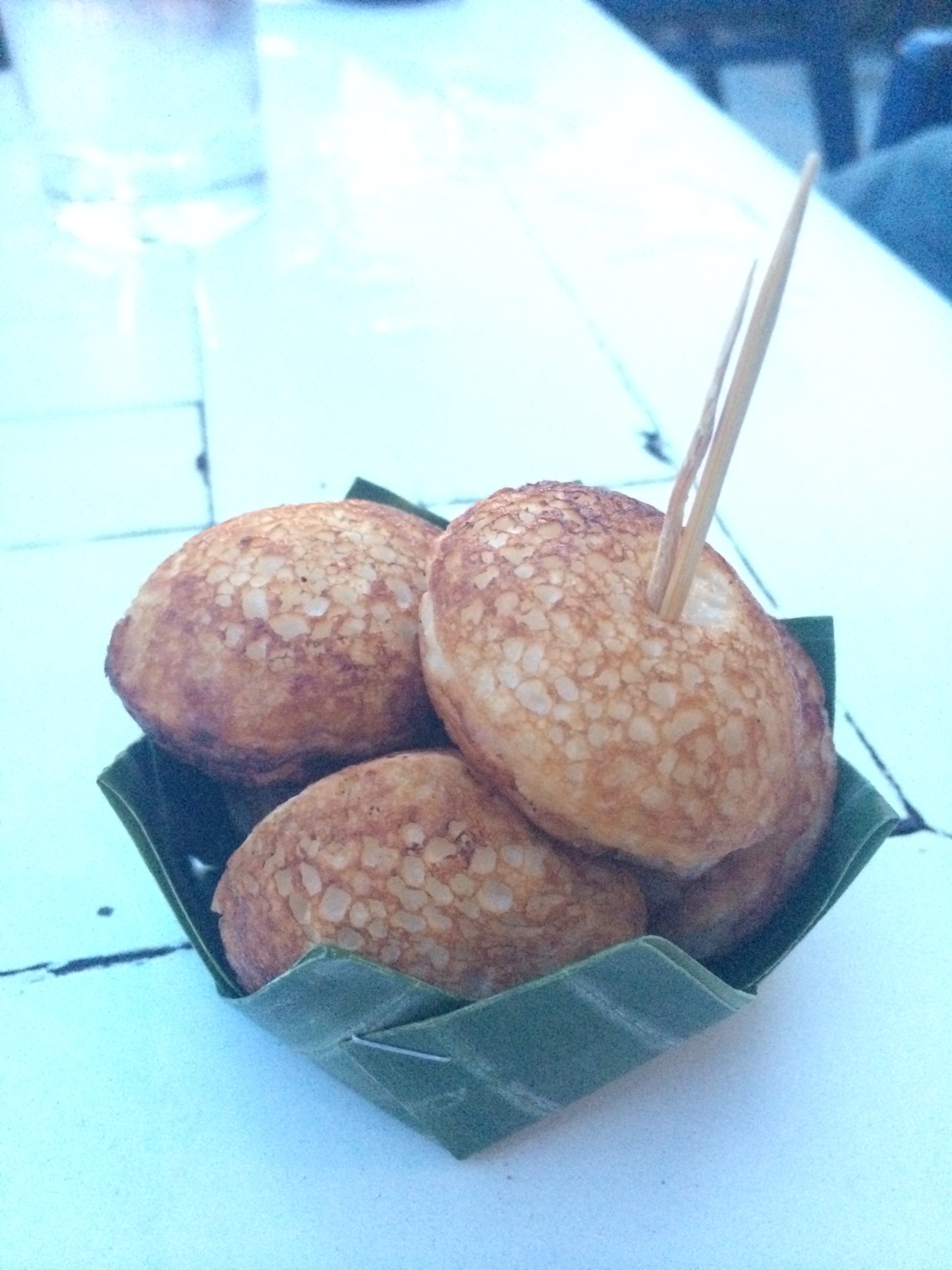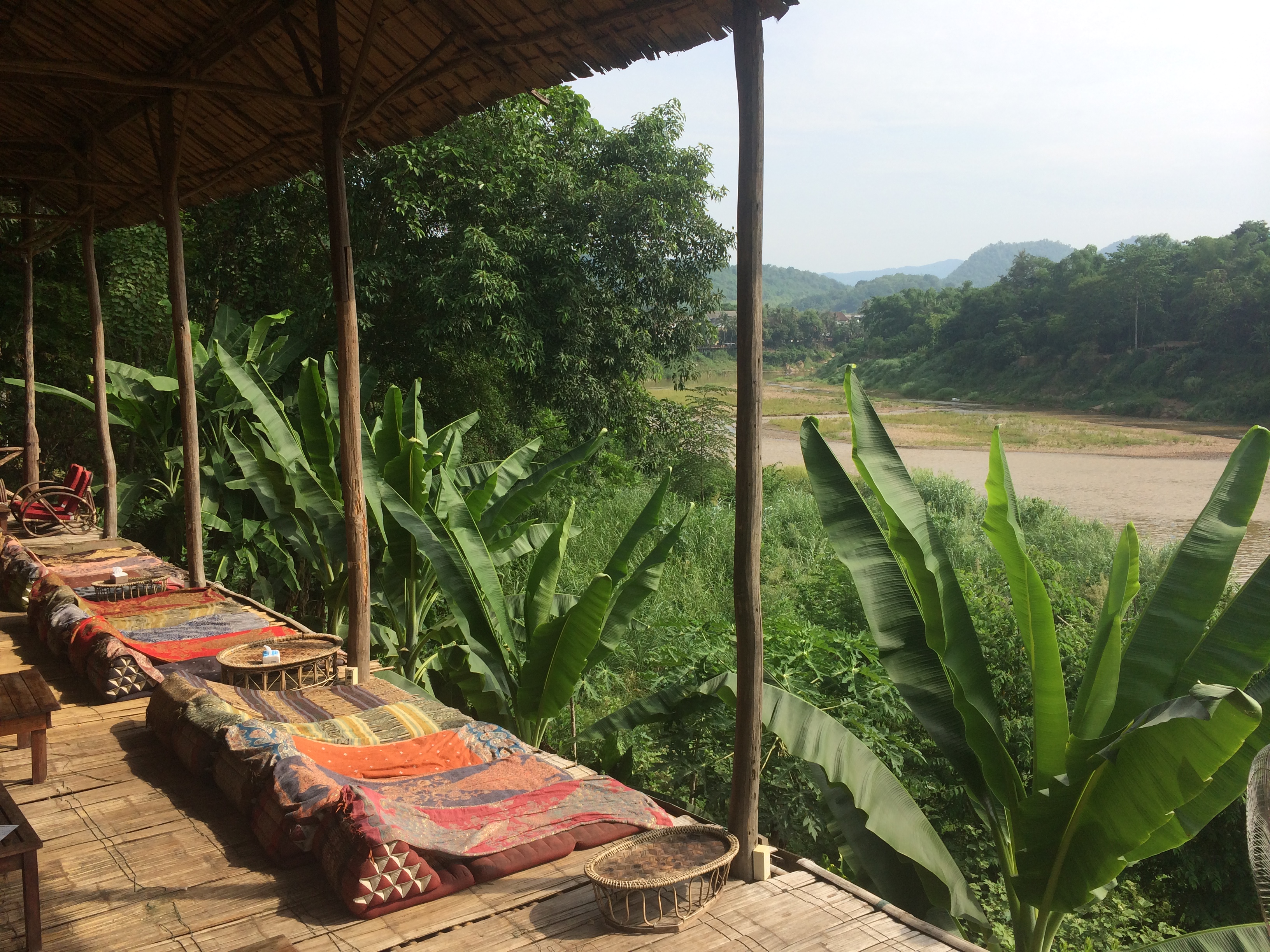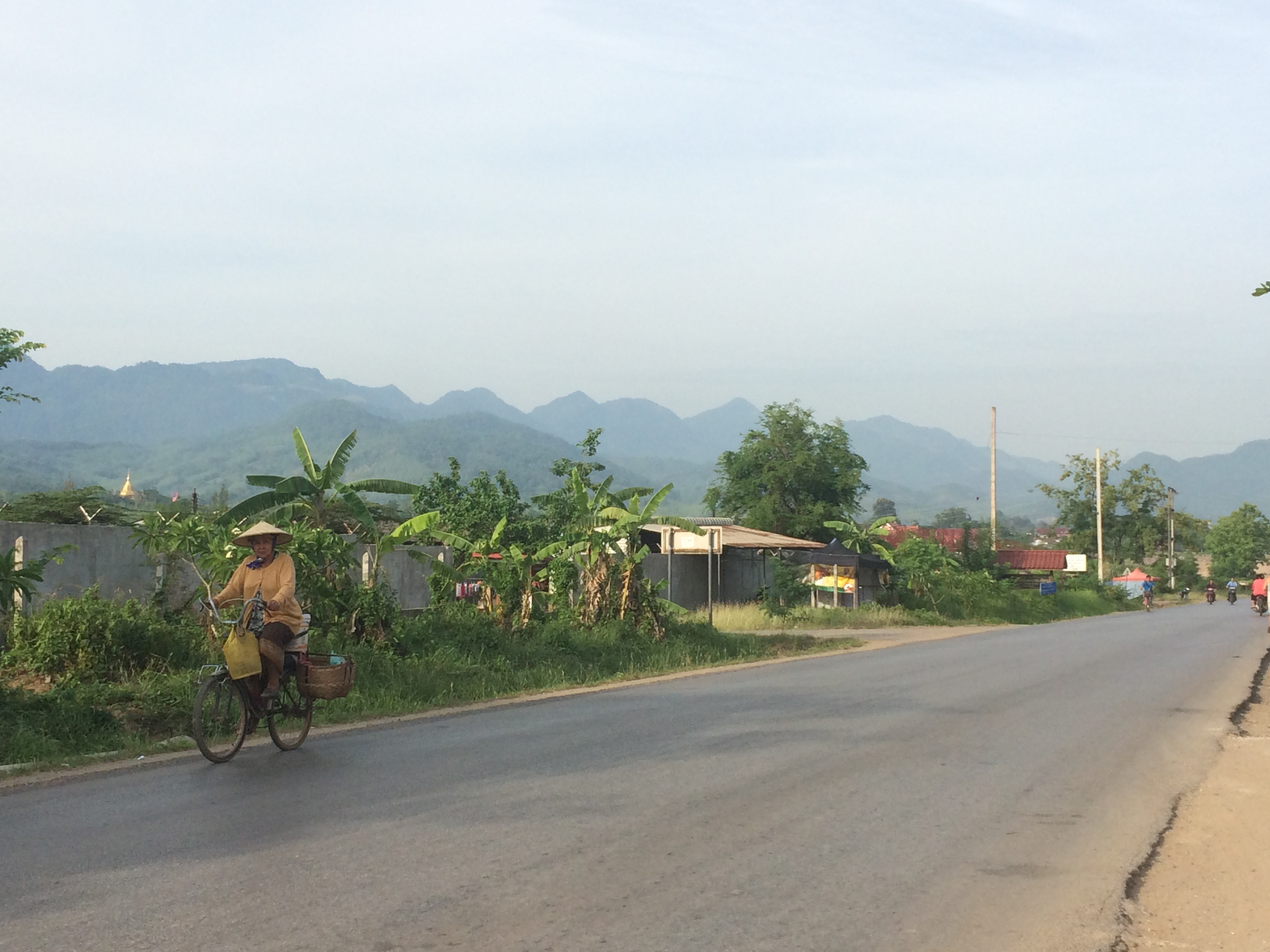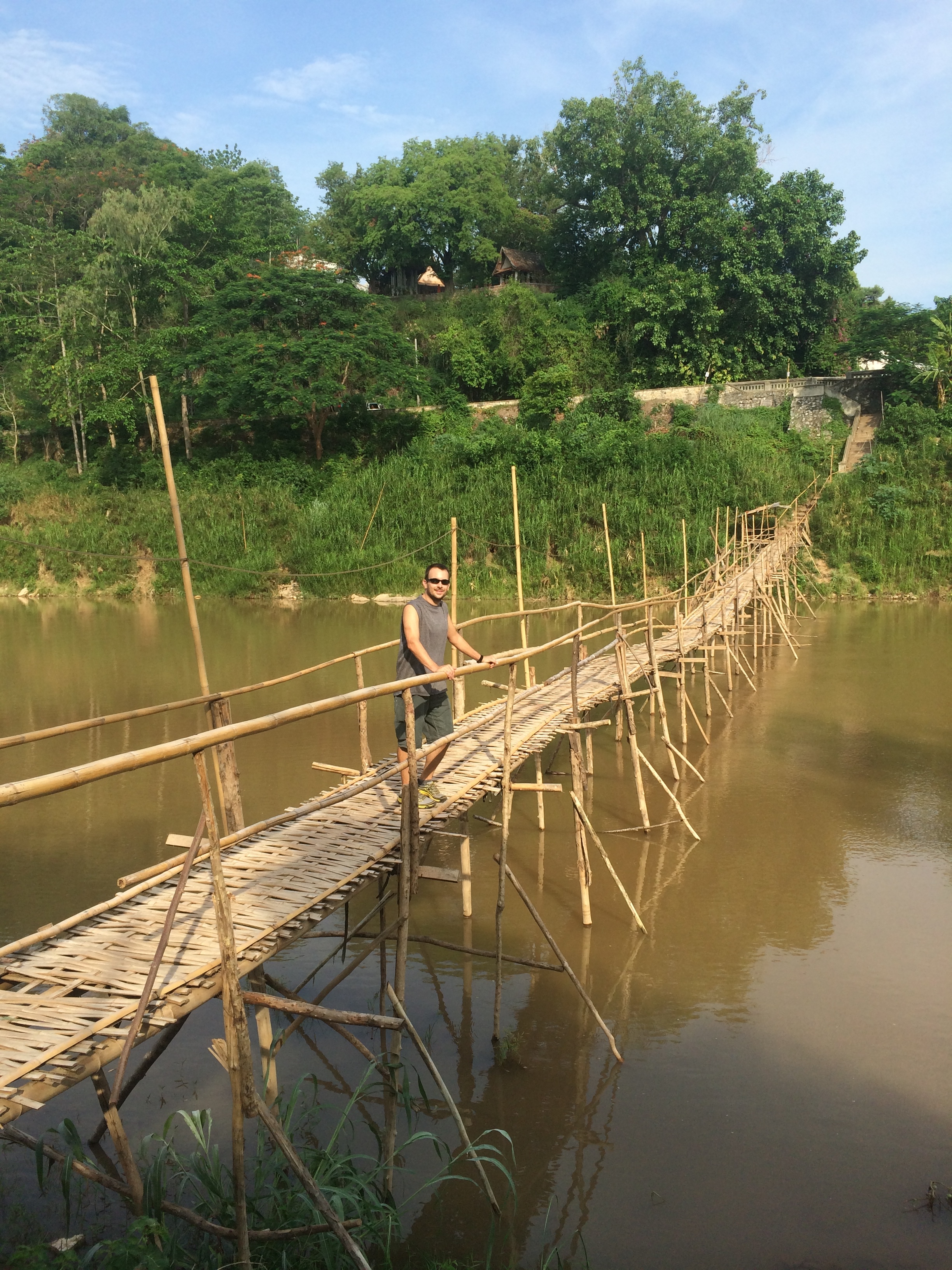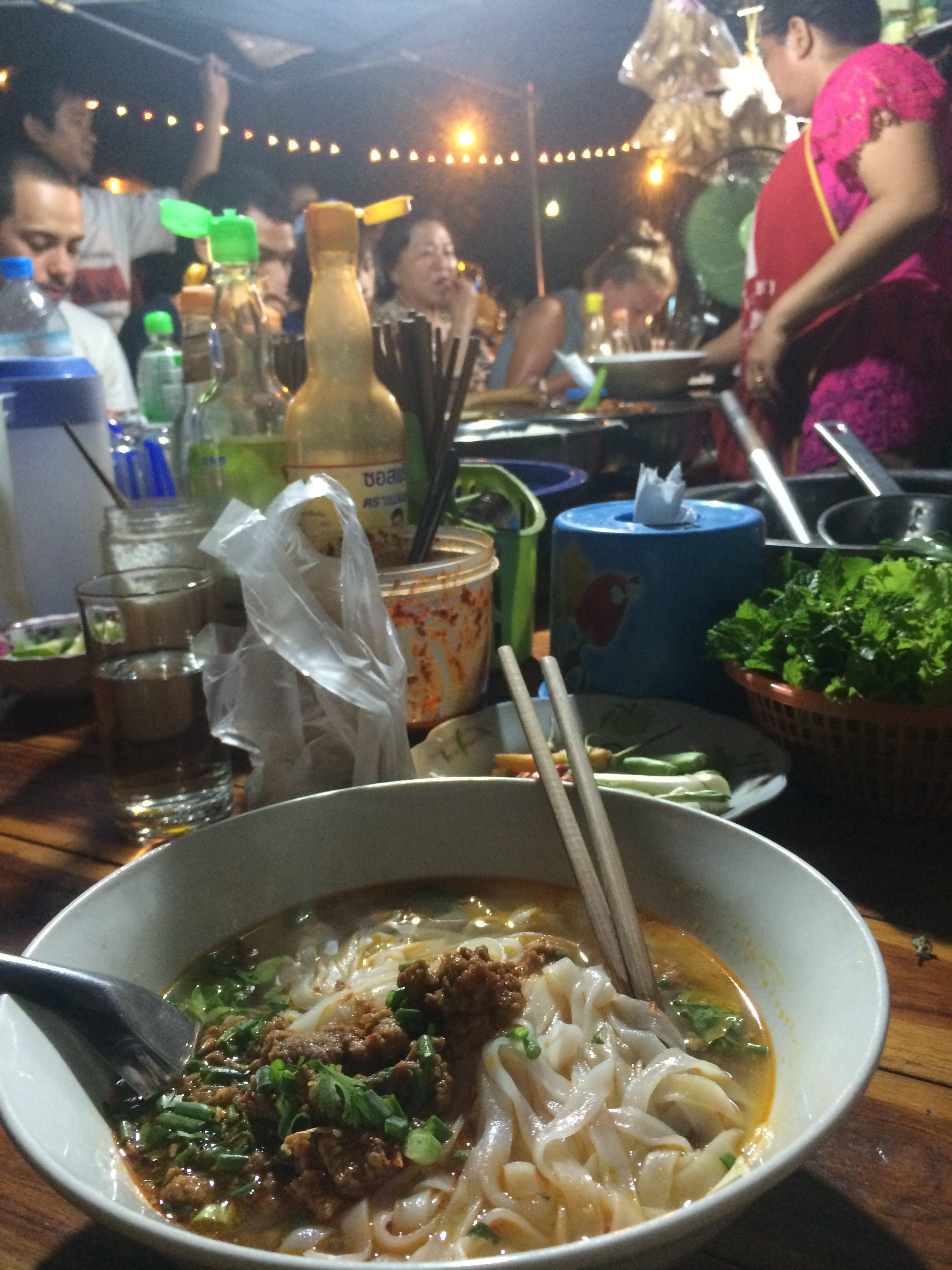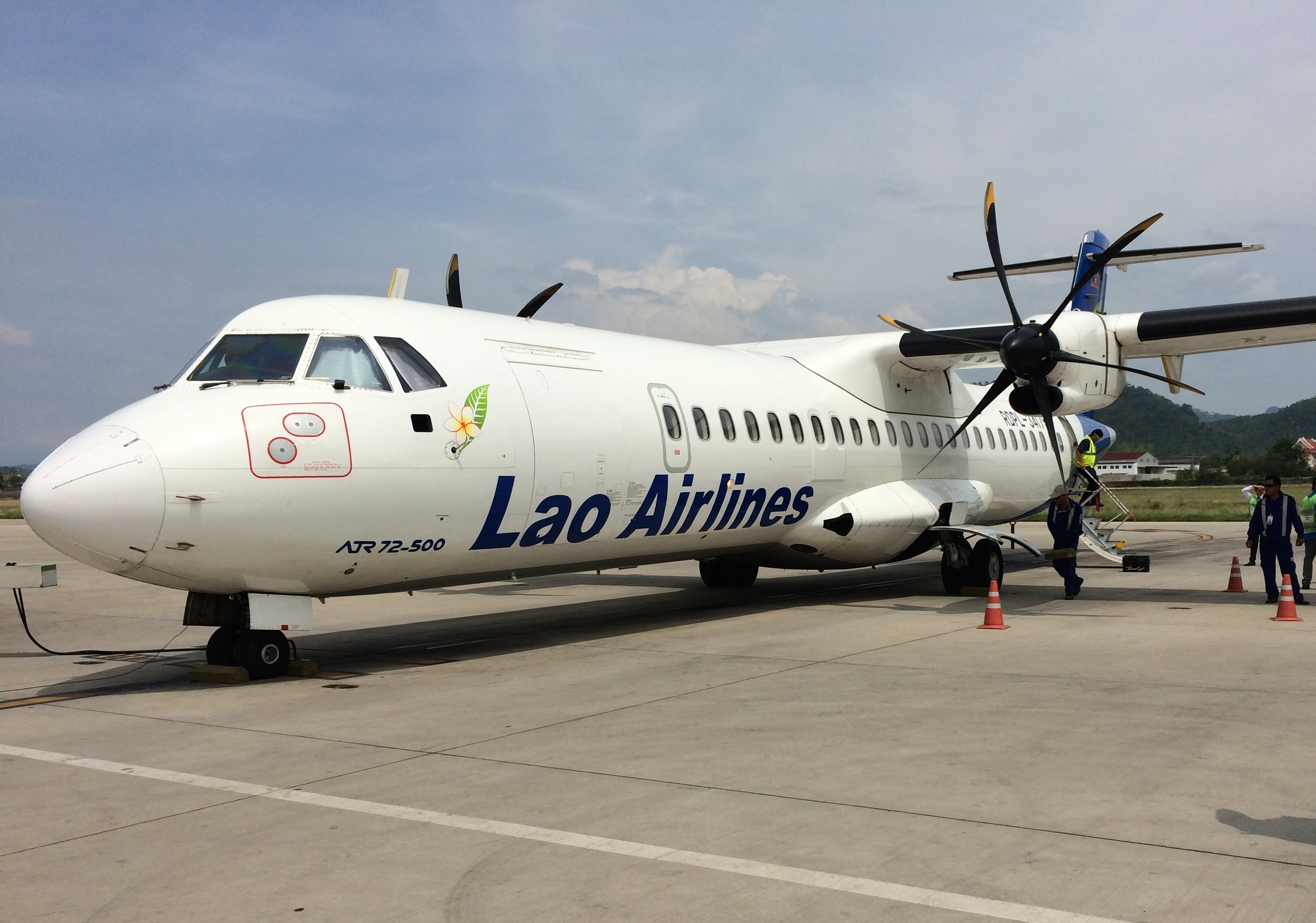Everyone hears a lot about Bangkok. You never stop hearing about it, and I absolutely could not wait to romp around one of the world’s most famous cities. With our flexible schedule we were able to squeeze in an entire week in this infamous capital city, and I must say Bangkok exceeds my expectations. Although I live in San Francisco, one of the most liberal cities in the U.S., I still needed time to adjust to the most sexually liberal place in the world. Lady boys are everywhere, and I don’t mean scantily clad lady boy hookers waiting outside bars. Most lady boys I saw were store clerks who gave me change when buying bottled water from a convenient store, or just the average teenager browsing Facebook in the subway. It amazes me how the world’s most sexually liberal city resides in Southeast Asia, a region ingrained with biased gender roles and closed-minded moral obligations.
Covering 605 square miles with a population of over 8 million, it can be quite overwhelming when figuring out where to go, what to eat, and what to do in Bangkok. Fortunately, I have three separate friends who have lived in Bangkok for 1-2 years at different times, and their recommendations/planned itineraries were most beneficial.
Before I elaborate on our activities and tasty consumptions, I want to shed light on what makes this city so accessible for the diverse set of backpackers, tourists, expats, and locals:
1. Transportation. Taxis can be found everywhere and are incredibly cheap; there is no point hopping into a scam-cab with a driver who refuses to use the meter because there will always be another cab driver who will use the meter without hesitation. When traffic jams are at its peak, the MTS (underground subway) or BTS (sky train) are the next excellent options. There are tuk tuks for tourists who don’t mind getting ripped off, and there are inexpensive motorbike taxis used by locals and expats to travel short destinations during rush hour. Super cheap ferries act as a bus along the Chao Praya river in Bangkok, and there are plenty of canals and longboats that offer tours. The Chao Praya Express ferry is the #1 method of transportation to see the most visited temples, the Grand Palace, and river markets. And finally, the main train station in Hua Lumphong gets you the hell out of Bangkok to other provinces in Thailand. We arrived in Bangkok via railway on a sleeper train from Chumpon province, and we plan on departing Bangkok to Chaing Mai via sleeper train as well.
2. Food. Bangkok is an everyday street food market. Generally throughout Southeast Asia, there are food stalls scattered throughout, but no where near to the extent of Bangkok. With dozens of tasty street food stalls lining the streets selling snacks anywhere from 10 baht to 50 baht (30 cents to $1.50 USD), franchises such as Burger King, Cinnabon, and KFC in every mall, and Michelin star restaurants for those so inclined, there are meals for every hungry traveller. I found myself wishing I was hungry even when I was full so I could eat another skewered meat stick or mango sticky rice. The term “Bangkok belly” exists for a reason.
3. Shopping. When we arrived at our first market, I thought, HOLY SHIT! You’d say the same if I told you we went to Chatuchak Weekend Market, the largest market in Thailand with about 15,000 stalls. You can buy anything from normal fruits and vegetables and household appliances, to shoes and clothes (Western and Thai), to soaps and candles and pillows, to furniture and sculptures and paintings, to baby crocodiles and puppies and hedgehogs. Outside of Chatachuk there are myriads of other daytime and evening markets for those who love to bargain. In addition to markets, there are plenty of high-end shopping malls for those who love to splurge.
4. Pampering. I won’t do any of this here, but this info may be useful for those who plan to. Spas are quite famous in Bangkok, and you can get a cheap $10 massage or go all out and splurge on some of the world’s most reputable spas. Apparently movie theaters are also quite an experience since the service, picture and sound are top notch. And finally, health care here is phenomenal (probably due to all the plastic surgeries/gender modifications). This is the place to go for medical tourism.
5. Cultural excursions. In addition to the modern attractions of shopping, eating, and pampering, there are plenty of temples to visit (the main three being the Grand Palace, Wat Pho, and Wat Arun), and small floating markets hiding between narrow canals. In a city bursting with modernity, I did not expect to see much Southeast Asian flare, but to my satisfying surprise I saw plenty of orange-robed monks and traditional prayer.
Based on my observations from the mainland Southeast Asian countries of Vietnam, Laos, Cambodia, Malaysia, and Thailand, I can boldly state that Bangkok truly exemplifies the colorful fusion of Southeast Asian tradition and Western development and culture.
Now you can enjoy our photos of Bangkok!
Hua Lamphong Railway Station
Chris and I LOVE trains, especially overnight trains. Trains are cheaper than planes, you get to travel while you sleep, and you save $ on a hotel room–it’s a win-win-win situation! From Ko Tao, we took the 1.5 hour ferry ride to peninsular Thailand, where we took a 1 hour bus ride to the Chumpon train station. There are even showers at the train station for 10-20 baht (30-60 cents)! The sleeper train got us into Bangkok around 8:30am. 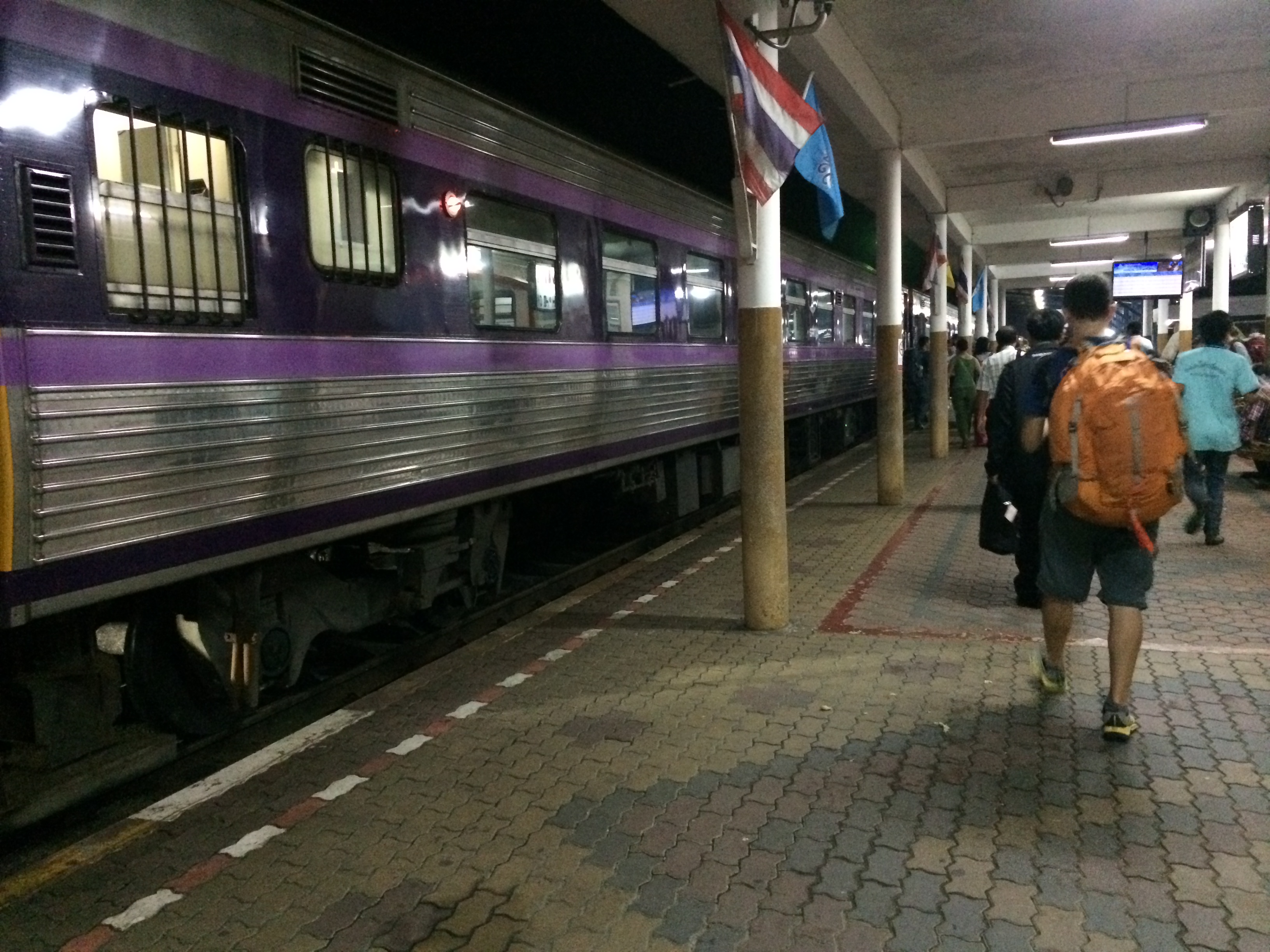
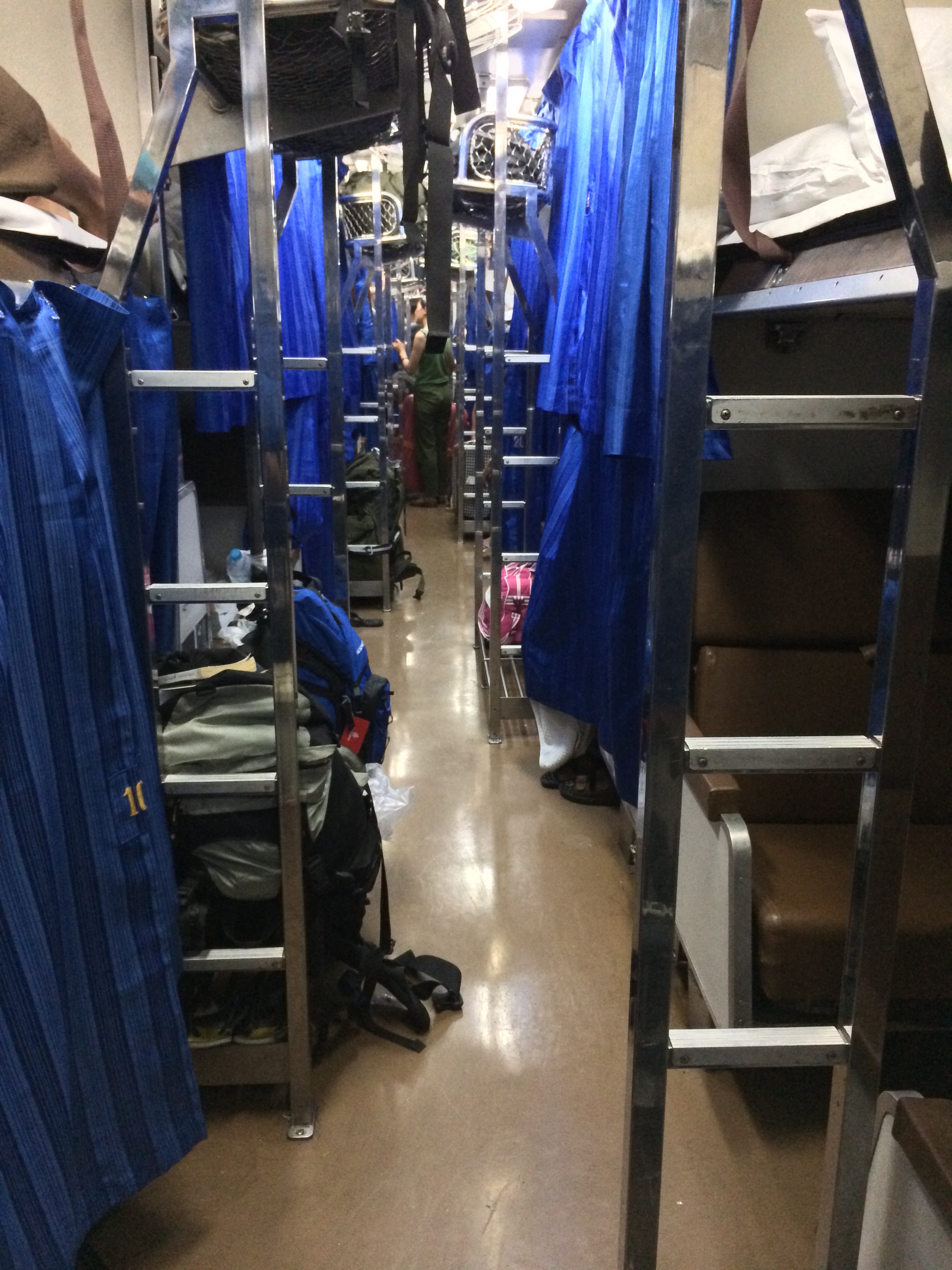
At night, the seats are converted into “beds”: 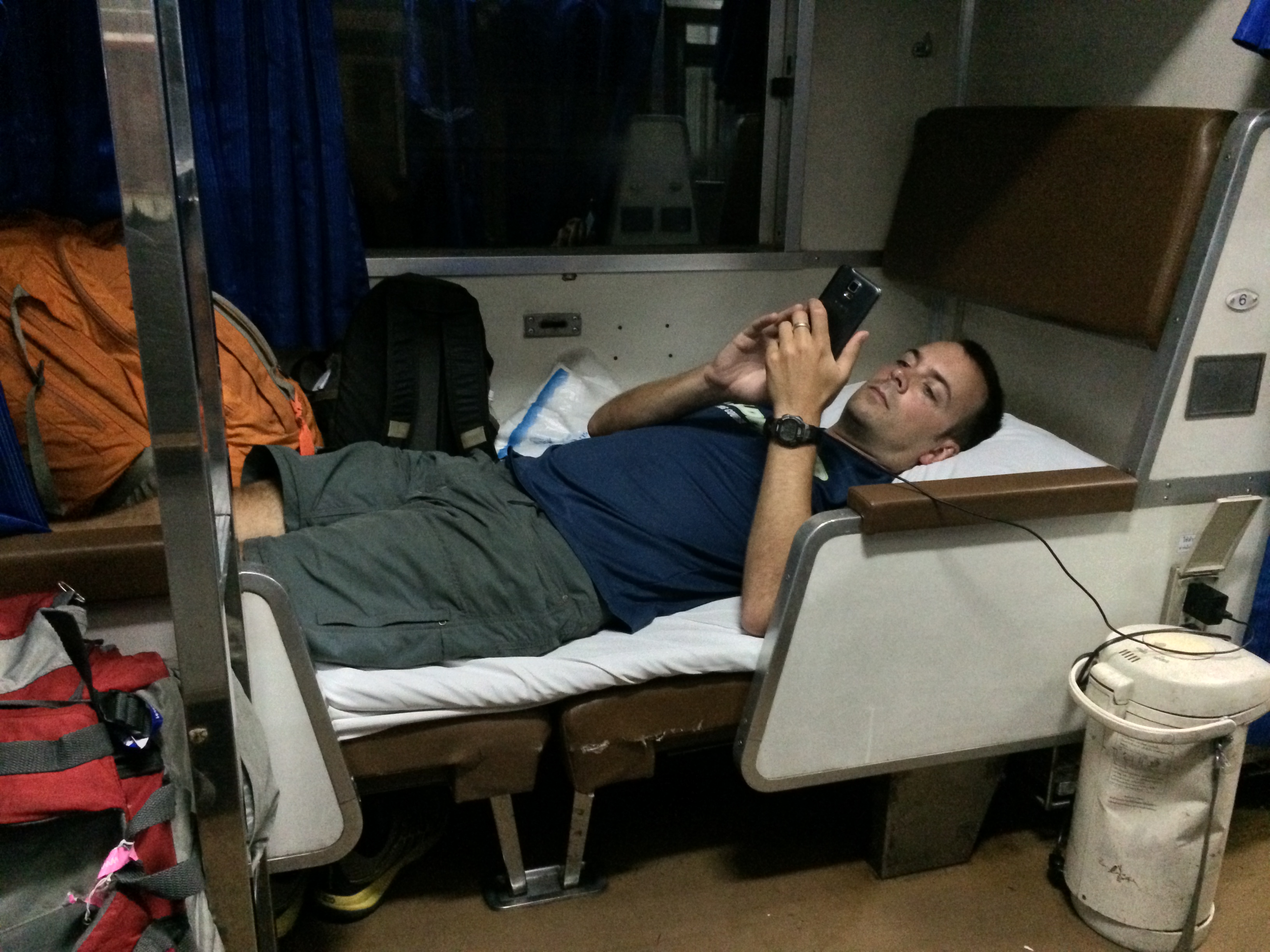
And by day the beds are converted back to seats! 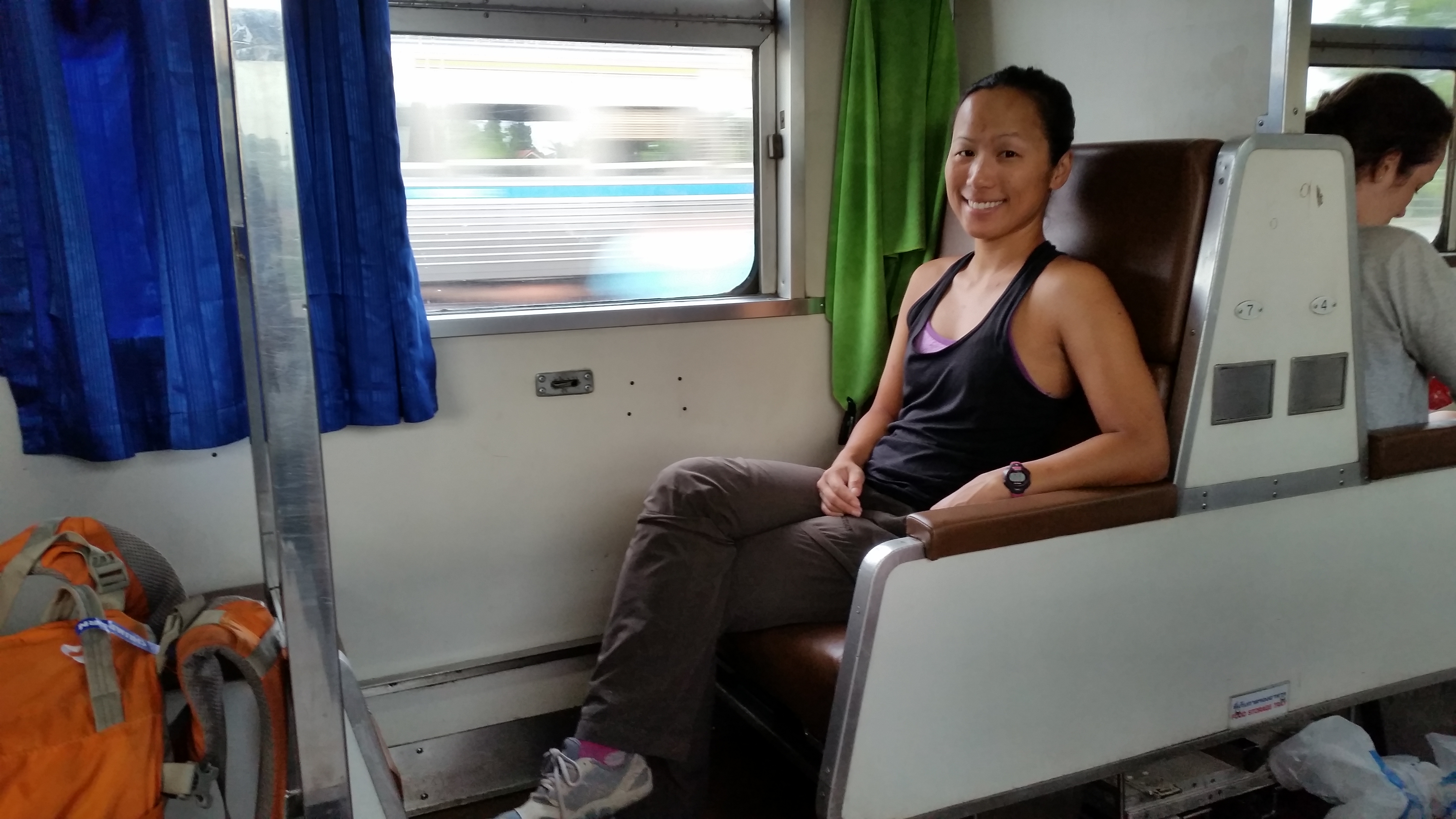
The Hua Lumphong train station is pretty neat: 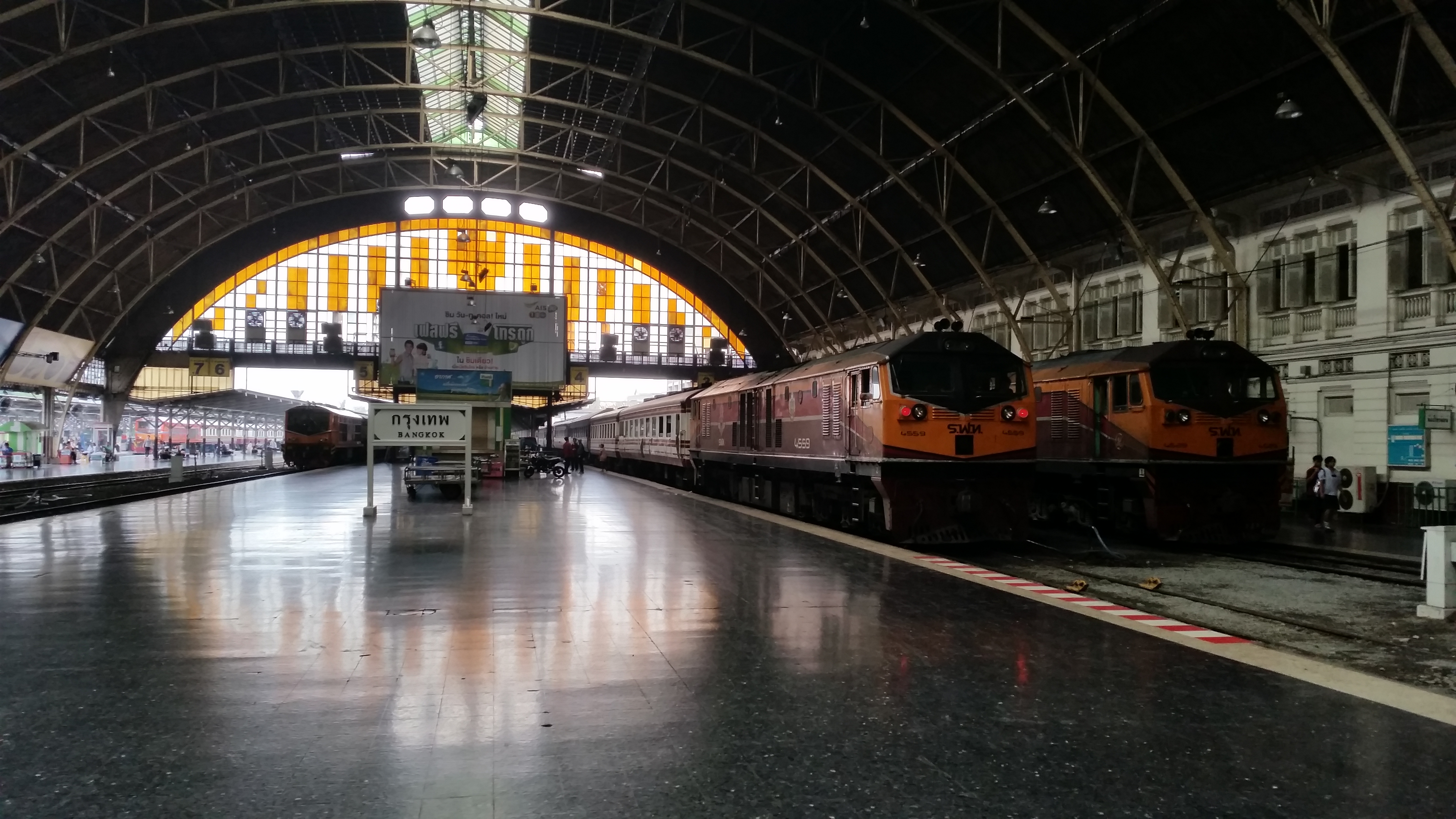
Lumpini Park
I made an appointment at the U.S. Embassy to get more pages added to my passport as I was running out of pages. We decided to walk the 4 km to the embassy so we could explore Bangkok, and we ended up strolling through Lumpini Park, the largest and oldest park in the city. 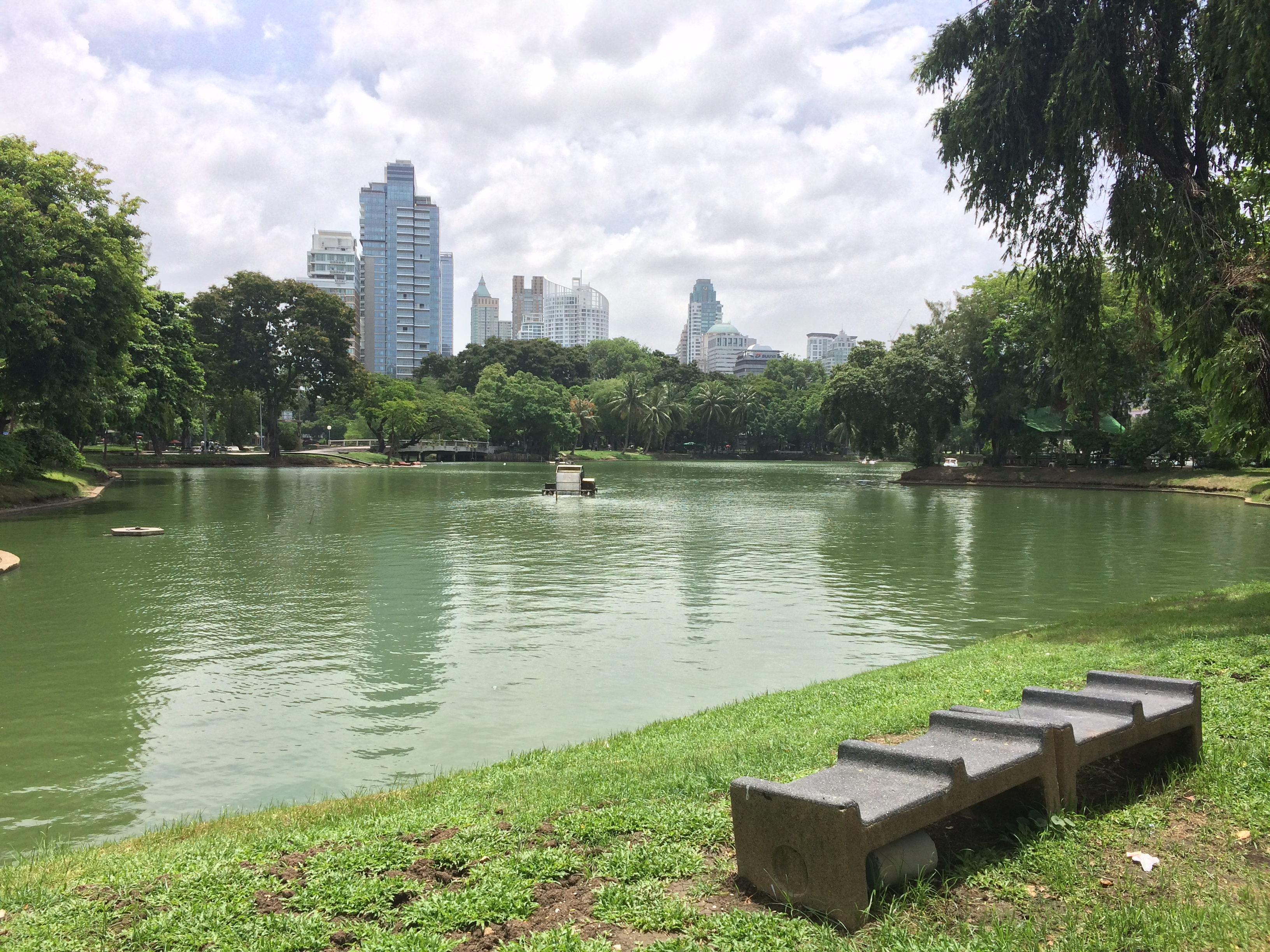
After 2 hours at the embassy, my passport got fatter! 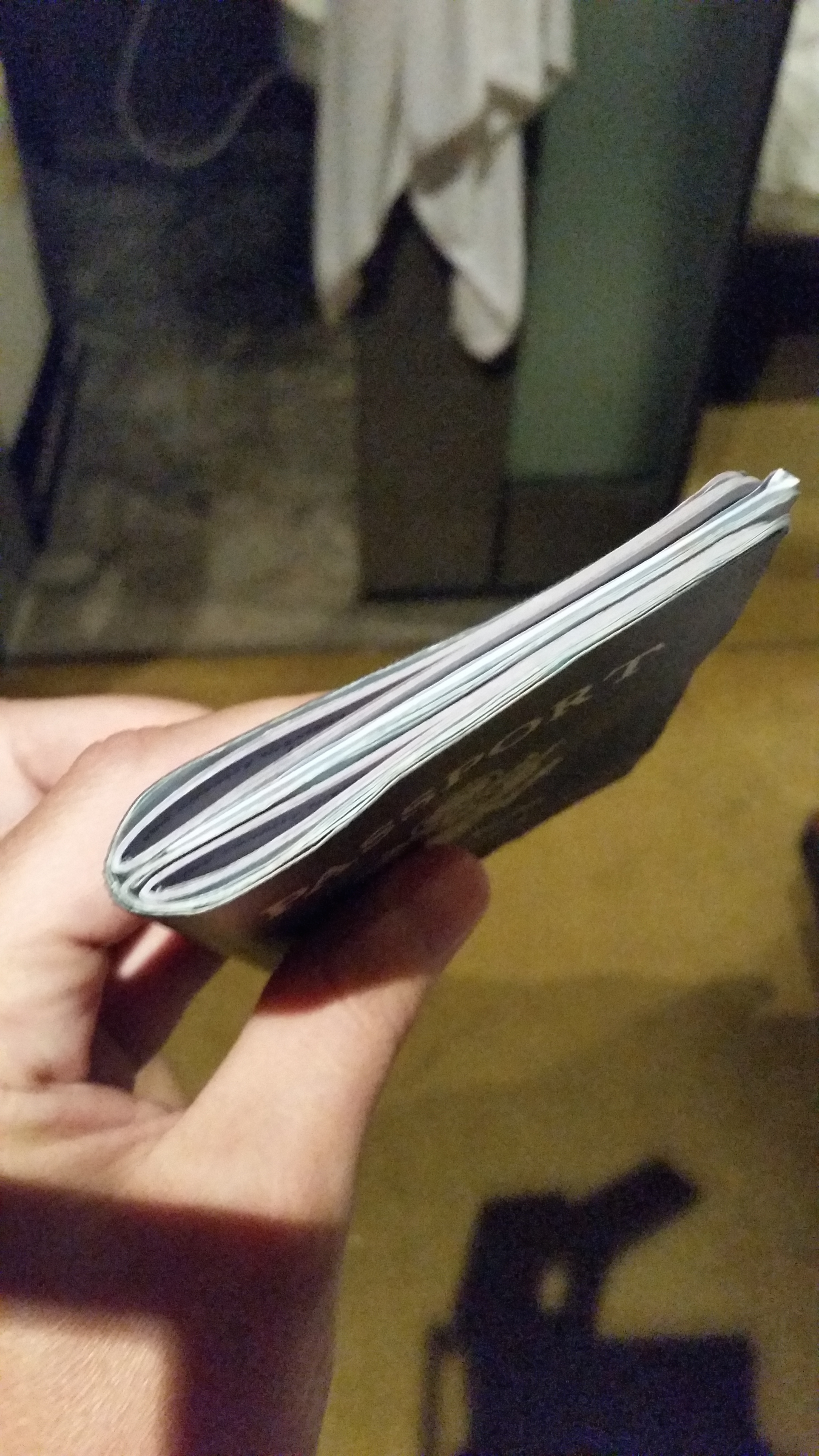
Saphan Taksin BTS/Bang Rak District
There is a street food market nearby our hotel in the Bang Rak District. We stroll through it every time we walk to and from the Saphan Taksin BTS station, occasionally stopping for a fried chicken leg or stick of meat with sticky rice. 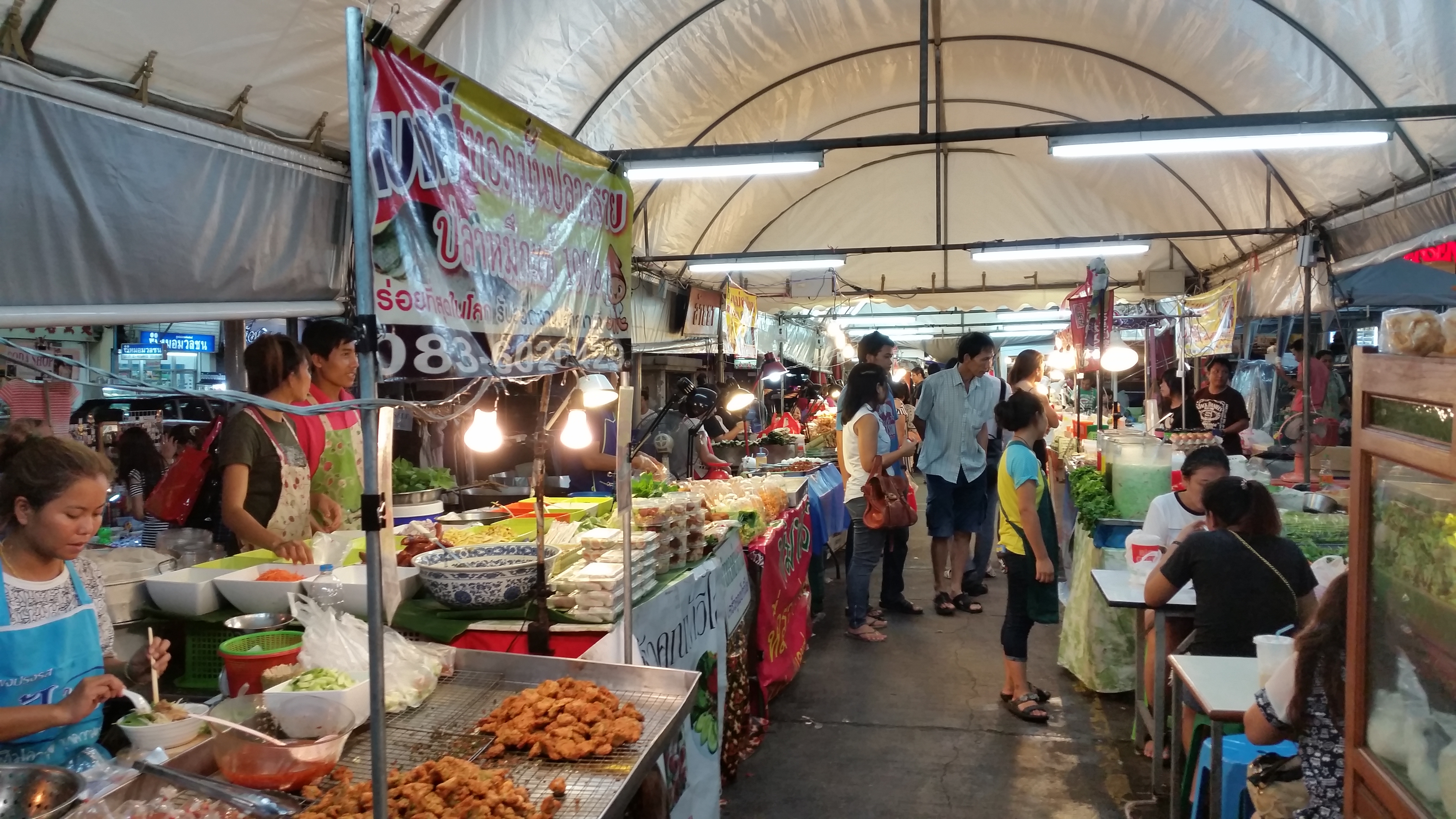
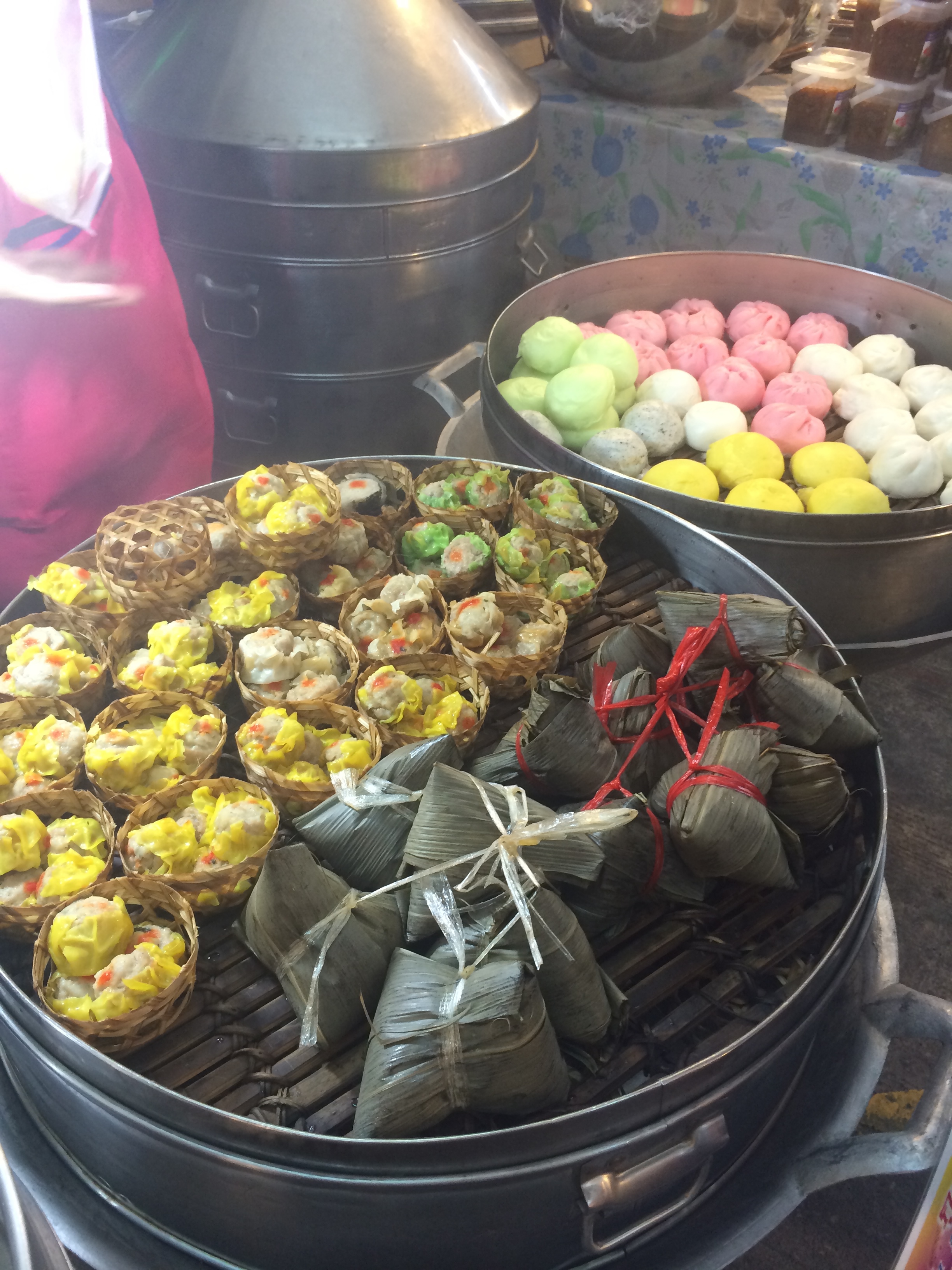
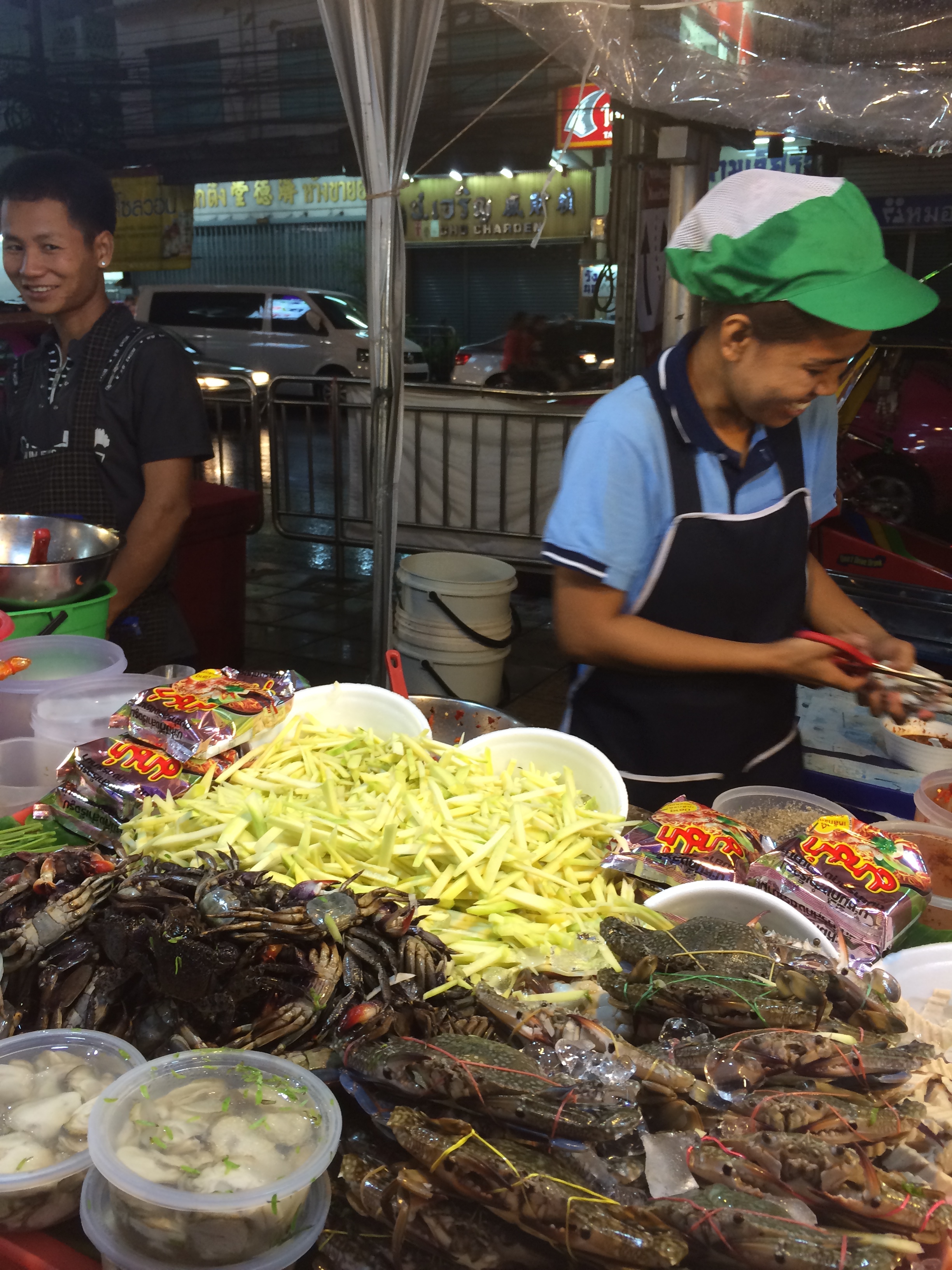
We’ll occasionally enjoy our tasty snacks on the street. =)
Although the locals enjoy fried roaches, spiders, worms, and grasshoppers, Chris and I prefer to just gawk at these “treats”: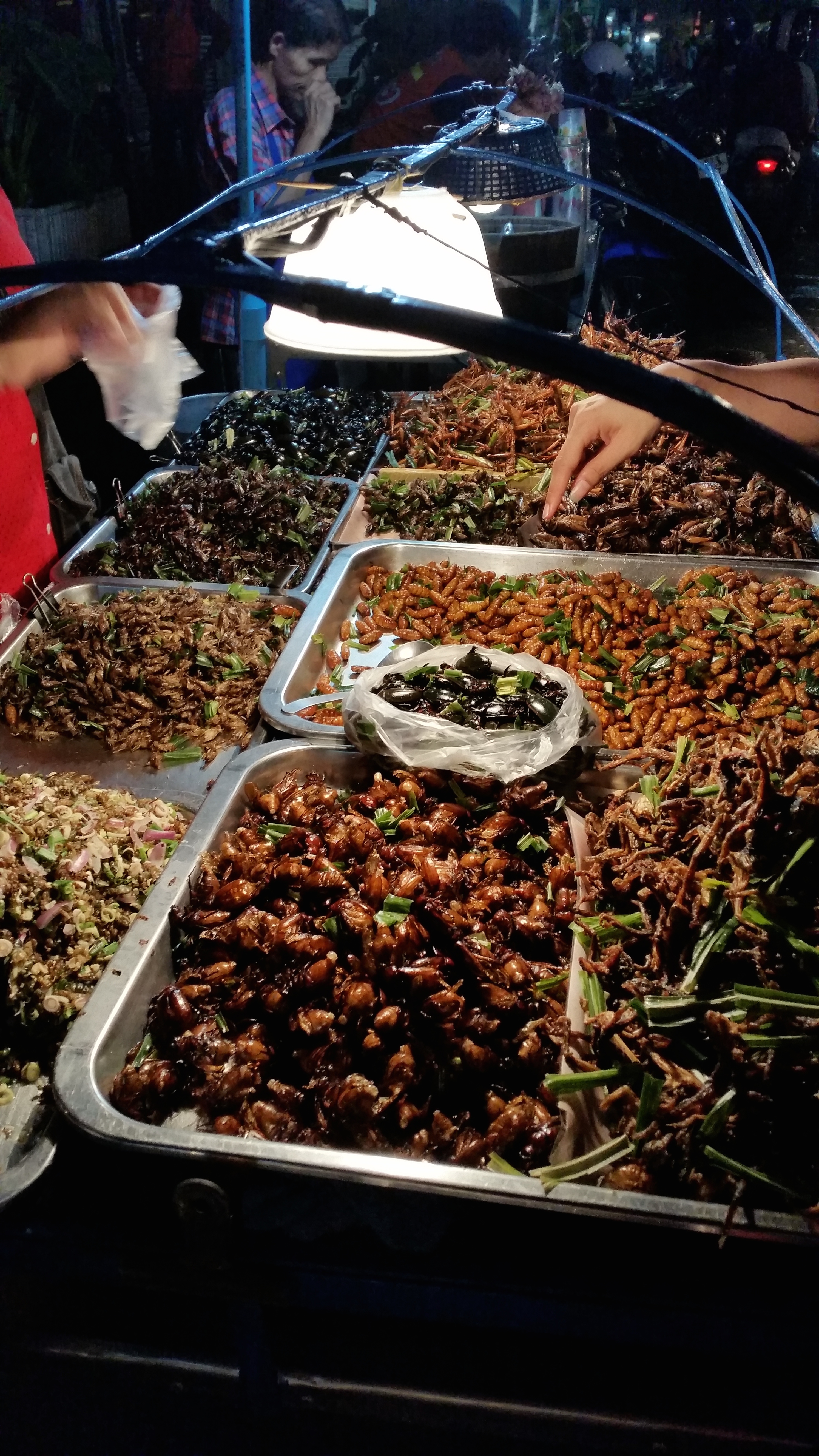
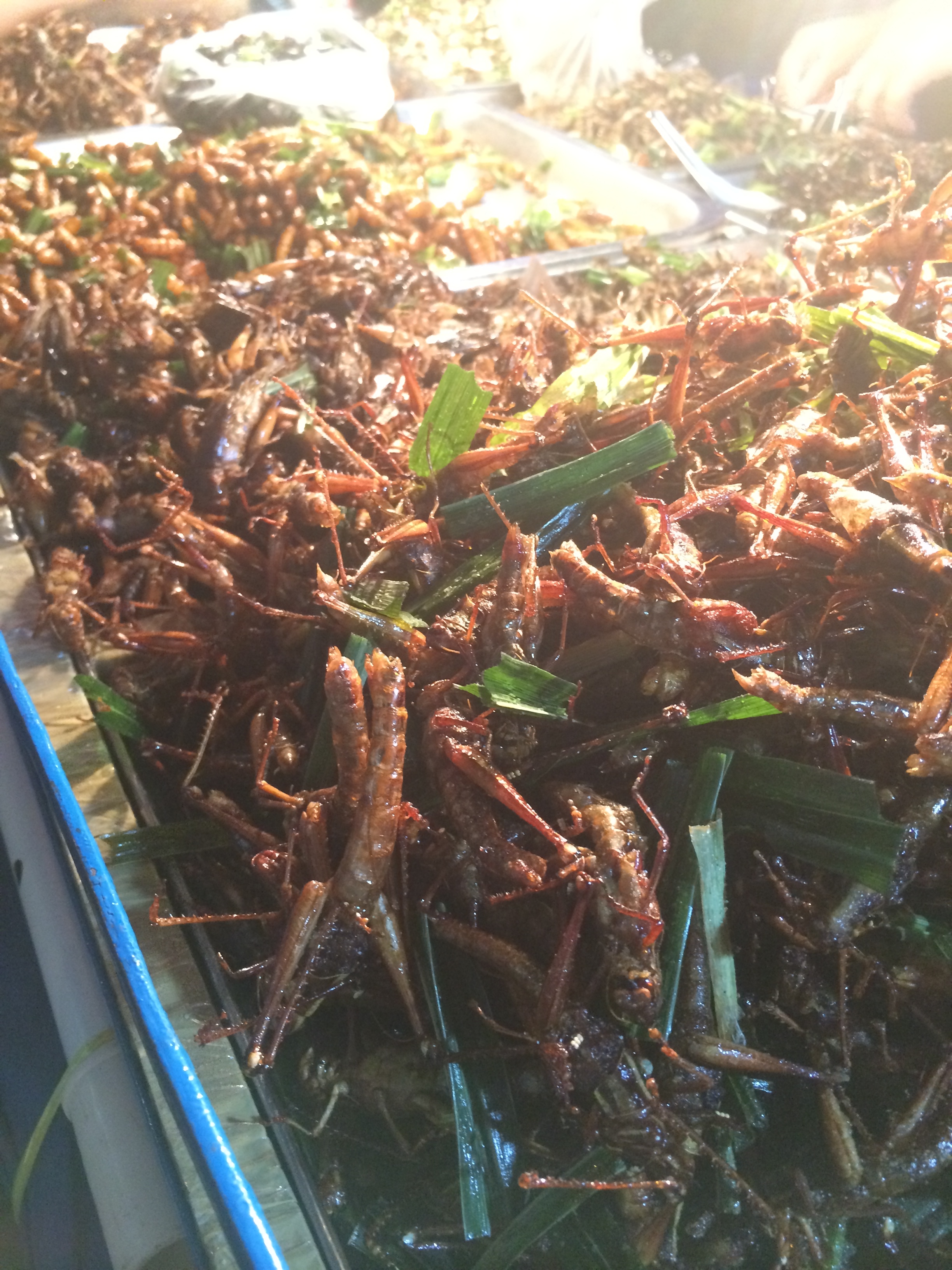
Chatachuk Weekend Market
Chatachuk market is absolutely incredible. Although this market is already considered large during the weekday, it expands even further on the weekend. We don’t even like shopping and we squandered two half days here on Saturday and Sunday getting lost in the labyrinth of stalls. We bought so much crap that we had to go to the post office and ship a large box back to my mom’s house in California. 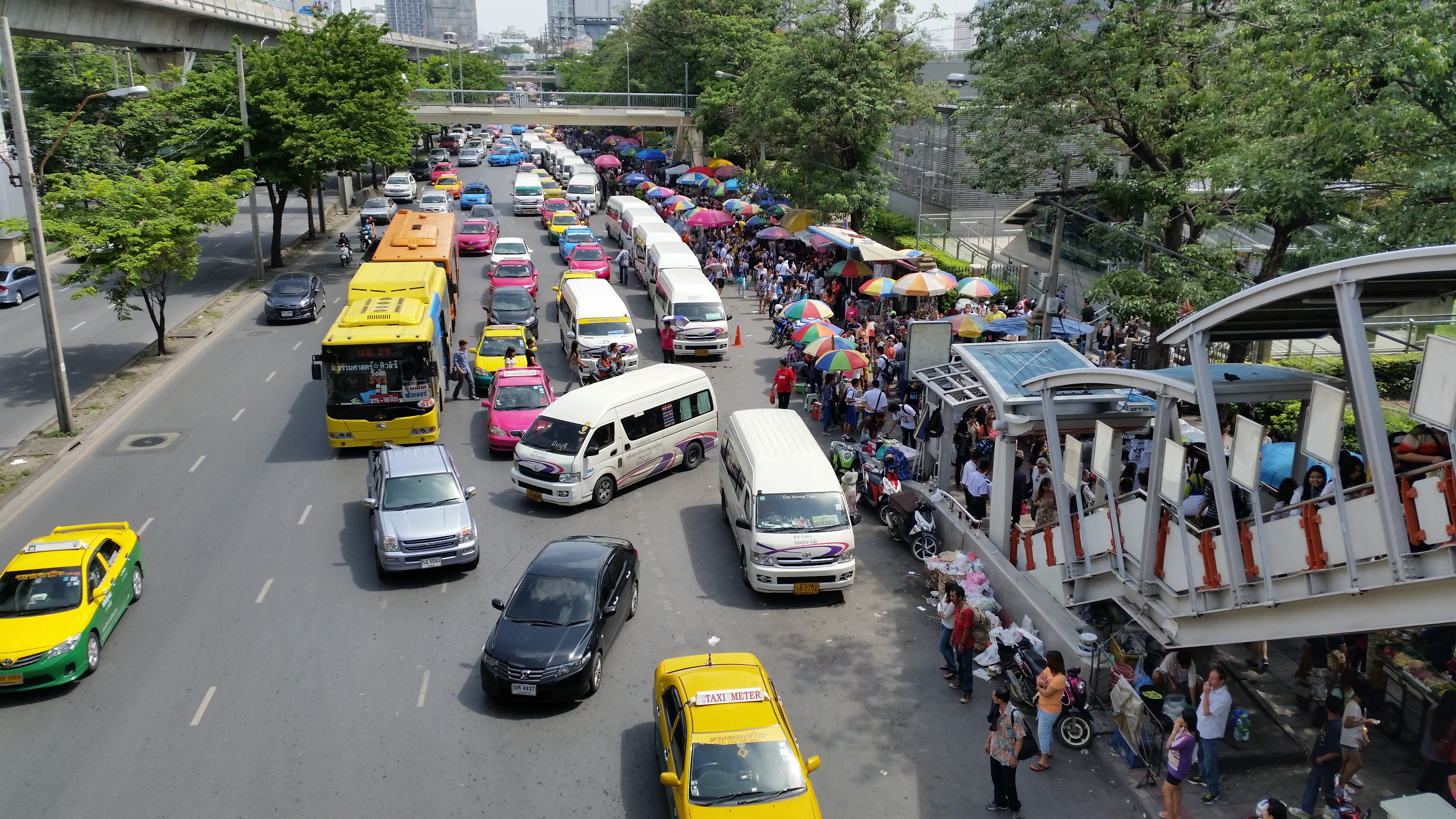
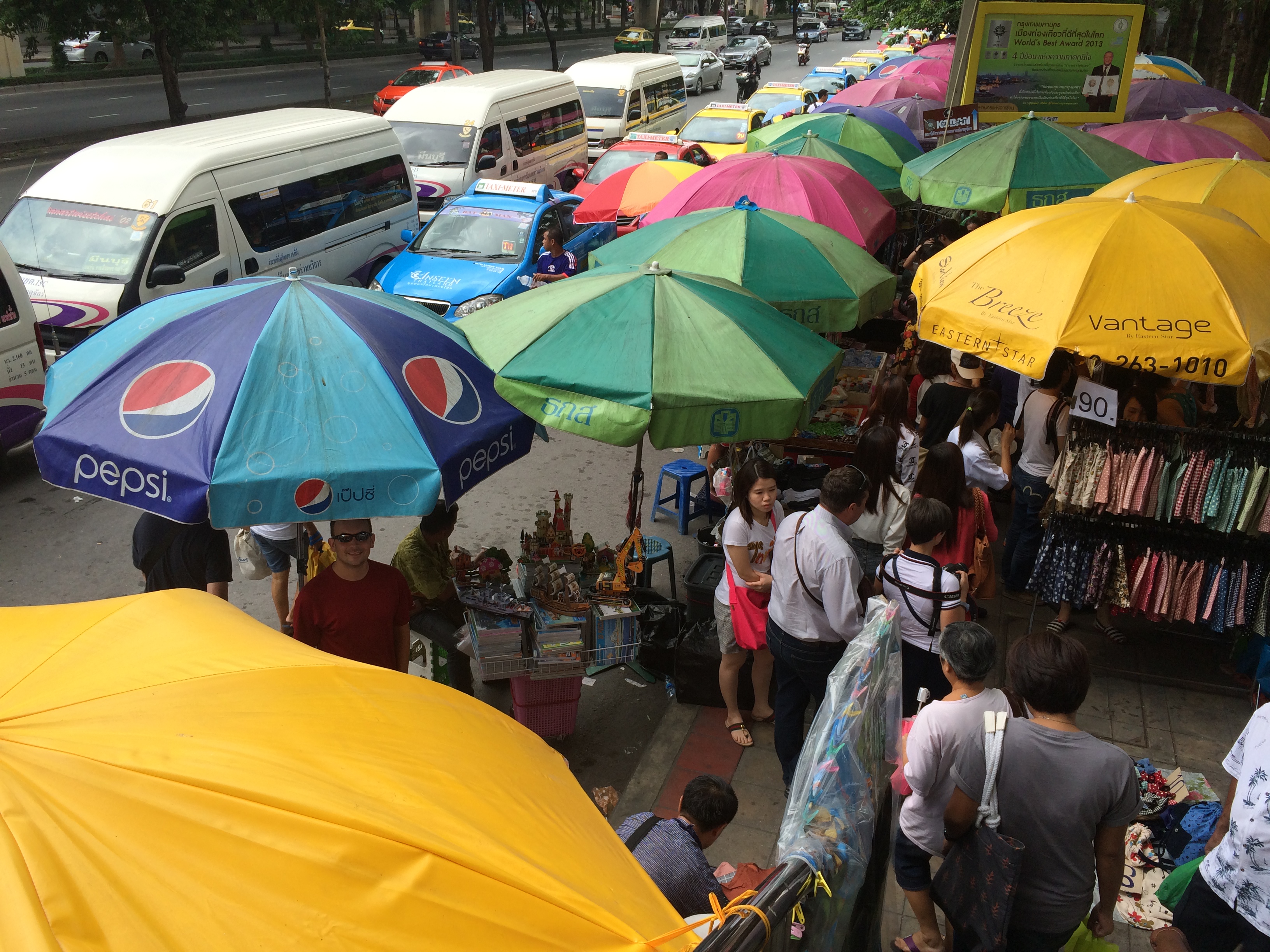
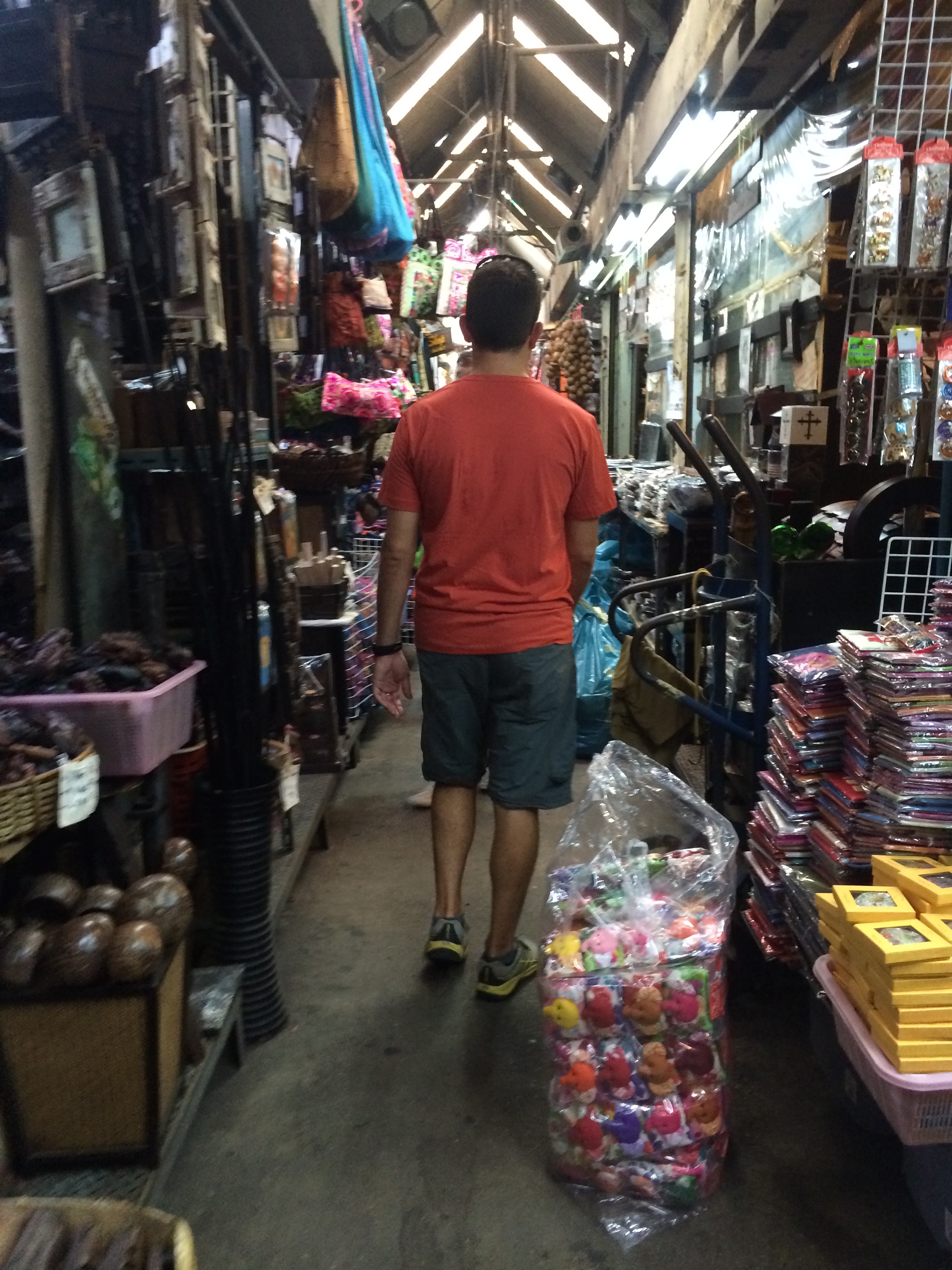
Food was amazing! There were large rambutan, mangosteen, and lychee stalls. 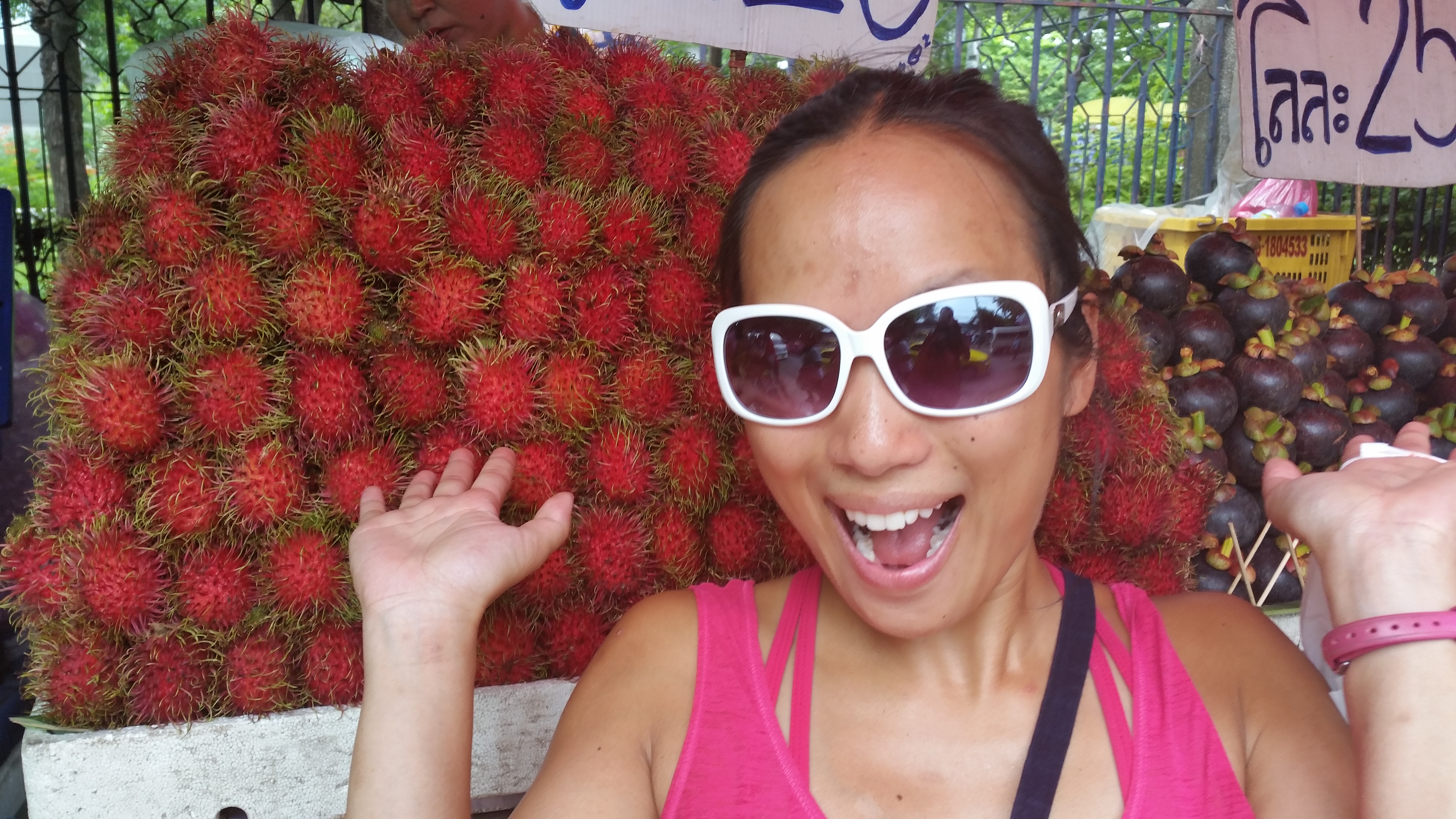
I particularly fancied this mango sticky rice lady’s hat. 
We also devoured homemade coconut ice cream served in a small coconut shell. Scraps of coconut were a nice surprise beneath the ice cream.

This brilliant street-side restaurant only served one dish, and the chef prepared it well: Spanish seafood paella. A live DJ mixed fantastic beats as people gorged their yellow rice. This was the largest paella pan I’ve ever seen: 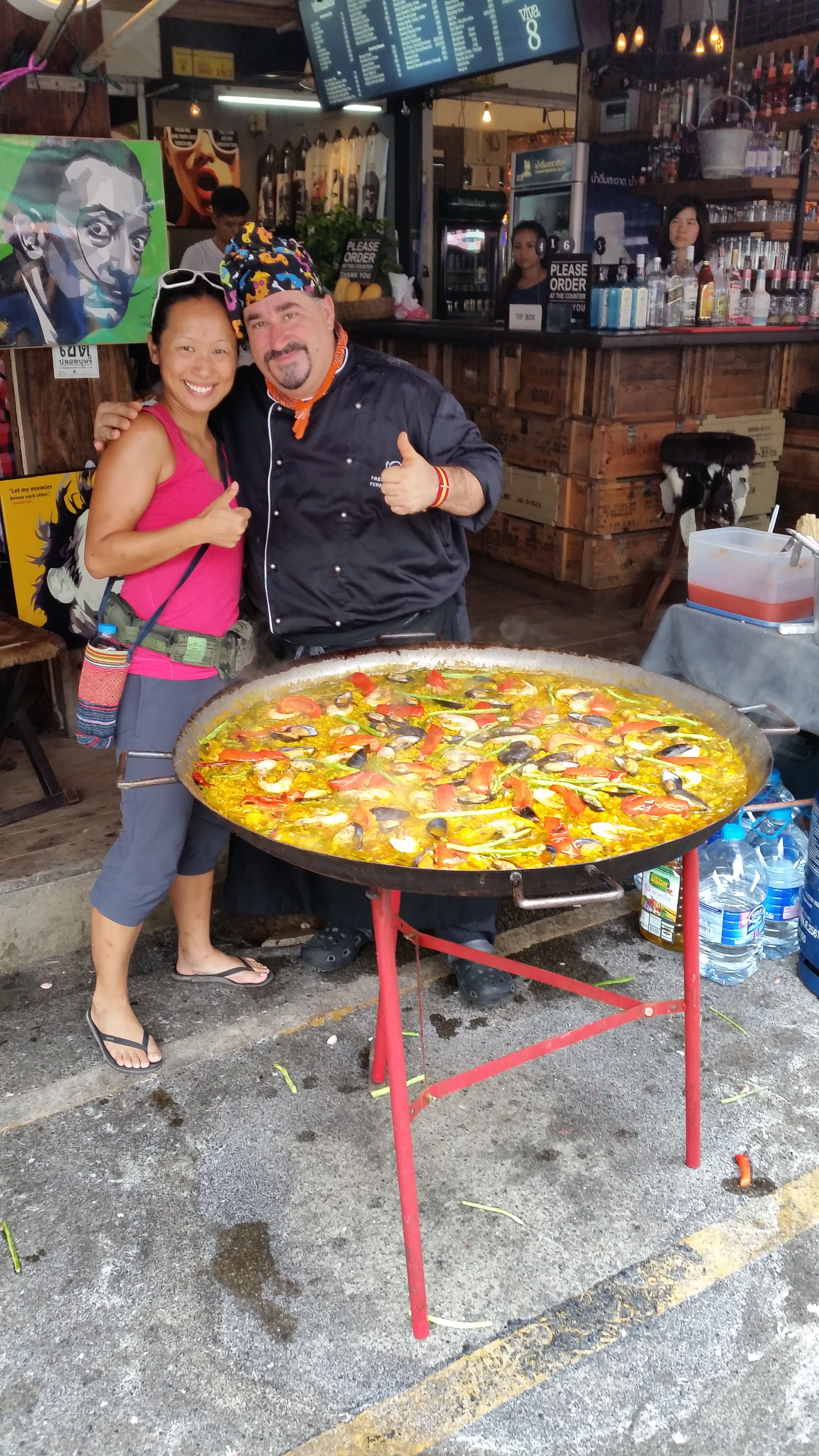
Thong Lo – Sukhumvit Soi 38
A friend recommended this dinner-only food stall street of Sukhumvit Soi 38, right off of the Thong Lo BTS station. Although the street looks rather tame and underwhelming, the modest selection of food turned out to be remarkably memorable. 
Apparently the scrumptious meal of choice is the Thai style wonton noodle soup. Before we arrived, we both wondered, “How good can wonton soup be?” And behold–we were blown away! We’ve already eaten the wonton noodle soup twice, and we continue to reminisce about the flavorful broth with slices of BBQ pork.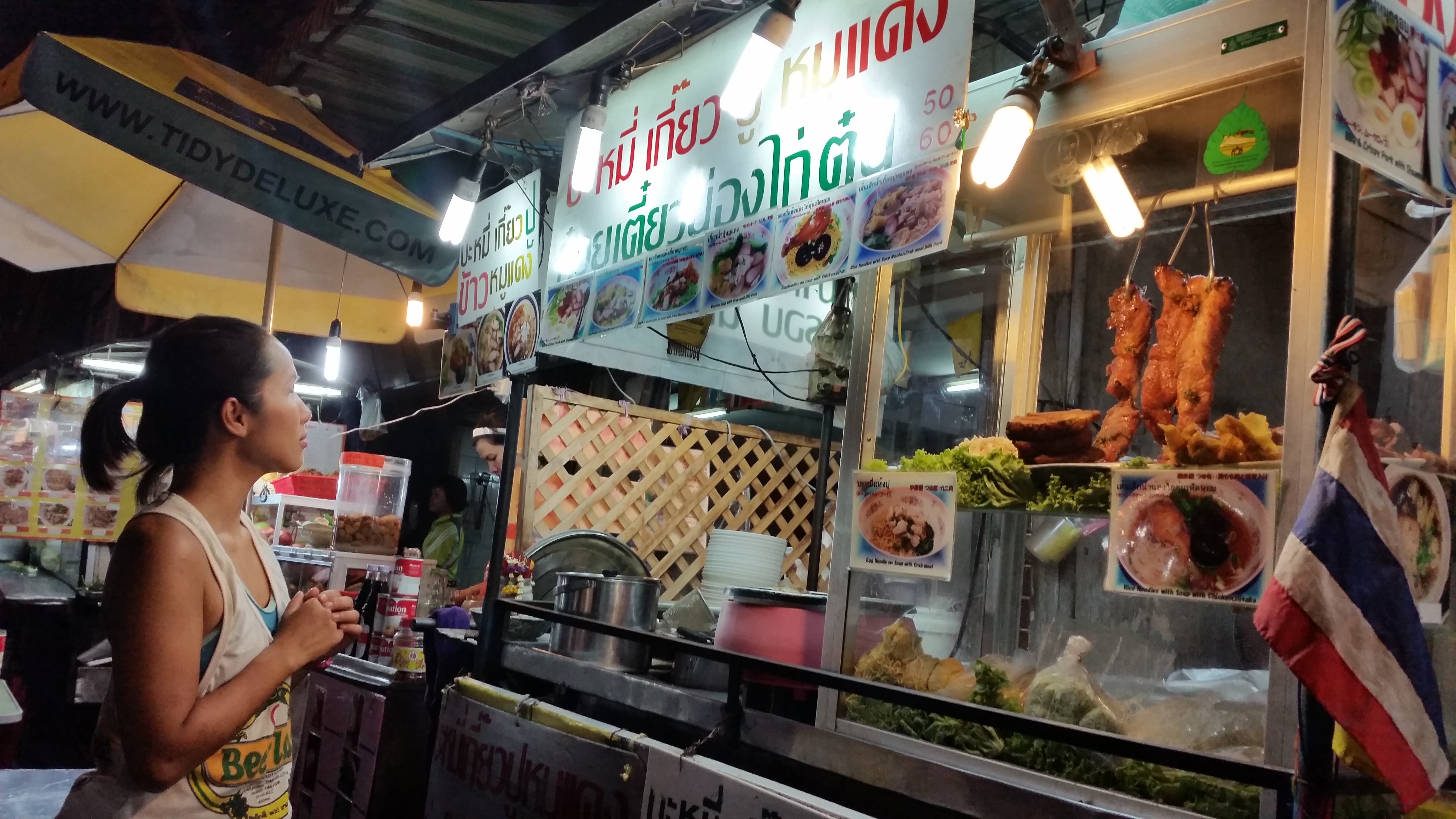
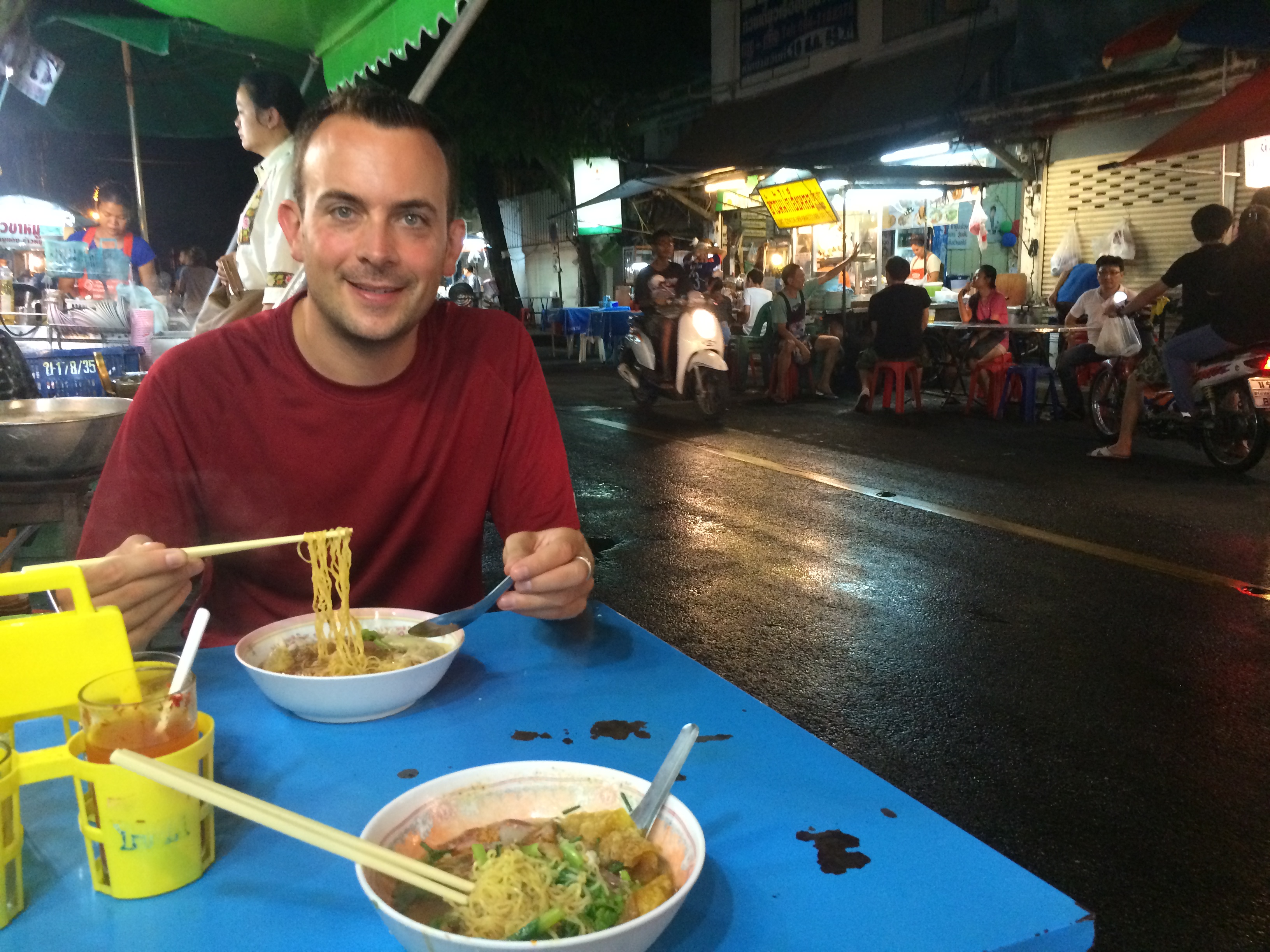
Fortunately, my brother Tim ended up being in Bangkok for the exact duration we were there! We took him here and even he marveled at how delicious this soup was. 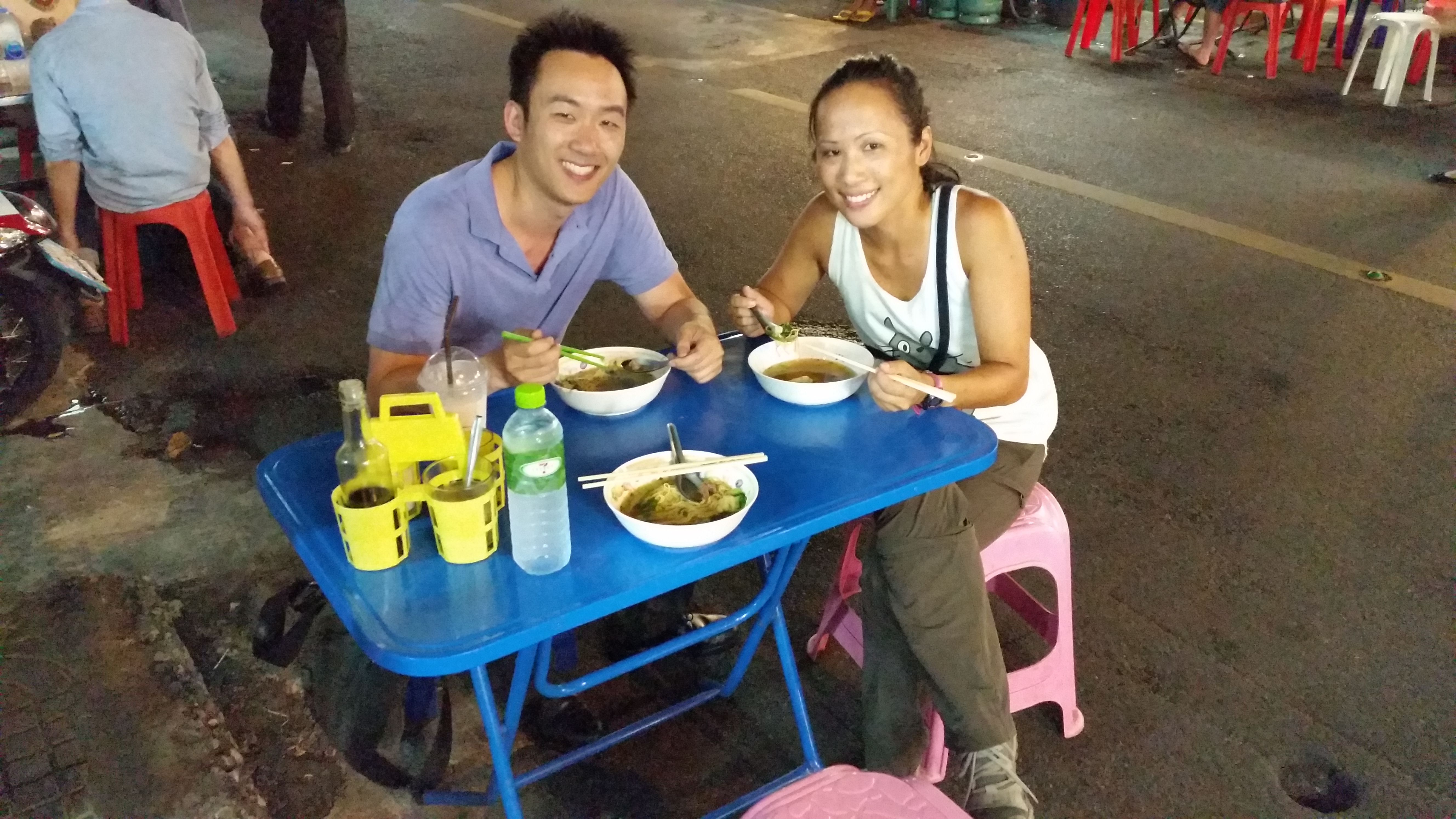
Each time we emptied our wonton noodle soup bowls, we topped our bellies off with the traditional Thai dessert of mango sticky rice with coconut milk. The mango sticky rice in Sukhumvit Soi 38 is allegedly the best mango sticky rice in Bangkok based on the sweet ripeness of the mango, the flavorful sticky rice, and perfectly textured homemade coconut milk sauce. 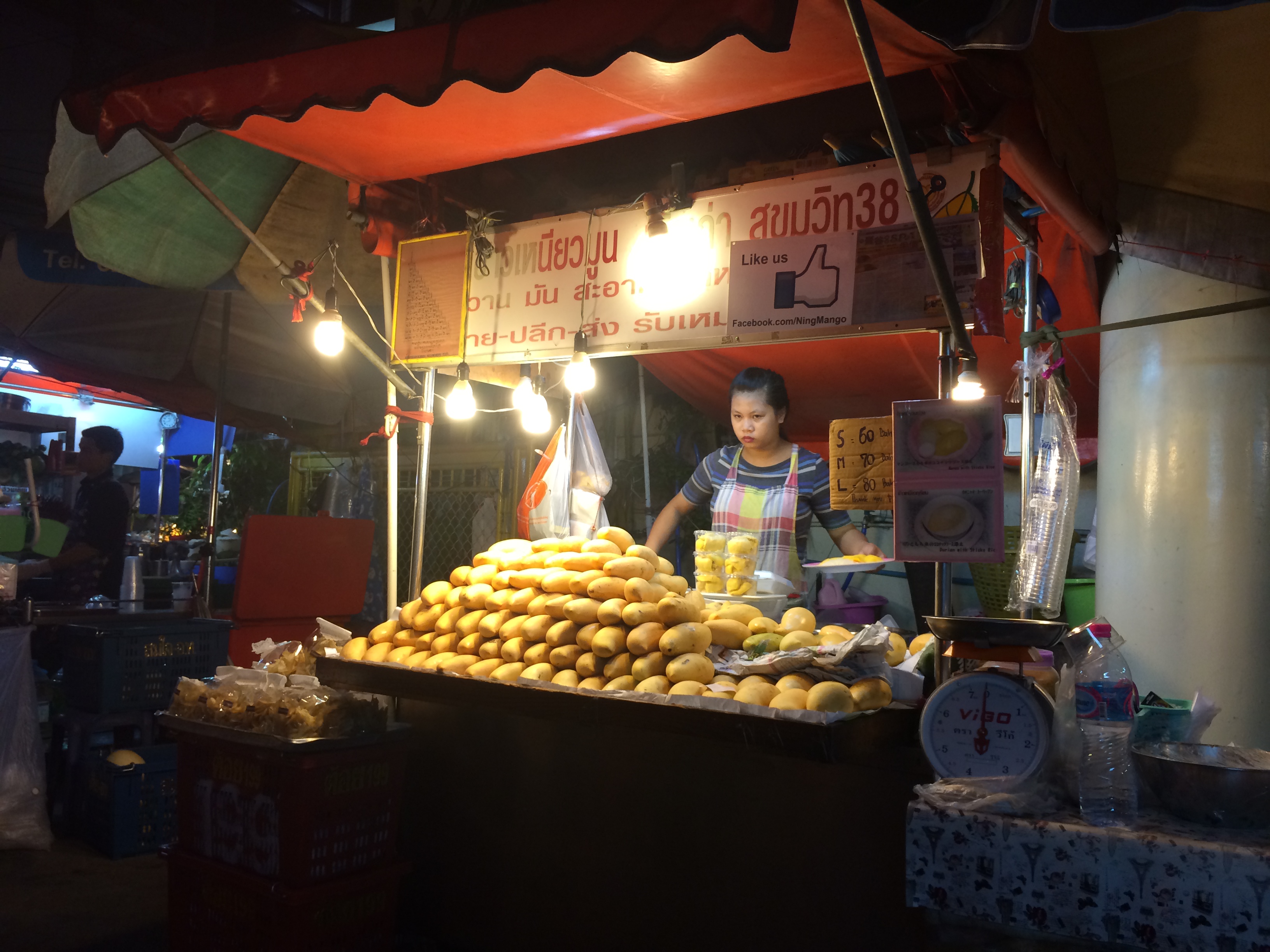
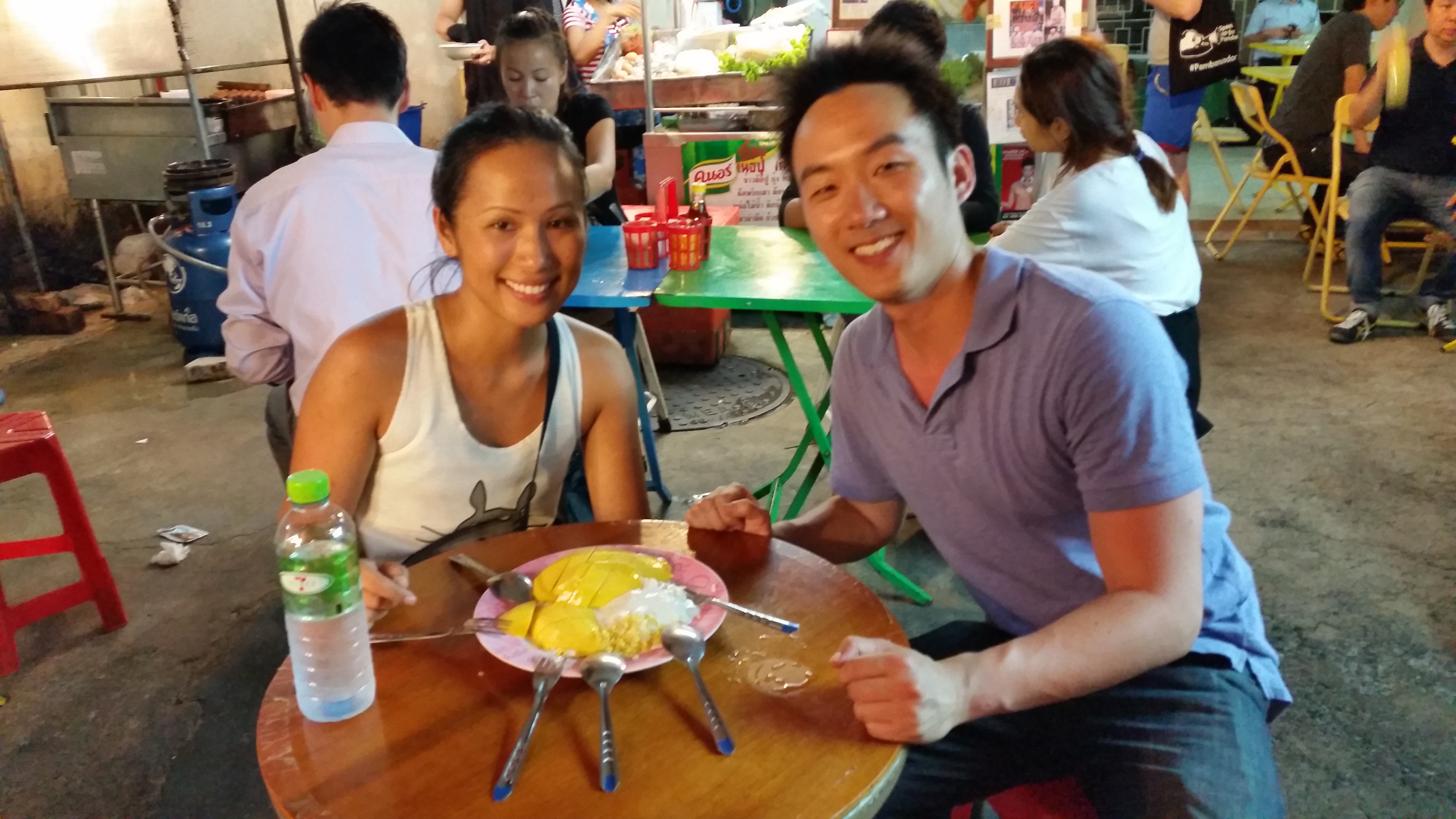
State Tower Sky Bar
Prior to enjoying our amazingly delicious and inexpensive dinner in Sukhumvit Soi 38, we met Tim at the Sky Bar at Lebua State Tower to watch the sunset. Situated on the 64th floor, the Sky Bar prides itself with the most stunning views of Bangkok. Despite the exorbitant prices of $10 per beer, the panoramic views were dramatic enough to make the price worth it.
Here are 3 shots of the same view from different times: pre-sunset, sunset, and evening.
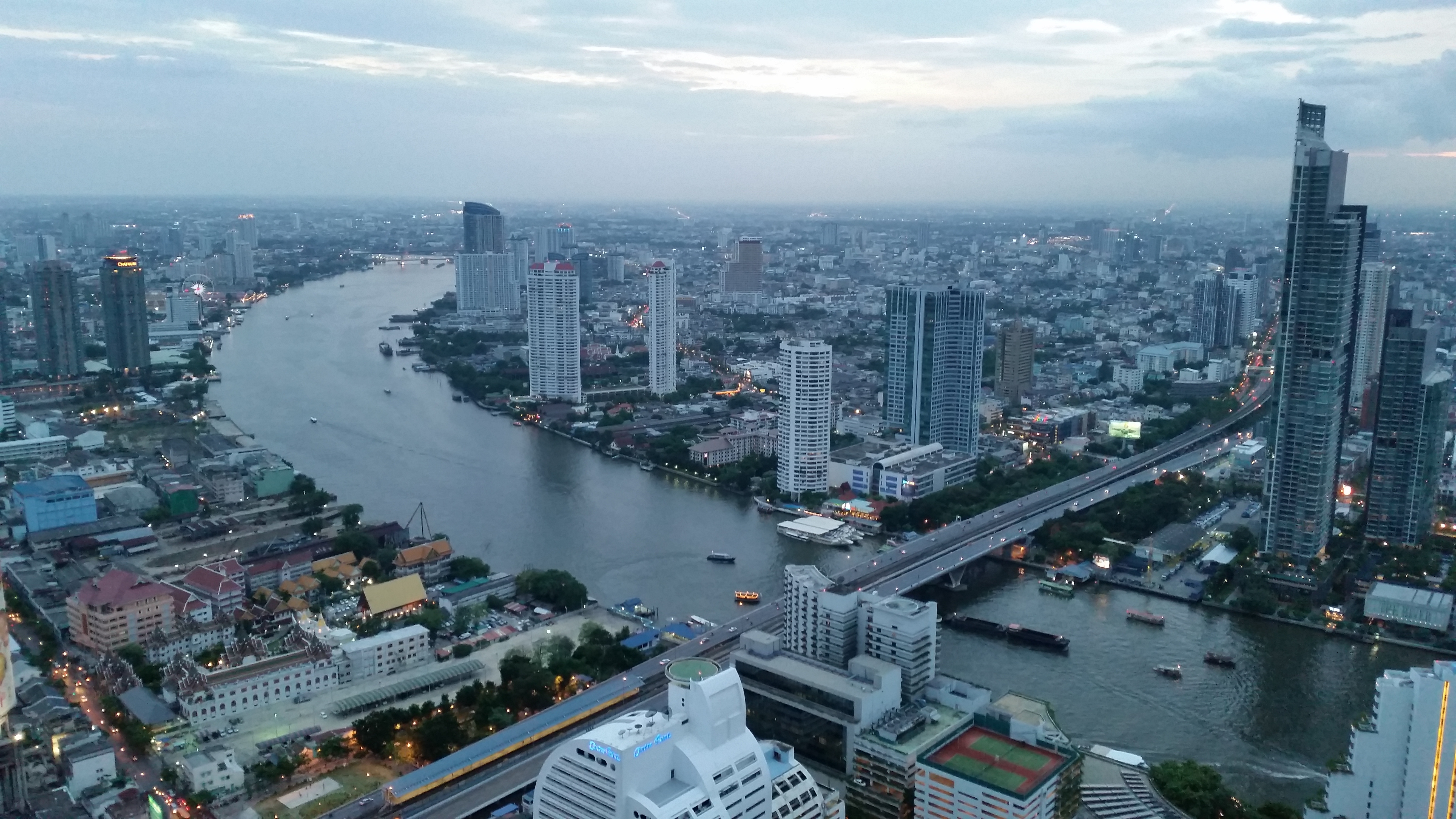

Definitely worth the visit!
Chao Praya River (and Temples)
An entire day can be spent on the river thanks to the Chao Praya Express. We walked to the ferry station and within minutes we were on the ferry!
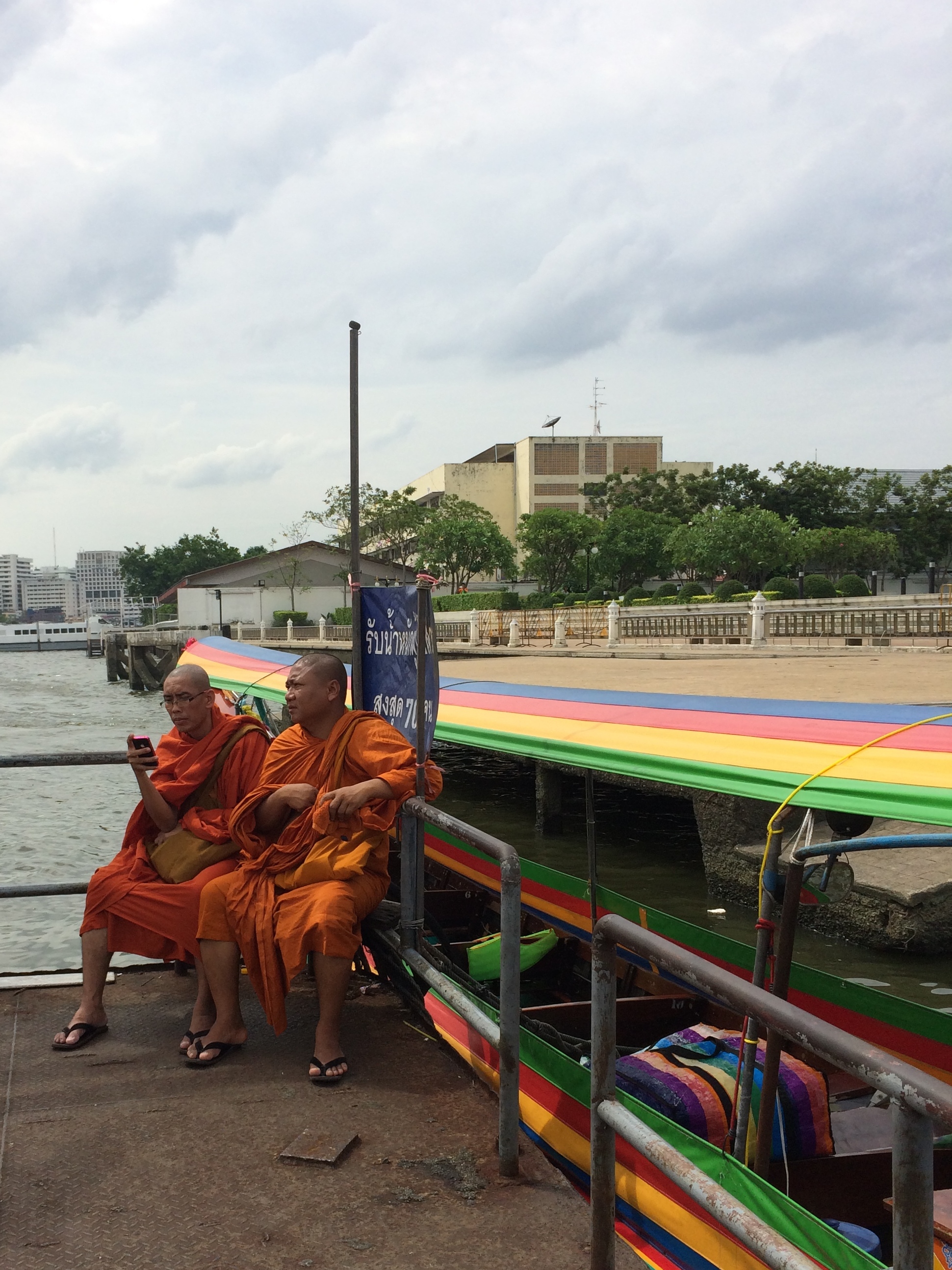
You simply get on the ferry and pay the guy who walks around collecting fees. Prices range anywhere from 5-20 baht (15-60 cents, depending on where you go).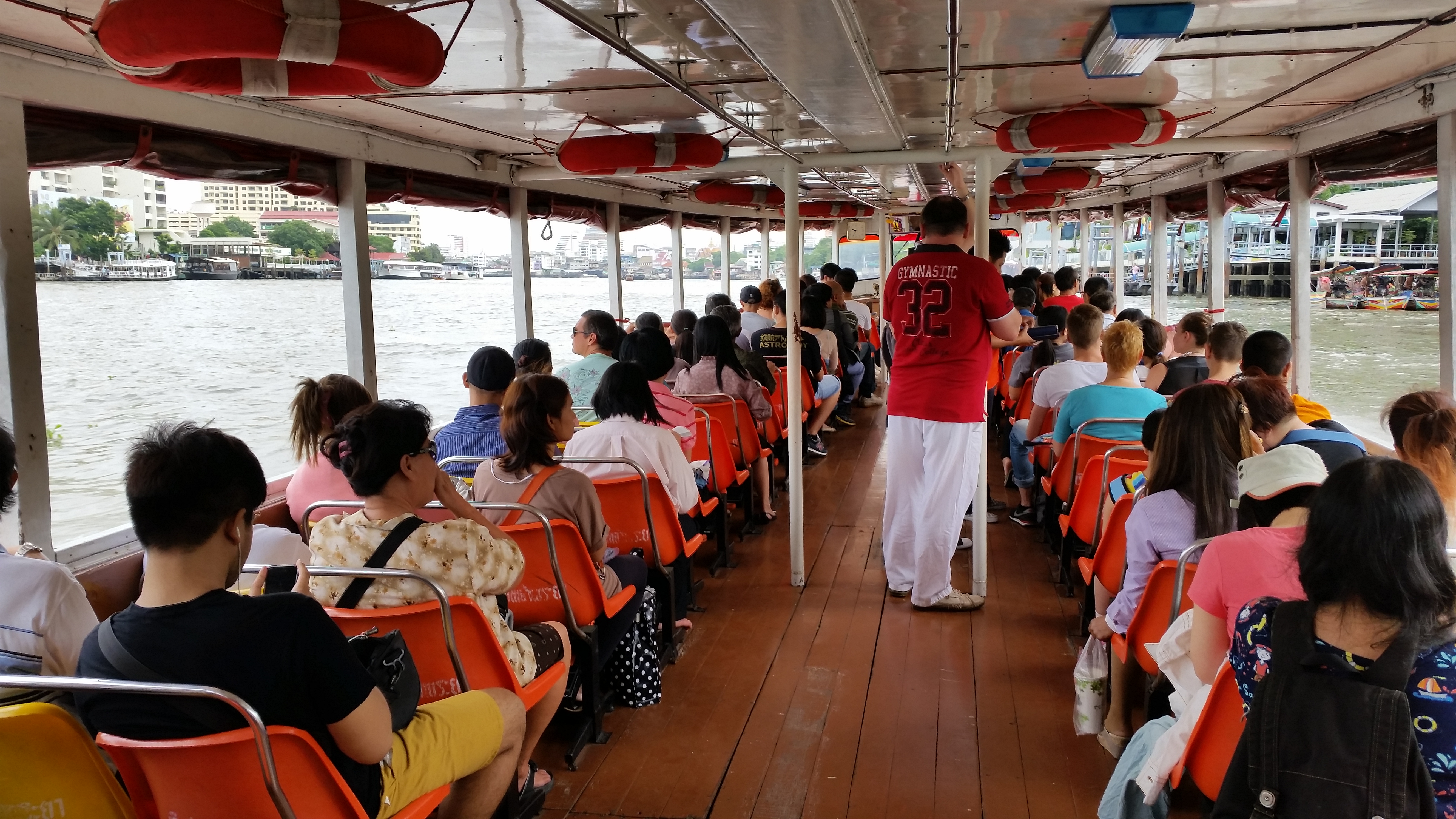
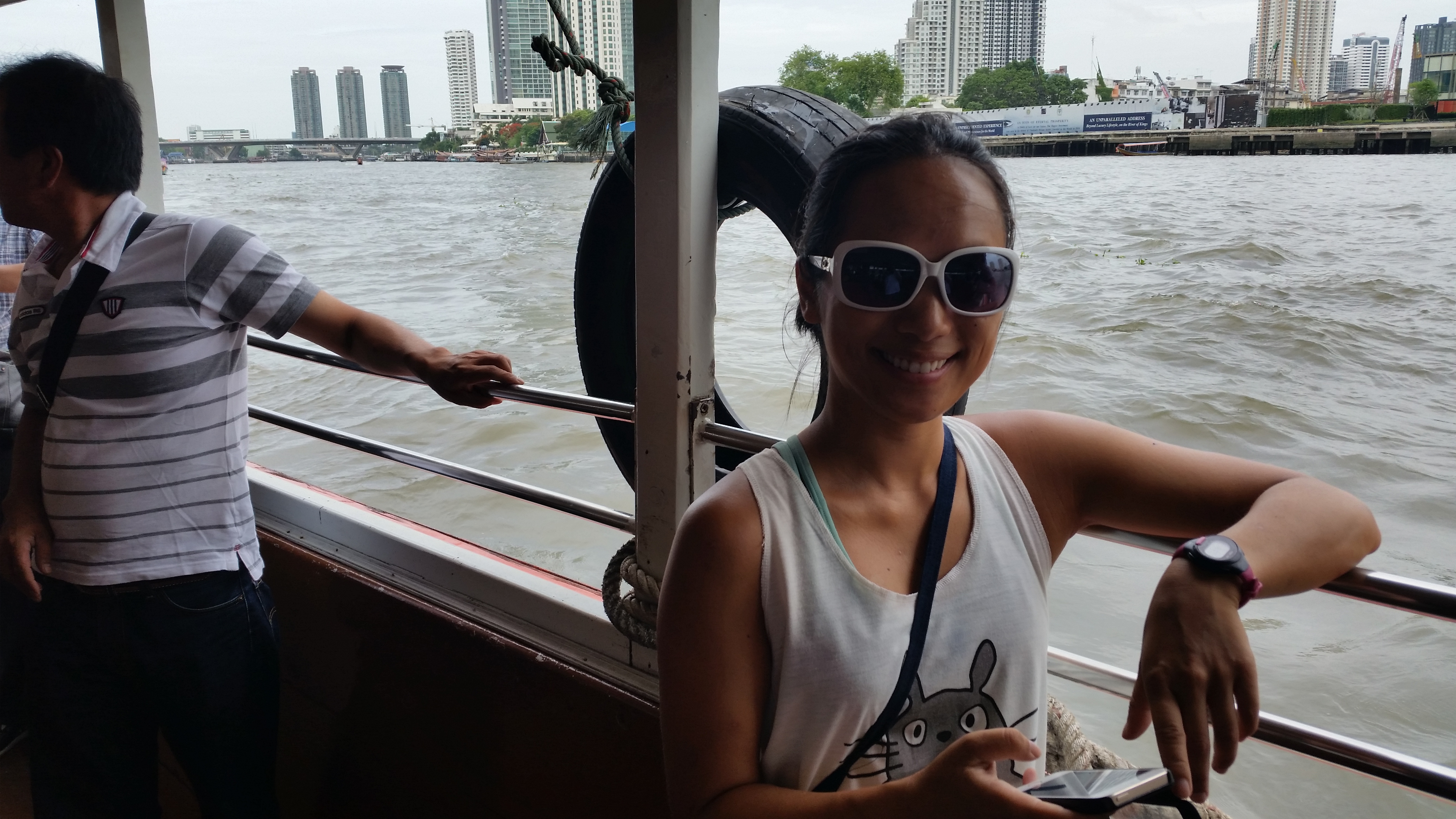
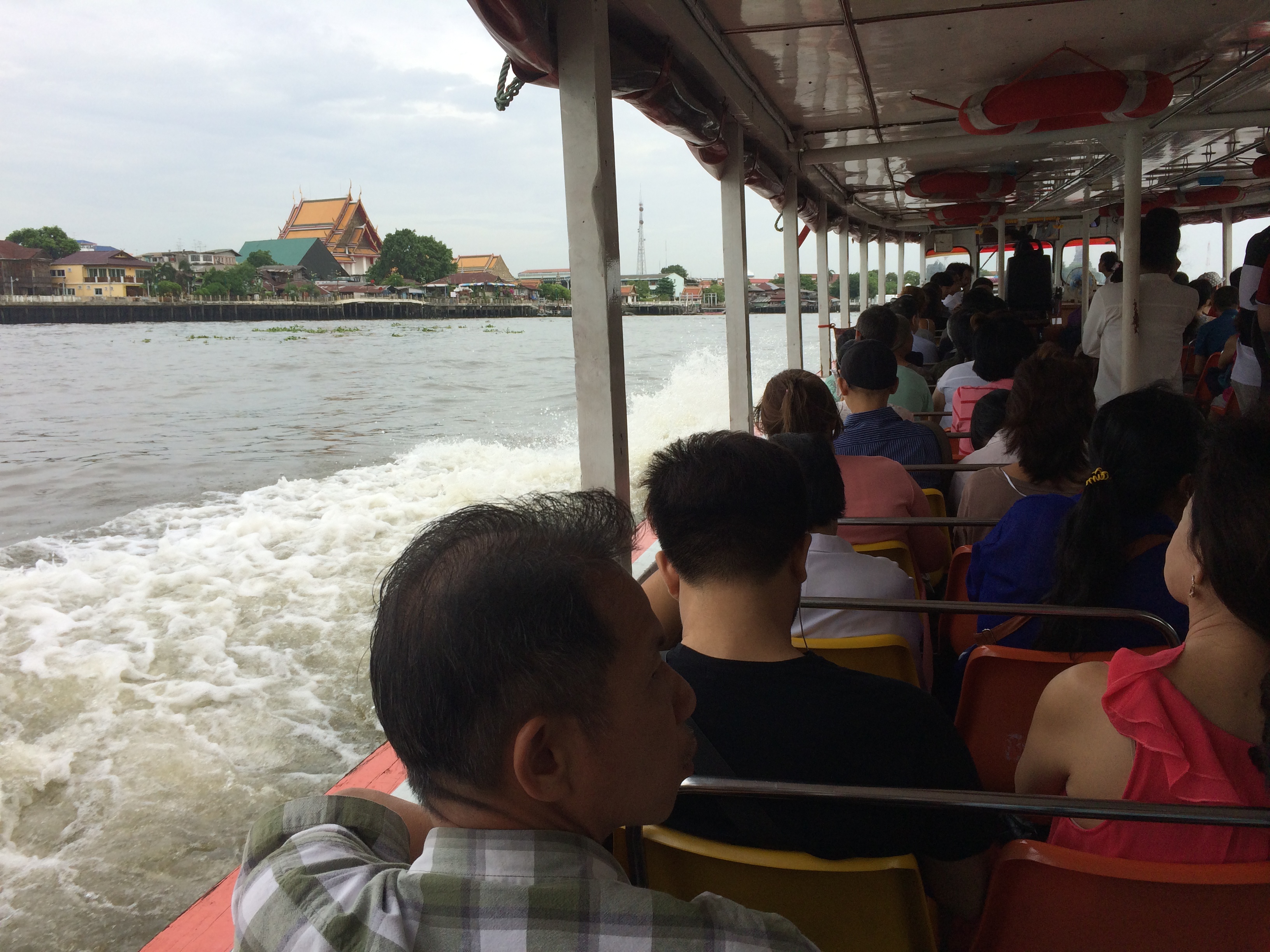
Our first stop was Wang Lang market, a busy market popular with locals. We were pretty shopped-out thanks to Chatachuk, but we enjoyed our brunch and lunch here. 
Just a few minutes north of Wang Lang market is the Siriraj Medical Museum. Photography is forbidden here, so I unfortunately do not have pictures to share. This museum showcases fetuses and unborn dysfunctional babies, cancers and sicknesses in organs and limbs, executed bodies of convicted murderers, preserved organs, skeletons and bones of fatally-wounded citizens, amongst others. There was a whole department on forensic pathology (think bloated bodies and infected limbs), and a department on parasites (think worms and mosquitos). In the parasites department there was an enormous jar preserving the scrotum of a man diagnosed with elephantiasis. This museum was horrifyingly fascinating for someone like me, who knows nothing of biology and human development.
After the brief educational hour at the museum, we got our temple on. South of Wang Lang market is Wat Arun, known for its ornamental spires and lovely views of Bangkok. 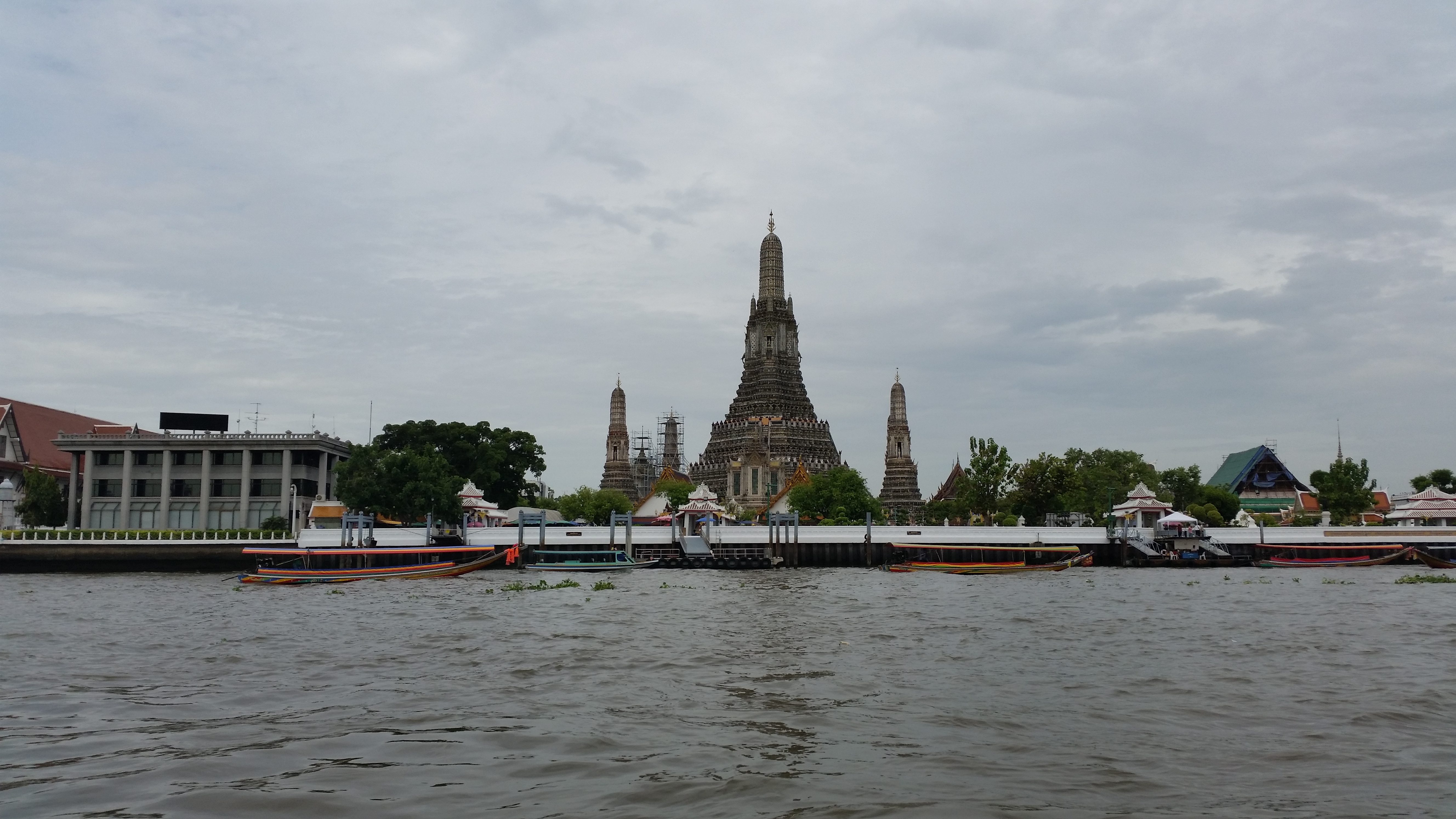
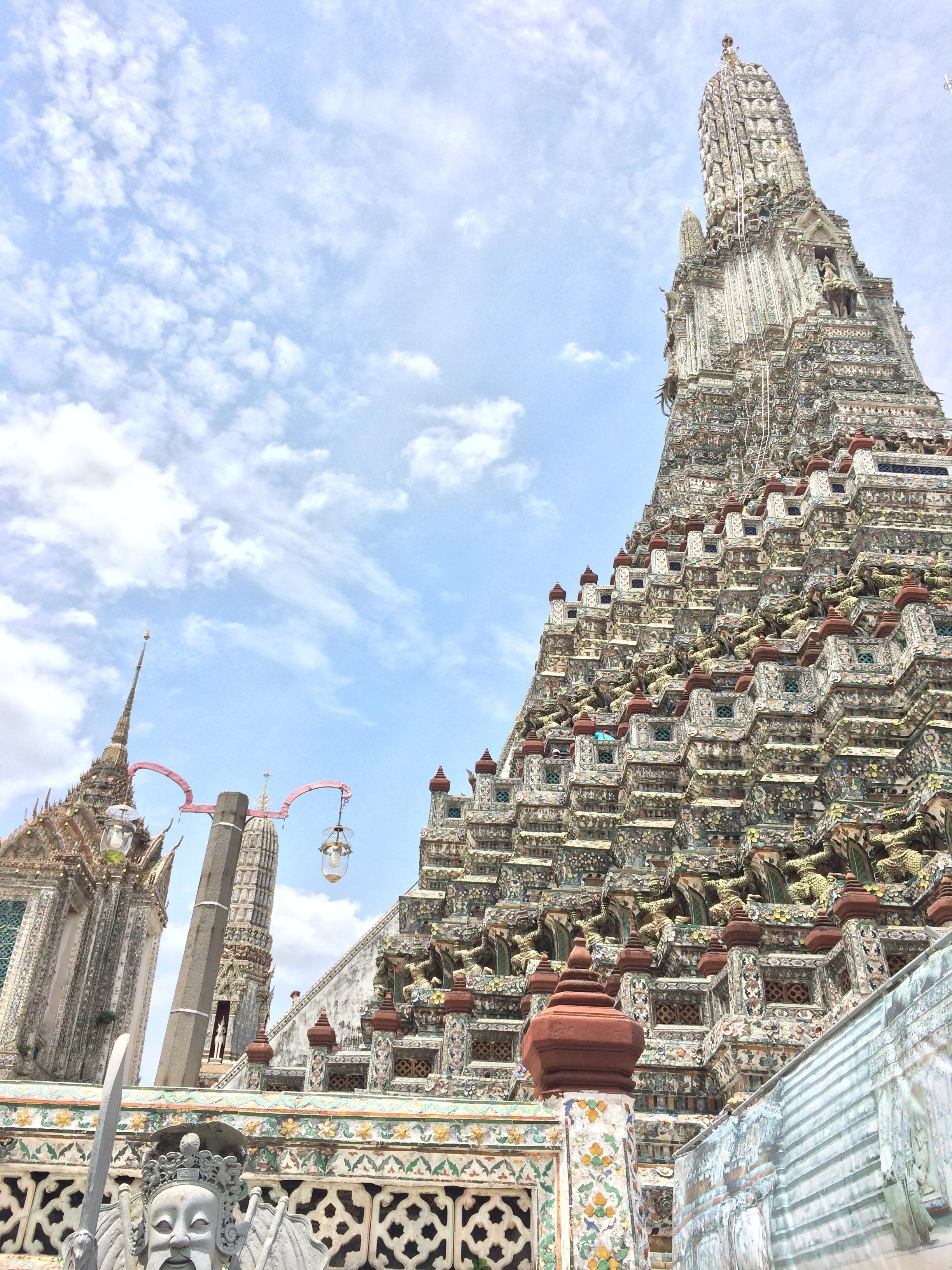
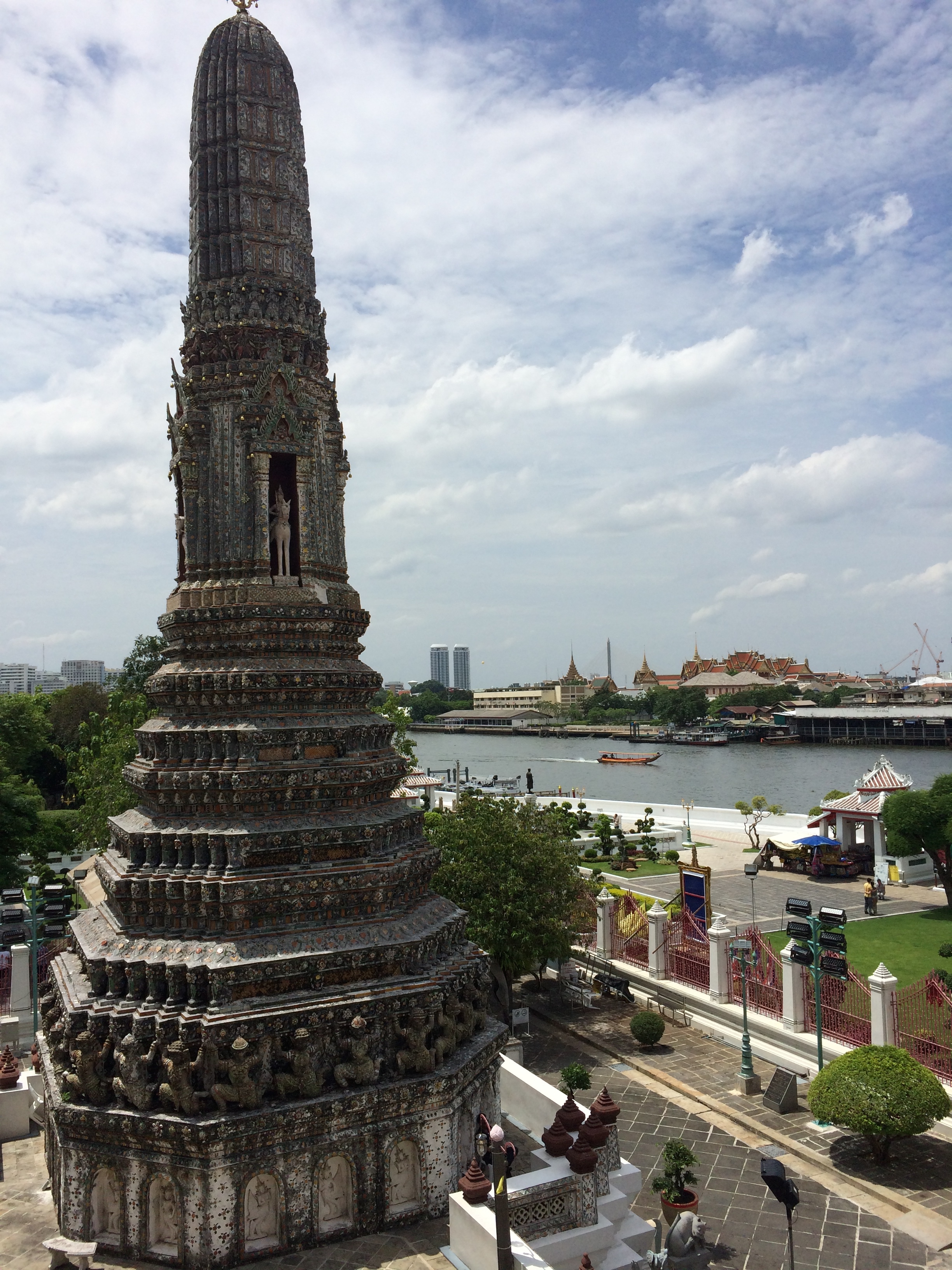
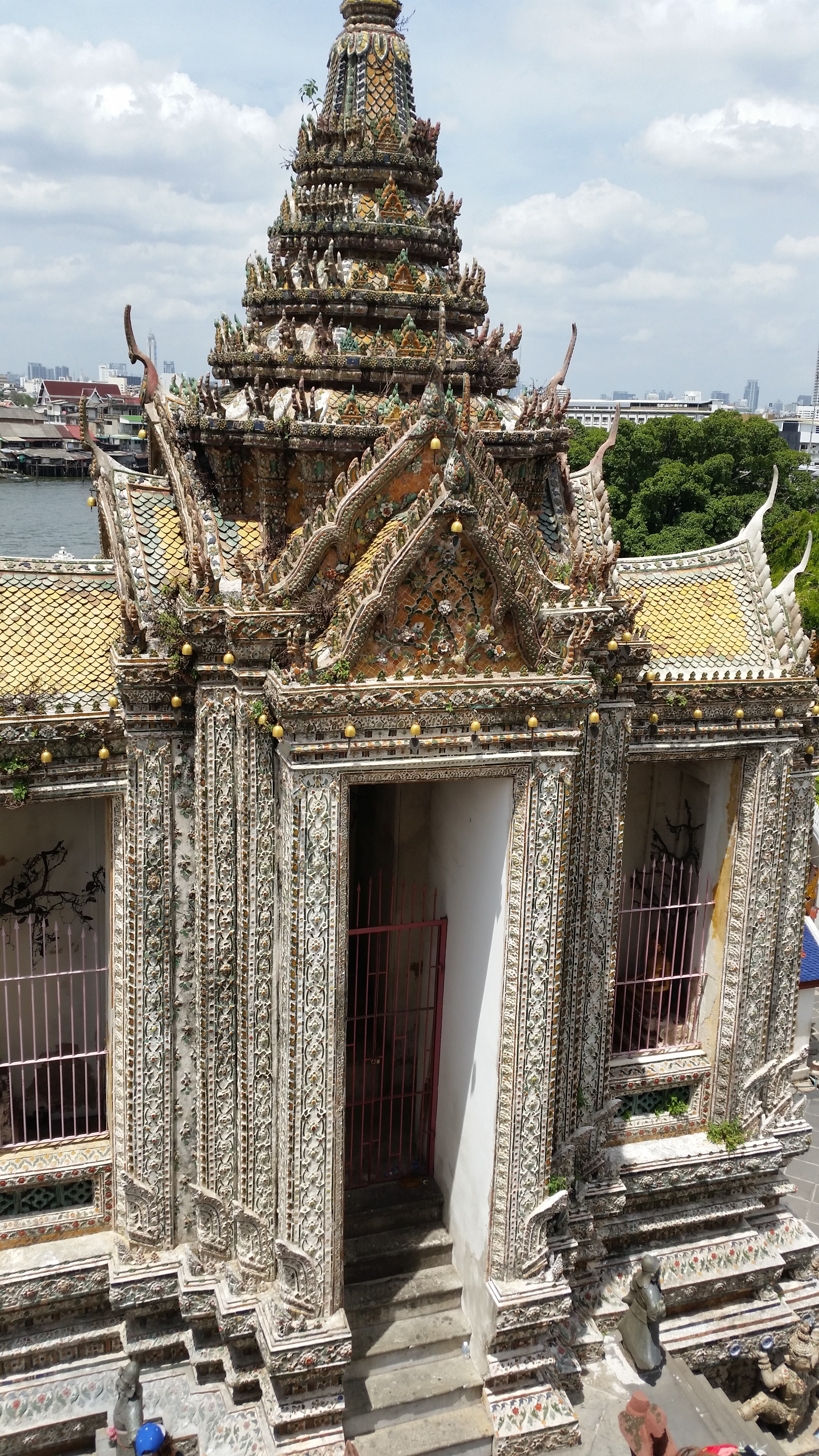
I had to rent a cloak to cover my shoulders. Apparently it’s okay for men (not women) to wear sleeveless shirts at religious sites. 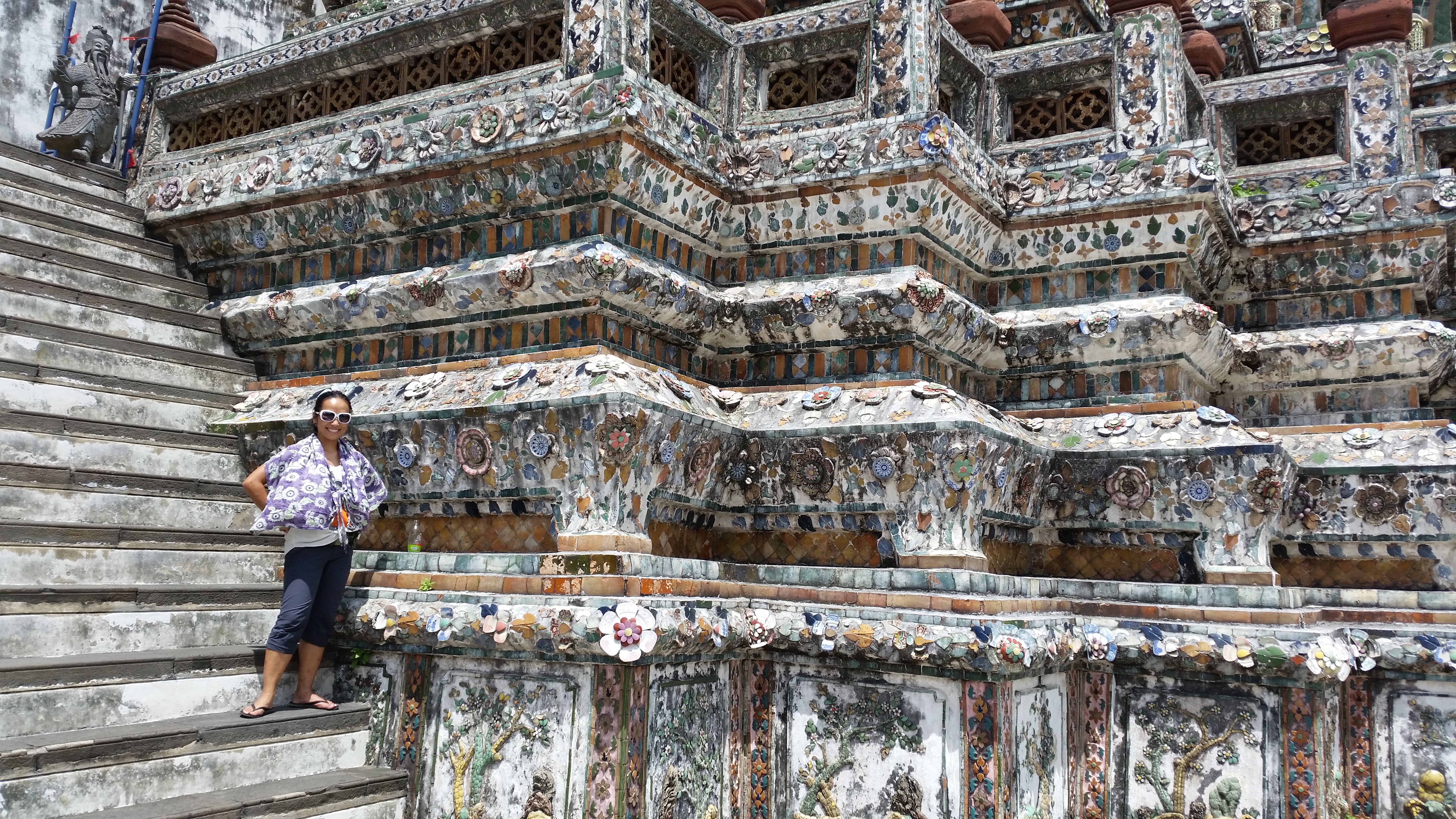
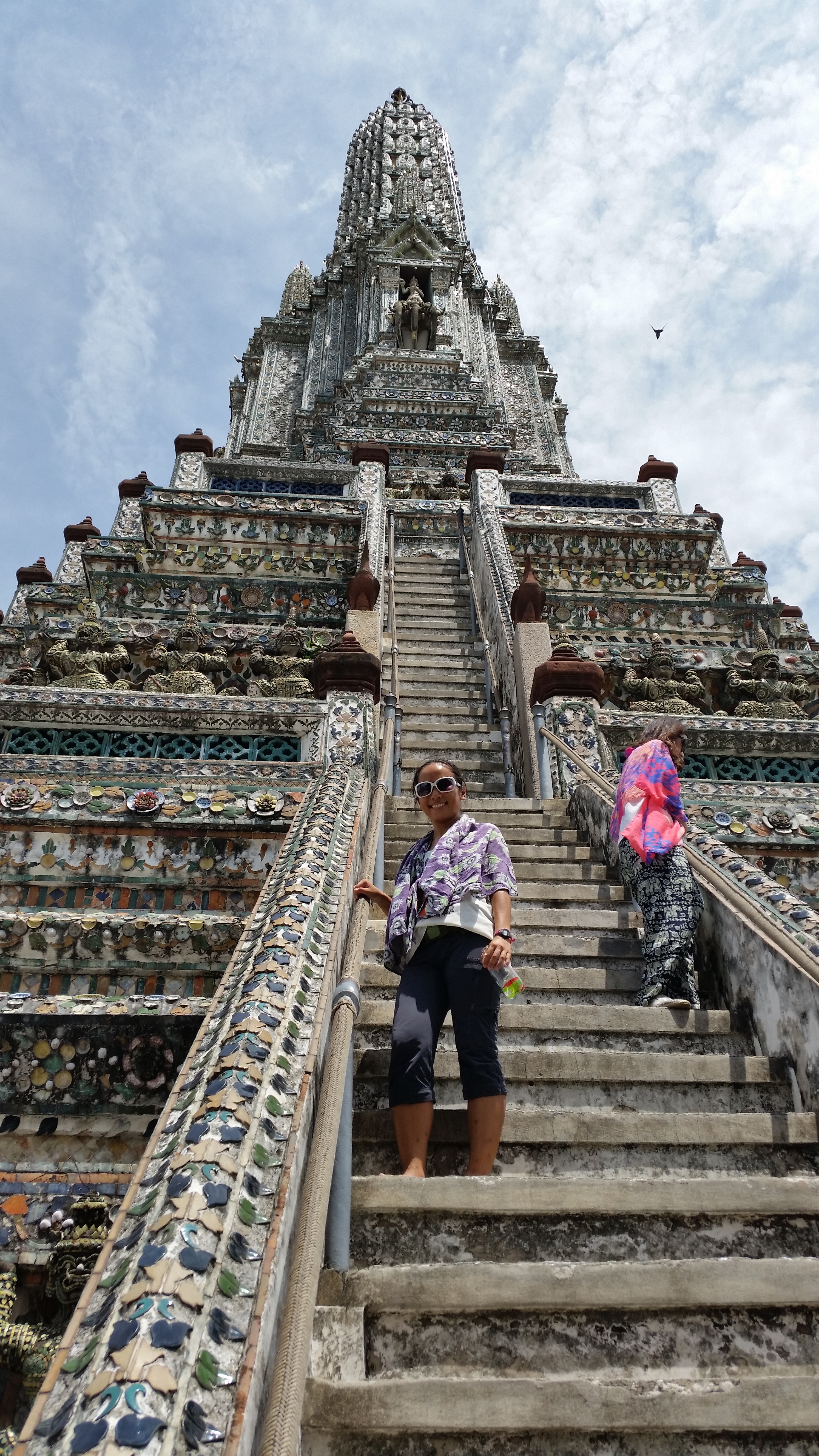
Wat Pho, one of the largest and oldest temples in Bangkok, is literally on the other side of the river from Wat Arun. This temple houses more than a thousand Buddha images and exhibits the largest reclining Buddha in the world. 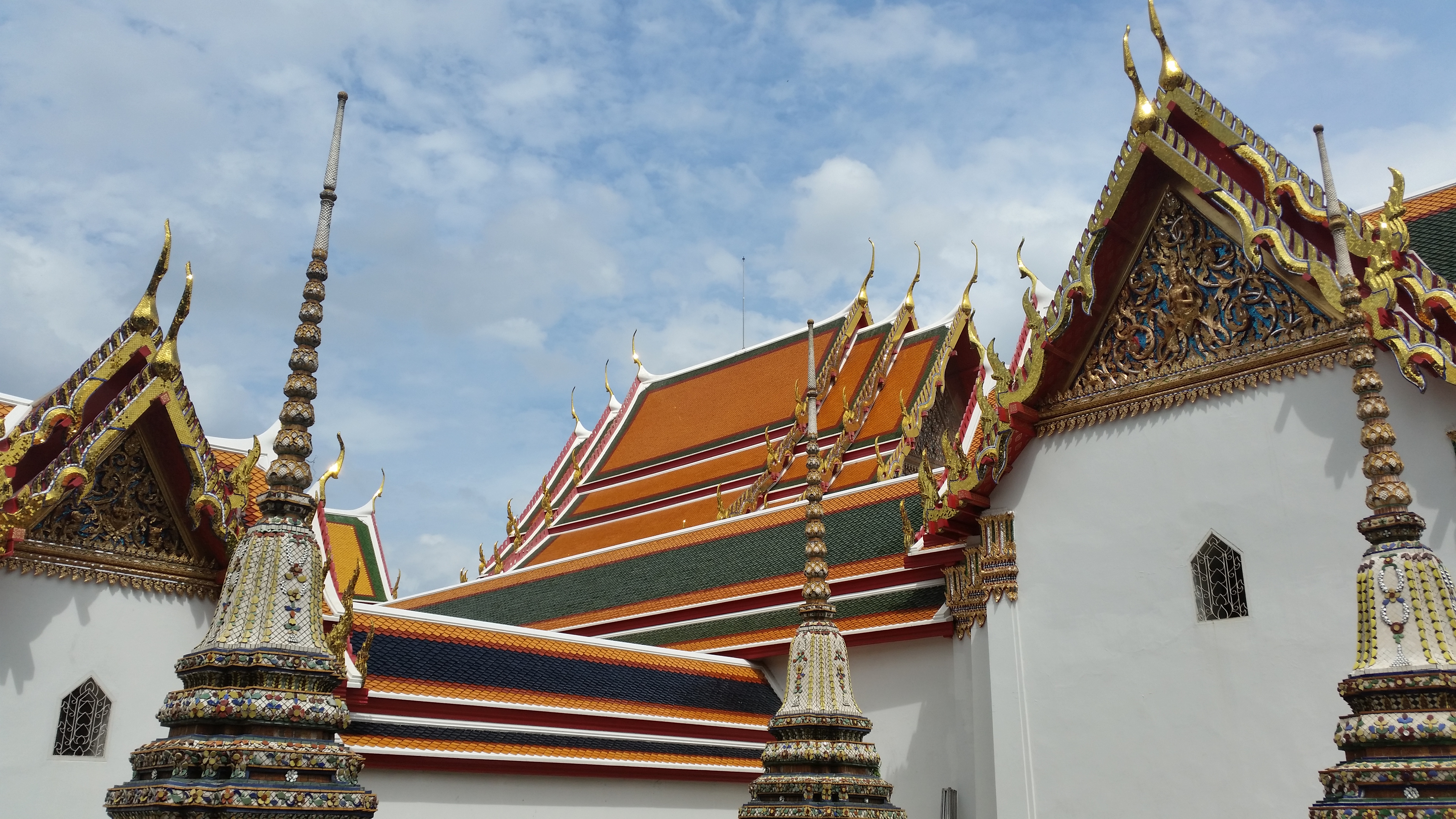
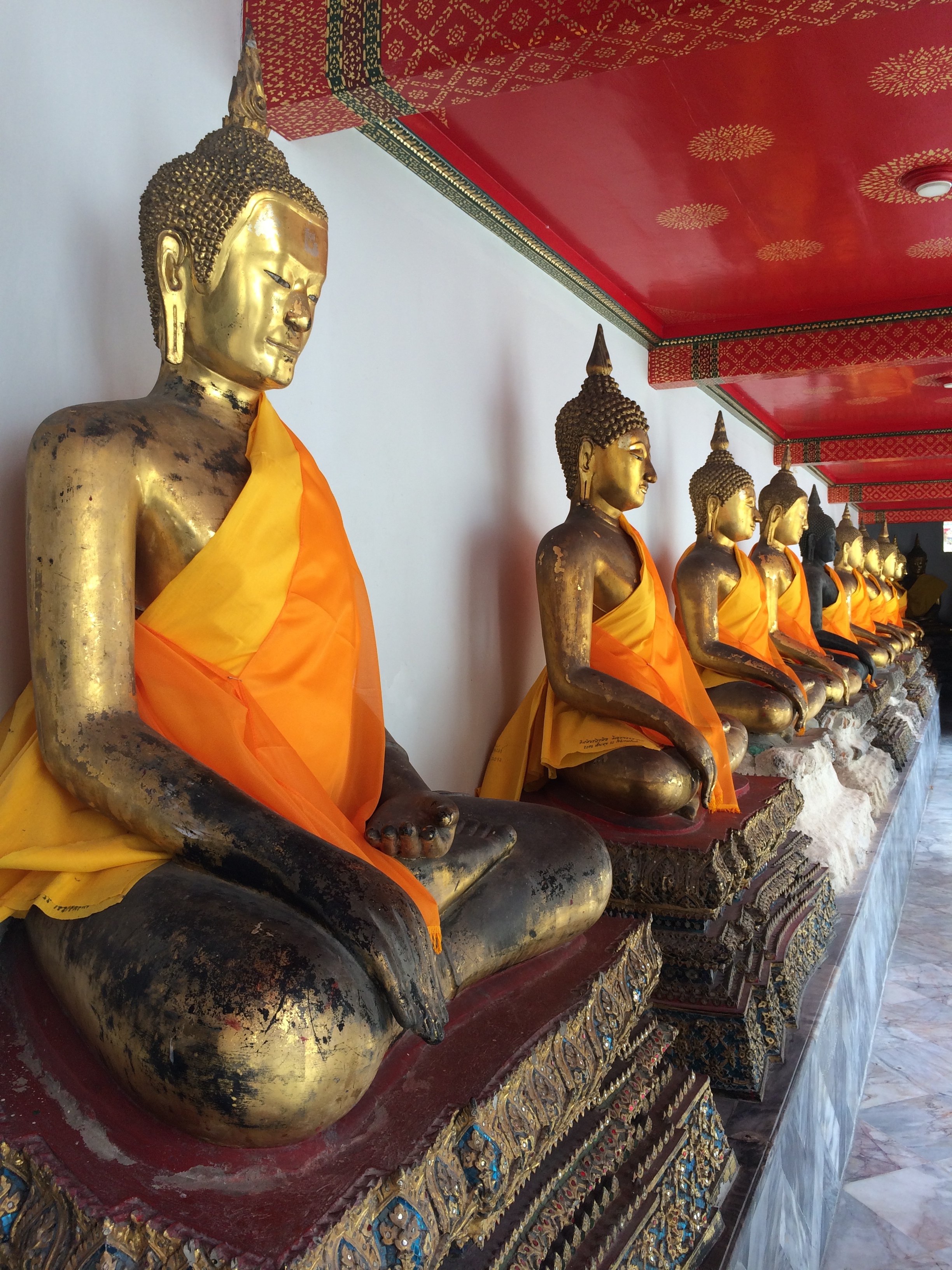
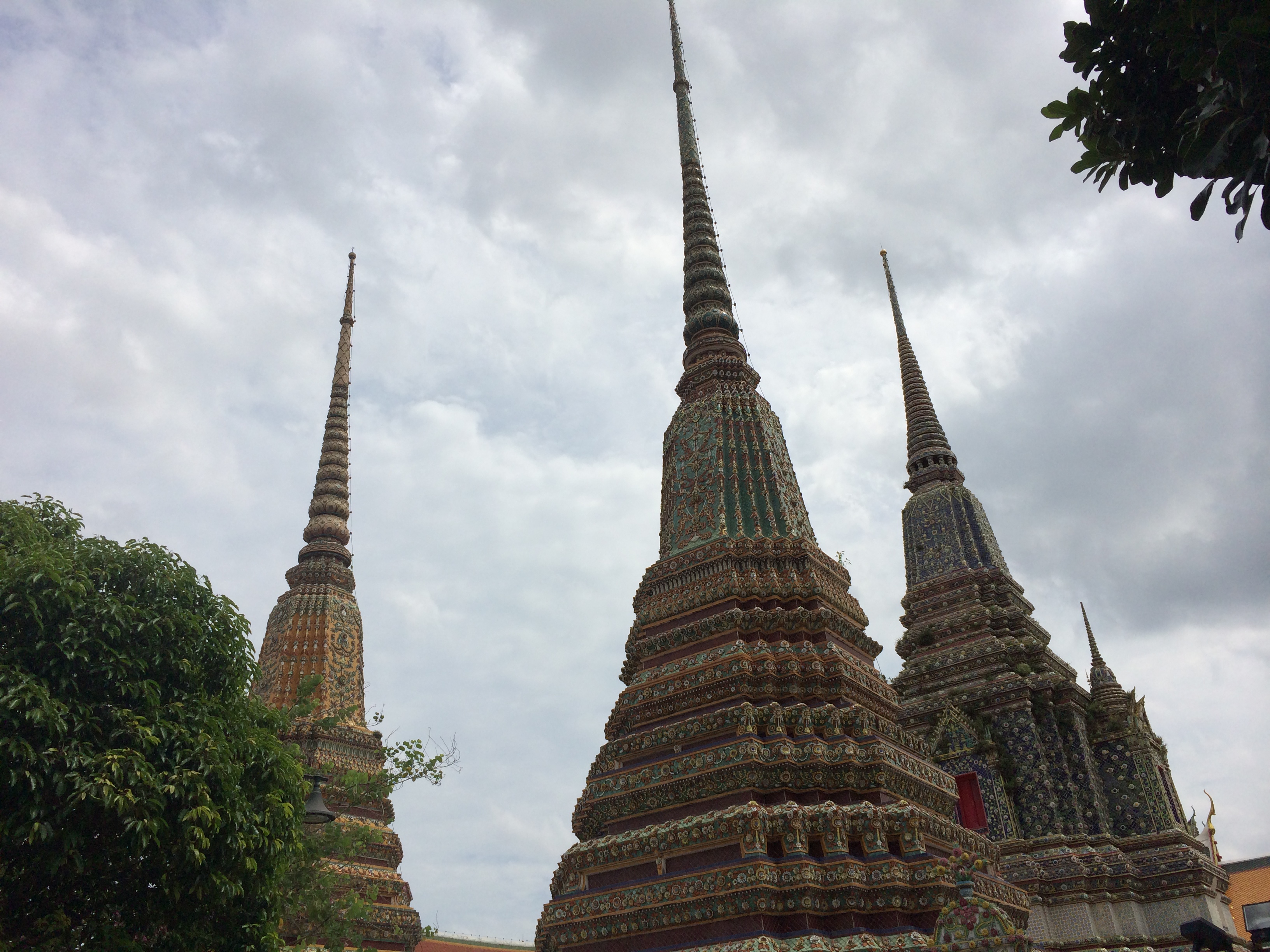
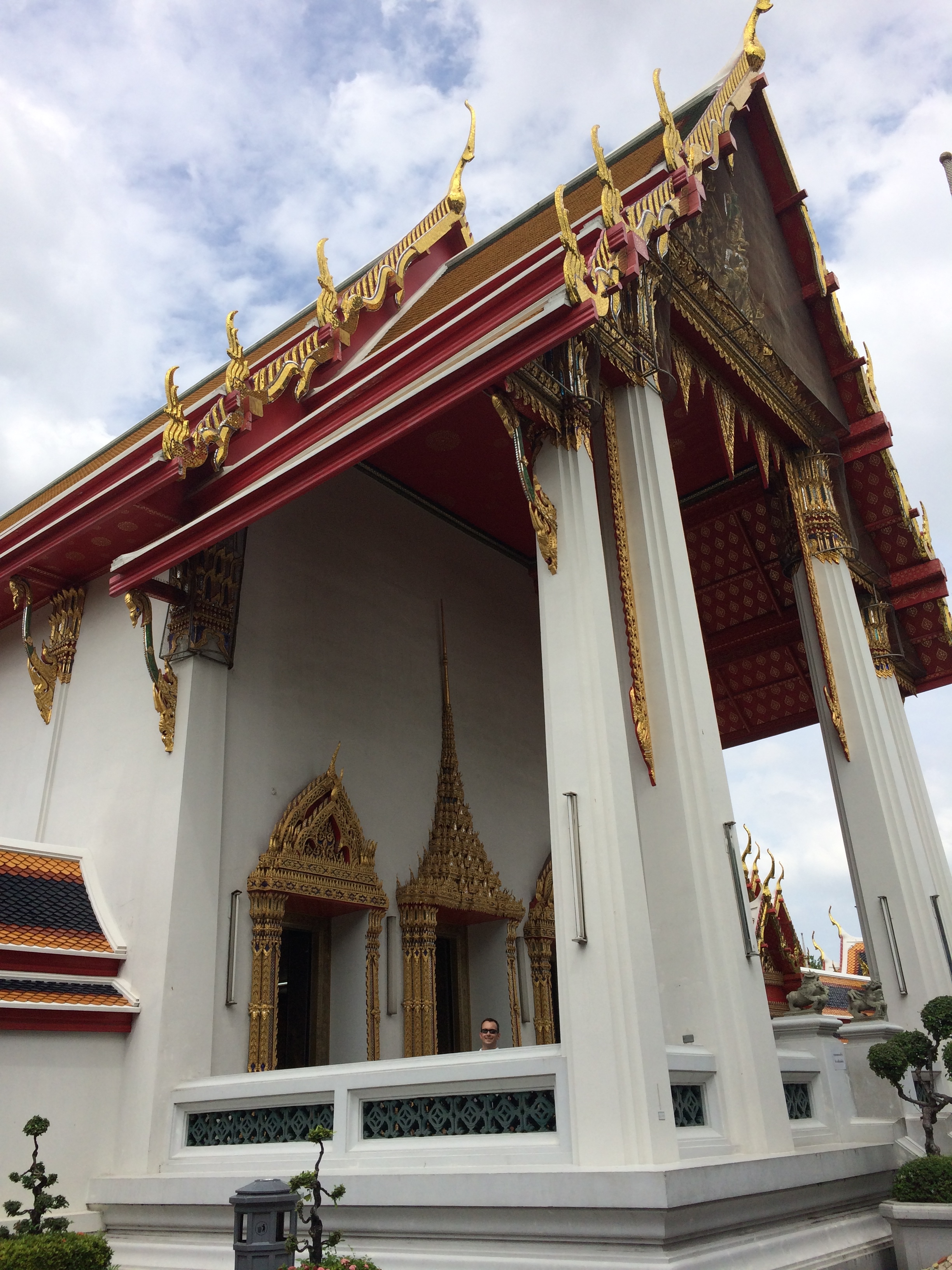
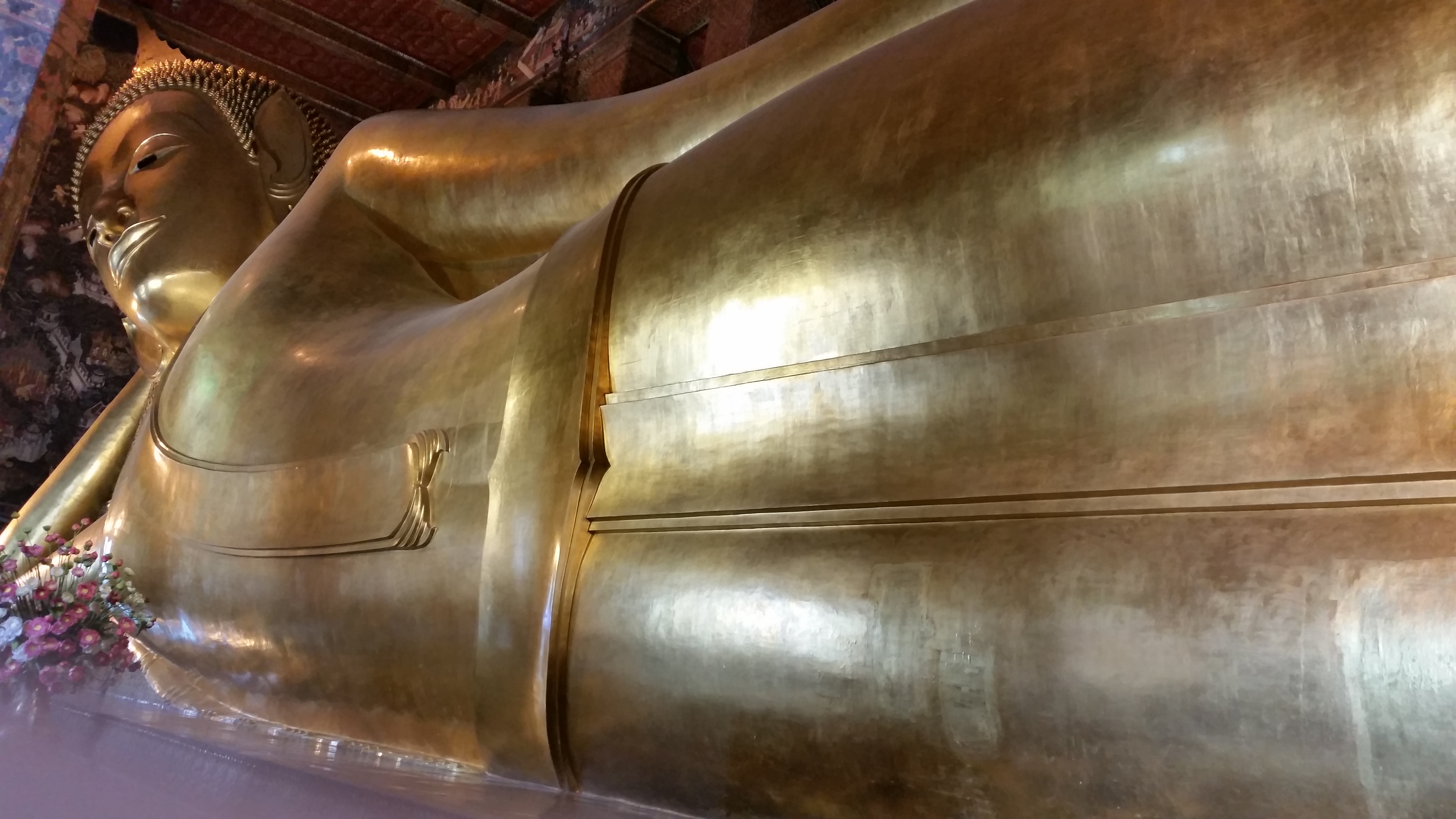
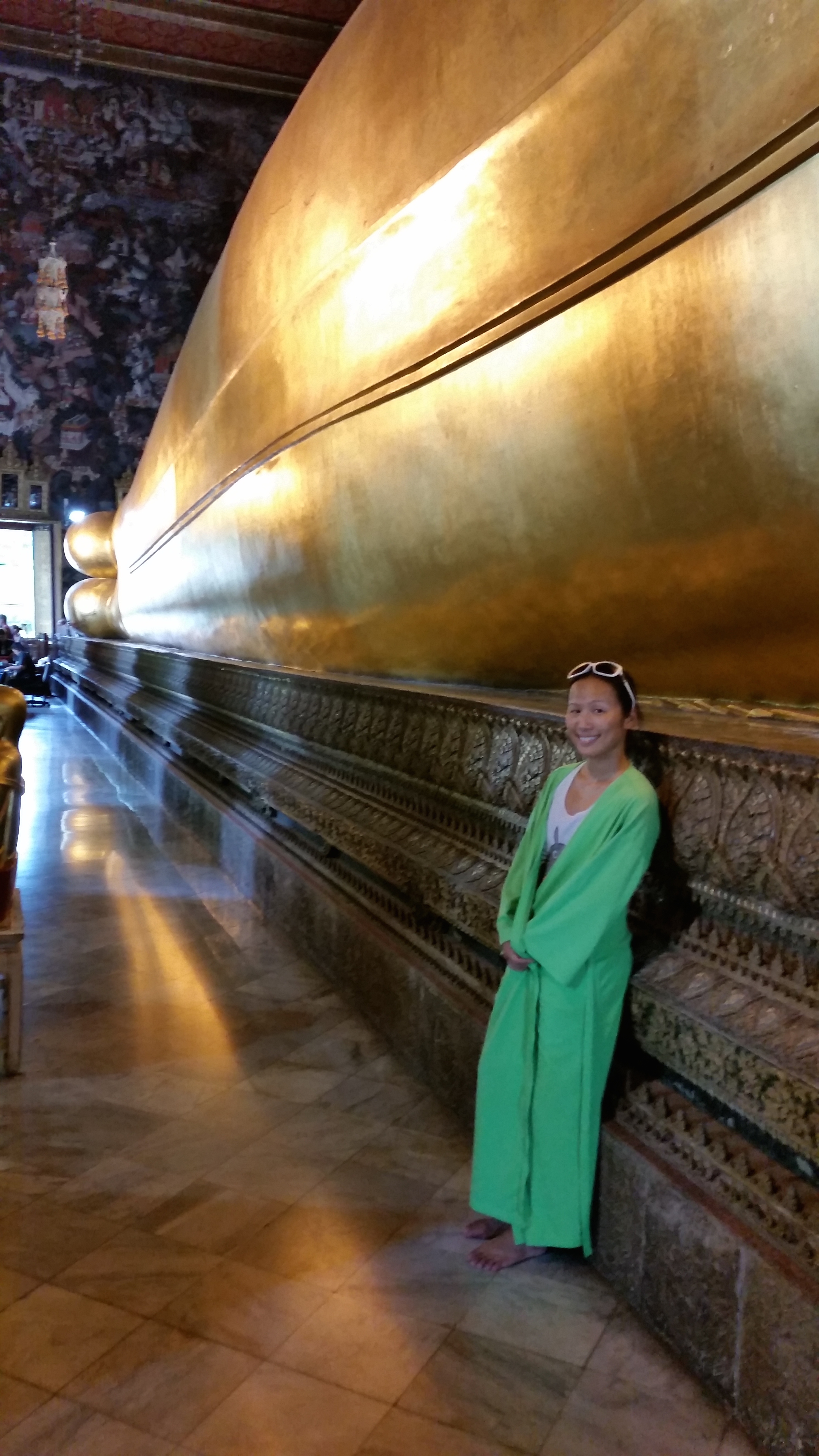
Adjacent to Wat Pho is the notorious Grand Palace. This place is HUGE and is enclosed within tall, white castellated walls that spans a total of 1,910 meters (over a mile). To walk around the palace from the outside takes about 20-30 minutes. As soon as we arrived, we were approached by a deceptively helpful tour guide. He eagerly told us that the Grand Palace was currently closed due to a special Buddhist prayer and would reopen at 2pm (it was 12:30 at the time), handed us a FREE map (oh boy!), told us that the nearby Happy Buddha statue and White Buddha statue was FREE for today only, and his tuk-tuk could take us there for a special rate of only 40 baht! I wanted an official Grand Palace ticket seller to tell me that directly, so we thanked him and told him we would just walk. As we walked, plenty of other tour guides told us the same thing. Random locals also told us that we needed to buy sarongs to cover up our shoulders/legs. We walked around the palace, found the entrance, paid the entrance fee, rented free sarongs, and were in!
There were a number of temples, stupas, statues, pavilions, courtyards, murals depicting religious tales, small museums, and the Grand Palace itself. One can easily spend anywhere from 1-3 hours here.
Skydiving
Thailand is the only Southeast Asian country that offers skydiving, so we had to get our fix while we were in Bangkok. After all, it’s been over 3 months! The nearest drop zone to Bangkok is Thai Sky Adventures, located in the Sri Racha district near Pattaya, about a 2 hour drive south. Extensive research on our public transportation options led us to our decision of hiring a private car and driver. Weather looked a bit iffy, but we lucked out and were able to skydive. Renting gear is expensive at ~2,000 baht (~$60) per jump, so we only made a couple jumps.
The Red Light District
I cannot write about Bangkok without including a post about the sex scene. Any curious backpacker or traveler can’t really go to Bangkok without a quick stop (or long, depending on the type of traveler) to the notorious Red Light District. They say prostitution is illegal, but that’s total bullshit. Hooker bars simply pay the police a bribe to look the other way. There are three known neighborhoods: Soi Cowboy, Nana, and Patpong. Patpong is the shittier of the three, but we went for it since it was only a 20 minute walk from our hotel. Unlike the other neighborhoods, Patpong did not present half-nude shows or soapy massages, but we were approached more than once by locals offering sex shows, which we politely declined.
We’re a tame bunch so we only saw two things in Patpong: a go-go hooker bar and a terrible, fake ping pong show. I write this not to focus on the forsaken lives these young girls endure, but merely the ridiculousness of it all.
We were drawn to this hooker bar because they had draft beer all night for only 50 baht ($1.50). All the girls on the stage were anywhere from 16-21. Few were having fun, but most looked bored and miserable. The madames who worked the floor were old enough to be the girls’ mothers, and they served beer and brought customers the girl of choice from the stage. Seated around the stage were plenty of traveling couples like Chris and I. Scattered here and there were a handful of single Western locals having a good time, smiling, bobbing to the loud music, eyes glued on the girls. Some were old enough to be their dads. You can apparently pay the bar a fee to take a girl out, and from there, you negotiate prices/services with the girl.
In the small streets of Patpong, you literally hear every second, “Ping pong show?” Chris and I thought, “We’re in Bangkok. Why the hell not? Let’s see what the hell this is all about.”
300 baht (~$9) covers admission and a beer, but that doesn’t stop relentless women shoving a bucket in your face, demanding a tip for nothing noteworthy. When we sat down two women in lingerie sat close to Chris and kept saying something we couldn’t comprehend and we shooed them away. Let’s just say we were grateful to be in each other’s company. On the stage were 3 women: 1 tall, attractive woman who looked incredibly bored and miserable, simply stepping from side to side behind a pole; 1 short, chubby, miserable woman who was probably pregnant; and 1 old bored-looking woman in her 50s, who was pouring candle wax across her collarbone as we entered the bar.
During the show, we watched the chubby girl use her vagina to blow a whistle and honk a horn. We also watched the old woman insert a straw in her vagina and use her sucking ability to pick up some glow rings and pile them onto a bottle. And finally, the chubby girl returned to the stage, clasped a bottle opener somewhere in her vagina, and opened a bottle of some beverage (hopefully), spraying us both. We left immediately after that.
Let’s just say our show wasn’t as exciting as I expected. It was fascinatingly awful and something we would never see again, but definitely an experience I will never forget.
We are off to Chiang Mai after Bangkok. With so much to do, see, and eat, I can easily say I would return if I had the opportunity, but I’d skip Patpong next time. I will, however, not miss walking around the streets of Bangkok hand in hand with Chris with everyone’s eyes (both locals and tourists) centered on me, evaluating whether or not I’m a hooker even though I’m dressed in flip flops and athletic wear.

